|

|
|
AGENDA
Ordinary Council meeting
Monday, 5 September 2022
|
|
I hereby give notice that an Ordinary Meeting of
Council will be held on:
|
|
Date:
|
Monday, 5 September 2022
|
|
Time:
|
9.30am
|
|
Location:
|
Bay of Plenty Regional Council Chambers
Regional House
1 Elizabeth Street
Tauranga
|
|
Please note that this
meeting will be livestreamed and the recording will be publicly available on
Tauranga City Council's website: www.tauranga.govt.nz.
|
|
Marty Grenfell
Chief Executive
|
Membership
|
Chairperson
|
Commission Chair Anne Tolley
|
|
Members
|
|
|
Quorum
|
Half
of the members physically present, where the number of members (including
vacancies) is even; and a majority of the members physically
present, where the number of members (including vacancies) is odd.
|
|
Meeting frequency
|
As
required
|
Role
·
To ensure the effective and
efficient governance of the City
·
To enable leadership of the City
including advocacy and facilitation on behalf of the community.
Scope
·
Oversee the work of all
committees and subcommittees.
·
Exercise all non-delegable and
non-delegated functions and powers of the Council.
·
The powers Council is legally prohibited from delegating include:
o
Power to make a rate.
o
Power to make a bylaw.
o
Power to borrow money, or purchase or dispose of assets, other
than in accordance with the long-term plan.
o
Power to adopt a long-term plan, annual plan, or annual report
o
Power to appoint a chief executive.
o
Power to adopt policies required to be adopted and consulted on
under the Local Government Act 2002 in association with the long-term plan or
developed for the purpose of the local governance statement.
o
All final decisions required to be made by resolution of the
territorial authority/Council pursuant to relevant legislation (for example:
the approval of the City Plan or City Plan changes as per section 34A Resource
Management Act 1991).
·
Council has chosen not to delegate the following:
o
Power to compulsorily acquire land under the Public Works Act
1981.
·
Make those decisions which are required by legislation to be made
by resolution of the local authority.
·
Authorise all expenditure not delegated to officers, Committees
or other subordinate decision-making bodies of Council.
·
Make appointments of members to the CCO Boards of Directors/Trustees
and representatives of Council to external organisations.
·
Consider any matters referred from any of the Standing or Special
Committees, Joint Committees, Chief Executive or General Managers.
Procedural matters
·
Delegation of Council powers to Council’s committees and
other subordinate decision-making bodies.
·
Adoption of Standing Orders.
·
Receipt of Joint Committee minutes.
·
Approval of Special Orders.
·
Employment of Chief Executive.
·
Other Delegations of Council’s powers, duties and
responsibilities.
Regulatory matters
Administration, monitoring and
enforcement of all regulatory matters that have not otherwise been delegated or
that are referred to Council for determination (by a committee, subordinate
decision-making body, Chief Executive or relevant General Manager).
7 Confirmation
of minutes
7.1 Minutes
of the Council meeting held on 15 August 2022
File
Number: A13886133
Author: Robyn
Garrett, Team Leader: Governance Services
Authoriser: Robyn
Garrett, Team Leader: Governance Services
|
Recommendations
That the Minutes of the Council meeting held on 15 August
2022 be confirmed as a true and correct record.
|
Attachments
1. Minutes
of the Council meeting held on 15 August 2022
|
 Ordinary Council meeting Minutes Ordinary Council meeting Minutes
|
15 August 2022
|
|

|
|
MINUTES
Ordinary Council meeting
Monday, 15 August 2022
|
Order of Business
1 Opening karakia and acknowledgement 3
2 Apologies. 3
3 Public forum.. 3
4 Acceptance of late items. 4
4.1 Late Item - Infrastructure Funding and
Financing Act Proposal for the Transport System Plan - Negotiation Update and
Decision on Proceeding. 4
5 Confidential business to be transferred into the open. 4
6 Change to the order of business. 4
7 Confirmation of minutes. 4
7.1 Minutes of the Council meeting held on 25 July 2022. 4
8 Declaration of conflicts of interest 4
9 Deputations, presentations, petitions. 4
9.1 Toxic Agrichemicals Advisory Forum (TAAF) 4
10 Recommendations from other committees. 5
Nil
11 Business. 5
11.1 Use of Agrichemicals on Grass Sports Turf Surfaces - Amendment to
schedule one to the Use of Toxic Agrichemicals for Vegetation Management Policy. 5
11.2 Executive Report 6
11.3 City Centre Action and Investment Plan. 8
11.4 Withdrawal of Proposed Plan Change 26 - Housing Choice and part of
Plan Change 27 - Flooding from Intense Rainfall 10
11.5 Adoption of Plan Change 33 - Enabling Housing Supply for
Notification. 13
11.6 Temporary Road Closures - Annual Events 2022 - 2023. 14
12 Discussion of late items. 15
13 Public excluded session. 15
Resolutions transferred into the open section
of the meeting after discussion. 17
MINUTES
OF Tauranga City Council
Ordinary Council meeting
HELD AT THE Bay of Plenty
Regional Council Chambers, Regional House, 1 Elizabeth Street, Tauranga
ON Monday, 15 August 2022 AT
9.30am
PRESENT: Commission Chair Anne Tolley, Commissioner Shadrach Rolleston,
Commissioner Stephen Selwood, Commissioner Bill Wasley
IN ATTENDANCE: Marty
Grenfell (Chief Executive), Paul Davidson (General Manager: Chief Financial
Officer), Barbara Dempsey (General Manager: Community Services), Nic Johansson
(General Manager: Infrastructure), Christine Jones (General Manager: Strategy,
Growth & Governance), Alastair McNeill (General Manager: Corporate
Services), Steve Pearce (Acting General Manager: Regulatory and Compliance),
Gareth Wallis (General Manager: City Development & Partnerships), Andrew
Mead (Manager: City Planning and Growth), Carl Lucca (Programme Director: Urban
Communities), Robyn Scrimshaw (Urban Planner: Urban Communities), Gregory
Bassam (Principal Strategic Transport Planner), Janine Speedy (Team Leader:
City Planning), Libby Dodds (Team Leader: Community Relations), Coral Hair
(Manager: Democracy Services), Robyn Garrett (Team Leader: Committee Support),
Sarah Drummond (Committee Advisor), Anahera Dinsdale (Committee Advisor), Janie
Storey (Committee Advisor)
1 Opening
karakia and acknowledgement
Commissioner
Shad Rolleston gave the karakia and reflected on recent passing of Mr Peri
Kohu.
Chairperson
Tolley noted that Peri Kohu spoke at the last Council meeting where he made an
historic apology and had appeared in front of the Council at a number of
occasions. The extent of his relationship with the Council was reflected
at his tangi, which was attended by large group of representatives from
TCC. This meant a lot to Mr Kohu’s family - the relationship was
one of mutual respect and understanding and he had given a great deal of
assistance to Council right up to the day before he passed.
2 Apologies
Nil
3 Public
forum
Nil
4 Acceptance
of late items
|
4.1 Late
Item - Infrastructure Funding and Financing Act Proposal for the Transport
System Plan - Negotiation Update and Decision on Proceeding
|
|
Resolution CO15/22/1
Moved: Commissioner Bill
Wasley
Seconded: Commissioner
Shadrach Rolleston
That the Council:
Accepts the following late item for
consideration at the meeting:
• Infrastructure
Funding and Financing Act Proposal for the Transport System Plan -
Negotiation Update and Decision on Proceeding
The above item
was not included in the original agenda because it was not available at the
time the agenda was issued, and discussion cannot be delayed until the next
scheduled meeting of the Committee because a decision is required in regard
to this item.
Carried
|
5 Confidential
business to be transferred into the open
Nil
6 Change to
the order of business
Nil
7 Confirmation
of minutes
8 Declaration
of conflicts of interest
Commissioner
Wasley declared that he lived in an area affected by Item 11.5 Plan Change 33.
It was noted it was a general interest and not a financial conflict.
9 Deputations,
presentations, petitions
|
9.1 Toxic
Agrichemicals Advisory Forum (TAAF)
|
|
External -
Bill Myhill, Ian McLean, Peter Mora
A presentation was provided noting the
following with regards to the use of chemicals oxadiazon and pendimethalin:
·
TAAF supported human health and these
chemicals were a threat, with considerable research being done to support
this view. The group did not want these chemicals in the environment.
·
Provided two recommendations - one was not to
use the chemicals at all, and the other was to note that, while they
did not give their support, they wanted to be provided with an opportunity to
comment on how they were used if used.
·
Oxadiazon - had been trialled, but the results
poorly reported. It remained in the soil, its effectiveness was short
term, results were inconsistent and it did not attach to established plants
at the germination and early growth stage
·
Toxicity - there were claims the sprays were
not carcinogenic, but reports indicated that they were when tested on
animals. Sometimes they were safe when used with protective
clothing. Chronic exposure was hard to document or to see if there were
side effects e.g. a team of players in field, one of whom was pregnant and
loses the baby - this was a possibility with use of oxadiazon but hard to
establish causality.
·
Pendimethalin - while this was better it was
still not good to use as there were issues with its application. The
primary purpose was to allow greater use of fields, but as the field had to
be closed for four months it took out a whole summer of sports for that
field.
·
There was nowhere in the statement limiting
the use of the chemical when replacing grass or how often it was likely to be
used, and no comment for when an area was being re-grassed.
·
The field could be upgraded without the use of
chemicals.
·
Primary recommendation was that neither
chemical be added to Schedule 1.
·
Secondary recommendation was to add to
Schedule 1 with nominated restrictions including being limited to fields
where a high level of service was required, e.g. elite sports and to identify
a minimum time interval between applications in any one location.
·
If the secondary recommendation was applied,
then discussions should be held to follow up what the nominated restrictions
were. High quality fields for elite sports do not normally have
children playing on them e.g. cricket at Blake Park would fulfil the
requirement.
·
TAAF’s view was that the Environmental
Protection Authority (EPA) had low standards. While the chemicals were
approved for use in NZ and America, there were other countries that
considered them far too toxic. TAAF considered that the EPA decisions were
based on research carried out by the agencies selling the chemicals and the
American influence.
The Chair thanked the representatives for
their attendance and advice, noting that it was important to maintain advice
with use of chemicals in public places in an open and transparent manner.
The group left the meeting at 9.45 am
|
10 Recommendations
from other committees
Nil
11 Business
|
11.1 Use of Agrichemicals on
Grass Sports Turf Surfaces - Amendment to schedule one to the Use of Toxic
Agrichemicals for Vegetation Management Policy
|
|
Staff Barbara
Dempsey, General Manager Community Services
Ross Hudson, Team
Leader: Planning
Emma Joyce, Open Space and Community
Facilities Planner
Peter Mouldey, Senior Project Manager
Key points
·
The Council would not do anything that
compromised public health and relied on the EPA assessments to make
playgrounds and turf areas safe and available to players.
·
Both chemicals were EPA-approved and used for
sports fields with best practice guidelines.
·
The applications were an integral part of the
maintenance to provide better facilities that allowed more training hours and
more people playing on the fields.
In response
to questions
·
When the chemicals were applied it was done as
part of the upgrade of the field, so it was out of use for four months to be
able to grow new turf. The areas were fenced off and the chemical was
used to stop the growth of weeds.
·
If a second application was used it would
mostly be due to climate conditions and the field would be closed for a
longer period.
·
Oxadiazon was more toxic and would be used
when the area was fenced off. Pendimethalin was used for the
maintenance of a field.
·
Alternative options had been investigated to
get extra use of the grounds, but any other product would also kill off the
grass. Pendimethalin increased the germination of the seed. No other
councils were able to provide an alternative practical solution.
·
The fields were redeveloped every 10 years or
so. The granulated product was at 2% with the rest being fertiliser and
well-watered into the ground.
·
In response to a query regarding the ongoing
monitoring and reporting on the use of chemicals and compliance with signage,
it was noted that contractors were required to enter all agricultural
chemicals used and information on the chemicals used was available to the
public.
·
It was agreed to include monitoring of these
reserves and to provide feedback to the Council and TAAF in 12 months on the
effectiveness, compliance with the processes and signage and any incidences
of problems.
·
Pendimethalin would be used on the premier
sports fields at Blake Park and the Tauranga Domain.
|
|
Resolution CO15/22/3
Moved: Commissioner Bill
Wasley
Seconded: Commissioner
Stephen Selwood
That
the Council:
(a)
Approves the addition of oxadiazon (Oxa-Pro)
and pendimethalin (Pendi-Pro) to Schedule One: List of Approved Products
appended to the Use of Toxic Agrichemicals for Vegetation Management Policy,
noting that their use is restricted to grass sports turf.
(b)
Agrees that both oxadiazon and pendimethalin
can be used on the three identified active reserves of Links Ave,
Waipuna Park and Morland Fox Park, and that pendimethalin can also be used on
Blake Park 1 and Tauranga Domain, for one year; and requests that a review be
provided to Council in 12 months on effectiveness, compliance with process
and signage, and any incidences of problems.
Carried
|
|
11.2 Executive
Report
|
|
Staff Nic
Johansson, General Manager: Infrastructure Services
Barbara Dempsey, General Manager:
Community Services
Paul Davidson, Chief Financial Officer
Christine Jones, General Manager:
Strategy & Growth
Alastair McNeil, General Manager:
Corporate Services
Steve Pearce, Acting General Manager:
Regulatory and Compliance
Gareth Wallis, General Manager: Central
City Development
Key points
·
Acknowledgement of the success of the contact
centre attaining 3rd in Customer Service benchmarking in a mystery
shopper type survey; the Tauranga/Western Bay Global ambassadors reaching the
semi-final of the Impact awards; of Mangatawa Marae for offering to be a
dedicated community centre in an emergency and to all the volunteer planters
who supported planting days throughout the city.
·
There had been a recent increase in flights
from the Tauranga airport. It was planned to bring forward expenditure
and planning of the relocation of the fire station, power and lighting centre
to allow for the carpark extension.
·
The marine precinct was also fuller with an
uplift in forward bookings. One derelict vessel had been taken out of
the water and placed on the hard stand and staff were working with owners of
the other vessels on payment options to clear debt. BOPRC was removing
the fluids from the vessels.
·
The Otūmoetai spatial plan was now at the
stage where tangata whenua were involved. The plan would be provided to
the Strategy, Finance and Risk Committee in October.
·
A submission was being drafted for the Local
Government Electoral Legislation bill on Māori representation and
changes to the representation arrangements. The information would be provided
to the Tangata Whenua Committee so they were aware of the proposals being submitted.
·
The District Licencing Committee was appointed
five years ago, and a few changes had been made due to the change in
legislation allowing for greater community involvement. Several trained
Commissioners wished to stay on. The Chairpersons would be experts in
licencing and members would be experts within the community. Staff
would look at the contractual arrangement for the recently appointed tangata
whenua position to see whether it continued or was included in the
reappointment process.
·
Governance to Governance meetings had been
held with two Council Controlled Organisations (CCOs) resulting in productive
conversations and good relationships being developed with them. The
demolition of 90 Devonport Road was well underway and the consultation for
the proposal to set up a CCO in partnership with tangata whenua would be
undertaken at the end of August.
·
The resource consent for the Marine Parade
walkway was lodged with TCC last week for the work to be contracted out for
tender. The barbecues and seating would be installed in
October/November.
In response
to questions
·
Improvements to bus stops and shelters
included considering other opportunities network-wide rather than just
upgrading those that were there.
·
The Otūmoetai spatial plan included the
look and feel of the peninsula, what the future transport plan would take
into account with the proposed future intensification of the area and would
connect to Council’s Long-term Plan (LTP).
·
Te Ara o Wairakei Reserve planting had
received minimal vandalism with one tree being removed and replaced. It
was noted that a group of residents had written to the Ombudsman expressing
their concern that the consultation process was not what the community had
expected.
·
In response to a query regarding any plans to
review the success of the use of the Totara Street cycleway route during the
week, it was noted that early counts were being taken and would be done again
at 6-12 months. A post project review was a requirement for the 51%
contribution from Waka Kotahi to ensure the anticipated benefits were being
achieved.
·
A number of options for decision making with
regards to the new cycleways would be put to the Council in September with
the decisions being sought in October. Bike security would be included
in the option processes.
·
The Nature and Diversity action plan would be
delivered in time for the next LTP along with a number of other plans.
A suite of plans updated by the Commissioners would be in place for the new
Council when they came into force.
·
Plan Change 33 was having some bearing and
uncertainty on the consents team with learning the new rules.
·
Staff were meeting their obligations with food
licences. There was now a full team, and the small backlog was expected to be
cleared this year.
·
Staff had noted the opportunities for greater
public awareness when new liquor licences were applied for or renewals
sought.
·
Commissioners wished to understand how city
housing aspirations were being met. Information was sought on how many
completed houses were being lived in and how many were being delivered
relative to what was needed in the area.
·
It was noted that there was work being done on
the sediment and erosion control on building sites. The Council had a
double problem approach with offenders, by taking enforcement action on the
companies with poor compliance and increasing visits to these sites.
The need to lift the overall market was recognised and for developers to
understand the impact if they did not comply.
·
It was requested that the story be told of the
stained-glass windows that were currently on display at the library.
Discussion
points raised
·
An iwi visit and blessing was to be undertaken
at the Waiāri water supply before it was opened.
·
There was a need to be mindful of how dynamic
some of the water supply systems were and to be flexible with how monitoring
was undertaken.
·
Compliments to the wastewater team for
carrying out testing and taking a prudent look at work not needed, saving
$250,000 expenditure.
·
Acknowledgement of the work of the events team
- e.g. the recent Independence day for India where staff were active in
engaging with the community to commemorate and celebrate the event.
·
Acknowledgement of the increased standard of
community consultation being undertaken.
|
|
Resolution CO15/22/4
Moved: Commissioner Shadrach
Rolleston
Seconded: Commissioner
Stephen Selwood
That
the Council:
(a) Receives
the Executive Report.
Carried
|
|
11.3 City
Centre Action and Investment Plan
|
|
Staff Carl
Lucca, Programme Director: Urban Communities
Robyn Scrimshaw, Urban Planner: Urban
Communities
Gregory Bassam, Principal Strategic
Transport Planner
External Daniel
Chapman and Darren Davis - Stantec
Key points
·
The
purpose was to refresh the plan with a focus on what to deliver over the next
10 years, supporting the rejuvenation of the city centre and the integration
of all the factors relating to it.
·
Included
the engagement and feedback gained through the LTP, consulting with a wide range
of stakeholders, partners and mana whenua and tied in with Priority
One’s blueprint, the University of Waikato and the broader city centre
stakeholders.
·
A
number of common themes came through with the engagement.
·
Vision
- Te Rapunga Ora ki Te Papa - a great place to live, work, learn and
play.
·
Four
Pou - worked with mana whenua who looked back to
look forward and to acknowledge the city centre with the moana and
responsibility to the natural environment.
·
Peri
Kohu’s contribution would benefit generations to come.
·
Strategic
Outcomes included: how we move around, what to be proud of, the activation of
what was happening today, tomorrow, next year and reconnecting with nature.
·
There
were eight precincts identified and each had a vision, a primary and
secondary outcome for land use, significant developments and the character of
each area reflecting existing uses and realising the potential to build the
identity of the city centre.
·
The
movement and access framework was to allow people to have a choice how they
could get into the city centre easily and move around it safely. There
would be more option analysis and consultation undertaken over time building
out from the precinct, for those moving around the city on foot and the
ongoing enhancement of public transport.
·
A
table of actions and programmes was provided in the presentation.
·
The
Plan was well underway for implementation and there had been lots of
opportunities for people to have a say as it had been included in the
previous LTP and LTP amendment.
·
The
plan would now be taken forward developing partnerships with mana whenua, the
University of Waikato, Priority One and other organisations to create more
space, more events, more students, more living and working in the city
centre.
In response
to questions
·
Staff were currently working on the monitoring
framework for the spatial plan with KPI’s being identified. These
required further work and, once data was available, they would be brought
together with the Te Manawataki Te Papa spatial plan framework and explored
further.
·
It had been taken for granted that Cameron
Road was the central spine of Te Papa, this would be looked at again and
plans updated to provide it as a more prominent message.
·
A fundamental principle was for everyone to
have access to every area of the city centre, but it needed to be managed in
a way so that traffic was not using it as a thoroughfare to go from one area
of the city to another. More detail around this would be placed in the
maps.
·
It was noted that a lot of work sat behind the
maps and that this be provided to the Commissioners in a briefing to enable a
clearer understanding.
Discussion
points raised
·
Commended staff on what they had achieved in
the plan; acknowledgement that a lot of work had been done over the last 10
years towards the revitalisation of Tauranga’s centre.
·
As the fifth largest and fastest growing city
in NZ it was important to have a cohesive centre for the city.
·
The completed plan answered a lot of the
questions asked by the community during consultation and the changes included
focusing on people rather than cars and parking, the need to create great
spaces and places for people to shop, be entertained, take part in events and
the development of laneways to brighten up places for people to gather.
·
The timelines of actions were good, but it
would be preferable to get definite timelines with funding rather than short
and medium term.
·
Need to move from the plan and have investment
funding bedded into the LTP so when the next Council was appointed there
would be a clear pathway for them to pick up and add value.
·
Acknowledgement that a lot of businesses were
still in the city centre and continued to trade and operate in a challenging
environment and new retail would emerge in the centre again like it used to.
·
The plan embedded the history the city was
founded on as a place of gathering connecting trade, commerce and learning
with the values and key outcomes being critical.
·
The blueprint to bring the city back to
reality was there, but the opportunity to reduce our carbon footprint was not
shown very strongly.
·
The plan was the heart of the Western Bay of
Plenty subregion, not just Tauranga city.
·
Important to ensure that there were
monitoring, reporting and implementation arrangements set in place as
this had been lacking in the past. Ensure it was cohesive and
co-ordinated looking at integration of all actions, or the outcomes sought
for the city centre would not be achieved.
·
Connection into other parts of city through
the walkways etc was one point, but need to see what framework and
KPI’s were in place to measure the achievements, how the plan was
anchored in the LTP and how it linked with other plans like the City Plan.
·
A matrix of implementation arrangements would
give confidence to the Commissioners, agencies and the wider community that
the plan was well anchored to actually deliver what it said it would.
|
|
Resolution CO15/22/5
Moved: Commissioner Bill
Wasley
Seconded: Commissioner
Stephen Selwood
That
the Council:
(a) Receives
the ‘City Centre Action and Investment Plan’ report.
(b) Adopts
the City Centre Action and Investment Plan (Attachment A) to guide
rejuvenation and investment prioritisation in the city centre.
(c) Delegates
the General Manager: Strategy & Growth to approve minor amendments if
required prior to publication.
(d) Rescinds
the City Centre Strategy (2012) and the City Centre Spatial Framework (2017)
with those documents being superseded by the City Centre Action and
Investment Plan.
Carried
|
At 11.32am the meeting adjourned.
At 11.59am the meeting reconvened.
|
11.4 Withdrawal
of Proposed Plan Change 26 - Housing Choice and part of Plan Change 27 -
Flooding from Intense Rainfall
|
|
Staff Janine
Speedy, Team Leader: City Planning
Andy
Mead, Manager: City Planning & Growth
Key points
·
There were two parts to the report - the
withdrawal of plan change 26 and a push for TCC to look at intensification up
and out with the key elements notified in 2020.
·
The other key component was to create and
provide for intensification along the Te Papa peninsula corridor.
Submissions on both were being worked through.
·
The Resource Management (Enabling Housing
Supply and Other Matters) Amendment Act was introduced and the plan change
put on hold while the implications of the Amendment Act on the plan change
were understood.
·
The key reasons for withdrawing the plan
change were that the geographic extent was larger than what was proposed in
the plan change, there were clear requirements as to what was a permitted
activity, the implementation of the national policy statement was very directive
in intensification around the city.
·
The withdrawal of proposed plan change 26 in
full would enable the adoption of plan change 33 for public consultation.
·
Also sought was a part withdrawal of plan
change 27 regarding the impervious rule which managed the effect of flooding
from intense rainfall. This would change where the rule sat in the plan
and what it covered across the city.
·
The removal of this would not affect the three
Environment Court appeals.
·
Chapter 14 residential zone - very significant
amendment to make it more efficient to deal with what needed to be
implemented.
·
Plan change 33 - staff proposed to reuse the
information from plan change 26 and the work done on the Te Papa peninsula
with the additional height; and allowing three dwellings of three stories
gives effect to Policy 3, taking into account the submissions received.
·
Resource consent would be needed for four or
more dwellings considering the capacity in the network, bicycle parking
requirements, lighting, urban design etc.
In response
to questions
·
All active submitters had been notified that
the plan change was on hold and would be further notified with the
withdrawal. Staff would continue to work closely with the submitters.
|
|
Resolution CO15/22/6
Moved: Commissioner Bill
Wasley
Seconded: Commissioner
Stephen Selwood
That
the Council:
(a) Resolves to
withdraw Proposed Plan Change 26 – Housing Choice in accordance with
Clause 8D of Schedule 1 of the Resource Management Act 1991.
(b) Notes that
the reasons for withdrawal of Proposed Plan Change 26 are:
(i) The
Resource Management (Enabling Housing Supply and Other Matters) Amendment Act
(Amendment Act) enacted on 20 December 2021 directs tier 1 councils,
including Tauranga City Council, to publicly notify
an Intensification Planning Instrument (IPI) by 20 August 2022 that applies medium density residential standards (MDRS) across all
relevant residential zones and gives effect to Policy 3 of the National
Policy Statement on Urban Development (NPS-UD).
(ii) The scope
of the changes required by the Amendment Act are different and wider reaching
geographically than Proposed Plan Change 26.
(iii) Proposed
Plan Change 33 – Enabling Housing Supply, which implements the
requirements of the Amendment Act, is recommended for adoption for public
notification, and will supersede the purpose of Proposed Plan Change 26.
(c) Authorises
the General Manager: Strategy, Growth and Governance to give public notice of
withdrawal of Proposed Plan Change 26 – Housing Choice, and the reasons
for the withdrawal, in accordance with Clause 8D of Schedule 1 to the
Resource Management Act 1991
(d) Resolves to
withdraw the following parts of Proposed Plan Change 27 – Flooding from
Intense Rainfall in accordance with Clause 8D of Schedule 1 to the Resource
Management Act 1991:
(i) 14B.3.7(b)
Site Coverage – Suburban Residential Zone and additional Note
(ii) 14B.3.8(b)
Site Coverage – Large Lot Residential Zone and additional Note
(iii) 14B.6(a)(x)
and (b)(vii) Restricted Discretionary Activity Rules
(iv) 14B.6.1.9 Site
Coverage
(v) 14D.4.2.9(d)
Site Coverage
(vi) 14D.4.2.14(w)
Restricted Discretionary Activities – Matters of Discretion and
Conditions
(e) Notes that
the reason for withdrawal of the parts of Proposed Plan Change 27 – Flooding
from Intense Rainfall listed above are:
(i) Proposed
Plan Change 33 requires significant changes to the structure and content of
Chapter 14 – Residential Zones in the City Plan, which consequentially
affects the impervious surface area rules included in Proposed Plan Change
27.
(ii) Proposed
Plan Change 33 will include equivalent impervious surface area rules.
(iii) Withdrawal
of the impervious surface area rules will not affect or vary any other part
of Proposed Plan Change 27.
(f) Authorises
the General Manager: Strategy, Growth and Governance to give public notice of
withdrawal of the parts of Plan Change 27 – Flooding from Intense
Rainfall listed in (d) above, and the reasons for the part withdrawal, in
accordance with Clause 8D of Schedule 1 of the Resource Management Act 1991.
Carried
|
|
11.5 Adoption
of Plan Change 33 - Enabling Housing Supply for Notification
|
|
Staff Janine
Speedy, Team Leader: City Planning
Andrew Mead, Manager: City Planning and
Growth
Key points
·
Significant process to understand the Resource
Management (Enabling Housing Supply and Other Matters) Amendment Act
(Amendment Act), with a lot of complicated issues to work through to get to
this point.
·
There was a requirement to notify by 20 August
2022 and staff were confident that they had implemented the requirements and
key elements specific to TCC.
·
Large areas of the city that were medium
density residential zone would be combined or rezoned into one zone.
·
It was reasonable to implement Policies 3c and
3d in the high-density zone within the city centre and in the Te Papa
peninsula with height enabled for apartment-type areas.
·
In other residential areas such as
Otūmoetai medium three storey three dwelling development would be
allowed. If not complying, or for four or more dwellings, a resource
consent would be required.
·
High density zones had permitted activities
and the site coverage rule did not apply. Consent would still be
required for four or more dwellings and height would be enabled across
certain parts of city in relation to the boundary.
·
The Urban Design Panel was important to assess
the criteria for the resource consent process.
·
Proposed that any new residential properties
in a commercial zone must get resource consent as a restricted discretionary
activity as the ground floor was still required to be for commercial
purposes.
·
There was no minimum density limit in the
commercial zone if it met Policy 3d and would work closely with the city
centre zone. Requirement was to give effect to Policy 3a, to allow as
much development as possible in the city centre.
·
Height was enabling across much larger areas,
with most of the city centre unlimited, apart from the airport flight path
restrictions.
·
Would ensure the centre was vibrant using the
Urban Design Panel and working with the refresh team and the Otamataha Trust
on cultural values, protection and consideration of the interface with sites
of heritage or cultural significance.
·
The Amendment Act allowed Smiths Farm to be
rezoned in part from rural residential to medium density.
·
Public consultation was required to gain
feedback on the changes.
·
Qualifying matters allowed Council to limit
development, but it would need to be justified why it was limited through the
consent process - e.g. flight path, cultural reasons.
·
Three new zones included - the national grid
where it was intended to change to noncomplying; Pukehinahina as it was a
significant cultural site and Council was currently working with the Trust
regarding limited height around the site with transitional height to eight
stories on edges and working up from that; and Plan Change 27 must be treated
as qualifying, only removing the impervious surface rule.
In response
to questions
·
Objectives and policies fitted within all the
zones and linked to the residential outcomes framework - the residential zone
did not have the same interface with the commercial zone.
·
In response to the proposed application of the
resource consent outcomes framework for industrial or business zones, it was
noted that the framework did have some unintended outcomes for these
zones. The ability within future development to consider what
commercial zones were, what could be enabled in those zones and whether to
use multiple zones was important.
·
In response to consideration being given to parking
and road width with the removal of parking within the high-density areas, it
was noted that the removal of carparks occurred in 2020. Developers
needed to make a financial decision as to whether to provide carparking as
part of a development. While the role of the hearings panel was to consider
all submissions received, they would be doing so in relation to the Amendment
Act, so parking would not be a consideration.
·
The transport team was looking at tools to
manage parking including bicycle parking. The cycle strategy, transport
system plan and parking strategy were key documents for moving around the
city with carparking as a key component. The implementation of the
parking plan over the next month would provide a car parking stipulation with
the design of new roads.
·
In response to a query about what TCC could
provide as benefits for a developer and incentives to encourage good quality
design in a private perspective, it was noted that this was being approached
through Plan Change 33; and to ensure the assessment criteria had good
outcomes on the ground, there would be a panel to provide feedback and a
clear rule framework. It would lessen the risk, time and cost to
developers if they remained within the framework; however, if they went outside
of it, they would risk limited notification and a hearing process which would
add time and cost.
Discussion
points raised
·
Congratulations to staff for getting to this
stage with a thoughtful and considered process to take the plan change to
consultation.
·
There was a risk that there were significant
areas with old infrastructure, and growth in those areas could occur.
·
Commissioners requested to meet with staff
prior to the closure of submissions to provide further input.
|
|
Resolution
CO15/22/7
Moved: Commissioner Stephen
Selwood
Seconded: Commissioner
Shadrach Rolleston
That
the Council:
(a) Adopts
Plan Change 33 – Enabling Housing Supply for public notification, to
implement the Intensification Planning Instrument required under the Resource
Management (Enabling Housing Supply and Other Matters) Amendment Act 2021.
(b) Authorises
the General Manager: Strategy, Growth and Governance to arrange the public
notification process in accordance with the provisions of section 95(2) of
Part 6 of Schedule 1 to the Resource Management Act 1991.
(c) Delegates
authority to the General Manager: Strategy, Growth and Governance to approve
any minor and technical changes to the Proposed Text Amendments contained in
Attachment 2 and Proposed Map Amendments contained in Attachment 3, as
required prior to public notification.
(d) Endorses
the non-statutory urban design guide (Residential Outcomes Framework)
included as Appendix 9 to the section 32 report in Attachment 1 to this
report for consultation.
Carried
|
|
11.6 Temporary
Road Closures - Annual Events 2022 - 2023
|
|
Staff Lindsay
Cave, Team Leader: Corridor Access & Temporary Traffic Management
Jenna Quay, Events Facilitation Manager
|
|
Resolution CO15/22/8
Moved: Commissioner Bill
Wasley
Seconded: Commissioner
Stephen Selwood
That
the Council:
(a) Receives
the amended report of Temporary Road Closures for Annual Events 2022-2023
(b) Pursuant to Clause 11(e) of the Tenth Schedule of the Local
Government Act 1974, grants approval to close the roads and car parks listed
on Attachment A to ordinary vehicular traffic on the dates and during the
hours stated for the purposes of facilitating safe and successful operations
during the following events in Tauranga.
Carried
|
12 Discussion
of late items
As part of Public
Excluded business.
13 Public
excluded session
RESOLUTION
TO EXCLUDE THE PUBLIC
|
Resolution
CO15/22/9
Moved: Commissioner Bill
Wasley
Seconded: Commissioner
Shadrach Rolleston
That
the public be excluded from the following parts of the proceedings of this
meeting.
The
general subject matter of each matter to be considered while the public is
excluded, the reason for passing this resolution in relation to each matter,
and the specific grounds under section 48 of the Local Government Official
Information and Meetings Act 1987 for the passing of this resolution are as
follows:
|
General subject of each
matter to be considered
|
Reason for passing this
resolution in relation to each matter
|
Ground(s) under section 48
for the passing of this resolution
|
|
13.1 - Public Excluded
Minutes of the Council meeting held on 25 July 2022
|
s7(2)(a) - The withholding of the
information is necessary to protect the privacy of natural persons,
including that of deceased natural persons
s7(2)(b)(ii) - The withholding of the
information is necessary to protect information where the making available
of the information would be likely unreasonably to prejudice the commercial
position of the person who supplied or who is the subject of the
information
s7(2)(c)(i) - The withholding of the
information is necessary to protect information which is subject to an
obligation of confidence or which any person has been or could be compelled
to provide under the authority of any enactment, where the making available
of the information would be likely to prejudice the supply of similar
information, or information from the same source, and it is in the public
interest that such information should continue to be supplied
s7(2)(g) - The withholding of the
information is necessary to maintain legal professional privilege
s7(2)(h) - The withholding of the
information is necessary to enable Council to carry out, without prejudice
or disadvantage, commercial activities
s7(2)(i) - The withholding of the information
is necessary to enable Council to carry on, without prejudice or
disadvantage, negotiations (including commercial and industrial
negotiations)
|
s48(1)(a) - the public conduct of the
relevant part of the proceedings of the meeting would be likely to result
in the disclosure of information for which good reason for withholding
would exist under section 6 or section 7
|
|
13.2 - Appointment of
hearings panel for Plan Change 33 - Enabling Housing Supply
|
s7(2)(a) - The withholding of the information
is necessary to protect the privacy of natural persons, including that of
deceased natural persons
|
s48(1)(a) - the public conduct of the
relevant part of the proceedings of the meeting would be likely to result
in the disclosure of information for which good reason for withholding
would exist under section 6 or section 7
|
|
13.3 - Infrastructure
Funding and Financing Act Proposal for the Transport System Plan -
Negotiation Update and Decision on Proceeding
|
s7(2)(b)(ii) - The withholding of the information
is necessary to protect information where the making available of the
information would be likely unreasonably to prejudice the commercial
position of the person who supplied or who is the subject of the
information
s7(2)(i) - The withholding of the
information is necessary to enable Council to carry on, without prejudice
or disadvantage, negotiations (including commercial and industrial
negotiations)
|
s48(1)(a) - the public conduct of the
relevant part of the proceedings of the meeting would be likely to result
in the disclosure of information for which good reason for withholding
would exist under section 6 or section 7
|
Carried
|
The
meeting closed at 1.18 pm.
The
minutes of this meeting were confirmed as a true and correct record at the Ordinary
Council meeting held on 5 September 2022.
........................................................
CHAIRPERSON
10 Recommendations
from other committees
10.1 Recommendation
from other Committees - Strategy, Finance and Risk Committee - 15 August 2022
File
Number: A13842716
Author: Josh
Logan, Waste Planning Manager
Authoriser: Nic
Johansson, General Manager: Infrastructure
Purpose of the Report
1. The
purpose of this report is to bring a recommendation from the Strategy Finance
and Risk Committee to Council for consideration. At its meeting on 15
August 2022, the Committee passed the following resolution which includes a
recommendation to Council.
8.2 Deliberations
on draft Waste Management and Minimisation Bylaw 2022
That the Strategy,
Finance and Risk Committee:
(a) Receives
the report.
(b) That
in relation to the following key deliberations matters that arose from feedback
in the consultation period, the Strategy Finance and Risk Committee resolves:
Construction
and Demolition Waste
(i) Option 1A: Amend
the wording of clause 16.1 Construction and Demolition Waste of the bylaw to
reflect the suggested change. So that clause 16.1 of the bylaw would be
replaced by:
“16.1 Council may make a
control under this Bylaw to require any person that is applying for a building
consent for building work exceeding a set estimated value to submit a site
waste management plan to the Council for approval as part of the building
consent application process and prior to the commencement of any building work.”
or
(ii) Option 1B: No
change to the draft Bylaw.
Sub
Definition of Waste Streams
(iii) Option 2A: Amend 10.2
of the draft Bylaw to replace the word ‘flies’ with “pest
insects.”
or
(iv) Option 2B: No
change to the draft Bylaw.
(c) Recommends
to Council that:
(i) The
Waste Management and Minimisation Bylaw 2022, as released for consultation and
included as Attachment 3 of the agenda report, be adopted and come into
force on 01 October 2022.
(ii) That
pursuant to section 155 of the Local Government Act 2002, the bylaw is the most
appropriate way of addressing the perceived problems, is the most appropriate
form of bylaw, and does not give rise to any implications under the New Zealand
Bill of Rights Act 1990.
(iii) That
pursuant to section 56 of the Waste Minimisation Act 2008, the bylaw must be
consistent with the territorial authority’s waste management and
minimisation plan.
(iv) To
delegate to General Manager: Infrastructure the authority to make any
typographical changes or minor editorial changes for the purposes of correction
or clarity, before the bylaw comes into force.
|
Recommendations
That the Council:
(a) Adopts
the recommendation of the Strategy Finance and Risk Committee and confirms
the decision of 15 August 2022 to adopt the Waste Management and Minimisation
Bylaw 2022 (Attachment 1), and that it come into force on 1 October
2022.
|
Attachments
1. Final
- Draft Waste Bylaw - 22 August 2022 - A13843099 ⇩ 
|
Ordinary Council meeting Agenda
|
5 September 2022
|


























10.2 Recommendation
from Wastewater Management Review Committee - appointment of Chairperson and
adoption of revised Terms of Reference
File
Number: A13885477
Author: Robyn
Garrett, Team Leader: Governance Services
Authoriser: Christine
Jones, General Manager: Strategy, Growth & Governance
Purpose of the Report
1. The purpose of this
report is to bring a recommendation from the Wastewater Management Review
Committee to Council for consideration. At its meeting on 31 August 2022,
the Committee passed the following resolutions which include recommendations to
Council:
9.1 Governance options for
Wastewater Management Review Committee
That the Wastewater Management Review Committee:
(a) Receives
the report “Governance Options for Wastewater Management Review
Committee”. (WW3/22/3)
(b) Recommends
to Council that Ms Lara Burkhardt (Ngā Pōtiki) is appointed as the
Chairperson of the Wastewater Management Review Committee. (WW3/22/4)
(c) Appoints
Commissioner Bill Wasley (Tauranga City Council) as the Deputy Chairperson of
the Wastewater Management Review Committee. (WW3/22/5)
(d) Recommends
to Council that the Chairperson and Deputy Chairperson of the Wastewater
Management Review Committee alternate presiding of meetings and that the
amended terms of reference for the Wastewater Management Review Committee as
set out in Attachment 1 are adopted. (WW3/22/3)
2. The revised governance
arrangements for the Committee and recommended appointment are the result of a
thorough discussion by the members. As the Local Government Act 2002 does
not allow for co-chairs of a committee, the arrangement of alternating meetings
between the Chair and Deputy Chair was agreed.
|
Recommendations
That the Council:
(a) Receives
the report "Recommendation from Wastewater Management Review Committee -
appointment of Chairperson and adoption of revised Terms of Reference".
(b) Appoints
Ms Lara Burkhardt (Ngā Pōtiki) as the Chairperson of the Wastewater
Management Review Committee.
(c) Agrees
that the Chairperson and Deputy Chairperson of the Wastewater Management
Review Committee alternate presiding of meetings.
(d) Adopts
the amended terms of reference for the Wastewater Management Review
Committee, as set out in Attachment 1.
|
Attachments
1. Terms
of Reference Wastewater Management Review Committee - A12794638 ⇩ 
|
Ordinary Council meeting Agenda
|
5 September 2022
|




11 Business
11.1 Strategic
framework and draft strategies - consultation feedback
File
Number: A13384647
Author: Anne
Payne, Principal Strategic Advisor
Nick Chester, Inclusive Cities
Advisor
Rebecca Scott, Principal
Strategic Advisor
Authoriser: Christine
Jones, General Manager: Strategy, Growth & Governance
Purpose
of the Report
1. This
report provides the submissions received during consultation on Council’s
draft strategic framework and high-level content (Our Direction –
Tauranga 2050), draft Tauranga Mataraunui Inclusive City Strategy,
and draft Tauranga Taurikura Environment Strategy. The report also
outlines proposed next steps for the strategic framework refresh project.
|
Recommendations
That the Council:
(a) Receives
the Strategic framework and draft strategies – consultation feedback
report, including the submissions contained in Attachment 1.
(b) Notes
the initial recommended responses to the submissions.
(c) Approves
the proposed next steps for the project, noting that all three consultation
documents will remain in draft, enabling further engagement and amendment,
until supporting Action & Investment Plans are completed in early 2023.
|
Executive
Summary
2. The
strategic framework refresh project has been underway since mid-2021. The
project seeks to refresh and align Council’s strategies and plans within
a comprehensive strategic framework. The aim of the project is to ensure
Council’s strategic direction is clear and coherent, and to enable a
clear line of sight between what Council is aiming to achieve for our
communities, now and in the future, and our day-to-day operations.
3. On
27 June 2022 the draft strategic framework and high-level direction, summarised
in Our Direction – Tauranga 2050, draft Tauranga Taurikura
– Environment Strategy, and draft Tauranga Mataraunui –
Inclusive City Strategy, were adopted by Council as drafts for consultation.
4. Consultation
on the three draft documents was open for four weeks from 11 July to 5 August
2022, resulting in 16 submissions being received on one or more of the three
documents. The submissions are provided as Attachment 1 to this
report. Four submitters advised they wished to speak to their
submissions. As the consultation process was for written submissions
only, these four submitters were offered the opportunity to speak in the public
forum of this Council meeting.
5. This
report summarises the key points from the submissions and provides initial
recommended responses for Council consideration. No decisions are sought
on responses to the submission feedback today.
6. Proposed
next steps for the project, including how Council will respond to the
submission feedback, are outlined in this report. A key change to the
intended process is the proposal to retain all three consultation documents in
draft while the supporting Action & Investment Plans are developed.
This is to enable the three consultation documents to be updated to be
consistent with the developing Action & Investment Plans, taking into
account this consultation feedback and feedback through engagement undertaken
from now until Christmas 2022.
Background
7. The
strategic framework refresh project aligns Council’s strategies and plans
so that Council’s strategic direction – what we are aiming to
achieve for our communities – is clearer and more understandable for our
communities and for our own staff.
8. The
project has run in parallel with the City Vision project to ensure that
Council’s refreshed strategic framework incorporates and reflects the new
Vision for Tauranga, which was endorsed for the city and adopted as
Council’s Vision for Tauranga on 13 June 2022.
9. Our
draft strategic framework is based around our five community outcomes (what we
seek to achieve for our communities) and our three approaches (how we do
everything), which taken together identify how and what Council contributes to
help achieve the Vision for Tauranga.
10. The
draft framework comprises our Vision, primary strategies (one for each
community outcome), and a set of action and investment plans to deliver the
strategies. This project will ensure all strategies and plans are current
and can be used to identify the right projects and initiatives to drive into
the Long-term Plan 2024-2034, and potentially into the 2023/24 Annual
Plan. The project will also put in place monitoring, reporting and review
processes, to ensure our streamlined suite of strategies and plans are
implemented and remain current over time.
11. More
detail on the background to this project is provided in the previous report to
Council on 27 June 2022, agenda item 11.7, entitled ‘Draft Strategic
Framework’.
12. On
27 June 2022, Council approved the draft strategic framework and high-level
content, summarised in Our Direction – Tauranga 2050, and also
approved our two new draft strategies, Tauranga Mataraunui – Inclusive
City Strategy 2022-2023 and Tauranga Taurikura – Environment
Strategy 2022-2032.
13. Public
consultation on the three draft documents was run in conjunction over four
weeks from 11 July to 5 August 2022.
14. This
report provides the submissions received with recommended responses for all
three documents, and outlines proposed next steps for the project.
Discussion –
submissions and initial recommended responses
Summary of
consultation
15. In
total 16 submissions were received, eleven from individuals and five from the
following organisations.
· BayTrust
· Creative Bay
of Plenty
· Envirohub
· Socialink
· Sustainable
Bay of Plenty
16. Out
of the eleven individuals who submitted:
· Six
identified as female and five as male
· Seven
identified as New Zealand European, one as Māori and three did not choose
an ethnicity
· Three
individuals did not indicate their age and the remaining eight were aged 35
years and above
2. Four
submitters advised they wished to speak to their submission. The
engagement process sought community feedback but a formal hearings process was
not intended. These four submitters have been offered an opportunity to
speak in the public forum section of this Council meeting. These
submitters are:
· Carole Gordon
(submission 13)
· John Robson
(submission 14)
· Sustainable Bay
of Plenty – Glen Crowther (submission 15)
· Envirohub
– Mary Dillon (submission 16).
17. All
submissions can be read in full as Attachment 1 to this report.
General feedback
themes on Our Direction – Tauranga 2050
18. Submitters
were asked whether the strategic framework provided sufficient clarity about
how Council’s strategies and actions fit together. Out of the 16
submitters, seven were generally in support of the framework, six did not
support the framework in its current form and three did not answer the
question.
19. Out
of the those who were in general support, the focus on housing as a strategic
priority and the inclusion of vibrancy in the vision, along with the emphasis
on fostering creativity and innovation were specifically highlighted as
valuable. However, there was a call for the focus at a vision level on
creativity and vibrancy to be translated into strategic planning and delivery.
There was also a request for Council to consider the overlaps between
strategies, outcomes and actions carefully when delivering, to avoid a silo
approach to planning and implementation, as well as desire for Council to
consider equity when delivering, recognising that Tauranga’s diverse
population does not all have the same opportunities and advantages. One
submitter, although supportive of the overall concept of the framework,
recommended substantial structural changes, including restructuring the wording
of the vision, cutting the community outcomes down to four (from five), cutting
the strategic priorities down from six to four, re-titling (and in some cases,
re-visiting) the four primary strategies and considering a different
translation for ‘Hoki whakamuri, haere whakamua’.
20. Out
of those who did not support the strategic framework as it stands, there was a
desire for less complexity and a greater focus on including actions,
deliverables, targets and measures up-front. It was suggested that ‘Hoki
whakamuri, haere whakamua’ is a poorly thought-out premise to base
forward thinking on, and that it needs to be clearly explained as to how
Council will manage the tensions between sustainability and growth, as these
two factors are often in direct competition. One submitter also felt the
Strategic Framework was an example of cultural appropriation and did not
support the use of the Te Rangapū Mana Whenua o Tauranga Moana Partnership
as a vehicle for engaging with Iwi and Hapū.
21. Targeted
feedback focusing on specific actions rather than the overall framework is
addressed in the following section.
Initial responses to
feedback on Our Direction – Tauranga 2050
22. A
range of feedback was received relating to the structure of the strategic
framework and how effective it may or may not be. Key points made with
initial responses include:
(a) Translating
the Vision for Tauranga’s focus on creativity and vibrancy into strategic
planning and delivery – to be included in Action & Investment
Plans. We acknowledge the need to weave these elements across our planning and
delivery because creativity and vibrancy aren’t specifically called out
within our community outcomes.
(b) Request
to carefully consider overlaps between strategies, outcomes and actions to
avoid a silo approach to planning and implementation – a conscious
effort is being made in this area. Our ‘kupenga’ (type of
fishing net) concept being developed to depict our strategic framework helps in
clearly showing that all aspects of our framework impact on each other.
Managing the strategy refresh under one project is helping to recognise
dependencies and overlaps, and to avoid a silo approach.
(c) Clearly
explain how Council will manage tensions between sustainability and growth
– this is addressed under the Tauranga Taurikura section below, but we
note Council’s clear intention to explicitly articulate and address these
tensions when they arise – project by project and plan by plan. The
approach being taken is that there is no one answer to this tension, but that
it needs to be recognised, articulated, debated and have decisions made on a
case-by-case basis.
(d) Less
complexity and structural change, including suggestions for a different vision,
reducing to four from five our outcomes, reducing from six to four strategic
priorities, and retitling and/or revisiting the four primary strategies
– a fundamental principle of the project was to build on what we have
where appropriate, and also to recognise the wide range of joint strategies
Council is involved in that cannot be unilaterally updated. The framework
structure is based on the existing five adopted community outcomes (and three
Council approaches). It will necessarily change as the adopted community
outcomes change over time, which is appropriate, but our current intention is
to continue to use our adopted community outcomes as key elements for our
framework. The six strategic priorities are the Commissioners’
clear direction to the organisation, and notice to our communities, on where
the current focus for delivery is. These fall within our strategic
framework and will, understandably, change over time.
(e) Greater
focus on actions, deliverables, targets and measures up front – the
levels in the framework signify increasing levels of detail as you move down
the hierarchy, the primary strategies will contain clear measures and targets
once completed, but will not include specific actions. The Action &
Investment Plans will be streamlined documents that focus on how our primary
strategies will be delivered, these are where actions, deliverables, targets
and measures will reside.
(f) Council
to consider equity when delivering, recognising that Tauranga’s diverse
population doesn’t have the same opportunities and advantages –
we will amend the wording within our documents to clarify what equity means and
to communicate that our different backgrounds, level of resources and other
factors mean that we do not all have equal opportunities. We will
incorporate equity considerations in our Action & Investment Plans.
(g) Suggestion
of a different translation for ‘Hoki whakamuri, haere whakamua’
(walking backwards into the future), and separately that this is a poorly
thought-out premise to base forward thinking on – this is the concept
that the Vision for Tauranga is founded in. It developed as part of the
city vision work with input and support from Council’s Te Pou Takawaenga
unit and Te Rangapū Mana Whenua o Tauranga Moana. No change is recommended
at this stage.
(h) One
submitter viewed the proposed strategic framework and use of Te Reo
interpretations within the documents as cultural appropriation and did not
support use of the Te Rangapū Mana Whenua o Tauranga Moana Partnership as
a vehicle for engaging with local Iwi and Hapū – we will work
with our Te Pou Takawaenga unit to explore these matters further with Tangata
Whenua.
23. Targeted
feedback, focusing on specific actions rather than the overall framework, is
noted below along with initial responses:
(a) Support
for the proposed museum – noted.
(b) Request
for better playgrounds for very young children (1-2 years) – to be
included in Action & Investment Plans.
(c) More
reference to children in the strategic framework – to be included in
updated Our Direction – 2050 and other strategy and Action &
Investment Plan documents.
(d) More
pedestrian crossings near schools, to make it safer for children to walk to and
from school – to be included in Action & Investment Plans.
Feedback and initial
responses for Draft Tauranga Mataraunui - Inclusive City Strategy 2022-2032
24. There
was a general level of support for this strategy and much of the feedback
provided is consistent with feedback on the Our Direction – Tauranga
2050 document.
25. Most
of the feedback related to suggested changes to wording in the strategy. Concepts
such as equity, diversity, inclusion, and vibrancy can mean different things to
different people, and there was a desire for these concepts to be more clearly
explained and highlighted in the strategy. Where possible, the requests
for changes to wording, or for more comprehensive explanation of terms, will be
implemented through improved drafting of the strategy. Equity was raised
by more than one submitter and, as noted in the previous section, amendments
will be made to clarify what this term means and to communicate that our
different backgrounds, level of resources and other factors mean that we do not
all have equal opportunities.
26. The
following list outlines key feedback and initial responses.
(a) Give
more consideration to children and youth – this will be addressed in
Action and Investment Plans.
(b) Remove
the use of the word ‘beliefs’, as this can be divisive –
strategy to be amended.
(c) Better
explanation regarding the meaning of diversity and inclusion, and what this
looks like for our communities – strategy to be amended to address
this more clearly.
(d) Include
information about the city’s population, how it is ageing and the
diversity of older people – strategy to be amended to include this.
(e) The
strategy should be renamed as a ‘Liveable City Strategy’
– no change to the name of the strategy, but this concept could be
referred to in the strategy document.
(f) Wellbeing
should be the primary goal of the strategy – this is already the
intent of the strategy and can be made clearer through changes to strategy
wording.
(g) Include
a standalone Elder Friendly Action and Investment Plan – the needs of
older people are being considered as part of each Action & Investment Plan,
particularly the Accessible Tauranga Action & Investment Plan. This
approach is being taken for all sectors of our communities, such as young
people and people with disabilities.
(h) Council
should introduce a social procurement approach – to be considered
outside of this strategy.
(i) The
strategy is too Council focused and ‘top-down’, how does this
reflect ‘Tauranga – together we can’ – strategy to
be amended to address this more clearly.
(j) Inclusive
is too broad a term – no change to be made.
Feedback and initial
responses Draft Tauranga Taurikura - Environment Strategy 2022-2032
27. Overall,
there was support for this strategy and recognition that it fills an existing
gap in Council’s strategy portfolio.
28. Again,
some submitters wanted to see more focus on actions and measures in the
strategy. These will be addressed in the relevant Action and Investment
Plans which will allow for better considered and more meaningful measures that
relate directly to the work Council will be doing. The Climate Action and
Investment Plan will directly address emission targets, an issue raised by more
than one submitter.
29. The
tension between sustainability and growth was also raised. This is a challenge
for Council across all portfolios and strategies, and not solely confined to ‘Tauranga
Taurikura – Environment Strategy’, and this tension is
exacerbated by central government policy settings which oppose each other. This
tension will continue to be addressed through the implementation of
Council’s approach to sustainability, which will challenge Council to
consider sustainability issues across all aspects of planning and delivery.
30. Council
was also challenged on its intent to develop a Council-led environmental
education facility, as there are a number of community groups already working
in this space. This point in the strategy will be reworded to clarify that the
Council facility will be part of the Te Maunga redevelopment project and have a
specific focus on waste and water resources, rather than being a replica of
work occurring elsewhere.
31. Other
specific feedback and initial responses are listed below.
(a) More
bike and scooter racks – referred to the operational area of Council.
(b) More
cycleways and walkways, and better connections between these – Some
are already provided for in the Tauranga Systems Plan (under the Moving Around
Easily community outcome, and Connected Centres Programme – transport and
movement focus), but will also be further considered through other Action and
Investment Plans.
(c) Much
more planting, especially native planting – to be considered in
Action and Investment Plans.
(d) More
open space – to be considered in Action and Investment Plans.
(e) More
public walks and a large public garden (like Hamilton’s) – to
be considered in Action and Investment Plans.
(f) Carbon-offsetting
opportunities, including blue-green opportunities such as planting of sea-grass
– to be considered in Action and Investment Plans.
Discussion –
proposed next steps
32. Our
original plan was that at this meeting Council would receive updated drafts of Our
Direction – Tauranga 2050, Tauranga Taurikura – Environment
Strategy 2022-2032, and Tauranga Mataraunui – Inclusive City
Strategy 2022-2032 to consider for adoption as final documents, with the
goals approved ‘in principle’ until supporting Action &
Investment Plans are completed in February – March 2023.
33. We
now propose to retain all three documents as adopted drafts until early 2023,
at which time we will provide all updated strategies and plans to Council for
adoption as a comprehensive package. This provides more clarity on our
intention to continue engaging on and updating these documents while developing
the Action & Investment Plans that will deliver on them.
34. Under
the revised proposal, next steps for the remainder of the project would be as
follows:
(a) Develop
or update 12 Action & Investment Plans, referenced in the table
below. For simplicity the plans are grouped by the community outcome each
primarily contributes to, in reality most plans contribute to more than
one community outcome.
|
Primary Community Outcome
|
Action & Investment Plan (A&IP)
|
|
|
Inclusive city
|
Accessible Tauranga A&IP
|
Includes but not limited to a review of, and incorporation of key
content from, the Age-Friendly Strategy (2013) and the Disability Strategy
(2013).
|
|
Safe Communities A&IP
|
Includes a review of, and incorporation of key content from, City
Safety Action Plan (2018) and the Tauranga/Western BoP Safe Communities Plan
(both joint plans).
|
|
Toi Moana Arts & Culture Strategy (joint)
|
Review and update of existing strategy with partners.
|
|
Environment
|
Climate A&IP
|
New. Addresses both climate mitigation and adaptation.
City-wide and council-specific foci.
|
|
Nature and Biodiversity A&IP
|
Includes a review of, and incorporation of key content from, the
Vegetation Management Strategy – Growing Tauranga Green (2006).
|
|
Well-planned city
|
Our Public Places Strategic Plan
|
Provides the over-arching principles and goals for a number of related
Action & Investment Plans. Draws on and refreshes high-level work
from the Open Space Strategy (2012), the Aquatic Network Strategy (2012), the
Our Community Places Strategy (2008) and the Sport & Active Living
Strategy (2006).
|
|
Active Recreation and Play A&IP
|
Will include relevant content from the four strategies listed under
the Our Public Places Strategic Plan item above (and draft Marine Facilities
Framework (2022).
|
|
Neighbourhood Reserves A&IP
|
|
Marine Facilities A&IP
|
|
Urban Design A&IP
|
Includes a review of, and incorporation of key content from, the Urban
Design Strategy (2006). Scheduled to start in late 2022.
|
|
Water Sustainability Strategy for WBOP sub-region 2010
(joint plan, BOPRC-led process)
|
BOPRC review underway, likely to incorporate TCC’s draft Water
Supply Strategy 2021-2051 and draft Wastewater Network Strategy 2021-2051.
(NB: potential 3-Waters’ impact.)
|
|
Mount Spatial Plan
|
New. Early planning has commenced, scheduled for project scoping
Oct/Nov 2022.
|
(b) From
now through to Christmas, we will engage informally as widely as possible with
any interested parties and communities of interest on the Action &
Investment Plans.
(i) We
are taking an overarching communications and engagement approach for
development of these plans and aim to ‘bundle’ our engagement
according to communities’ areas of interest. Our primary community
outcomes seem, at this early stage, to provide some practical
‘bundling’ options but this is still a work in progress.
(ii) As
a first step, we have asked a range of groups, organisations and individuals
who have been involved in the project to date whether they want to be involved
in developing these plans – including options for levels of involvement
and signals on which plans are of interest. On 16 August, Te Rangapū
Mana Whenua o Tauranga Moana provided initial guidance on how they wish to be
involved.
(c) Formal
processes for consultation and adoption of the TCC-led Action & Investment
Plans will start in early 2023 (except for the Urban Design Action &
Investment Plan and the Mount Spatial Plan, which won’t get underway
until late 2022). We are still developing the timeframes for the formal
processes, which are also dependent on results from the pre-Christmas
engagement, but initial thinking is:
(i) February 2023 –
draft Action & Investment Plans, along with proposed amendments to draft
strategies and Our Direction, received by the Strategy, Finance and Risk
Committee to adopt as drafts for consultation.
(ii) March 2023 – four
weeks’ consultation on all draft Action & Investment Plans, updated
draft strategies, and Our Direction documents.
(iii) April 2023 –
submissions received by the Committee or Council, followed by hearings and
deliberations.
(iv) Final updates and recommendations
prepared, including any amendments flowing through to the two draft strategies
and Our Direction document.
(v) May-June 2023 – Council
to receive recommended final drafts of all strategy and plan documents, to
adopt as Council’s comprehensive strategic framework.
(d) Throughout this time, work
will continue on developing and implementing:
(i) The kupenga concept for
Council’s strategic framework, which tells the story of how the framework
fits together and reinforces everyone’s role in delivering on the Vision
for Tauranga.
(ii) Council’s approaches to
working beyond Tauranga, sustainability, and Te Ao Māori (in partnership
with Te Rangapū Mana Whenua o Tauranga Moana).
(iii) The web pages that will
house Council’s strategic framework and its updated strategies and
plans.
(iv) The governance, monitoring,
reporting and review processes required to ensure the refreshed strategies and
plans are implemented and stay current over time.
35. While the Action & Investment
Plans will not be fully complete until mid-2023, projects and initiatives
emerging will be incorporated into the 2023/24 Annual Plan where appropriate.
Strategic / Statutory
Context
36. The
strategic framework project is a process (alongside the development of a vision
for Tauranga) to align all of Council’s strategies and plans.
37. The
framework will provide a clear line of sight between the Vision for Tauranga, Council’s
community outcomes and the ‘what and how’ of Tauranga City Council
delivering on its commitments. The framework process will also allow
Council to identify any gaps in its strategies and plans, enabling these gaps
to be acknowledged and addressed.
38. The
two draft strategies included in this paper will form key elements of the
proposed strategic framework. The strategies are being developed through
separate workstreams under the umbrella of the strategic framework project.
Financial Considerations
39. The
costs of engagement and consultation processes have been anticipated within the
wider strategic framework project budget. The potential costs of
implementing the strategies and plans will be addressed at a project level in
the action and investment plans, and during development of subsequent long-term
plans and annual plans.
Legal Implications /
Risks
40. Potential
legal implications relate primarily to meeting the Local Government Act 2022
significance and engagement requirements for public consultation. These
implications have been carefully considered and mitigated, as outlined in the
Consultation section of this report.
41. Risks
associated with the project have been considered during planning and
implementation of the workstreams for each ‘strand’ of the
framework.
42. A
key risk to delivery of the project within targeted timeframes continues to be
potential Covid-19 impacts on staff, consultants, and key stakeholders for the
project. While we continue to manage around the people impacts from
Covid-19 as far as possible, our reality is that if key people are impacted at
critical times, some timeframes may need to move as a result. At this
stage no major targets have been missed for this reason, but this risk will
remain for the duration of the project.
Consultation / Engagement
43. This
report provides Council with the 16 submissions received during consultation on
the three draft strategic documents that are the subject of this report, along
with staff recommended responses to the submissions, and an outline of next
steps for the project.
44. As
outlined in the discussion section of this report (‘proposed next
steps’), Our Direction – Tauranga 2050 and the two
strategies are proposed to be retained in draft until supporting Action &
Investment Plans have been developed in early 2023. All new or updated
strategic documents, strategies and plans, will then be adopted as a
comprehensive suite in early-mid 2023. This will ensure consistency
throughout the framework and the timing will enable the content to inform the
upcoming Long-term plan and annual plan processes.
45. In
this way, consultation feedback received will help inform the final strategies and
the Action & Investment Plans that support them. During this period,
staff will also continue to work with groups, organisations and individuals
that have expressed an interest in this work, including our Tangata Whenua
partners through Te Rangapū Mana Whenua o Tauranga Moana, to develop the
more detailed Action & Investment Plans, and to update Our Direction
– Tauranga 2050 and the two draft strategies accordingly.
Significance
46. The
Local Government Act 2002 requires an assessment of the significance of
matters, issues, proposals and decisions in this report against Council’s
Significance and Engagement Policy. Council acknowledges that in some
instances a matter, issue, proposal or decision may have a high degree of
importance to individuals, groups, or agencies affected by the report.
47. In
making this assessment, consideration has been given to the likely impact, and
likely consequences for:
(a) the current
and future social, economic, environmental, or cultural well-being of the
district or region
(b) any persons who are likely to be
particularly affected by, or interested in, the matter.
(c) the capacity of the local authority to
perform its role, and the financial and other costs of doing so.
48. In
accordance with the considerations above, criteria and thresholds in the
policy, it is considered that the matter of public submissions on
Council’s draft strategic framework and two new draft strategies is of
high significance. However, the decisions to receive the submissions and
recommended responses, and to retain all three documents in draft until
subsidiary Action and Investment Plans are completed in early 2023, are
considered to be of low/medium significance.
ENGAGEMENT
49. Taking
into consideration the above assessment, that the decisions sought within this
report are considered to be of low/medium significance, staff are of the
opinion that the nature of this project requires our communities’
involvement as outlined in this report.
50. There
has been considerable engagement with our communities in recent years, which
has informed Council’s strategic framework, summary of strategic
direction and two new draft strategies, as referenced in earlier reports to
Council. Further involvement with both the general community and key
stakeholders is outlined in the discussion (proposed next steps) and in the
consultation / engagement sections of this report.
Next Steps
51. Next
steps are as outlined in the Discussion (‘Proposed Next Steps’)
section of this report.
Attachments
1. Submissions
1-16 to Strategic Framework Consultation 2022 - A13881867 ⇩ 
|
Ordinary Council meeting Agenda
|
5 September 2022
|

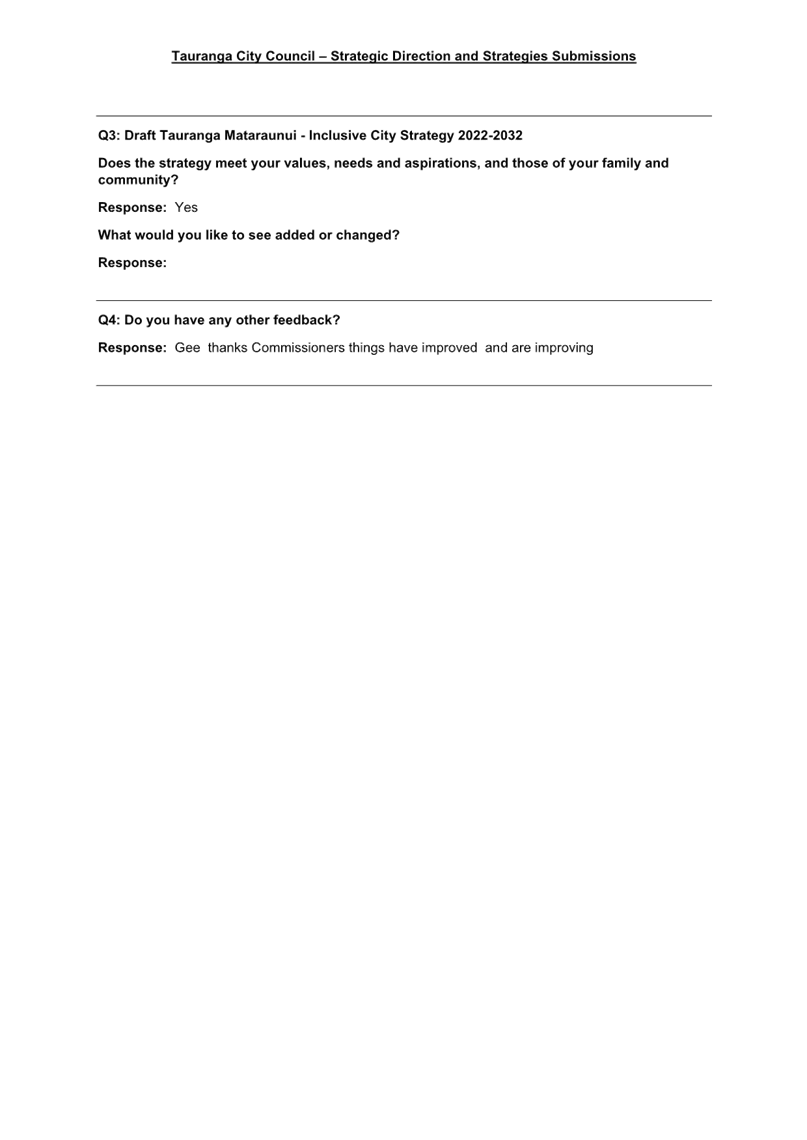
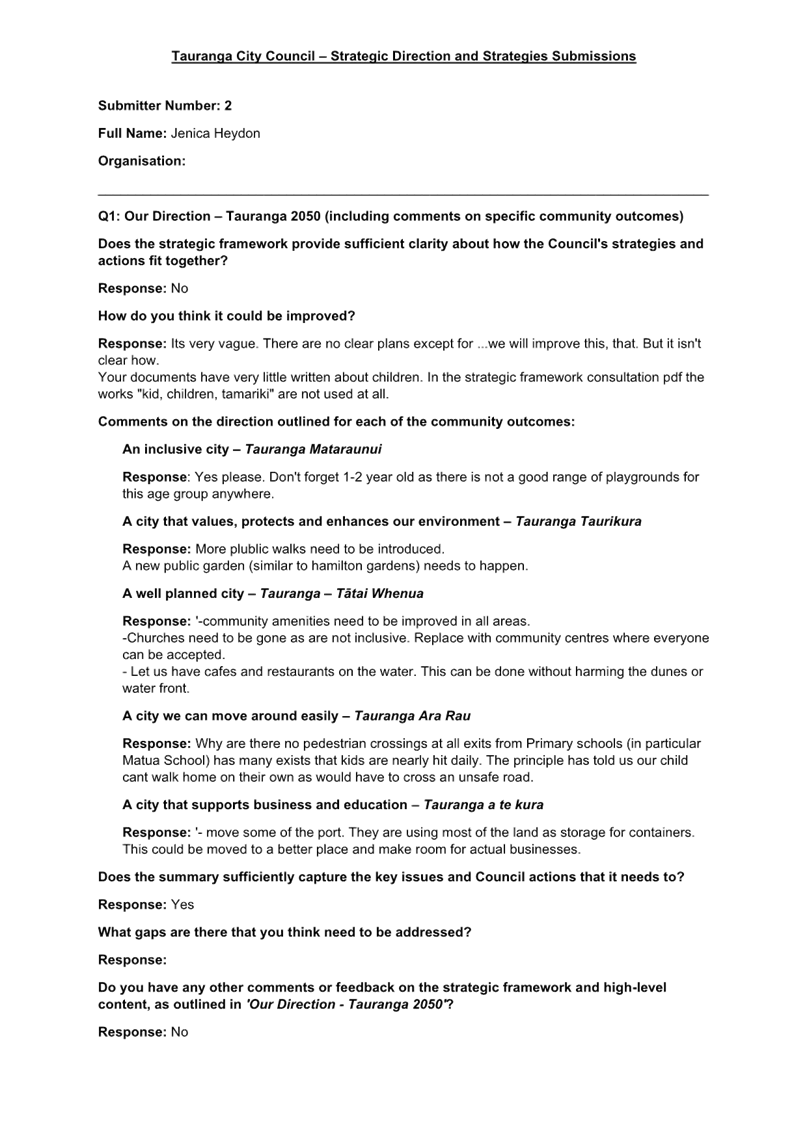


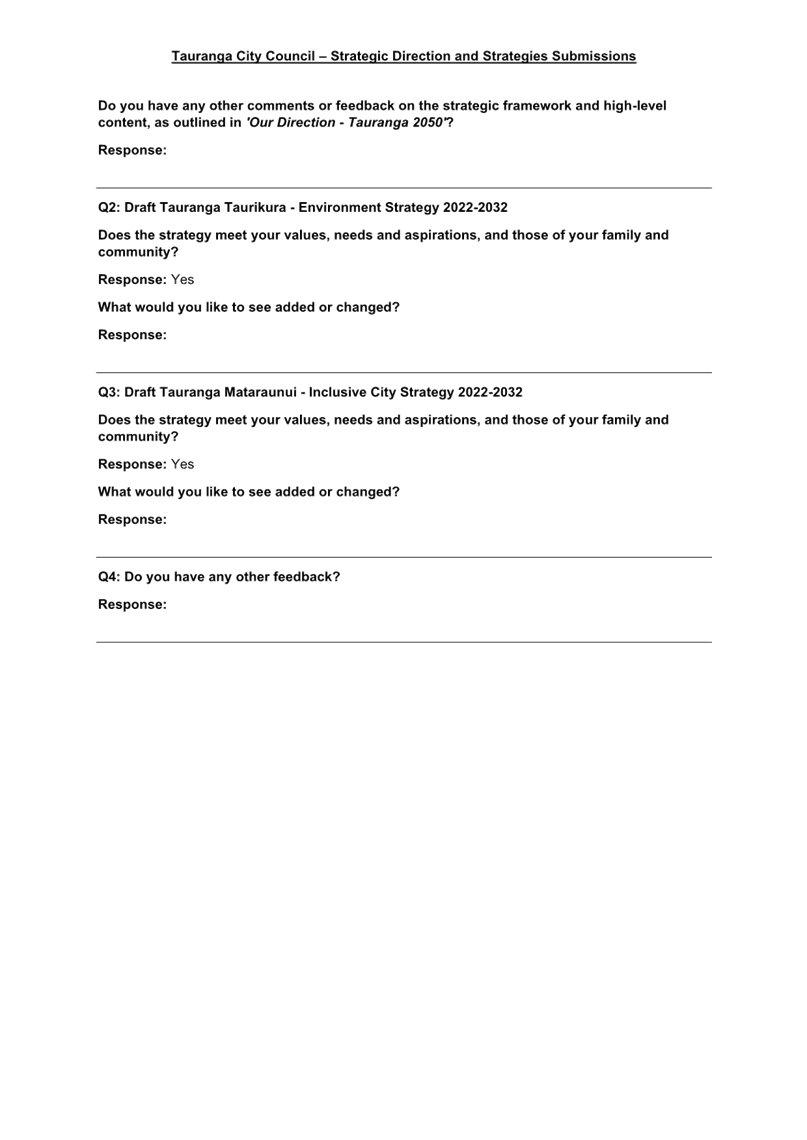

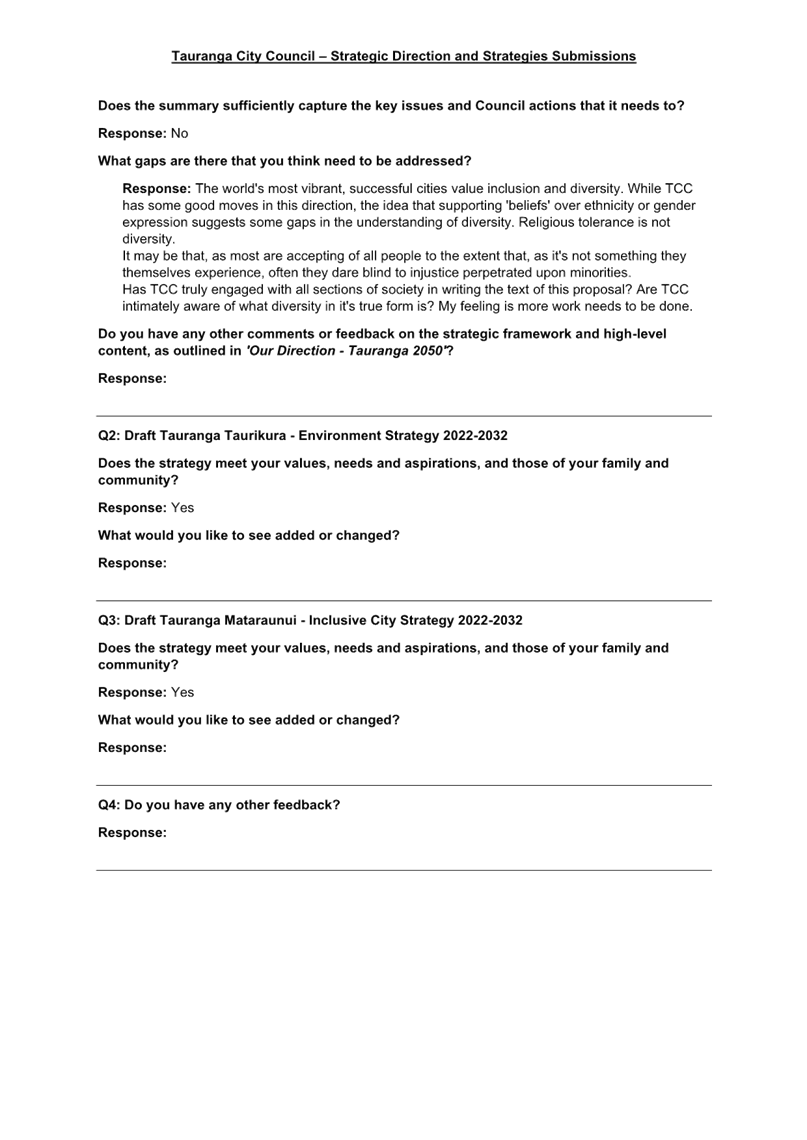
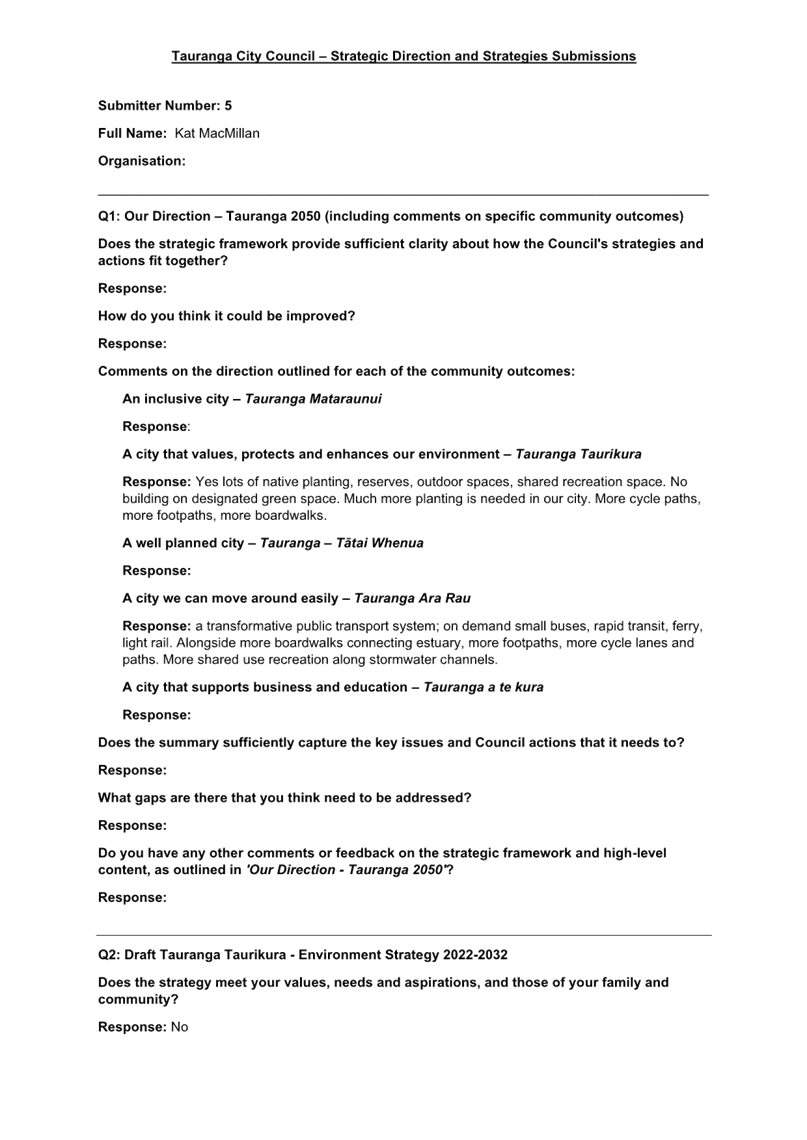

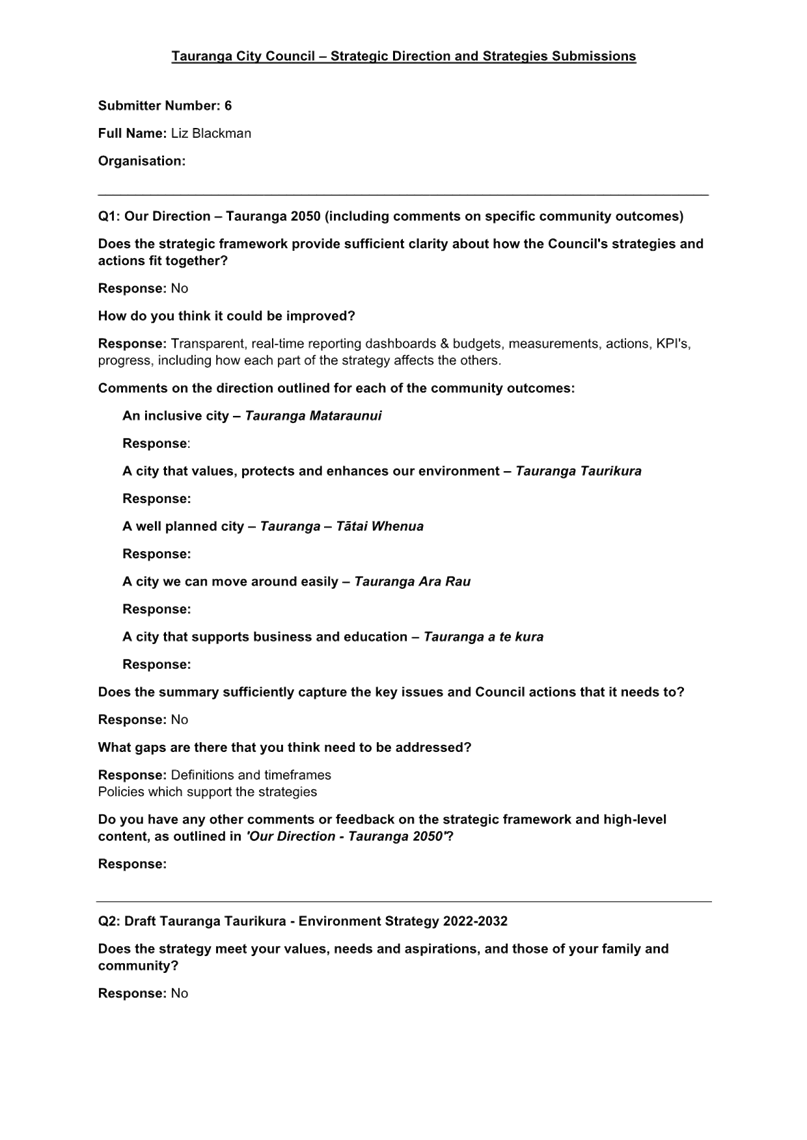

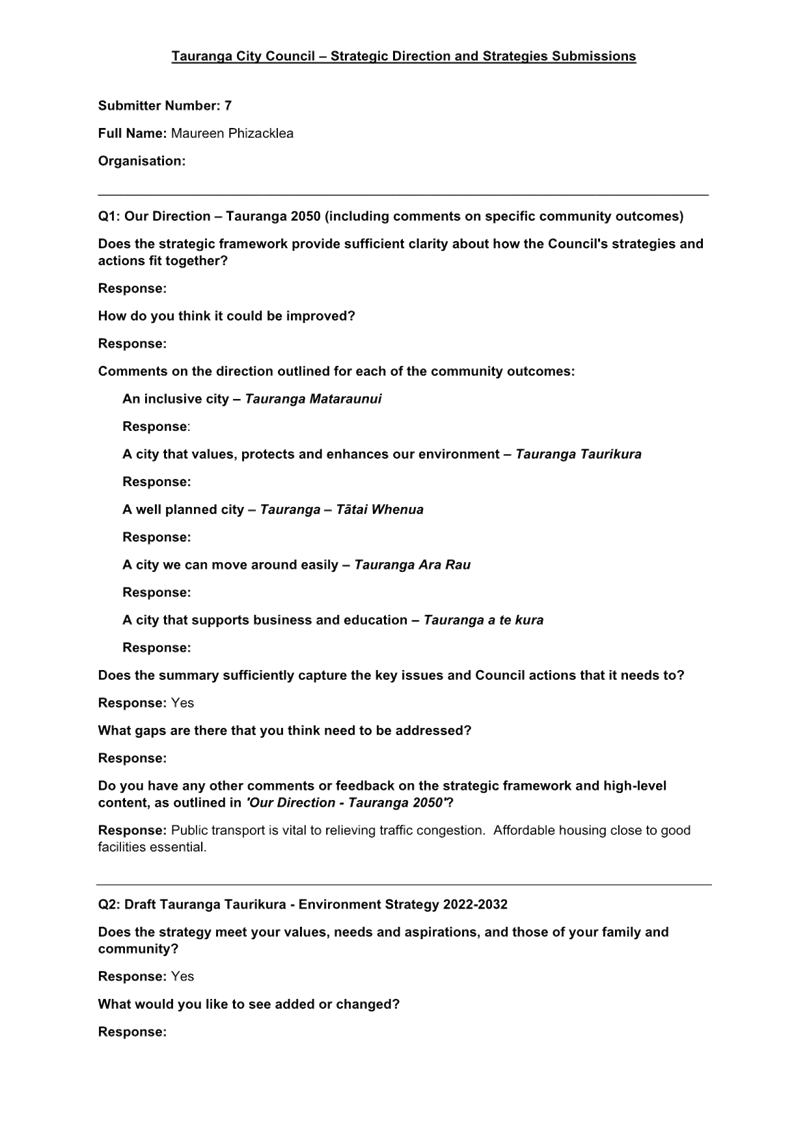
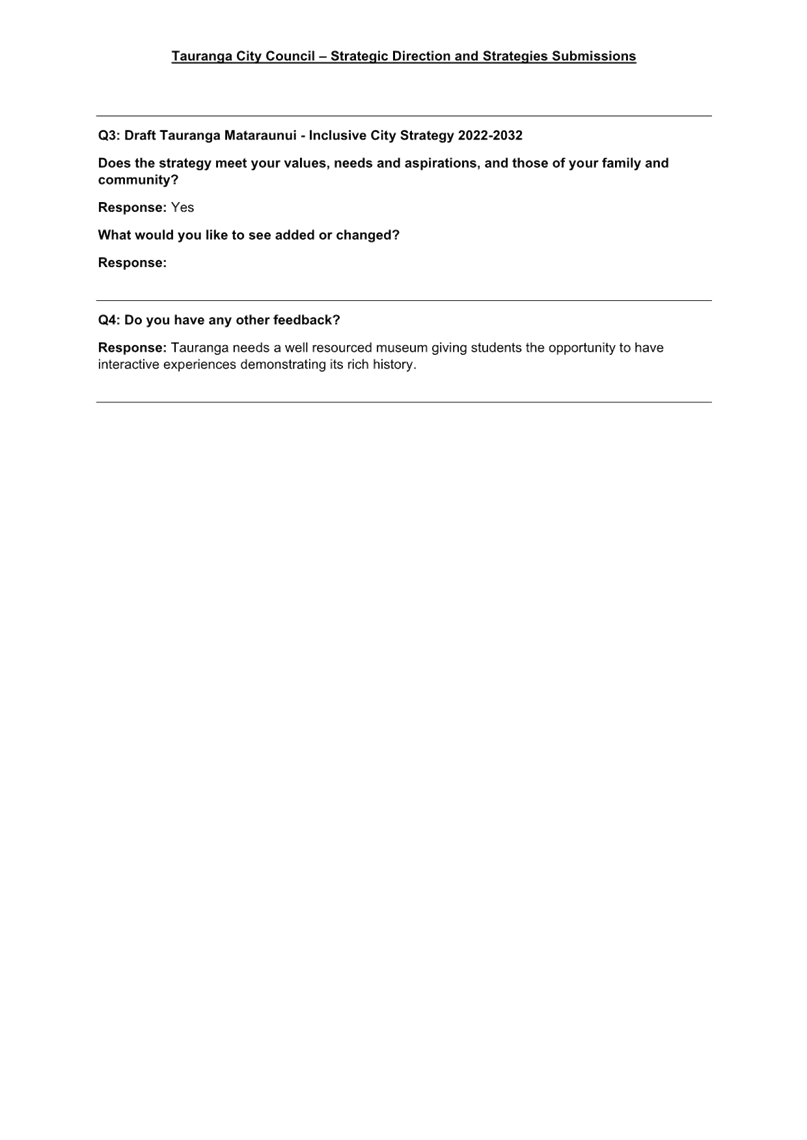




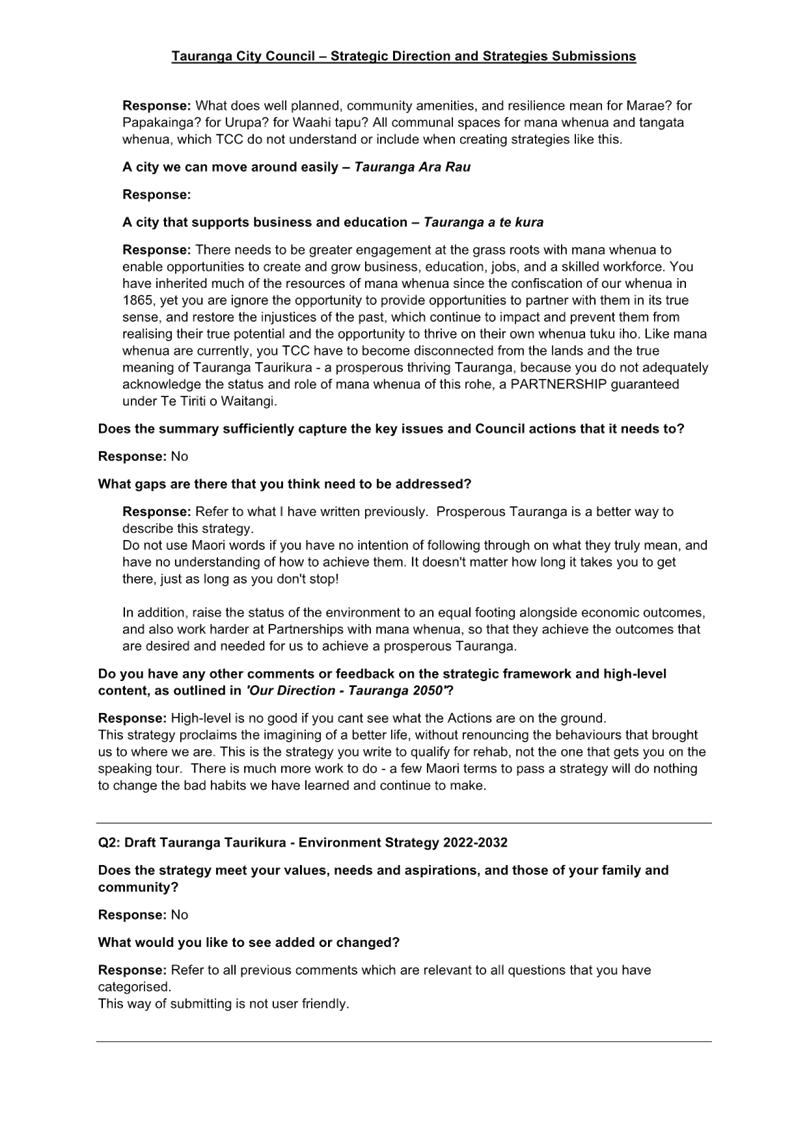
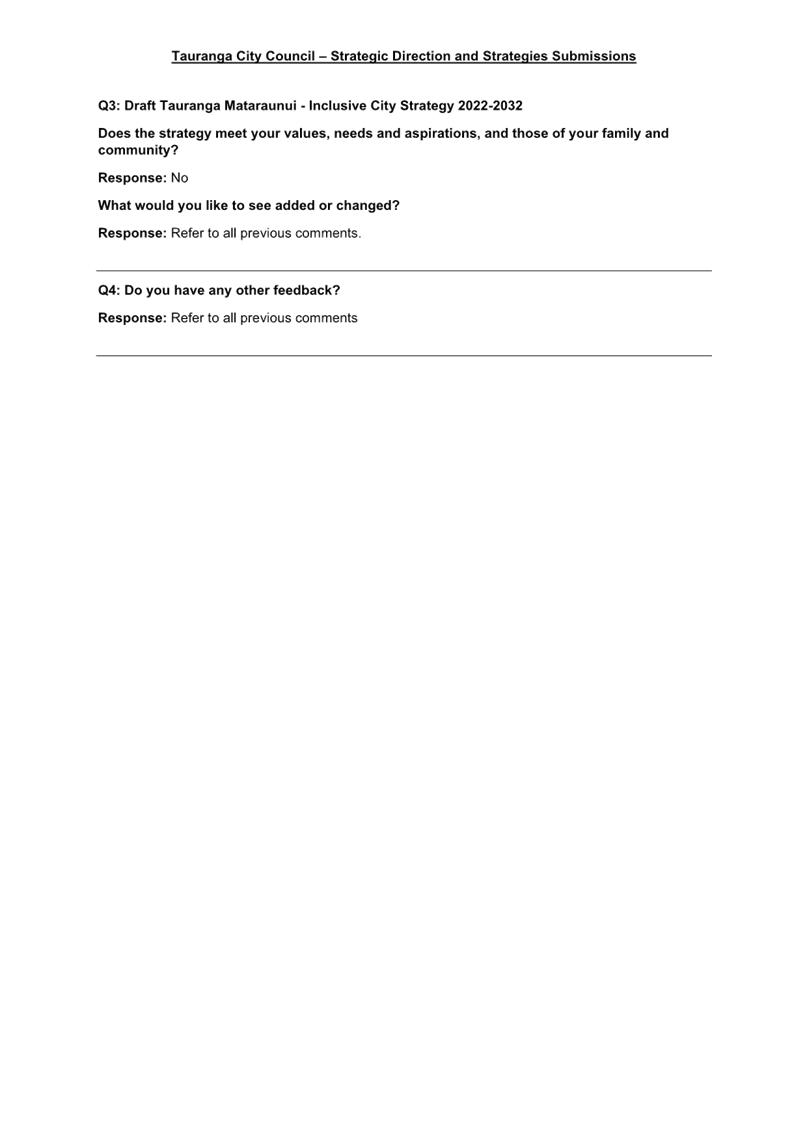
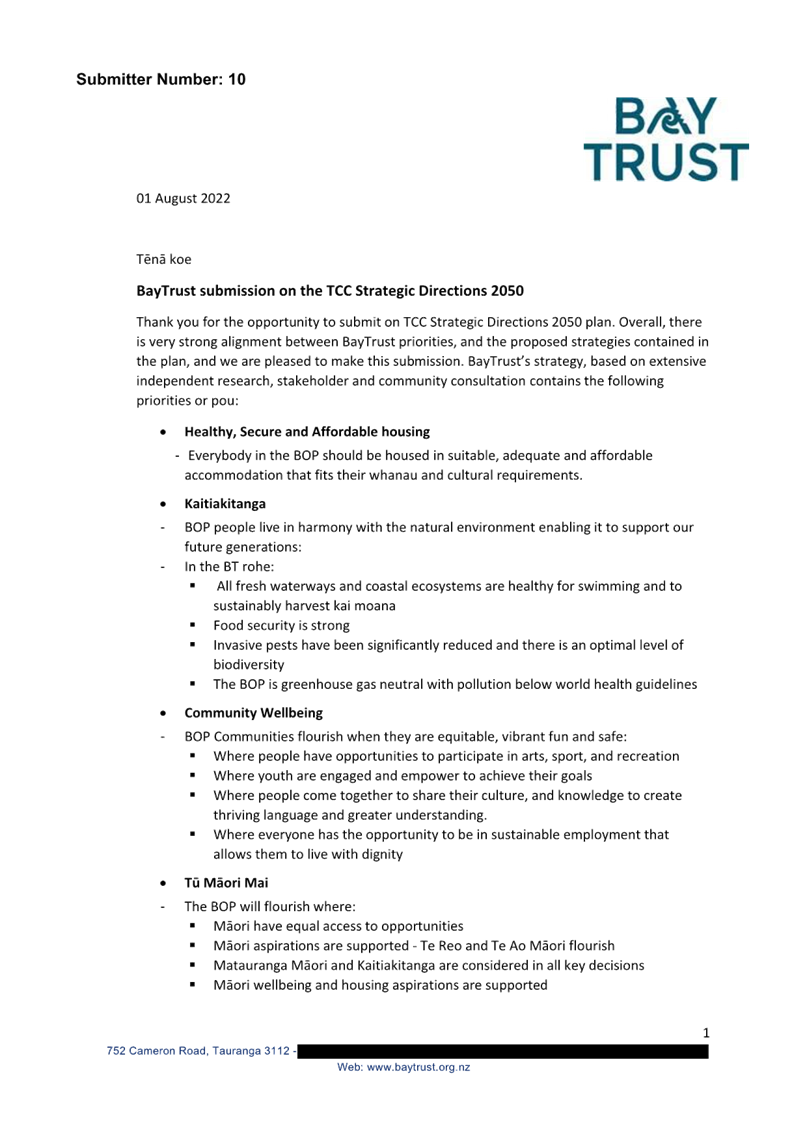
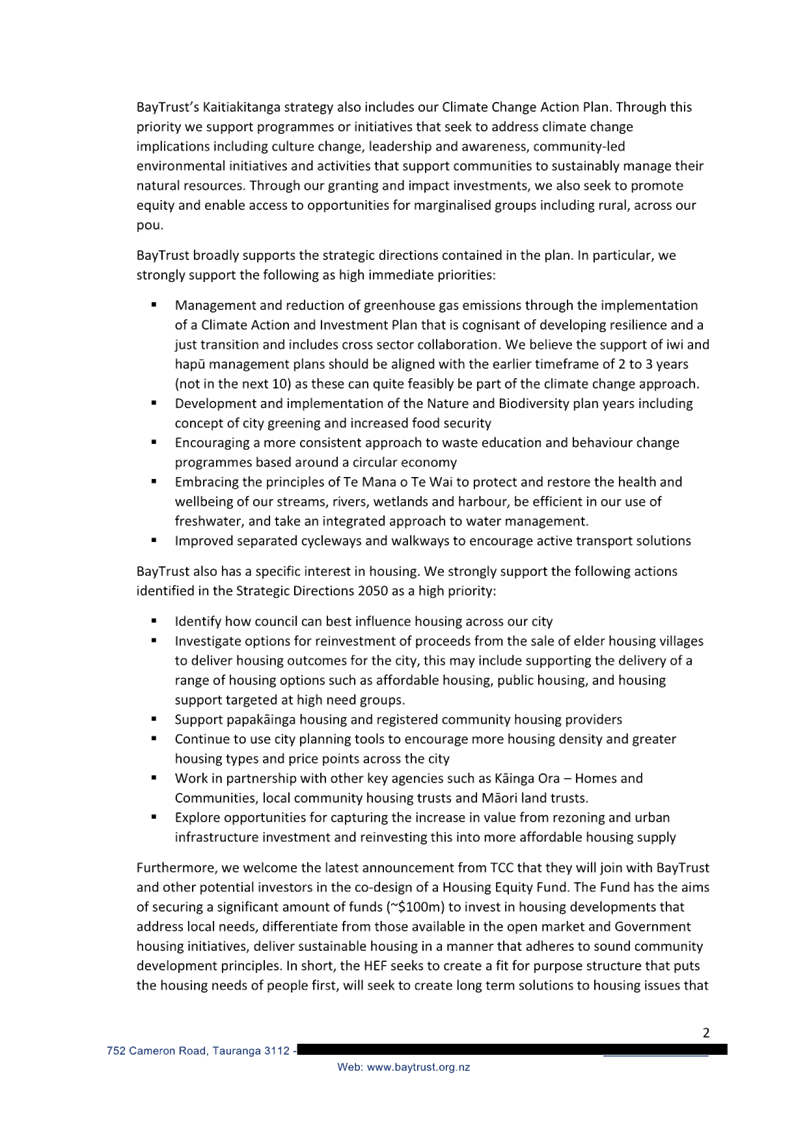
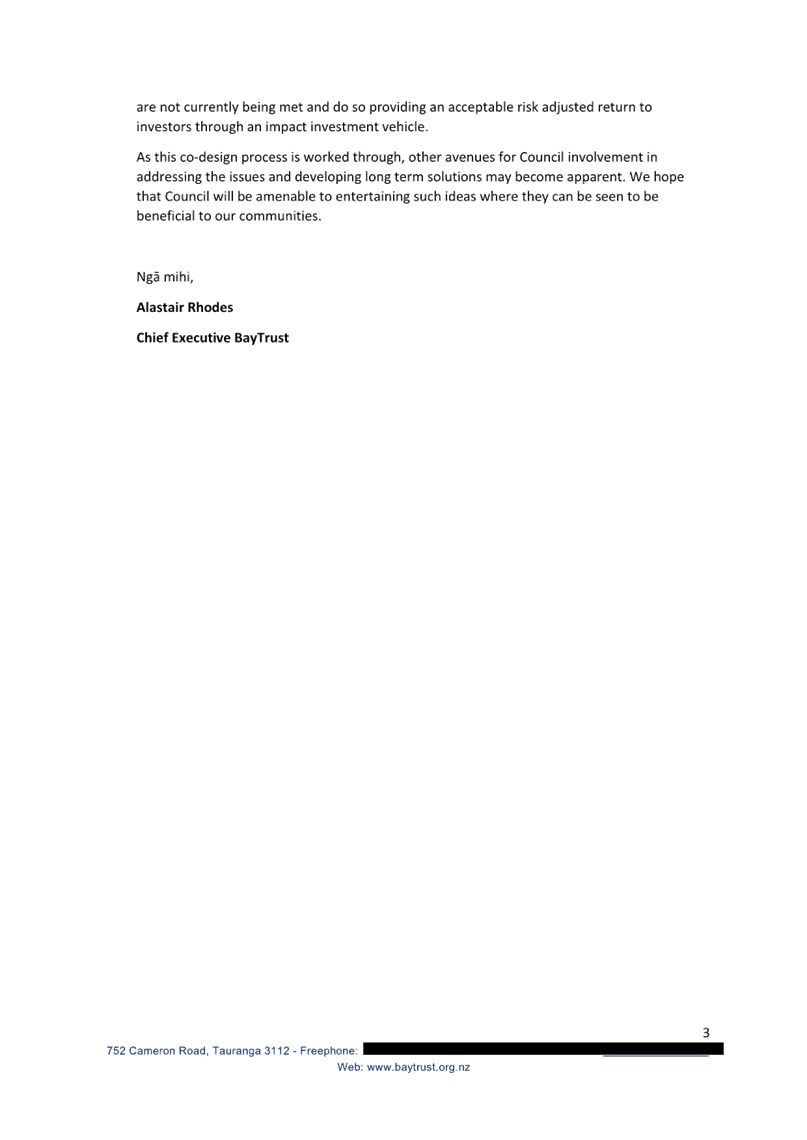
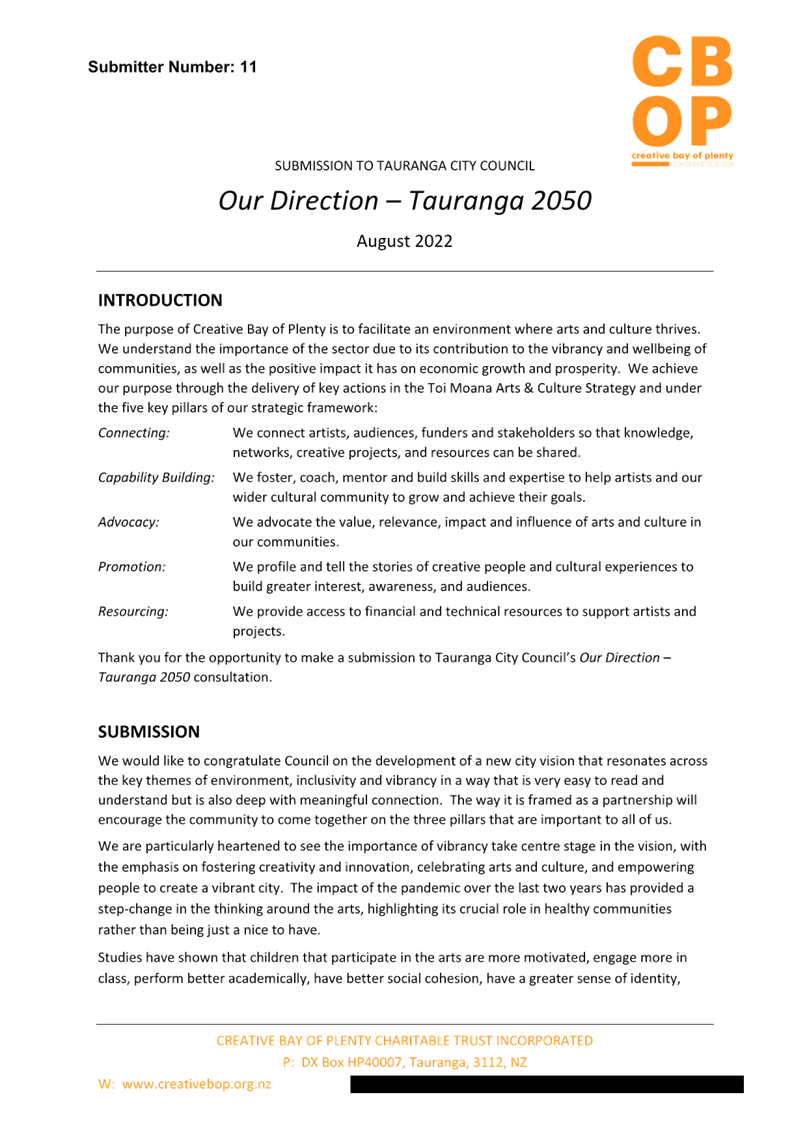
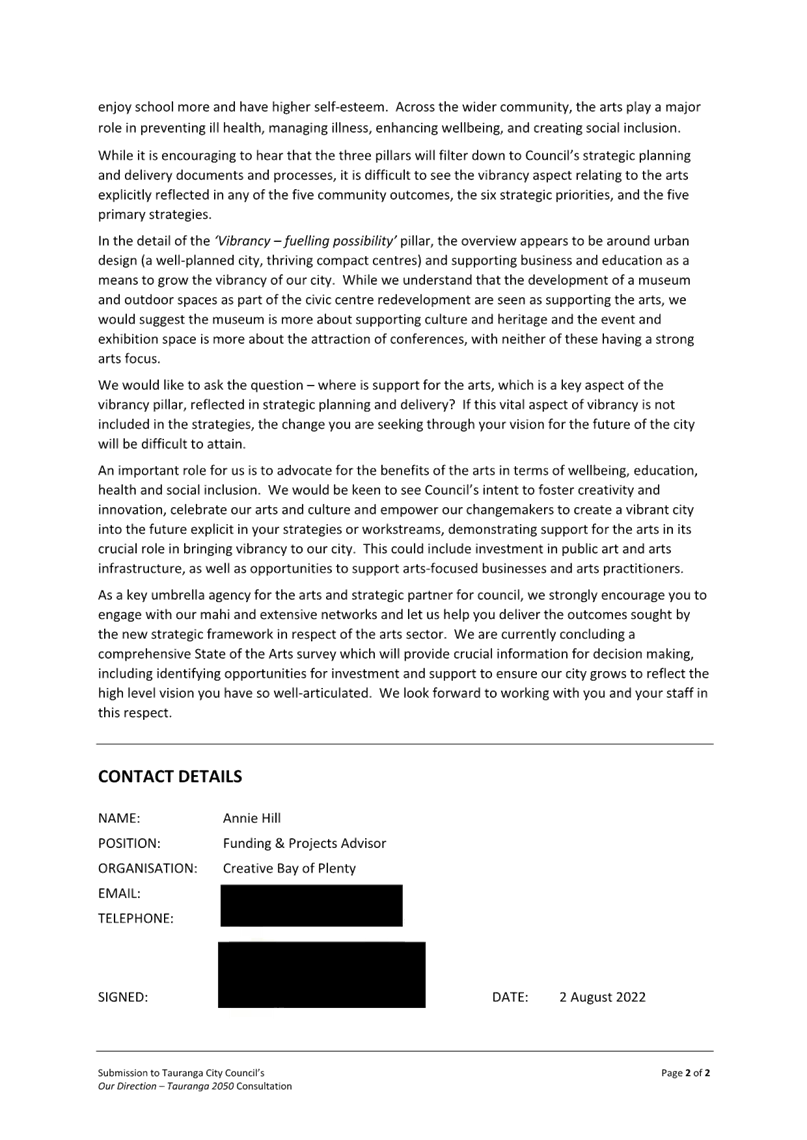
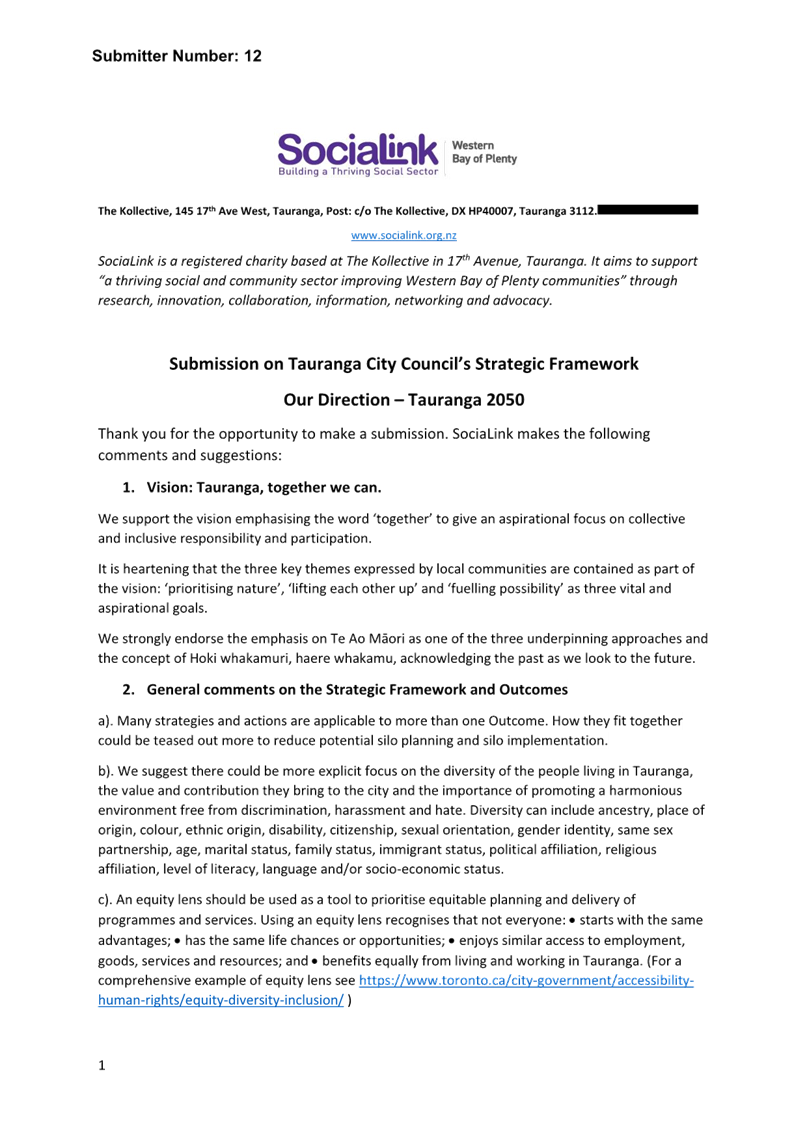
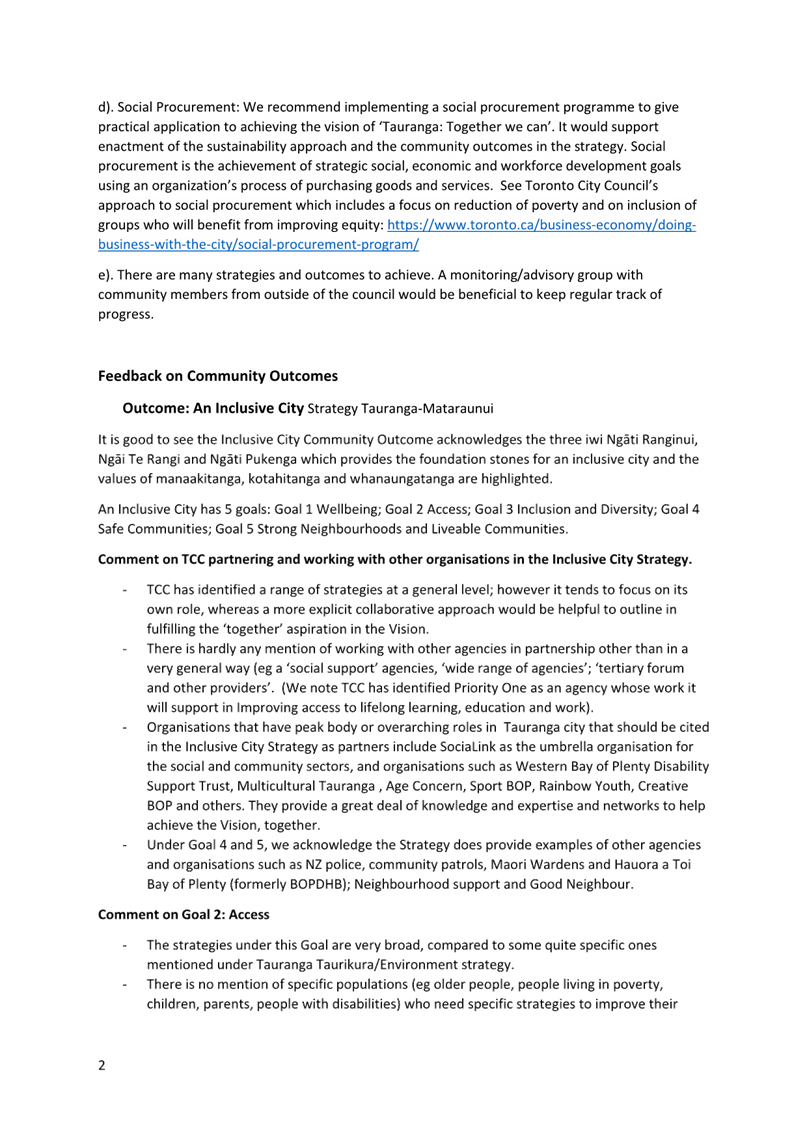
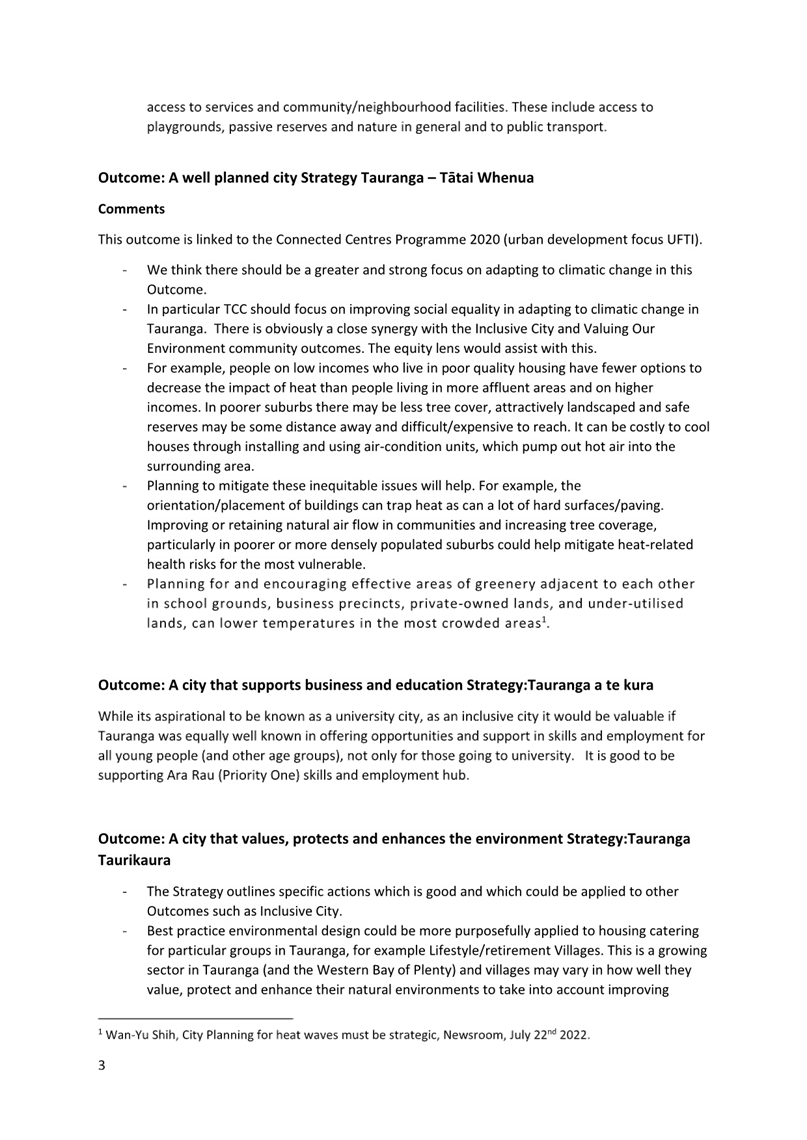
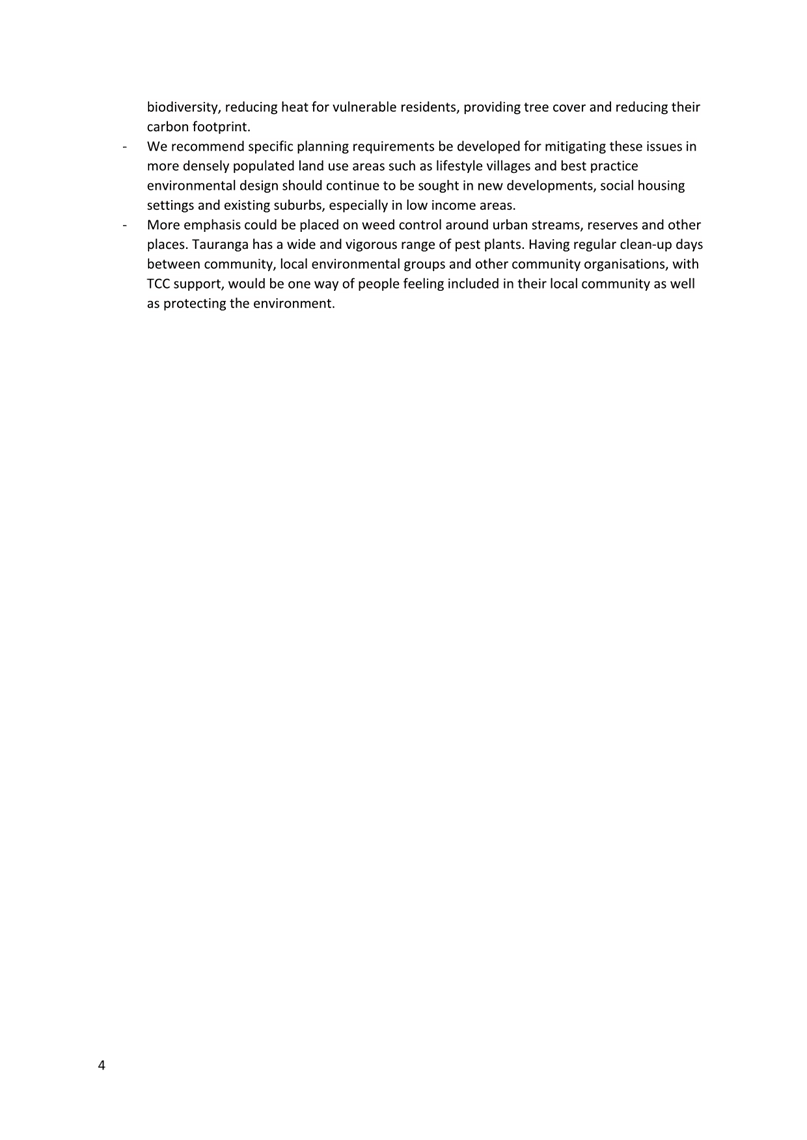



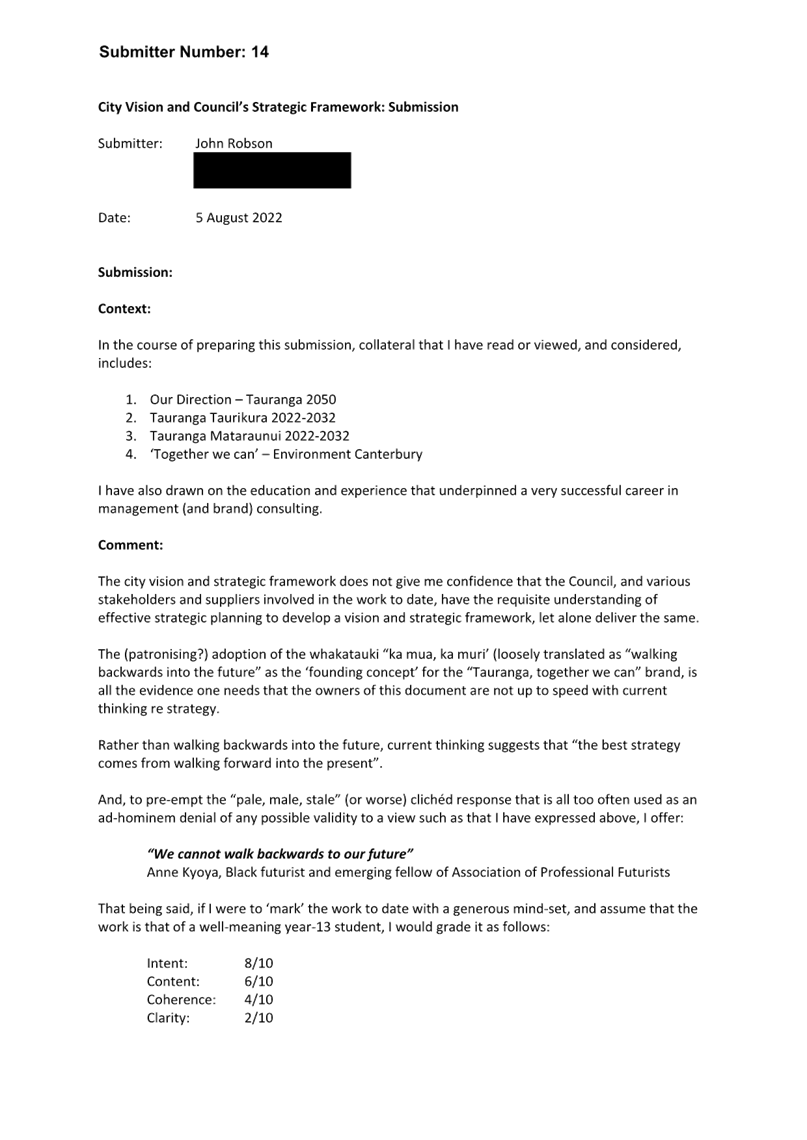
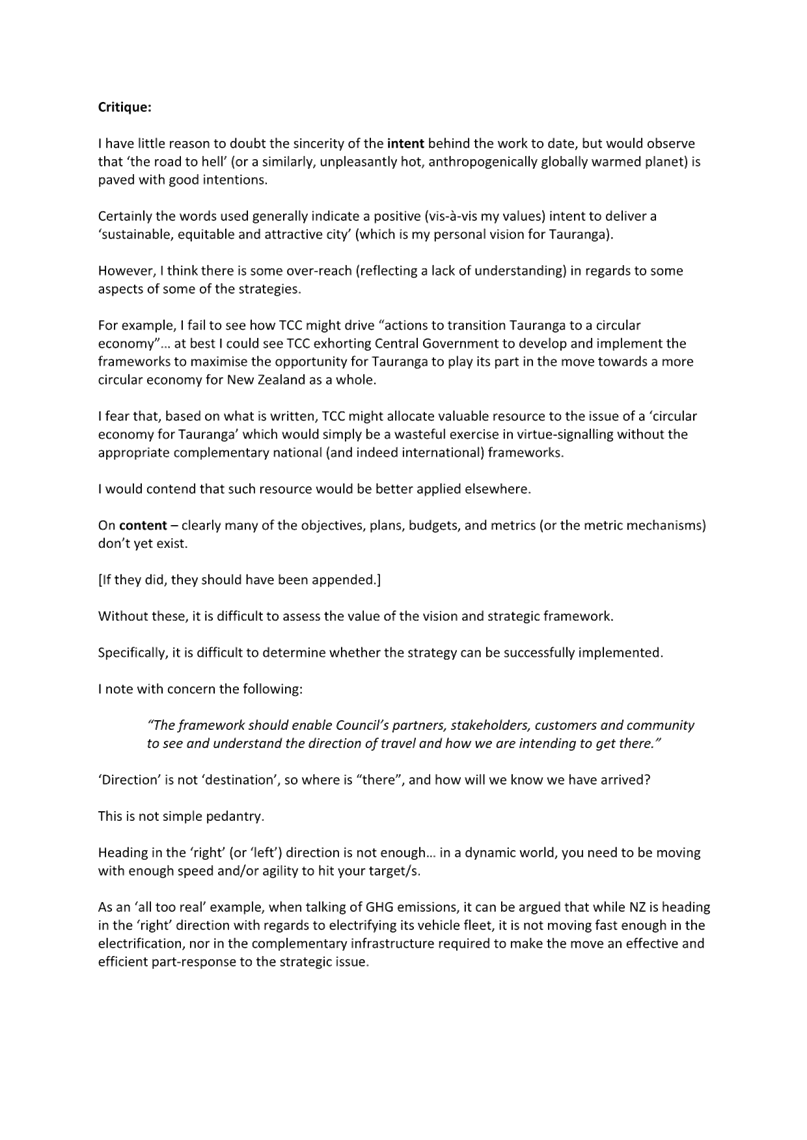


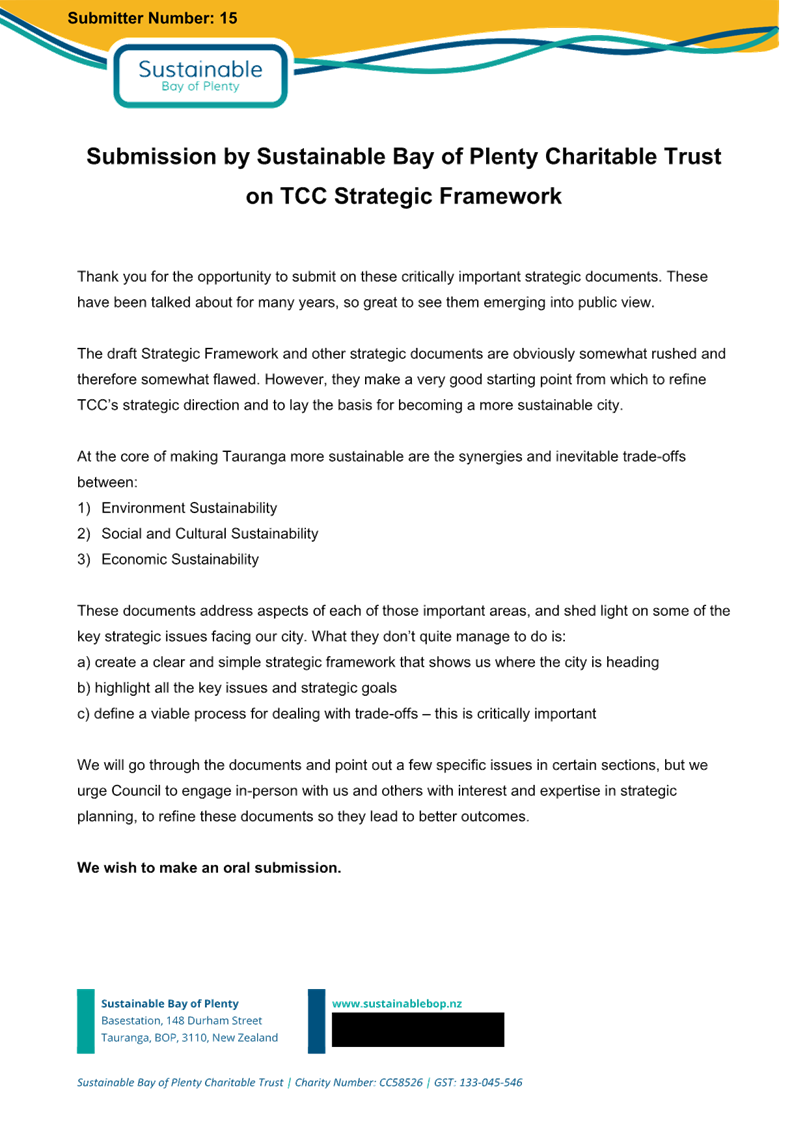
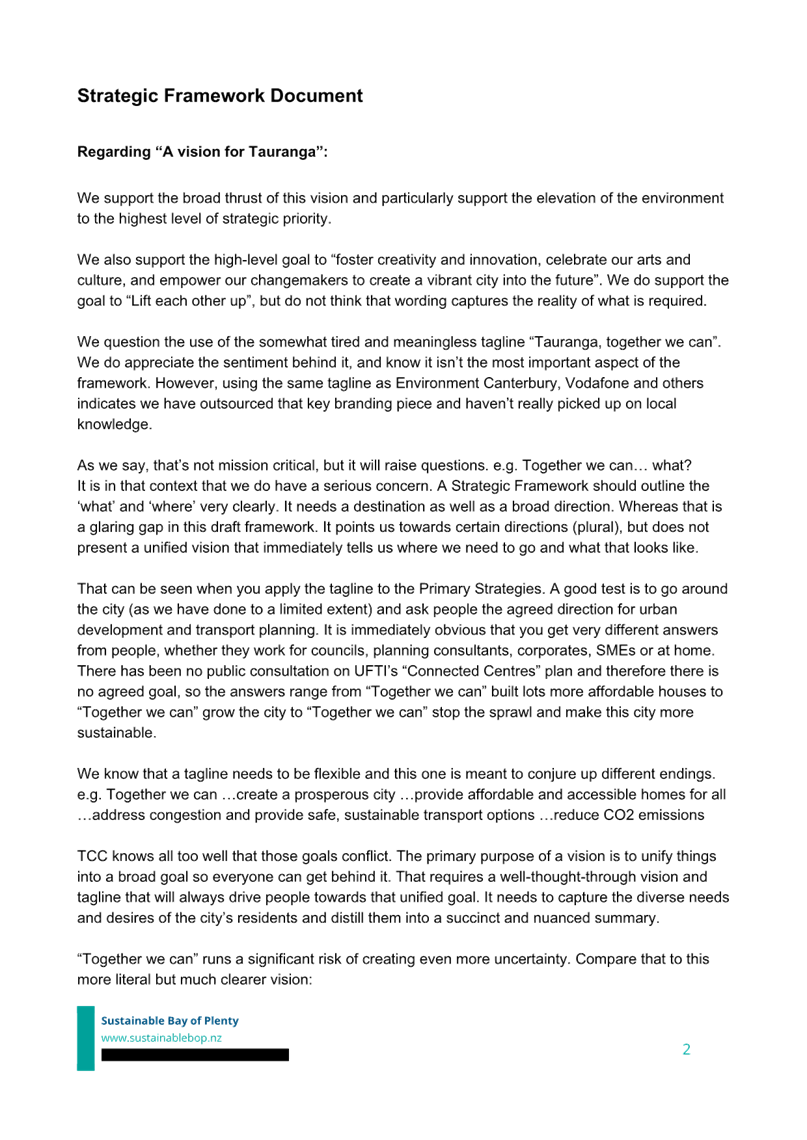
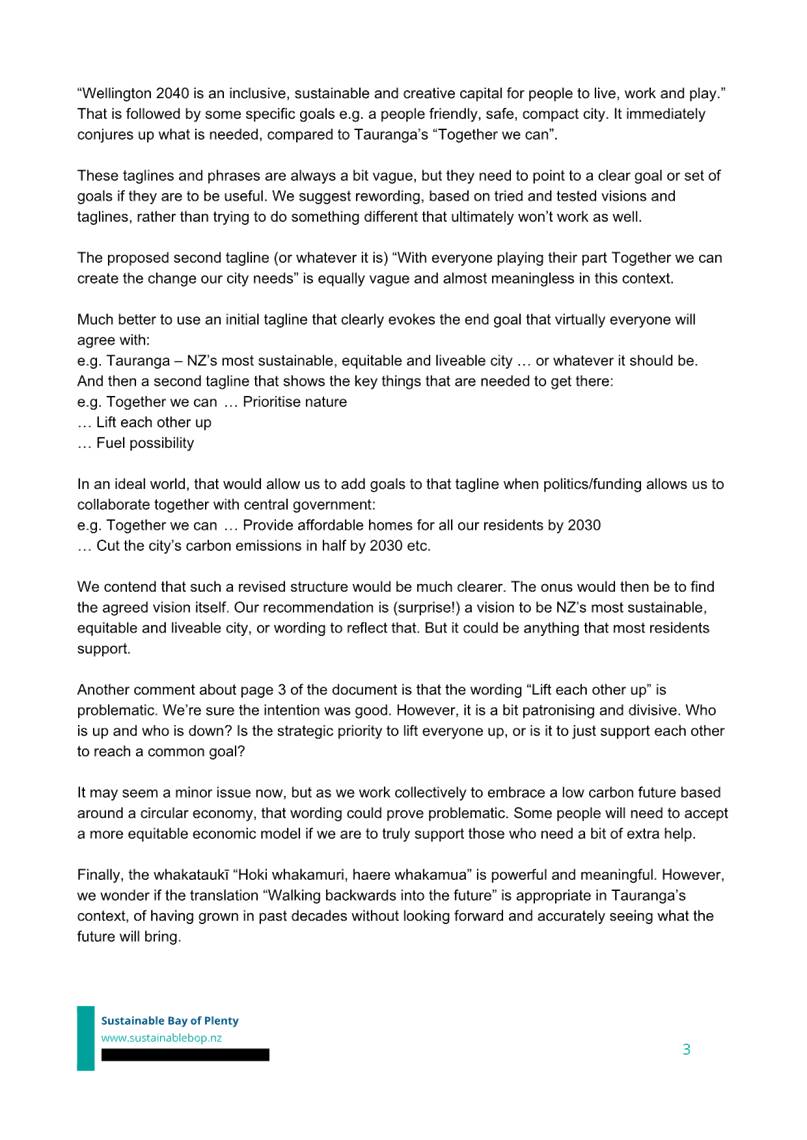
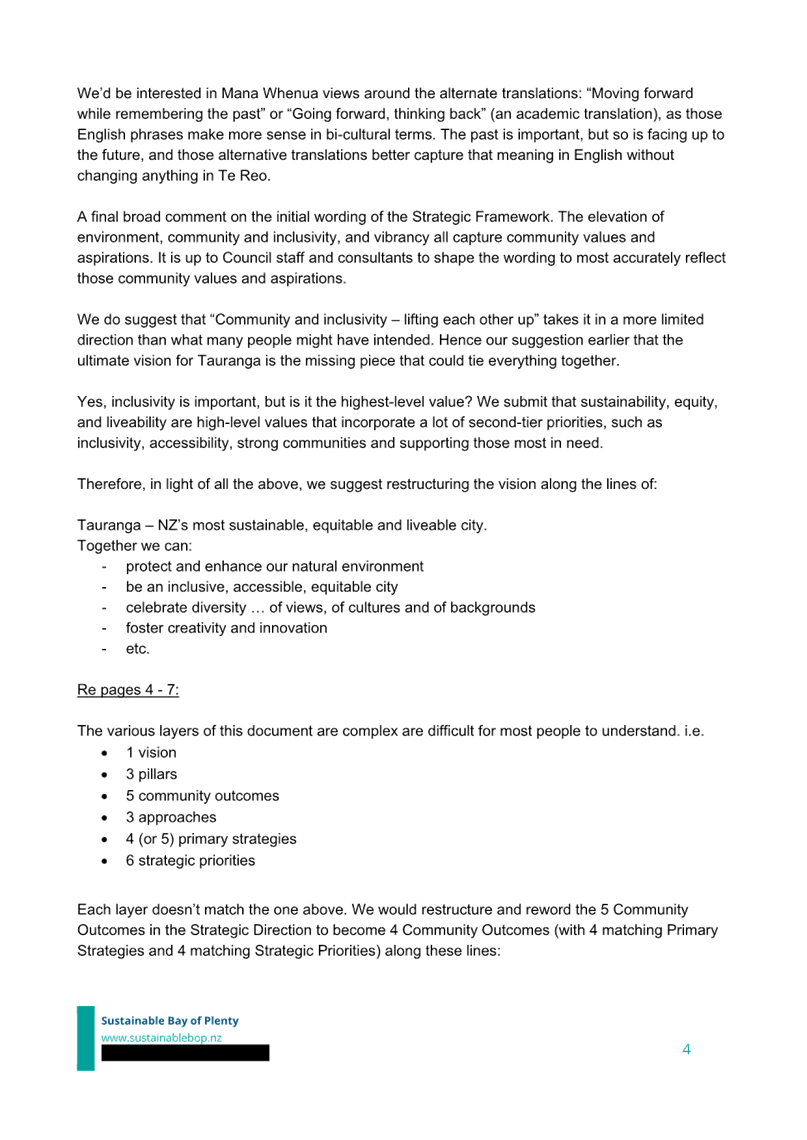
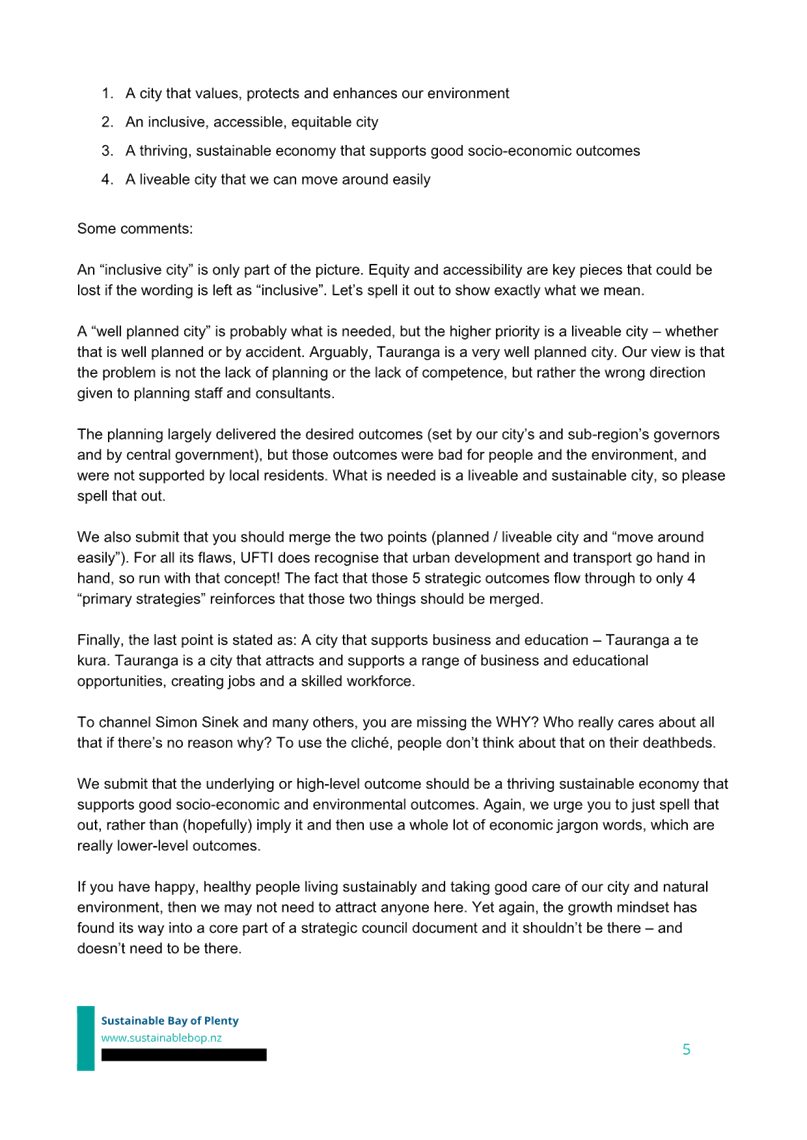
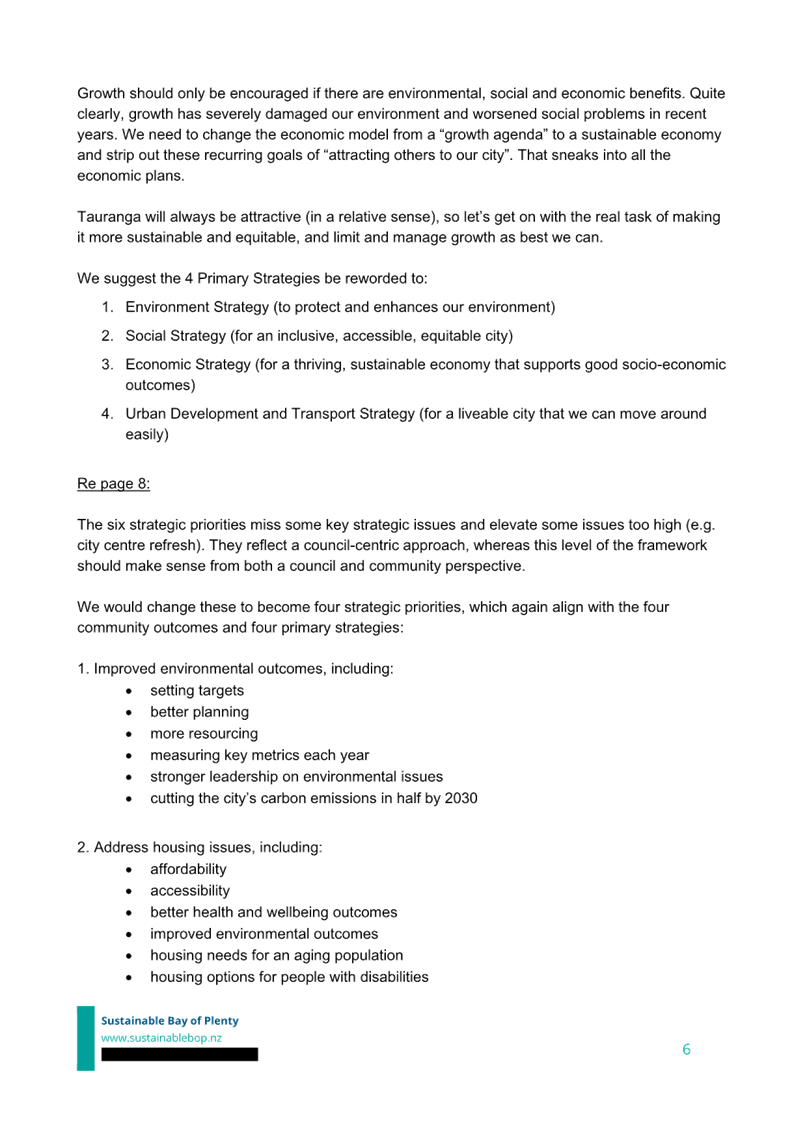
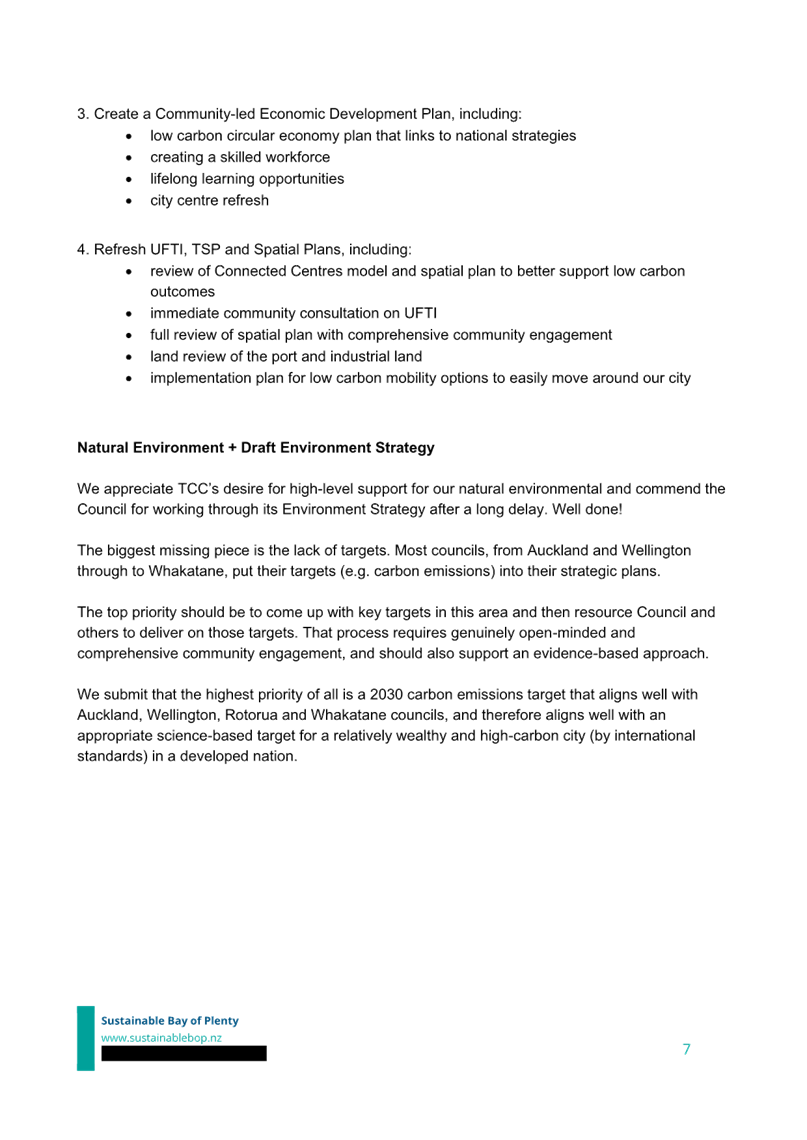
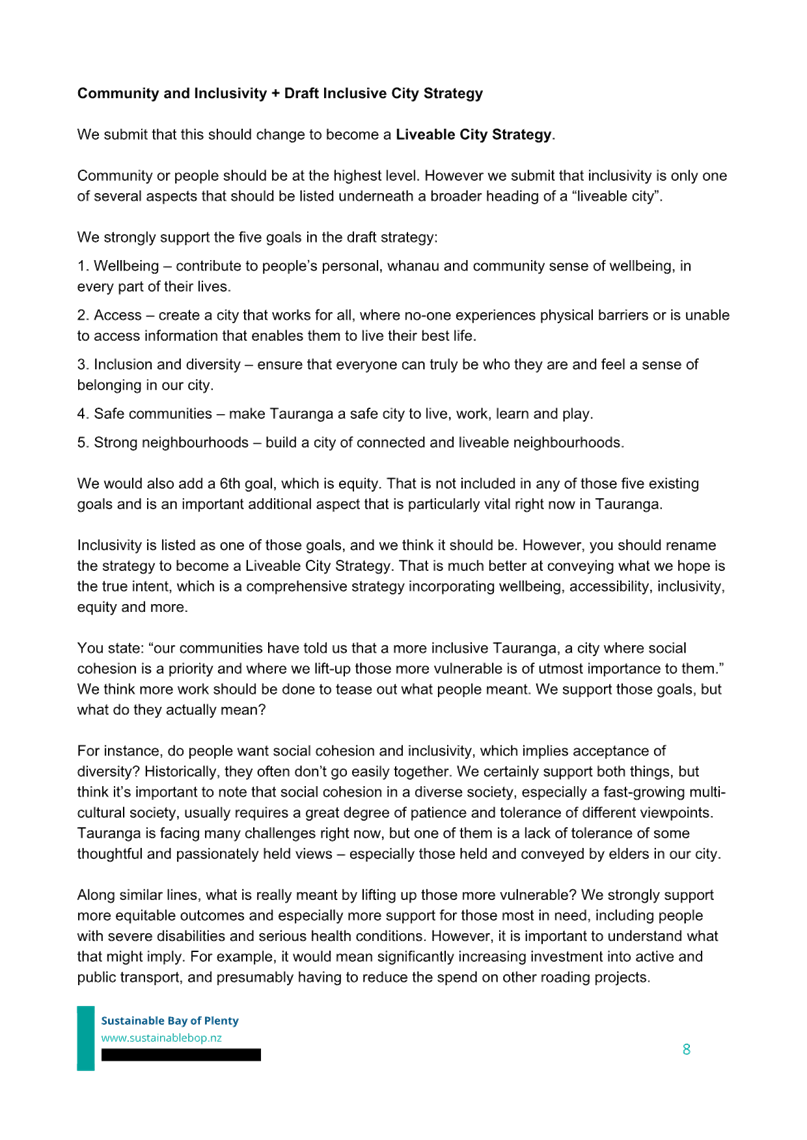
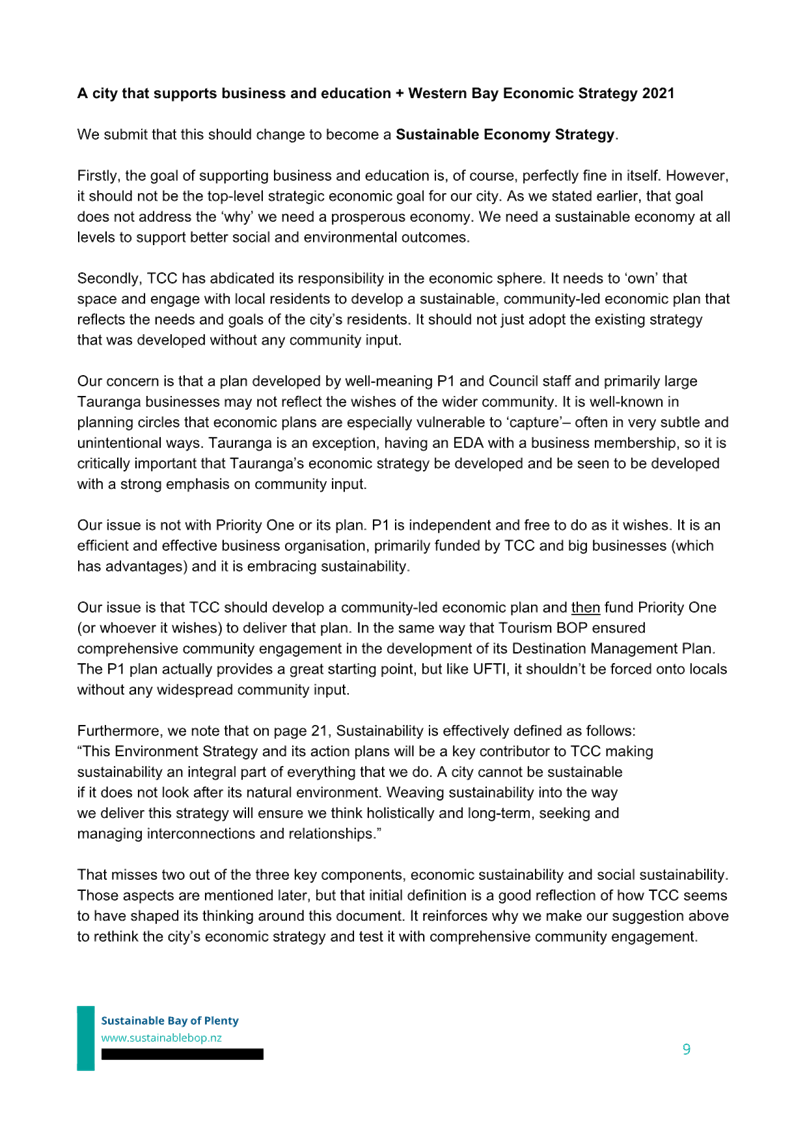
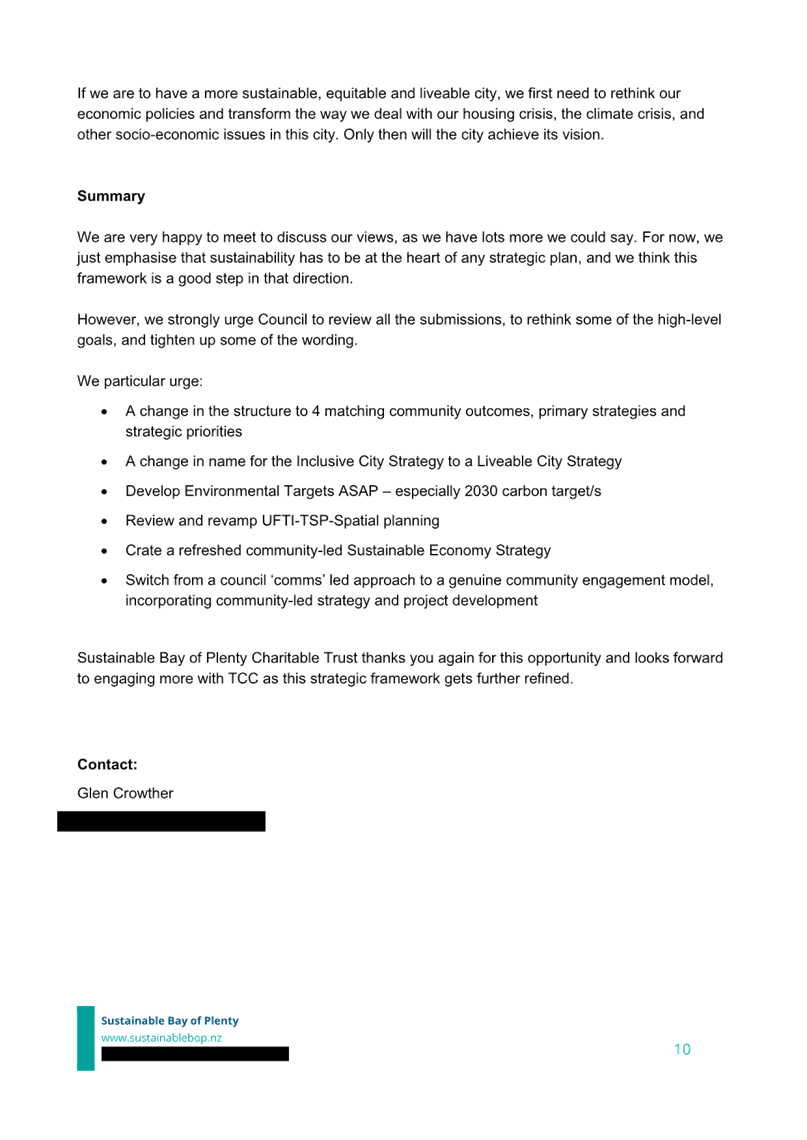
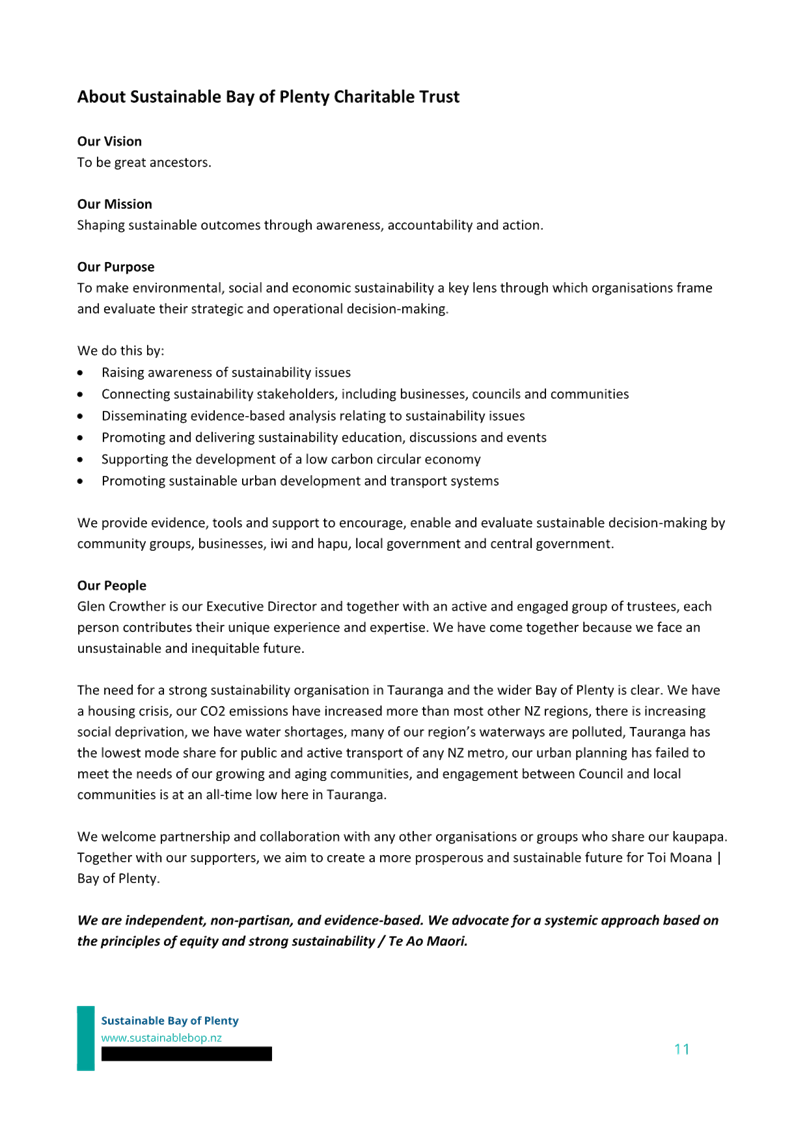
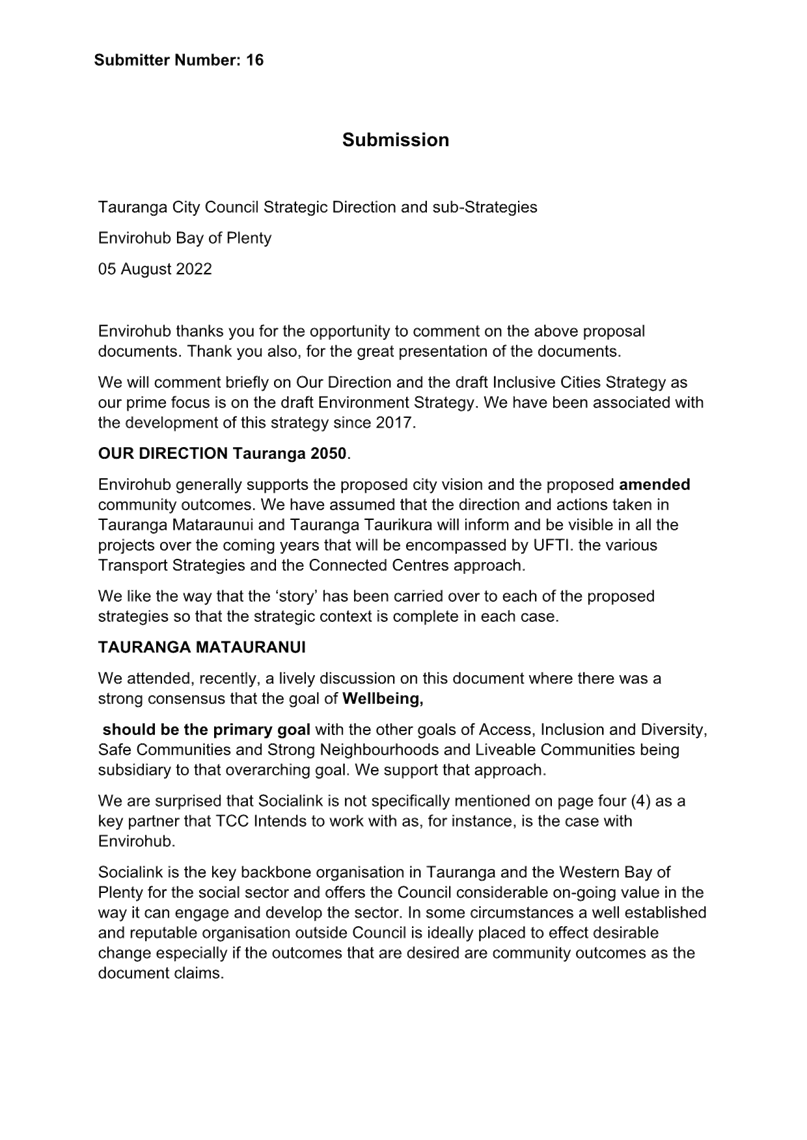
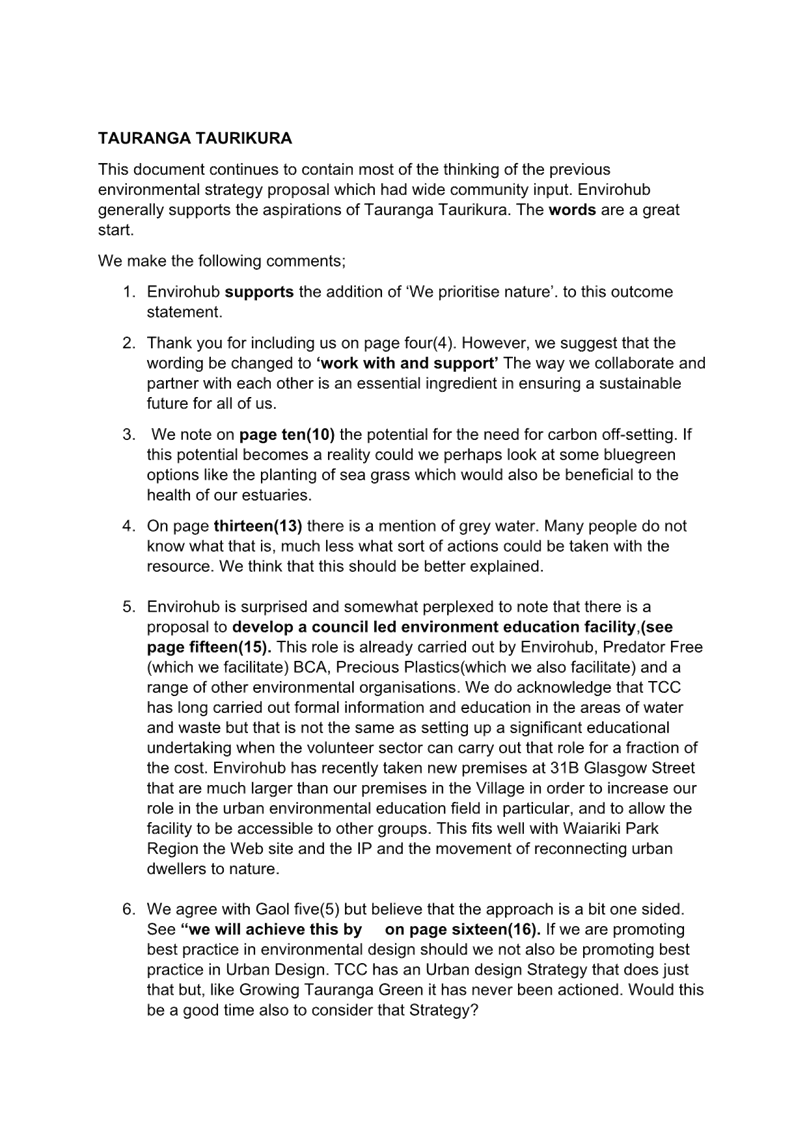
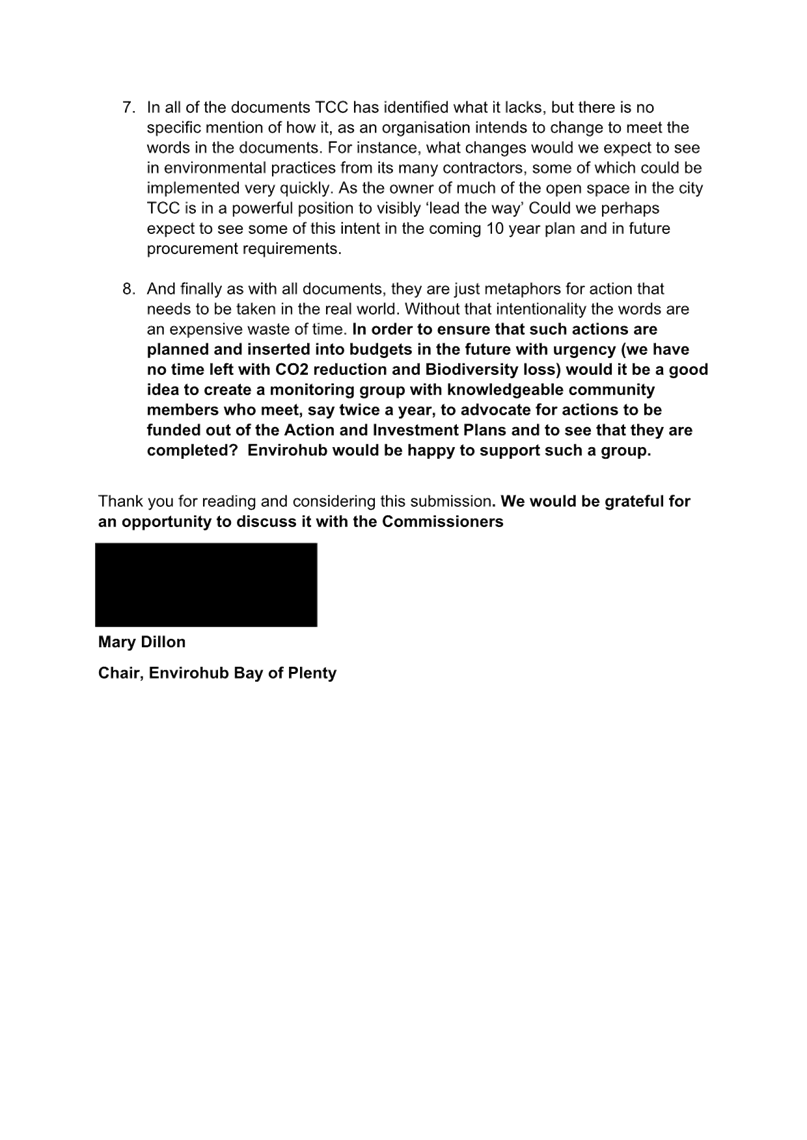
11.2 Tauranga
Moana Waterfront Plan
File
Number: A13865250
Author: Sarah
Stewart, Principal Strategic Advisor
Malcolm Smith,
Senior Project Manager: Civic Redevelopment Projects
Mike Naude, Director
of Civic Developments
Authoriser: Gareth
Wallis, General Manager: City Development & Partnerships
Purpose of the Report
1. This
report presents the Tauranga Moana Waterfront Plan for adoption.
|
Recommendations
That the Council:
(a) Receives
the report "Tauranga Moana Waterfront Plan".
(b) Adopts
the Tauranga Moana Waterfront Plan (Attachment A) to guide the development of
the city centre waterfront.
|
Background
2. As
set out in Tauranga City Council’s City Centre Action and Investment Plan
(2022), our city centre’s origins lie in the celebrated relationship
between whenua and moana. It is one of the distinguishing characteristics of
our city centre, one we must continue to celebrate and evolve to achieve the
city centre’s full potential.
3. Existing
amenities such as the tidal steps, bombing platform, waterfront playground,
green space, events, and bars and restaurants on The Strand already draw people
to the area. We aim to build on this to create a destination waterfront that is
diverse, easy to access, and is uniquely Tauranga.
4. Through
a combination of high-quality design, enhanced connections with the water,
events space, and a mix of commercial and recreational facilities, our
waterfront will become a uniquely Tauranga attraction. This will in turn
support and attract business and investment in the wider city centre. The
transformation of the waterfront will build upon the stories of the past, to
pave the way towards a future that enhances the culture and identity of our
city.
5. To
help achieve this, the Tauranga Moana Waterfront Plan (Waterfront Plan)
provides a comprehensive conceptual layout to guide future development along
the city centre’s waterfront from Dive Crescent to Tunks Reserve, including
Masonic Park.
6. The
Waterfront Plan is not new and has been considered in various forms for over the
last twenty years. To ensure alignment with Te Manawataki o Te Papa (Civic
Precinct development), the City Centre Action and Investment Plan (2022), and
the Draft Marine Facilities Framework, the Waterfront Plan has been consulted
on with mana whenua and key stakeholders, and subsequently refreshed.
Strategic
Context
7. Tauranga
City Council’s Strategic Framework provides a framework of strategies,
and action and investment plans to support the implementation of the vision for
Tauranga, and associated Long-term Plan community outcomes.
8. The
Waterfront Plan sits under the ‘Tauranga Tātaitia rā – we
are a well-planned city’ – community outcome and weaves through
aspects of sustainability, te ao Māori, and how we contribute to the
region. There are also strong links to the City Centre Action and Investment
Plan (2022) and the marine facilities work that is underway. Together, these
two workstreams provide the primary strategic context for the Waterfront Plan.
City
Centre Action and Investment Plan (2022)
9. The
newly adopted City Centre Action and Investment Plan (August 2022) is the
guiding document for the city centre.
10. The
Waterfront Plan contributes to the six strategic outcomes contained within the
City Centre Action and Investment Plan, in particular ‘a waterfront city
centre’:
(i) A
city centre for people, a great place to live, work, learn and play, that
prioritises people at its heart.
(ii) An
accessible city centre, that supports walking, cycling, micro-mobility and
public transport for all ages and abilities.
(iii) A
waterfront city centre, where high-quality, vibrant spaces connect people
with the moana.
(iv) A
city centre with identity and culture, that represents our culture and
heritage, and enhances our sense of place.
(v) An
engaging city centre, that is vibrant and inclusive, with exciting things
to do for people of all ages, stages and abilities.
(vi) A
city centre in nature, that embraces its natural environment, integrating
with waterways and open space.
11. The
Waterfront Plan also provides detailed planning for creating a sense of
identity and purpose for the ‘Waterfront and Taumata Kahawai
Precinct’ as identified in the City Centre Action and Investment Plan.
Marine
Facilities Framework
12. A
Draft Marine Facilities Framework has recently been developed by Council in
collaboration with key stakeholders. This will be used as a foundation document
for the development of a Marine Facilities Action and Investment Plan.
13. Once
developed, the Marine Facilities Action and Investment Plan will provide a
guide for decision making, integrated planning, and investment across all
Council’s marine facilities (including boat ramps, wharves, jetties and
pontoons, and ancillary land-based infrastructure such as parking), ensuring
that everyone can experience our city’s waterfront safely and enjoy the
marine environment, which is a key part of Tauranga’s culture and
lifestyle.
14. The
Marine Facilities Action and Investment Plan will be supported by a series of
planning documents, similar to the Waterfront Plan, for areas of high demand
(for example, Sulphur Point and Pilot Bay).
15. Strategic
alignment with the marine facilities work is important as the Waterfront Plan
contains a number of city centre marine facilities, for example, wharves and pontoons
for both commercial and recreational use.
Links to other action
and investment plans
16. Once
complete, the Events Action and Investment Plan, and the Nature and
Biodiversity Action and Investment Plan will also link with the Waterfront
Plan.
tauranga Moana
waterfront plan – refreshed
17. The
overall purpose of the Waterfront Plan is to reconnect and amplify the city
centre’s connection to the harbour through the transformation of the
waterfront into a premier recreational destination. To create a waterfront
parkland, the plan incorporates a mix of recreational, community and commercial
activities that celebrate the water’s edge as a focal point for
waterfront activities.
18. To
ensure we create a waterfront city centre where high quality vibrant spaces
connect people with the moana, consideration was given to land use, movement,
public realm, commercial opportunities, and civic facilities during the refresh
process. Comprehensive consideration was also given to previous, existing, and
planned work in the city centre.
19. The
resulting Waterfront Plan provides a roadmap for the next 10 years for the development
of the waterfront in the city centre. It brings together a programme of work
that supports the instrumental transformation taking place in our city centre.
Four cultural pillars provide the foundation for the
Waterfront Plan
20. Our
city’s waterfront is a place of cultural significance for past, present,
and future generations, particularly for mana whenua of Tauranga Moana. Originally
part of the central kāinga (village) of early Tauranga, the waterfront
attracted people as a natural landing for waka, for trade, for gathering, for
discussion, and for interactions.
21. Four
cultural pillars inform and guide the plan. These have been developed with mana
whenua representatives of the Cultural Advisory Group for Te Manawataki o Te
Papa (Civic Precinct) project:
|
Te Papa
Houkura
|
Fertile, thriving
natural environment.
Sustaining the people.
Responsibility
to care for the people and the environment.
|
|
Te Papa
Manawa Whenua
|
Life
giving water – connecting land to Sea.
A
wellspring of wellbeing.
|
|
Te Papa
o Ngā Waka
|
Navigation
and wayfinding – interface of many iwi and cultures.
Networking,
trade and commerce.
|
|
Te Papa
Kainga o Te Iwi
|
Ahikaaora
long burning fires of occupation.
Resilience,
shelter, refuge, housing the community.
Manaaki
tangata, hosting the many visitors.
|
22. The
transformation of the waterfront will build upon the stories of the past,
including the colonial, maritime and industrial history, which has underpinned
the development of Tauranga central over time. Māori cultural heritage
elements will include a new pou, wharewaka, and interpretation centre on the
water’s edge in recognition of the landing space.
Key
design features
23. Key
design principles used in the creation of the Waterfront Plan are summarised
below. These are the core elements interwoven and implemented throughout the
plan, used to ensure we reconnect and amplify the city centre’s
connection to the harbour. Table 1 outlines the key design principles and how
they aim to be implemented through key actions.
Table
1: Summary of key design principles
|
Key design principle
|
Description and key actions
|
|
Reconnect
|
Seeks to return the cultural and heritage stories
and connections to the waterfront:
· Elevate the elements that reconcile, interpret and
assert these connections to the waterfront.
· Mana whenua narratives, values and practices are
embedded.
· Establish a new destination, focal point for the
community.
|
|
Repair
|
This will involve making significant improvements to
the ecological and environmental outcomes of the waterfront:
· Upgrade the existing sea wall to create a resilient,
living interface between land and sea.
· Remove existing parking and vehicle circulation
which visually dominants the waterfront.
· Increased planting that supports ecology, diversity,
and resilience.
|
|
Repurpose
|
Making new experiences in existing public spaces and
buildings through rethinking and reimagining activities that will strengthen
the purpose of the waterfront:
· Create new space and experiences along the
water’s edge.
· New opportunities to access and engage with the
water and surrounding landscape.
· New land and water based recreational activities.
|
|
Renature
|
New approaches to planting, gardens, and the urban
ngahere that will help to significantly regreen and renature the waterfront,
which is currently over 50 percent hard paved or roofed:
· Integrate water sensitive urban design measures to
improve water quality.
· Sea wall enhancement to improve marine and
terrestrial ecologies and biodiversity.
· More planting for shade, shelter and resilience that
restore indigenous and coastal ecologies.
|
|
Regenerate
|
New activities, experiences and opportunities to
access, occupy and engage with the city centre:
· Improved access to and from the waterfront.
· New activities that attract both locals and
visitors.
· Wide range of events and activities that support
town centre activation, business and investment.
|
Three
distinct areas within the Waterfront Plan
24. One
of the important aspects of the refreshed Waterfront Plan is the identification
of three distinct areas (refer Figure 1). Each area has a primary purpose that
will minimise conflicting use and demands (refer Table 2), and therefore help
to keep everyone safe as they enjoy the city centre’s waterfront and all
it has to offer.
Figure 1: Aerial map showing the three distinct areas of
the Tauranga Moana Waterfront Plan
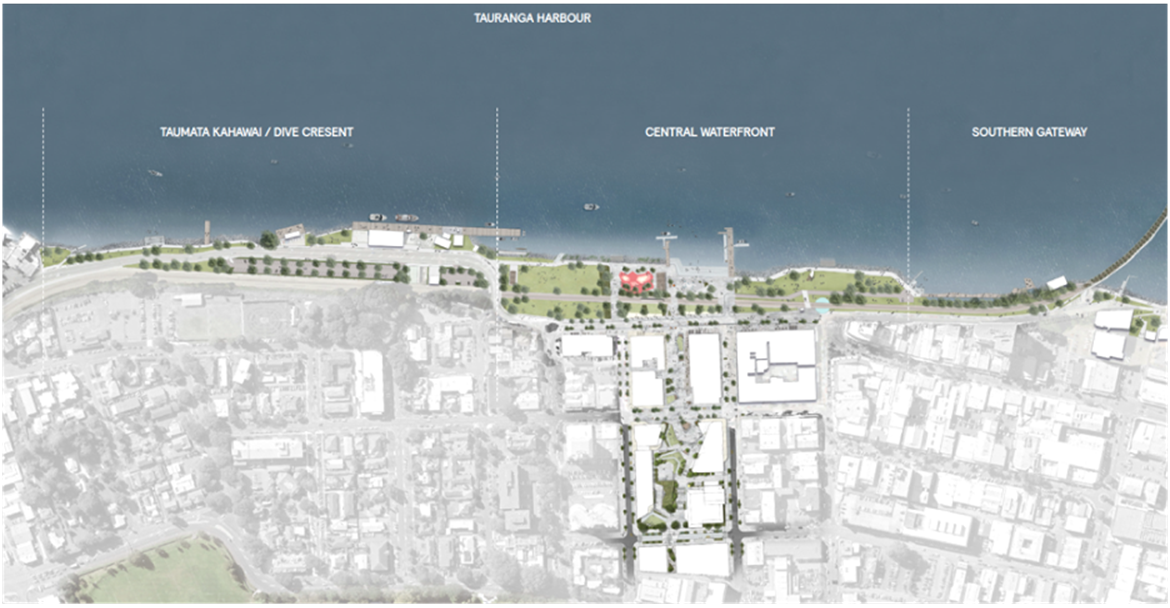
|
Ordinary Council meeting Agenda
|
5 September 2022
|
Table 2: Three
distinct areas identified within the Waterfront Plan
|
Area
|
Description
|
Purpose
|
|
1
|
Taumata Kahawai / Dive Crescent (Waterfront North)
|
Commercial and recreation area that celebrates cultural
heritage.
|
|
2
|
Central Waterfront including Masonic Park (Central
Waterfront)
|
Key attractions and recreation, linking to Te Manawataki o
Te Papa. Strong physical links to the water.
|
|
3
|
Southern Gateway / Hononga ki te Awanui (Stage 1)
|
Gateway to the city, creating waterfront linkages, access
to Memorial Park and increased recreation.
|
25. Implementation
of the Waterfront Plan will require contributions from a wide range of
partners, organisations, and individuals to ensure a ‘joined-up’
approach is achieved.
Options
Analysis
26. The
option analysis below considers the adoption of the Waterfront Plan.
Option 1 (RECOMMENDED)
27. Council
adopts the Tauranga Moana Waterfront Plan.
28. Key
risk: Insufficient funding available to achieve the concept and projects
identified within the Waterfront Plan.
|
Advantages
|
Disadvantages
|
|
· Creation
of a destination waterfront that attracts residents and visitors.
· Provision
of improved amenities that encourage all to experience and enjoy the city
centre waterfront.
· Celebration
of cultural heritage and identity.
· Provision
of fit-for-purpose event spaces.
· An
integrated plan that takes into account competing uses and demands (including
cultural, environmental and commercial) to ensure safety on our city’s
waterfront.
· Alignment
with Te Manawataki o Te Papa to ensure improved connections from our city
centre to the moana.
|
· May
cause disruption to the waterfront during construction phase.
· Cost
to ratepayers.
|
Option 2 (NOT RECOMMENDED)
29. Council
does not adopt the Tauranga Moana Waterfront Plan.
30. Key
risk: Lack of integrated planning on the waterfront leading to increased conflicting
use and demands, and potential health and safety concerns.
|
Advantages
|
Disadvantages
|
|
· No
disruption to waterfront activities.
· Less
cost to ratepayers.
|
· Lack
of alignment with Te Manawataki o Te Papa.
· Less
likely to realise the strategic outcome of ‘A waterfront city
centre’, as outlined in the City Centre Action and Investment Plan
(2022).
|
Financial
Considerations
31. The
Long-term Plan Amendment 2021-2031 (LTP) and Annual Plan 2022/23 has $84.1 million
allocated for the development of the city centre waterfront. Table 3 provides a
breakdown of projects already funded through the LTP, or the Annual Plan, for
each of the three distinct areas and for Masonic Park.
Table 3: Waterfront projects with allocated funding through
the LTP or Annual Plan.
|
Taumata Kahawai / Dive Crescent (Waterfront North)
|
Dive Crescent carpark upgrade
|
$1.45m
|
|
Cargo Shed upgrade and fit-out
|
$0.75m
|
|
Beacon Wharf upgrade
|
$2.6m
|
|
Sub-total
|
$4.8m
|
|
Central
Waterfront
|
Strand waterfront reserve
|
$7.5m
|
|
Waterfront playground
|
$12.0m
|
|
Wharf as part of Waterfront Reserve
|
$25.4m
|
|
Sub-total
|
$44.9
|
|
Masonic
Park Upgrade
|
Sub-total
|
$10.9m
|
|
Southern Gateway / Hononga ki te Awanui (Stage 1)
|
Memorial Park to City Centre pathway
|
$19.1m
|
|
Tunks Reserve and access upgrade
|
$4.4m
|
|
Sub-total
|
$23.5m
|
|
TOTAL
|
|
$84.1m
|
32. There
are many projects itemised in the attached Waterfront Plan that are currently
unbudgeted for, for example, new park pavilion with toilets, living seawall
upgrade, and new pontoons. Given that these projects are yet to be costed, it
is difficult to quantify additional costs to fully deliver all projects
contained within the Waterfront Plan.
33. Next
steps will be to develop costings and associated funding requirements for
projects that are not currently budgeted for, and to identify external sources
of funding that may be able to contribute to the overall development costs. A
further report with detail around estimated costs for these unbudgeted projects
will be reported to Council as part of the next annual planning and/or long
term planning processes.
Legal
Implications / Risks
34. The
implementation of the Waterfront Plan relies on stakeholders, key city
partners, and the community to support the transformation of the waterfront
through project execution. Ensuring we all work together is key to the ongoing
success and revitalisation of our city’s waterfront.
35. Certain
areas of our waterfront are zoned according to the Bay of Plenty Regional
Council’s Regional Coastal and Environment Plan, which promotes
sustainable management of the natural and physical resources of the Bay of
Plenty’s coastal environment. The city centre waterfront falls within the
Habour Development Zone. It will be important to continue to work closely on
waterfront projects with our Regional Council partners.
36. Legal
implications and risks for individual projects will be identified through the
detailed project planning phases, and as projects are implemented. These will
be regularly reported to the Waterfront and Public Realm Steering Group.
Consultation
/ Engagement
37. As
discussed above, the Waterfront Plan is not a new document and has been
refreshed to ensure alignment with current thinking and plans. Significant
consultation and engagement with key stakeholders was undertaken throughout the
refresh process to ensure alignment and integrated planning across
organisations. Key stakeholders included mana whenua representatives, Bay of
Plenty Regional Council, Vessel Works, Kiwi Rail, and relevant consultants,
including Landlab, Stantec and Boffa Miskell. A Design Reference Group also met
regularly to consider and review design details, and to provide feedback from
the groups that they represent.
38. Consultation
with the community has occurred for several of the waterfront projects
throughout Council’s Long-term Plan Amendment 2021-31, and annual
planning processes.
39. As
discussed above, the Cultural Advisory Group for Te Manawataki o Te Papa has
been actively involved in the Waterfront Plan development. In addition, the
Cultural Advisory Group and Otamataha Trust have been fully engaged in specific
culturally significant waterfront projects, including the Wharewaka, Dive
Crescent carpark, the Cargo Shed upgrade and Tunks Reserve.
Significance
40. The
Local Government Act 2002 requires an assessment of the significance of
matters, issues, proposals and decisions in this report against Council’s
Significance and Engagement Policy. Council acknowledges that in some instances
a matter, issue, proposal or decision may have a high degree of importance to
individuals, groups, or agencies affected by the report.
41. In
making this assessment, consideration has been given to the likely impact, and
likely consequences for:
(a) the current and future social,
economic, environmental, or cultural wellbeing of the district or region.
(b) any
persons who are likely to be particularly affected by, or interested in, the
decision.
(c) the capacity of the local authority to
perform its role, and the financial and other costs of doing so.
42. In
accordance with the considerations above, criteria and thresholds in the
policy, it is considered that the decision is of low significance. The project
team acknowledge the issue of the future of the city centre’s waterfront
is of high significance. However, the decision proposed in this report is of
low significance due to the project being a refresh of previous strategic work;
some projects having already been consulted on and funded through the LTP Amendment
and annual planning processes; and the significant engagement and input that
has occurred through past workstreams and community engagement.
43. Taking
into consideration the above assessment, that the decision is of low significance,
that considerable engagement has occurred with key stakeholders and been
incorporated through the development of the Waterfront Plan, and that further
consultation will occur on a project-by-project basis, officers are of the
opinion that no further engagement is required prior to Council making a
decision on whether or not to adopt the Waterfront Plan.
44. In
the future, it may be considered appropriate to consult on the inclusion of
currently unbudgeted items that are contained within the Waterfront Plan,
likely as part of the annual planning and/or long term planning processes.
Next
Steps
45. Ongoing
implementation of the Waterfront Plan will be coordinated and monitored by the
Civic Development and Partnerships Team, in delivery partnership with other
council teams, partners the Bay of Plenty Regional Council, and other key
stakeholders.
46. Implementation
of some projects have already commenced (for example, the Cargo Shed
refurbishment), or will commence shortly (for example, the Dive Crescent
carpark), and will be supported by the adoption of the Waterfront Plan.
47. Partnerships
with mana whenua, the community, and key stakeholders, particularly the Bay of
Plenty Regional Council, will be essential to achieving the objectives of the
Waterfront Plan. We will continue to engage with our partners and the community
on the actions as they are planned, initiated, and delivered.
48. Project
costs and associated funding requirements for unbudgeted projects contained
within the Waterfront Plan will be developed. Unbudgeted projects will feed
into the next annual planning and/or long term planning processes.
Attachments
1. 2022
08 30 Tauranga Moana Waterfront Plan - LandLab - A13883615 ⇩ 
|
Ordinary Council meeting Agenda
|
5 September 2022
|



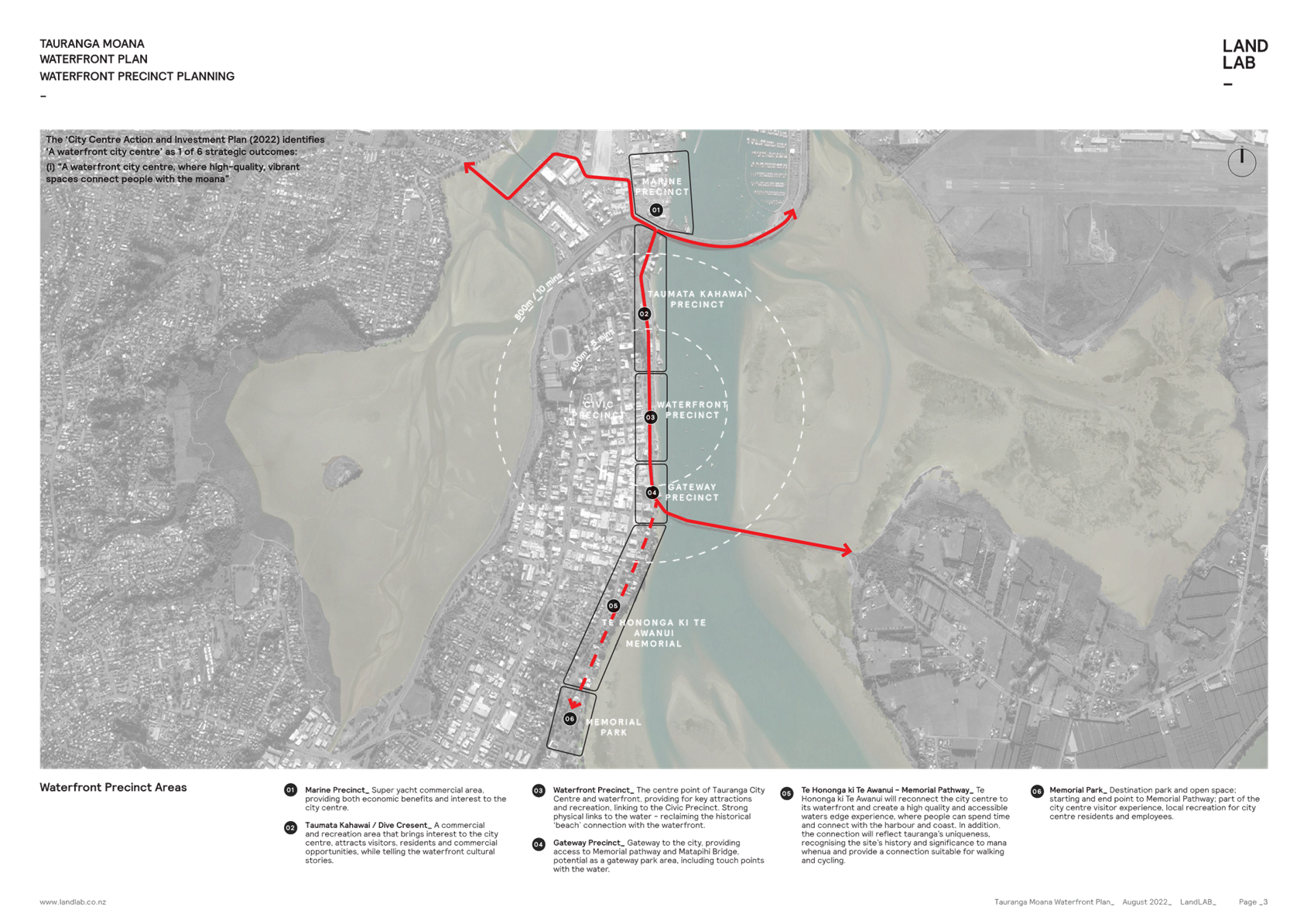
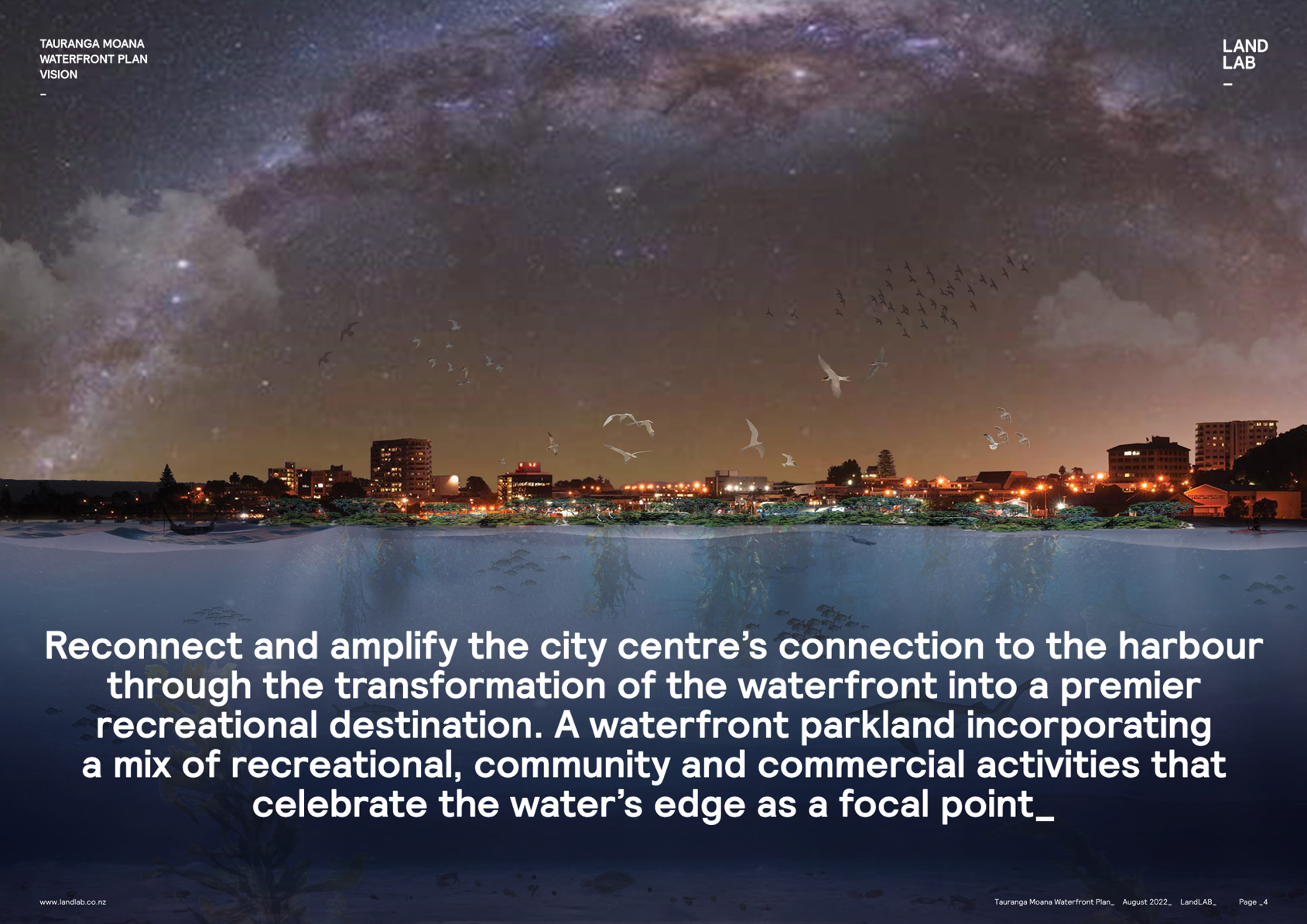

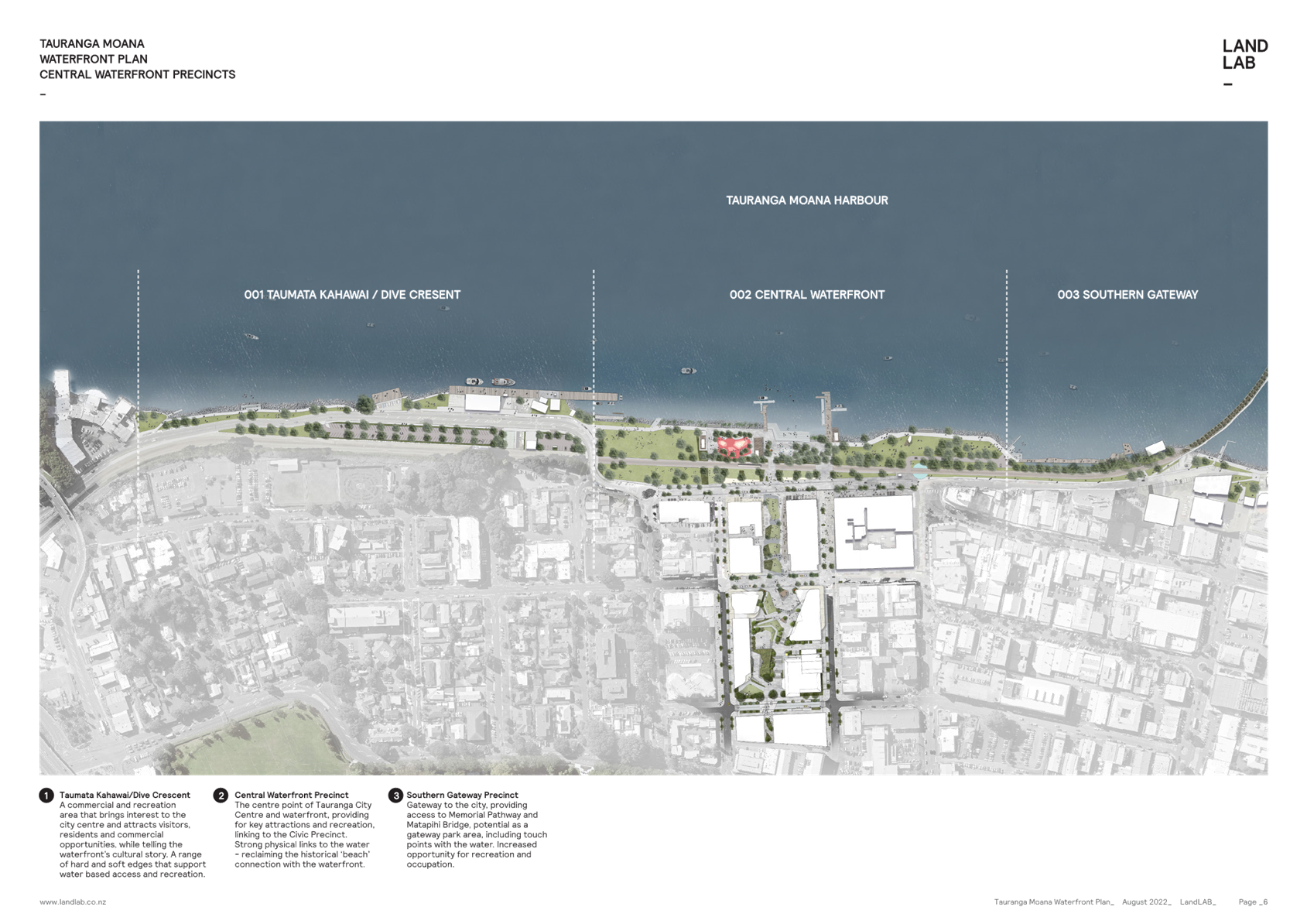

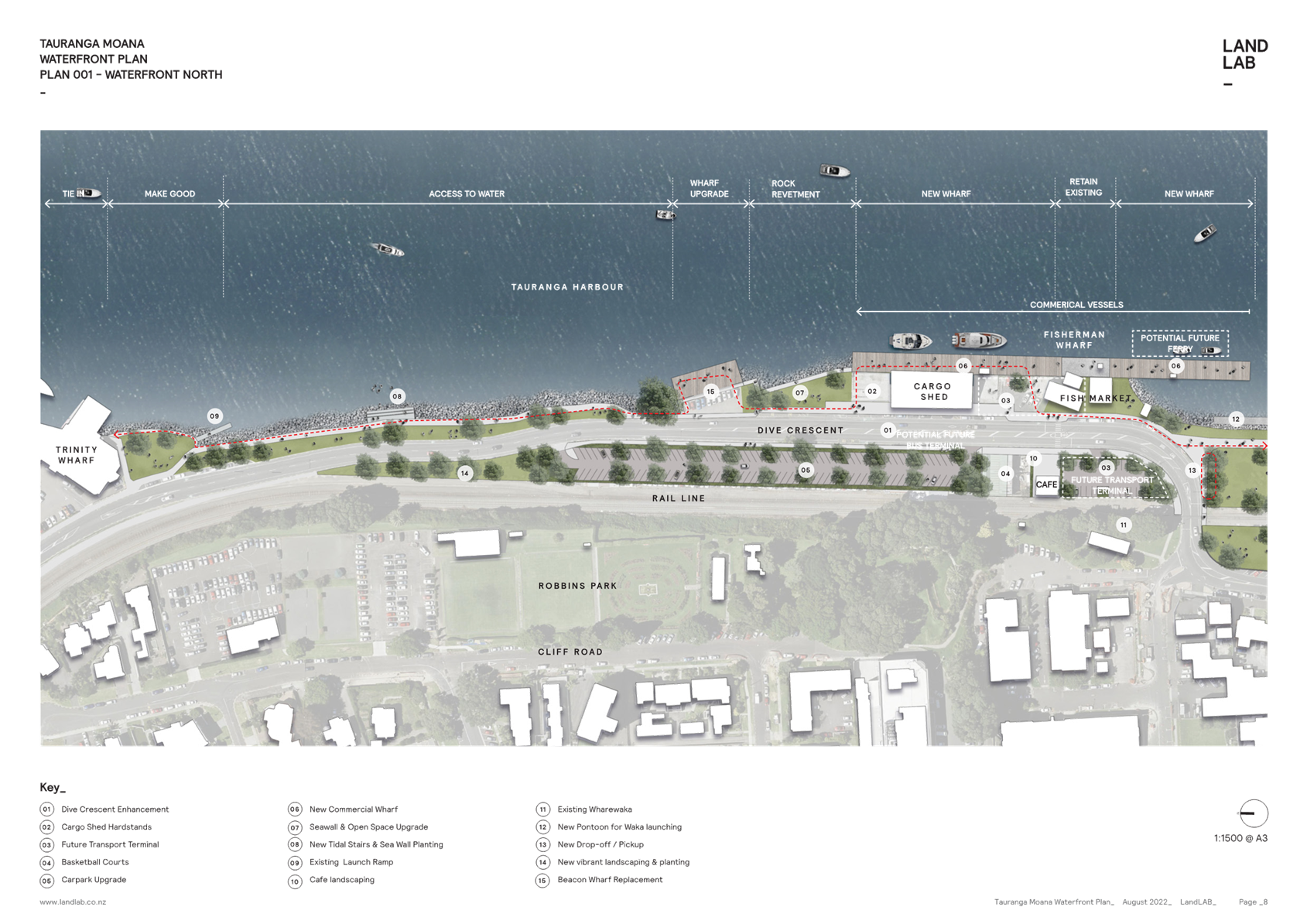
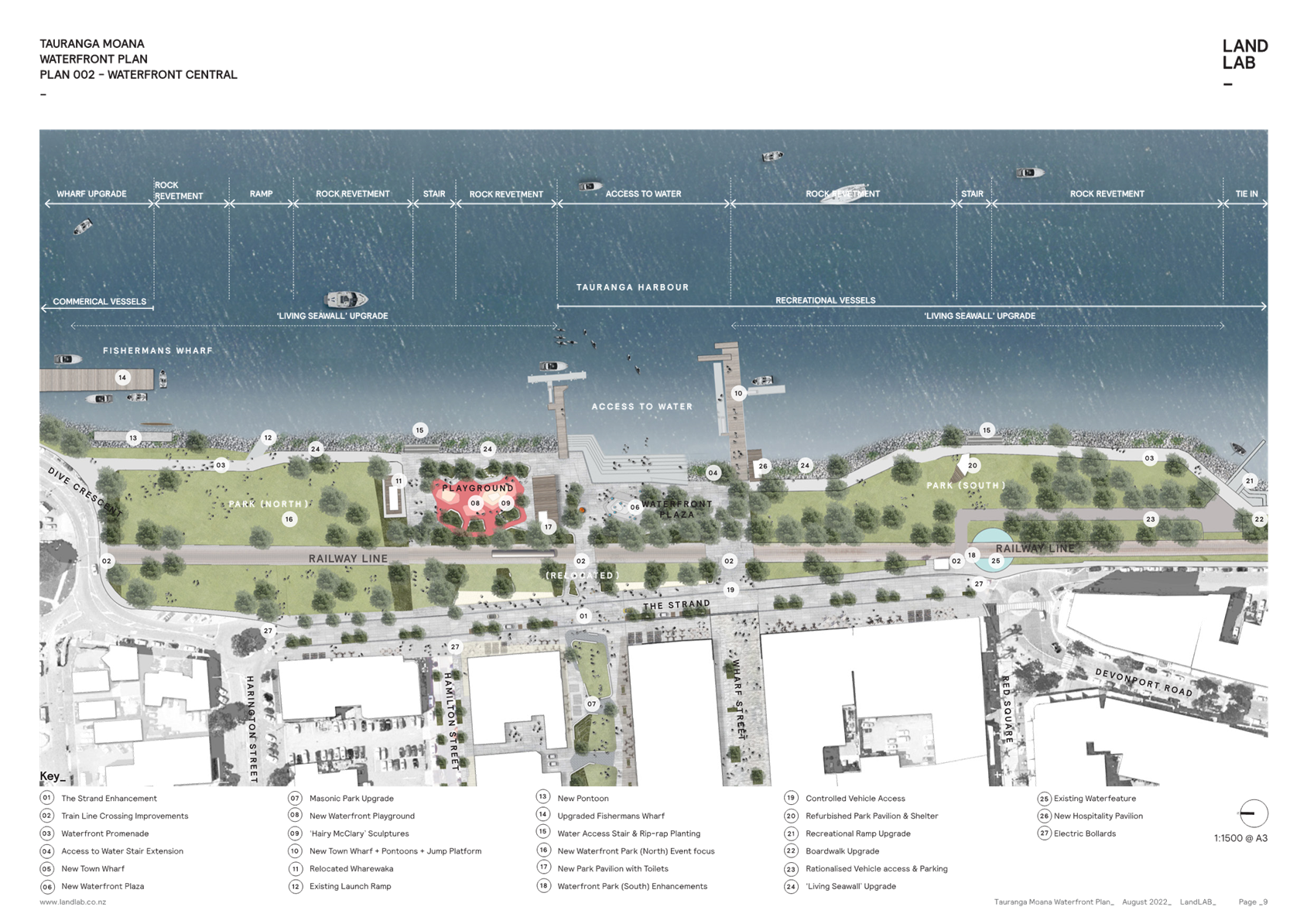
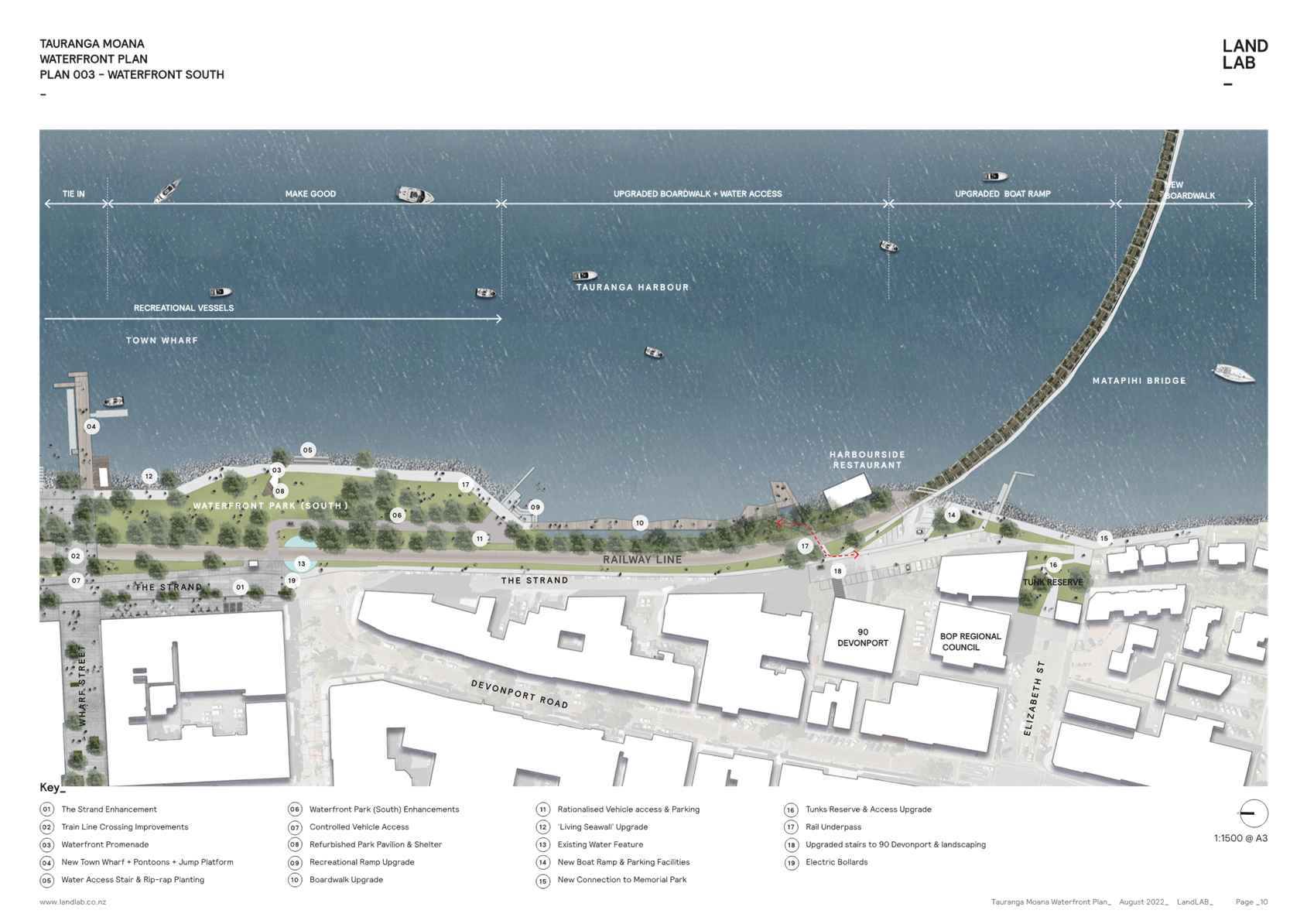

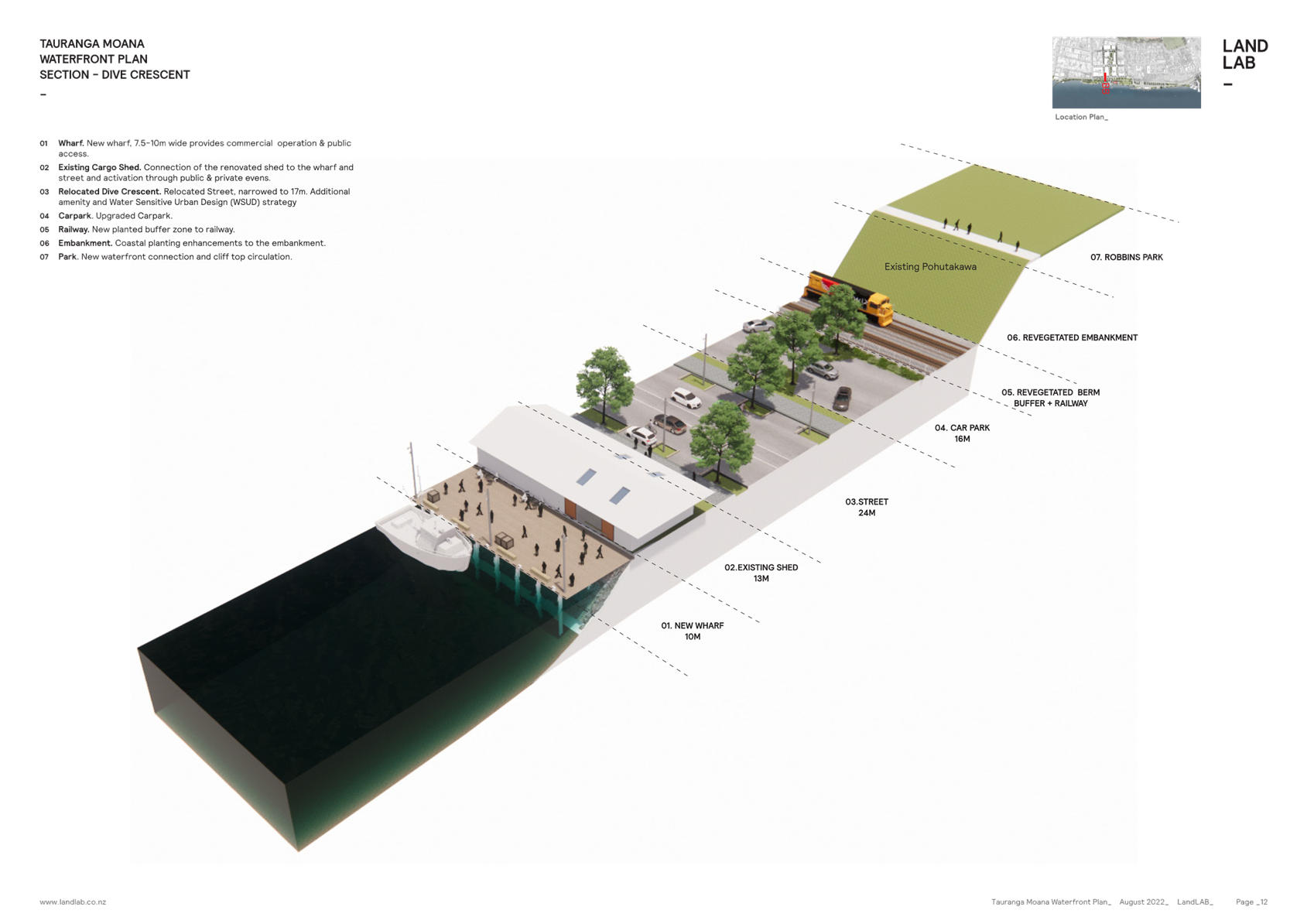
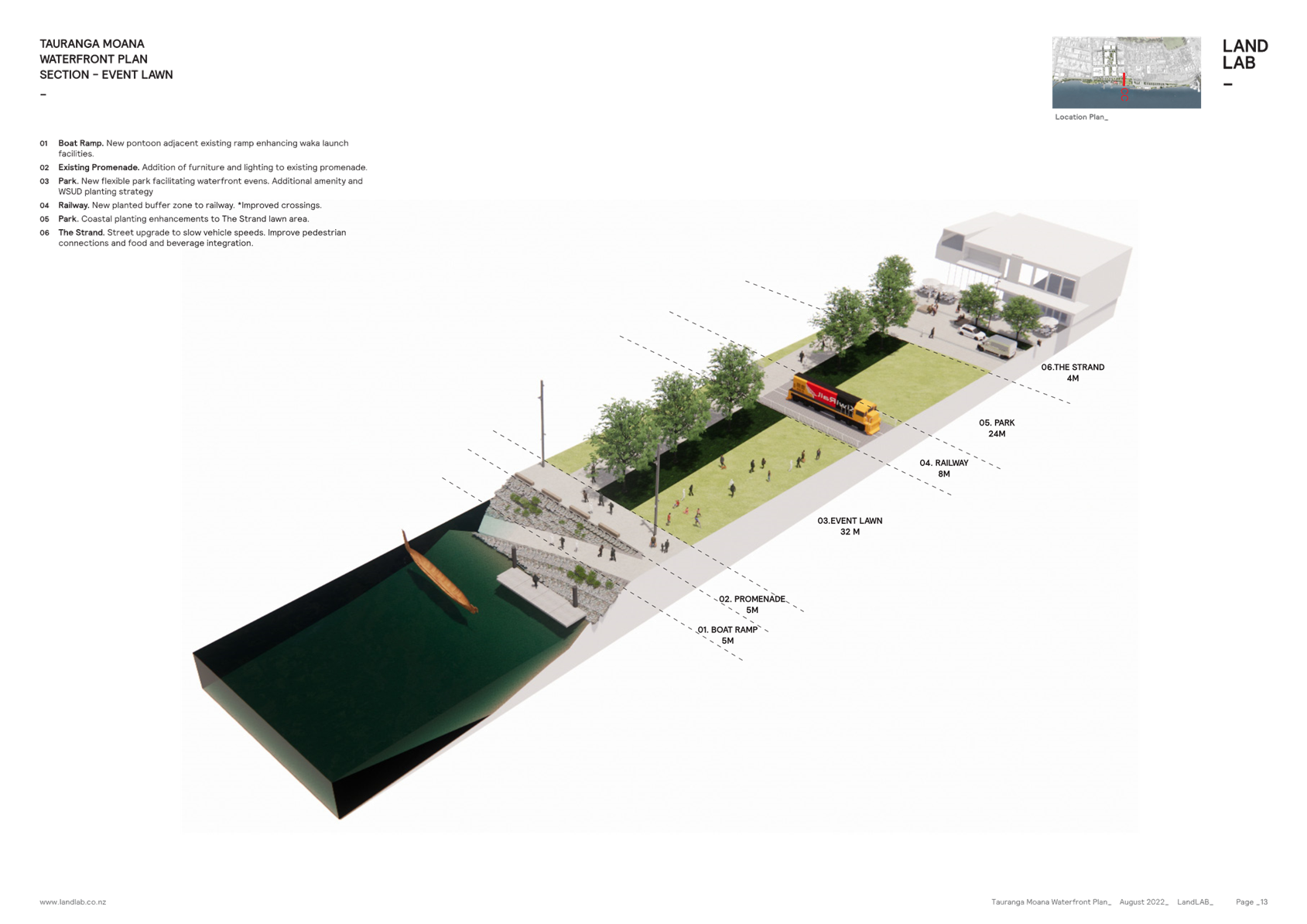

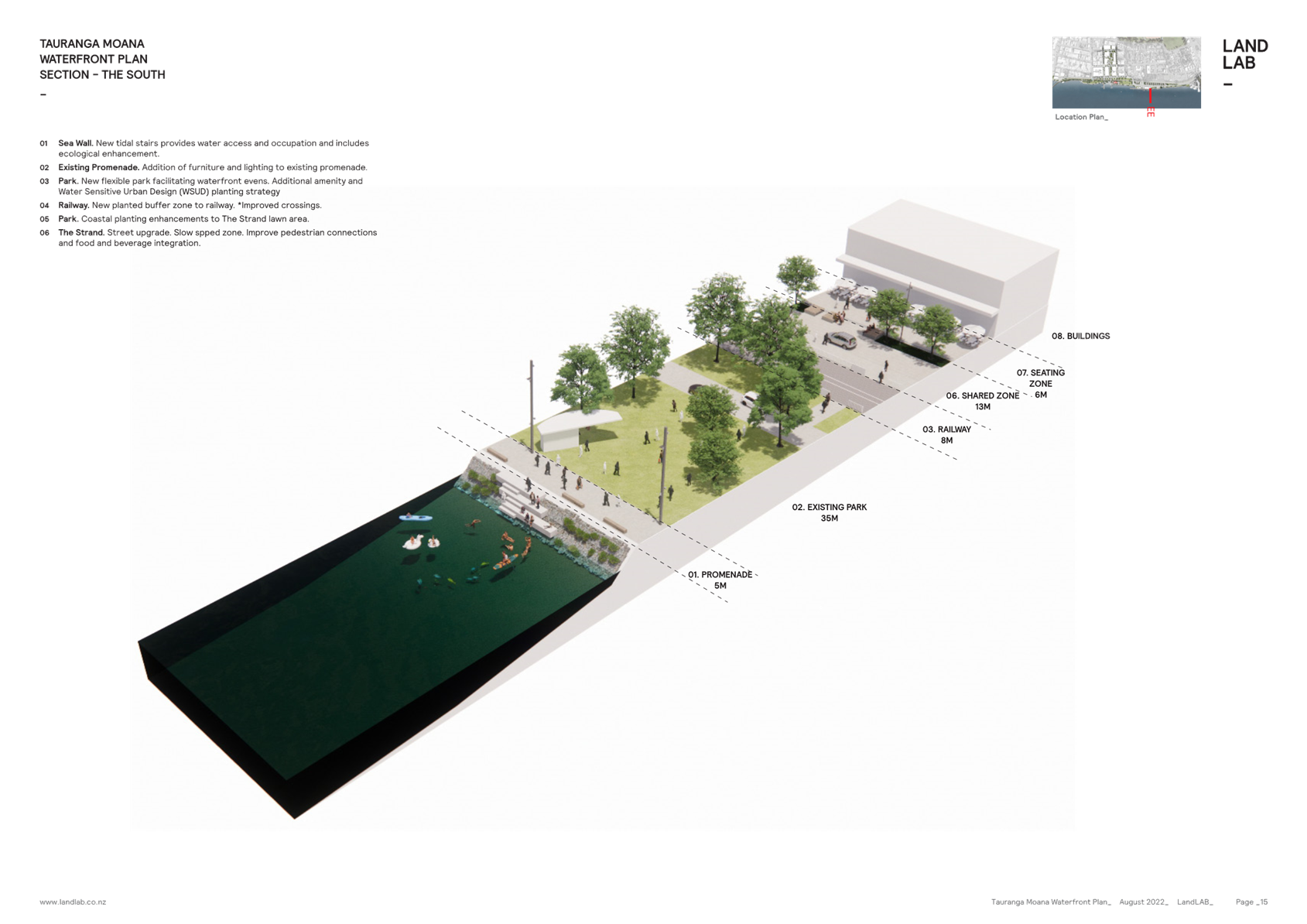
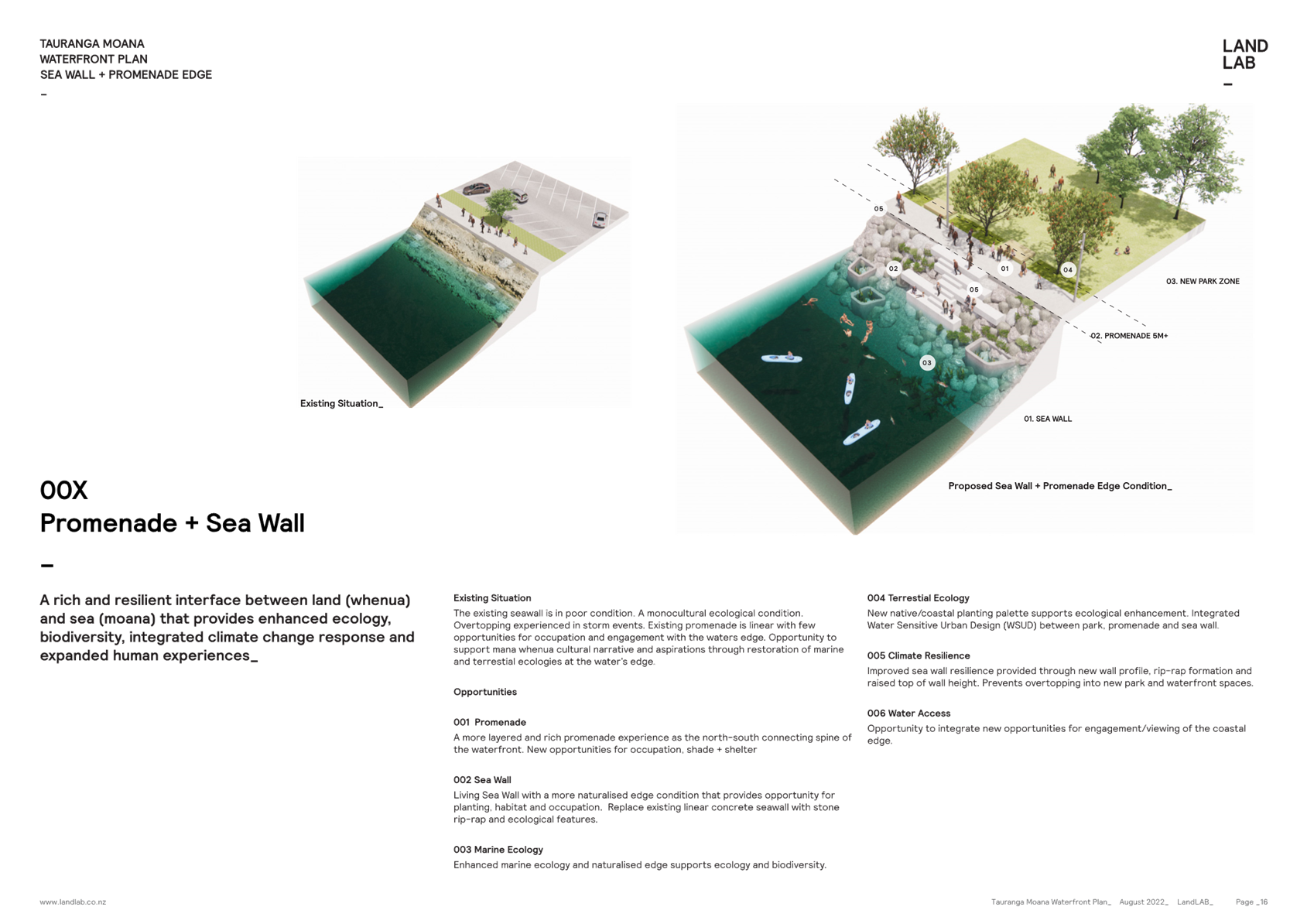
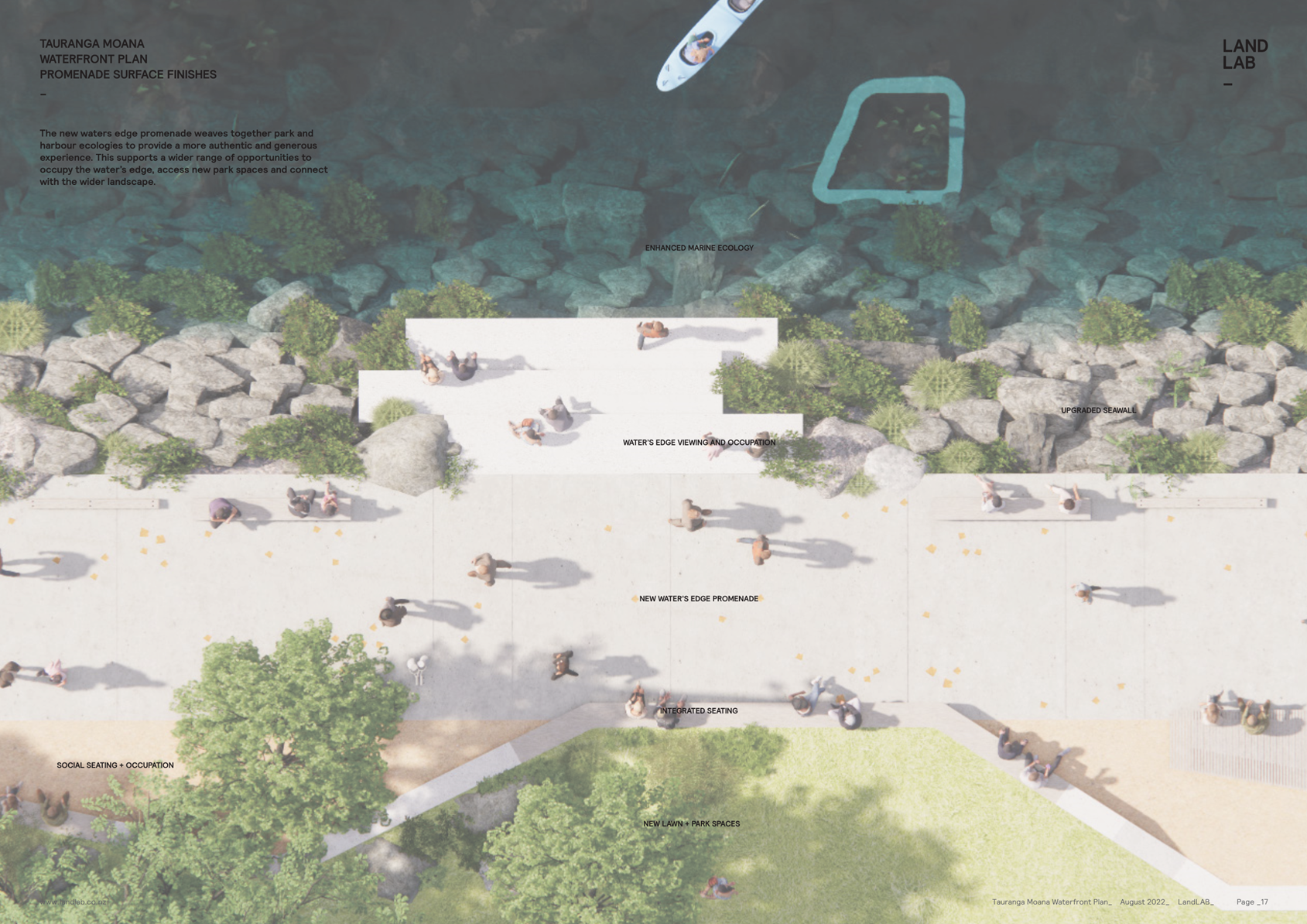
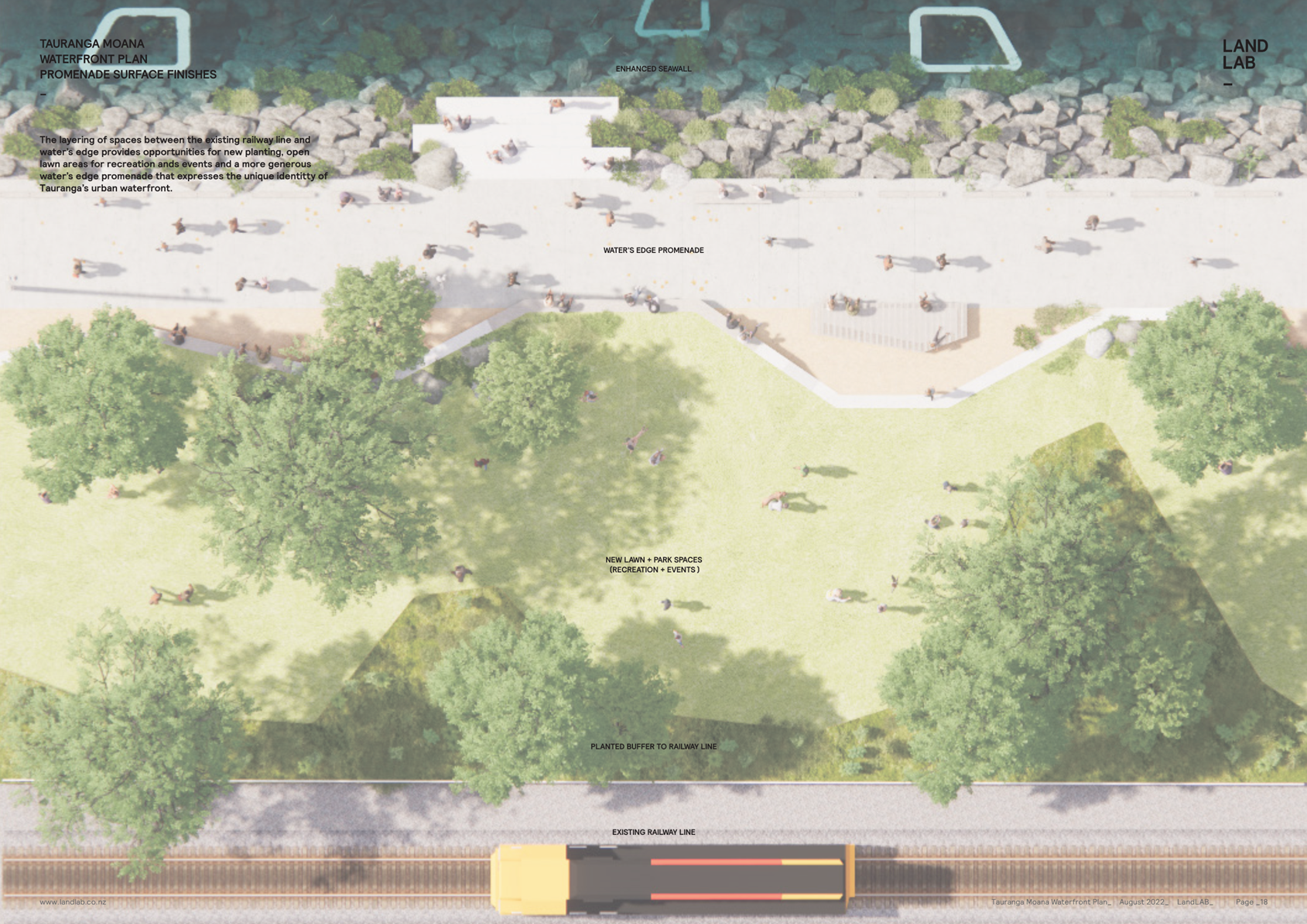
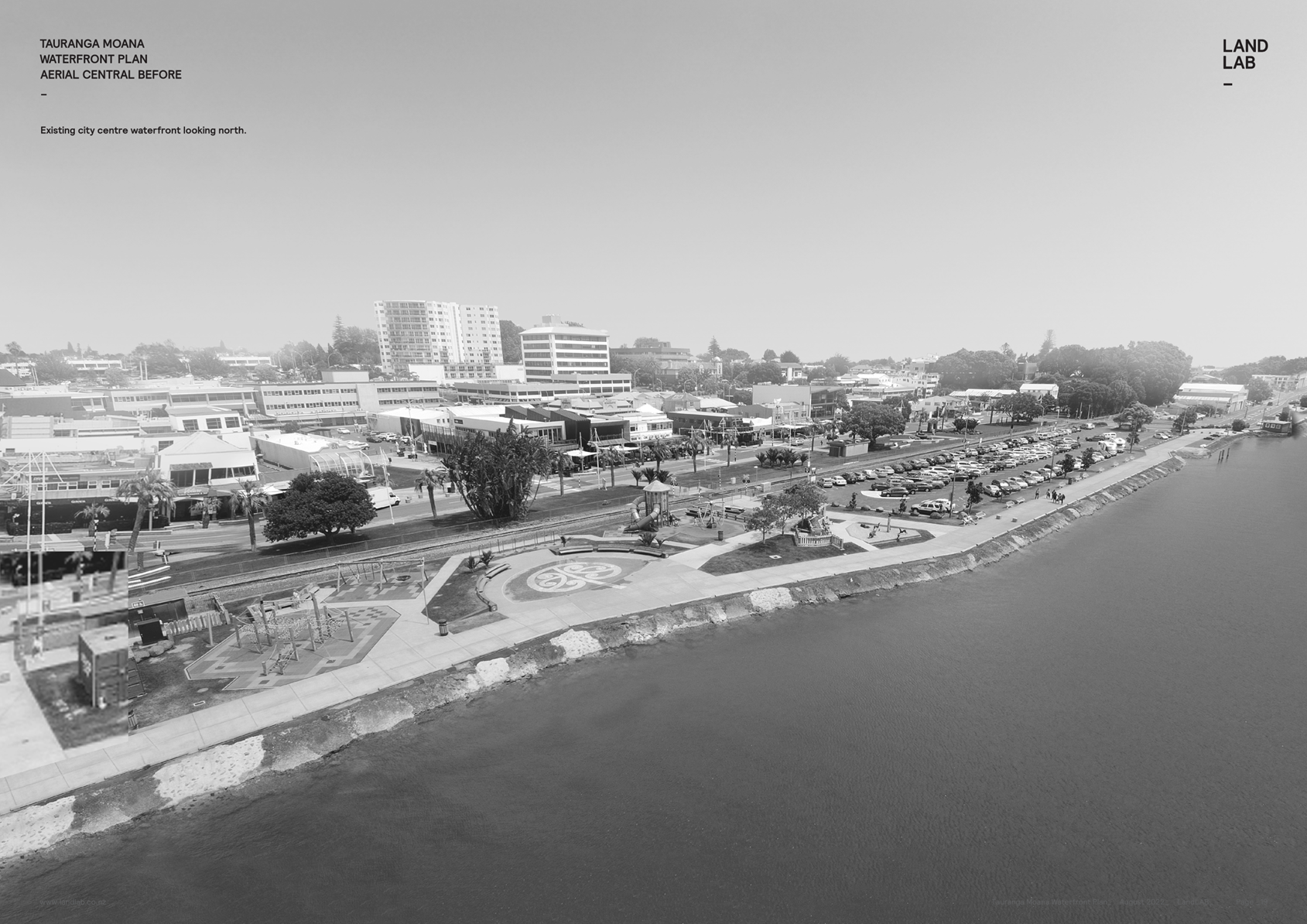
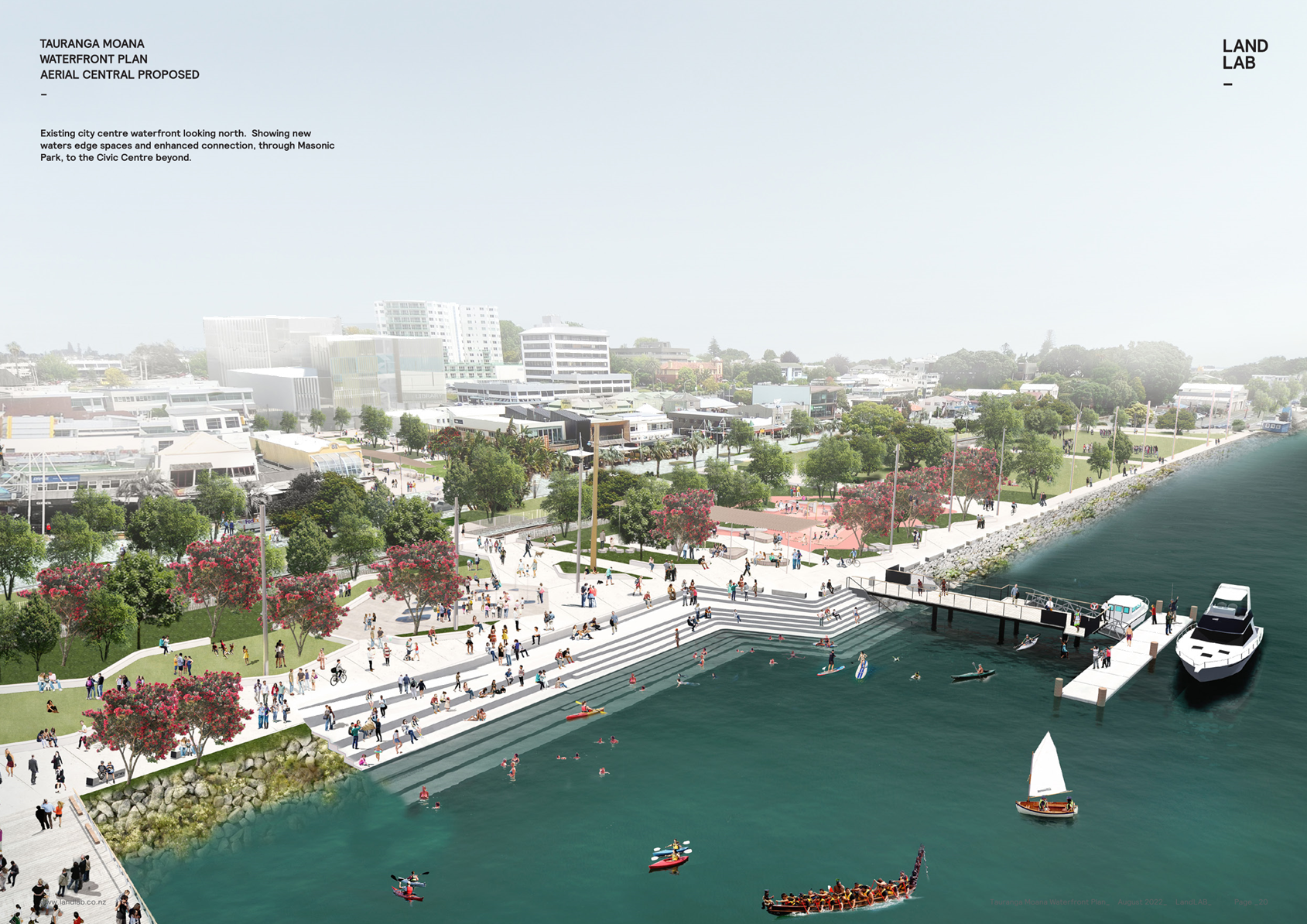
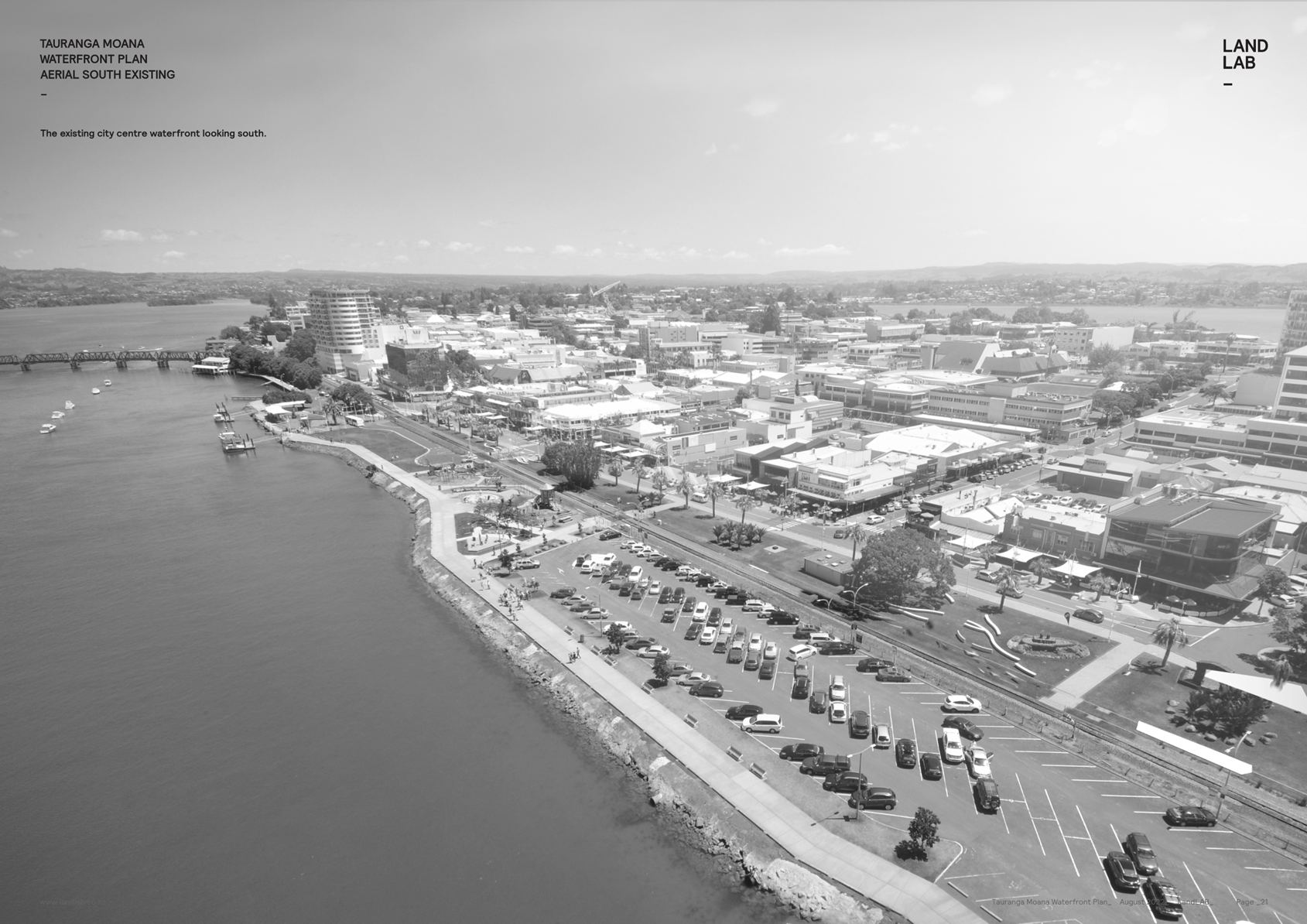
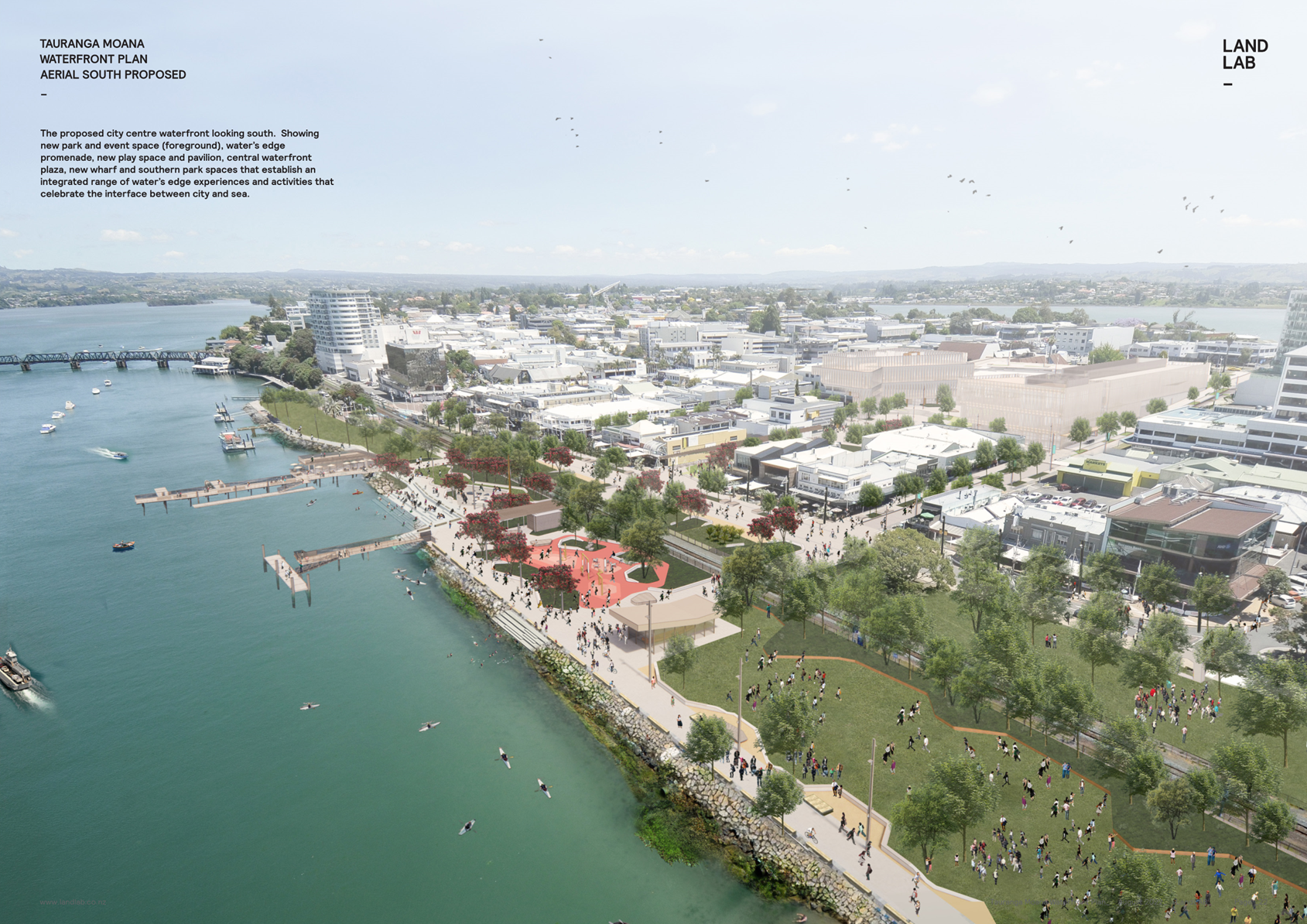
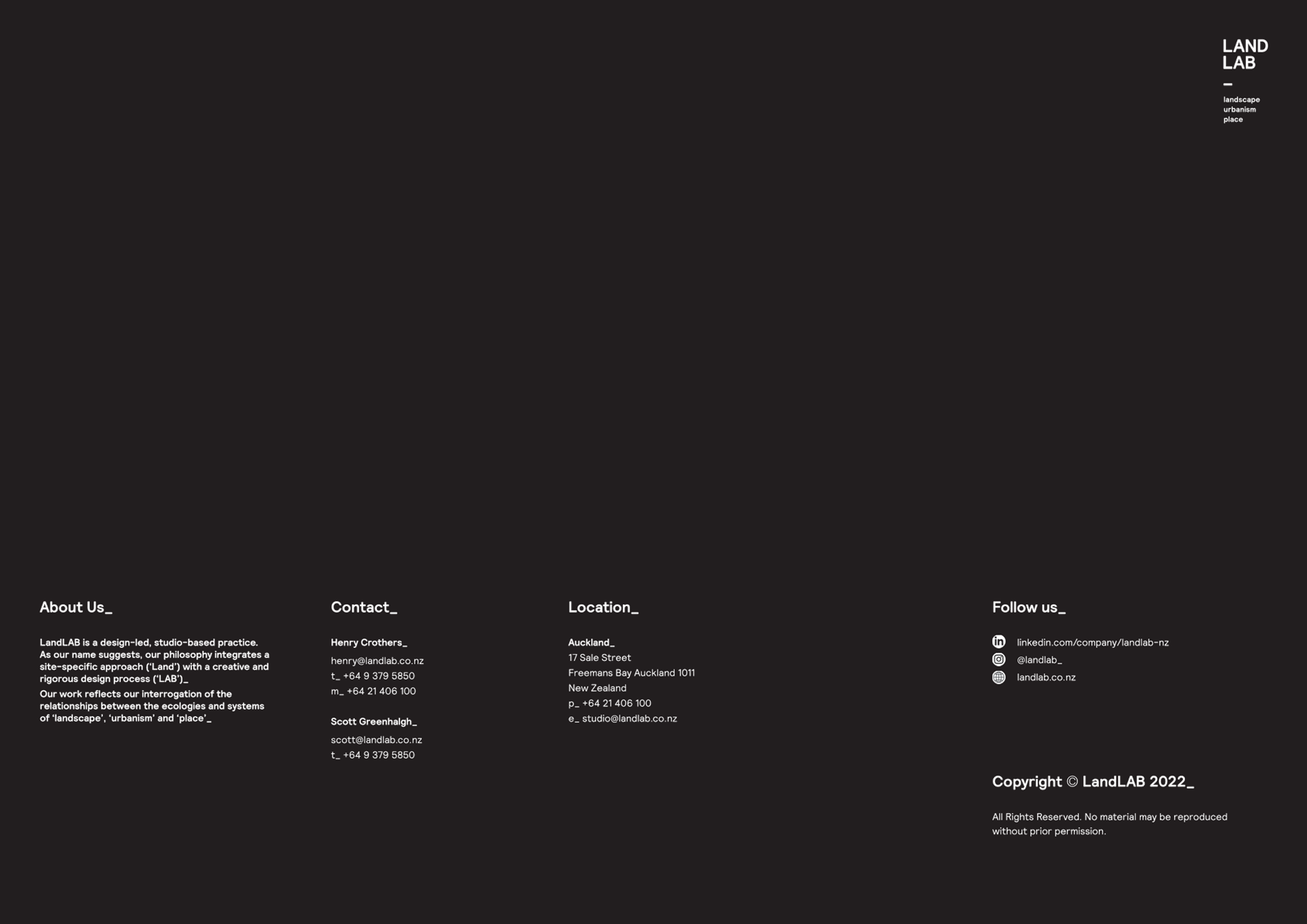
11.3 2nd
Links Avenue Trial Update
File
Number: A13612015
Author: Andy
Vuong, Programme Manager - Cycle Plan Implementation
Stuart Goodman, Team
Leader: Regulation Monitoring
Brendan Bisley,
Director of Transport
Authoriser: Nic
Johansson, General Manager: Infrastructure
Purpose
of the Report
1. The
purpose of this report is to provide an update on the data collected and
community feedback related to the 2nd Links Ave trial
|
Recommendations
That the Council:
(a) Receives
the report, 2nd Links Avenue Trial Update.
(b) Resolves
that the current trial remains in place until the Community Panel comes to
Council with their recommendations on a solution that can be implemented
which achieves agreed outcomes to ensure the street remains safe.
|
Executive
Summary
2. A
second trial of a cul-de-sac on Links Avenue has been on-going since March 28,
2022. The main purpose of this trial was to test a cul-de-sac at Concord Avenue
as this was the preferred location identified from resident feedback after the
first trial.
3. In
addition to the change in cul-de-sac location, this trial differed from the
previous 5-week trial held at the end of 2021 in the following ways:
(a) a duration of at least 4
months to provide more data on travel time impacts and to allow more opportunities
for people to change behaviours or use alternative routes.
(b) a reseal and new road layout
for the entire length of Links Avenue which removed the Northbound bus clearway
and reintroduces a 2-meter buffer zone of either cycleway, shoulder, or resident
parking from the two live traffic lanes.
(c) a reduction of the speed limit
along the entire length of Links Avenue to 30 km/h, implementation of new speed
humps, and give way priority of the Spur Ave/Links Ave intersection
(d) enforcement of unauthorised
use of the cul-de-sac with standard $150 bus lane infringements per violation.
4. The effect of changes
made during this trial have produced a larger decrease in traffic volume on
Links Avenue and travel times on the two routes monitored have improved (AM
peak) or negligibly increased (PM peak) compared to data collected during Trial
1.
5. Much of that effect can
be tied to the strong enforcement of the cul-de-sac via $150 bus lane
infringements. This substantially reduced unauthorised use of the cul-de-sac
but caused a high level of negative feedback to the practice from the public.
6. Other community feedback
from this trial was largely similar to the first trial:
(a) safety for people walking or
biking on Links Avenue had improved
(b) Links Avenue was a more
pleasant street environment from the reduced traffic volume
(c) The lack of through access on
Links Avenue was very inconvenient – particularly for directly affected
residents wanting to access Bayfair shopping centre or points east.
Background
7. Council was approached by
concerned residents about the safety of the layout on Links Avenue since a bus
lane was installed approximately 3 years ago and the impact on the proximity of
the traffic lanes to the shared path.
8. The bus lane was
installed to improve reliability for the bus services as they were
significantly impacted by the increasing traffic volumes using Links Avenue
after the B2B project started construction.
9. Traffic volumes have
tripled on Links Avenue in the three years and have gone from 2-2500 vehicles
per day (vpd) to 7-7,500vpd in Oct 2021. Volumes had increased by 2,000vpd in
the 12 months up to October 2021, so if that growth rate continued the
anticipated volumes could be 9,000vpd by the end of 2022.
10. An initial trial of a bus lane
cul-de-sac was conducted for 5 weeks at the end of 2021. The cul-de-sac
was placed at the Links Avenue/Ascot Ave (North) intersection. Due to the
short time period of the trial, no enforcement for unauthorised use of the bus
lanes took place.
11. The trial resulted in a reduction of
traffic volume on Links Avenue of between 45% - 60%. A survey was sent
out to residents with a improvement to safety for those biking and a more
pleasant street environment noted.
12. There was strong feedback about the
lack of access of residents to Golf Rd., and the preference should a cul-de-sac
need to remain was for the location be moved to the Concord Ave end of the
street.
cul-de-sac SETUP and
exemptions
13. The
temporary cul-de-sac on Links Avenue is comprised of two bus lanes from Solway
Place to Concord Avenue. All legally required signage and pavement
markings were installed, and additional signs were added on every approach to
Links Avenue to provide drivers additional warning of the new restrictions.
14. Per
legislation, bus lanes may be used by buses, bicycles, and motorbikes. All
other vehicles, if traveling more than 50 meters in a bus lane, are
unauthorised and subject to a $150 fine per violation.
15. For
this trial, the following additional categories of vehicles were added to the
authorised list to use the bus lanes:
(a) emergency service vehicles
(b) marked delivery vehicles
(making deliveries to directly affected residents),
(c) waste collection vehicles
(d) marked taxi vehicles
16. Individual
exemptions were also considered based on the following main criteria:
(a) providing medical care/support
services to directly affected residents
(b) needing emergency access (in
an unmarked vehicle)
(c) needing to perform physical
roadwork or maintenance
(d) residing in a household within
the cul-de-sac
(e) providing passenger transport
or delivery services (i.e Uber, UberEats, etc) to directly affected residents
17. As of July 30, approximately 250
exemptions have been granted. The top 3 categories for exemption are
cul-de-sac resident, providing medical/support services to residents, and
physical work in the area.
cul-de-sac enforcement
analysis
18. A two-week grace period was provided
at the beginning of the trial for unauthorised use of the cul-de-sac.
Approximately 8500 warnings were sent to drivers during this period.
19. Starting in Week 3, a $150 bus lane
infringement was issued for unauthorised use of the cul-de-sac. As of
July 31, a total of 17,222 infringements had been issued. The status of
those infringements is:
(a) Paid or on a payment plan
– 5695 (33%)
(b) Waived – 4389 (25%)
(c) In collections – 1192
(7%)
(d) Current / awaiting payment
– 5946 (34%)
20. Other key findings from analysing
infringement data include:
(a) infringements are down by
about 70% from the initial start of the infringement period. This amount
(~120/day) likely represents a steady-state amount of non-compliance.
(b) unauthorised use of the bus
lanes occurred most between Tuesday – Thursday, which Sunday being the
day with the least infringements issued.
(c) Infringements tend to pick up
in volume around noon, peaking between the hours of 4-6pm.
21. Detailed charts and data on infringements
can be found on slides 15-18 of the attached presentation.
Traffic VOLUme/ vehicle
counts analysis
22. Traffic counts were conducted during
two separate weeks during the trial.
(a) Week 1 – Links Ave and
Concord Ave
(b) Week 18 – Links Ave, Concord
Ave, Oceanbeach Rd, and Golf Rd.
23. A greater reduction in traffic
volume was observed during this trial as compared to the first trial.
Covid-19 and general seasonality may have had a small effect on traffic volume,
but it’s more likely strong enforcement and general awareness of the
restrictions was the main cause for the additional volume reductions.
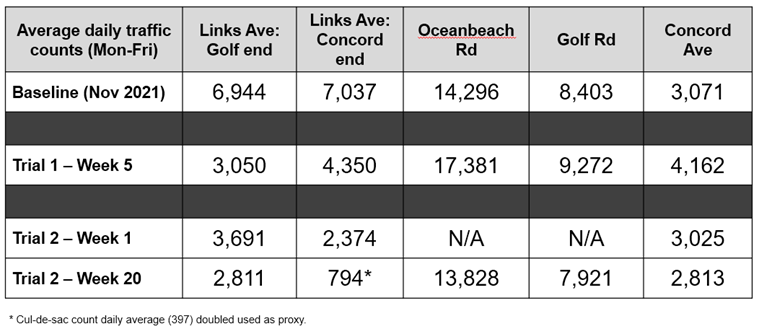
24. Use of the cul-de-sac has reduced by
80% since the beginning of the trial. 65% of those reductions occurred
within the first 5 weeks of the trial. Typical volumes in the cul-de-sac
are now between 325 – 375 per day.
travel time analysis
25. The same method for monitoring
travel time impacts during Trial 1 was used for this trial:
(a) Two route segments monitored
24/7 using anonymous bluetooth tracking technology
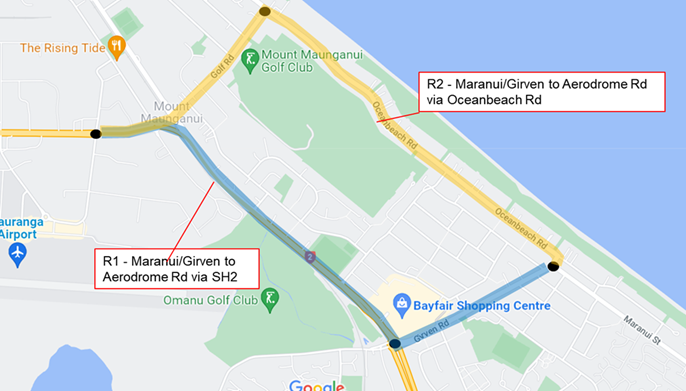
(b) Data collected a week prior to
the first trial (Nov 2021) was used to establish a baseline, and travel times
in both directions of each route were collected each day.
(c) Within each AM and PM commute
time window, the peak 60 minutes with the longest commute times were aggregated
daily and averaged by week to identify the largest time delays and reduce
uncommon or non-recurring events such as an accident.
26. The PM commute (City/Mount towards
Papamoa) continues to be more impacted from the cul-de-sac then the AM commute.
(a) Route R2 travel times averaged
an increase of 2.3 minutes over the baseline. This was a smaller increase
in travel times by 0.8 minutes compared to trial 1.
(b) Route R1 travel times averaged
an increase of 0.7 minutes over the baseline. This was a smaller increase
in travel times by 1.6 minutes compared to trial 1.
(c) The two-week closure of
Grenada St. caused travel times to spike on both routes. If those were
removed from the average, the travel time impacts would be even less.
27. The AM commute saw improvements to
travel times when compared to trial 1 and the baseline measurements
(a) Route R2 travel times averaged
a decrease of 3.8 minutes over the baseline.
(b) Route R1 travel times averaged
a decrease of 4.1 minutes over the baseline.
(c) Trial 1 saw negligible changes
to travel times on both routes
28. Detailed charts and data on travel
times of each route can be found on slides 9-13 of the attached presentation.
COMMUNIty Feedback
29. Prior
to people receiving infringements, feedback on the trial was less frequent and
negative than during trial 1. The main themes of the feedback were:
(a) approval of the new layout
(removal of the bus lane) and re-introduction of shoulder/buffer spaces from
the live traffic lanes which improved the safety of those walking and biking.
(b) frustration from the
restrictions imposed by the cul-de-sac at Concord Ave. This was
particularly the case for directly affected residents trying to access Bayfair
or destinations further east
(c) concerns from Arataki football
club and dog club members about delays in getting to and from training and
games
(d) frustrations from residents
who were witnessing unauthorised use of the cul-de-sac and wanting
infringements to begin immediately
30. Once infringements started to be
issued, feedback about the trial generally became more negative and grew as
more people received fines and media coverage increased. This culminated
in a petition to waive all fines and end the trial that was submitted to
Council in May 2022.
31. Council addressed the petition in a
June 2022 and resolved to create an independent community led design panel to
come up with potential solutions for Links Avenue. The panel is currently being
led by an external facilitator with little to no council involvement (unless
requested by the panel)
32. A community survey was released
during the month of July to obtain overall feedback on the trial and to help
inform the community panel on things to consider as they work through
developing options.
33. There were 677 responses received
with 51% self-identifying as living outside of Arataki or Tauranga, and 34%
identifying as a directly affected resident (Links Avenue or adjoining street).
34. Full details of the survey feedback
can be found on slides 20-30 of the attached presentation, but highlights
include:
(a) Improved safety for people
walking and biking was observed by all respondent groups. For those living on
Links Avenue, these figures were 50% and 78% respectively.
(b) All respondent groups found it
harder to drive on Links Avenue. For groups outside of directly affected
residents, this was almost unanimous with responses over 90%.
(c) More people on Links Avenue
found their street a more pleasant place to live, while the inverse occurred on
streets adjoining Links Avenue. Respondents on Oceanbeach Rd, Concord
Ave, or Golf Rd found by a wide margin their street environment less pleasant.
(d) 70% of all respondent groups
believed the speed limit should be less than 50km/hr on Links Avenue, with an
almost even split between 40km/hr vs 30 km/hr.
(e) An overwhelming majority of
respondents believed traffic volumes should be managed or restricted on Links
Ave at some point during the day, with the clear preference around the AM and
PM peak school travel times.
(f) Overall, the preference
from respondents was to not have a cul-de-sac remain on Links Avenue, although
for directly affected residents (particularly on Links Avenue) the preference
was more split.
Next Steps
35. Staff
will continue to operate the trial and support the community design panel (as
requested) until an outcome on the future of Links Avenue is considered.
Attachments
1. 2nd
Links Ave trial update presentation - A13863287 ⇩ 
|
Ordinary Council meeting Agenda
|
5 September 2022
|
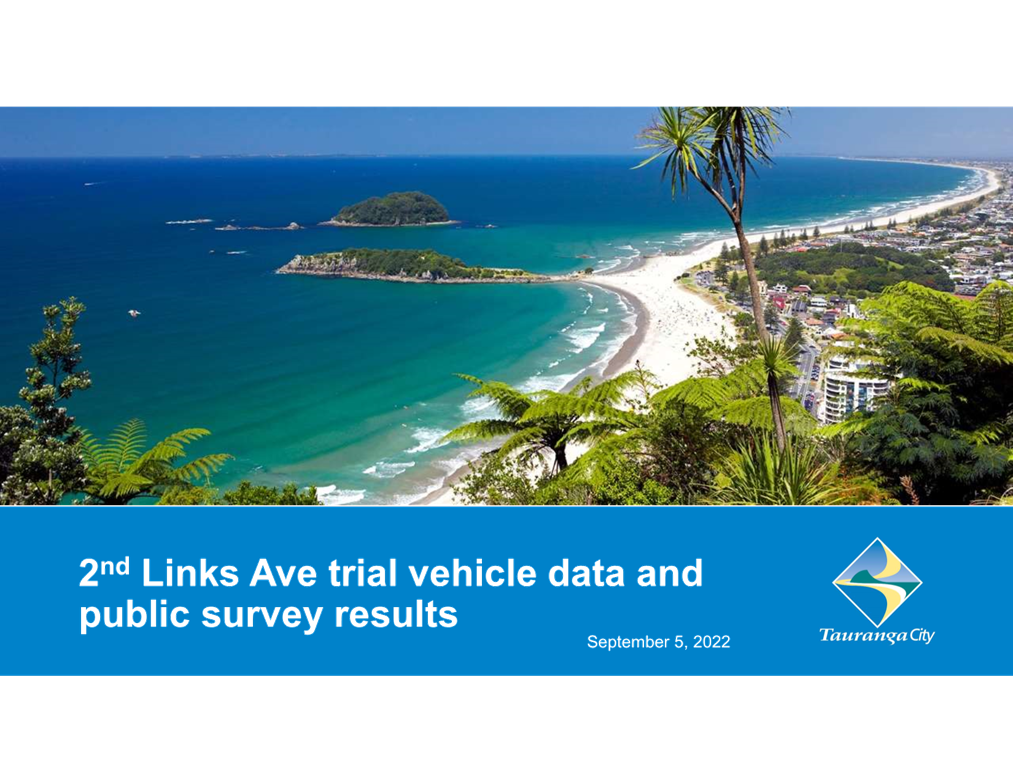

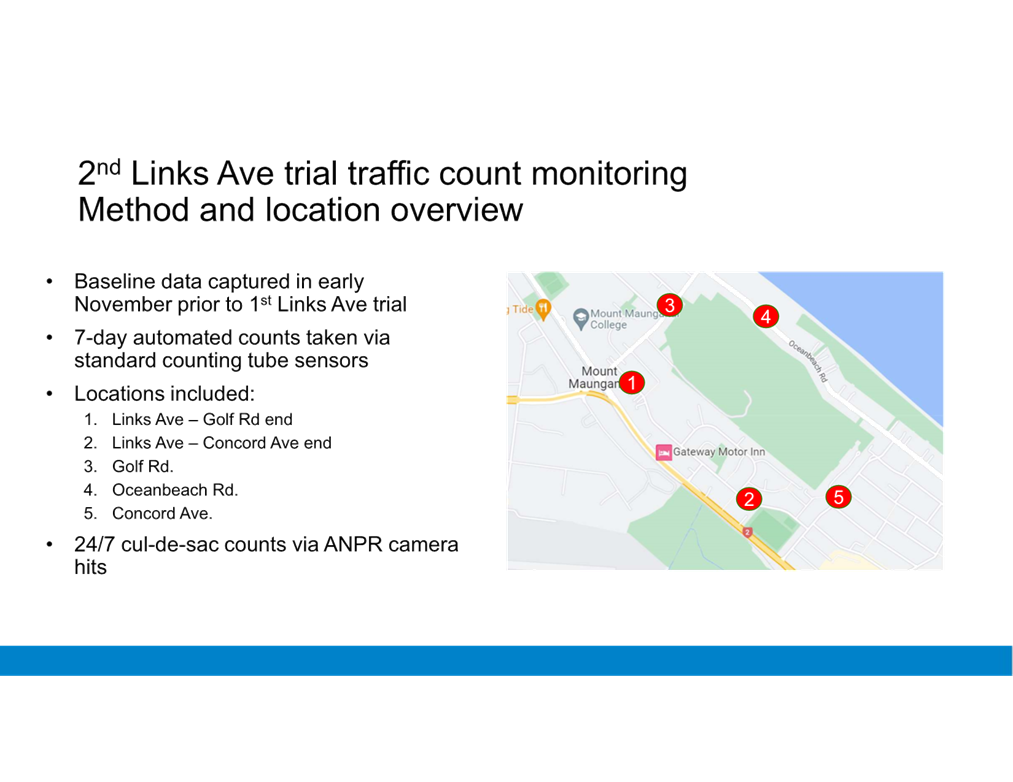
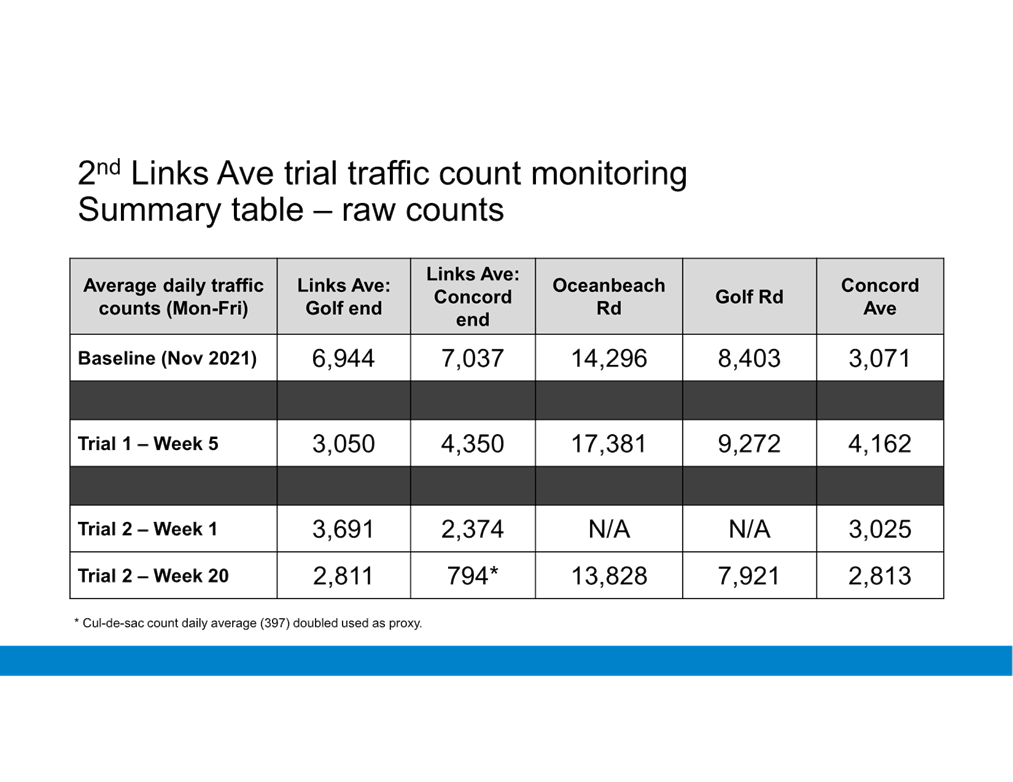
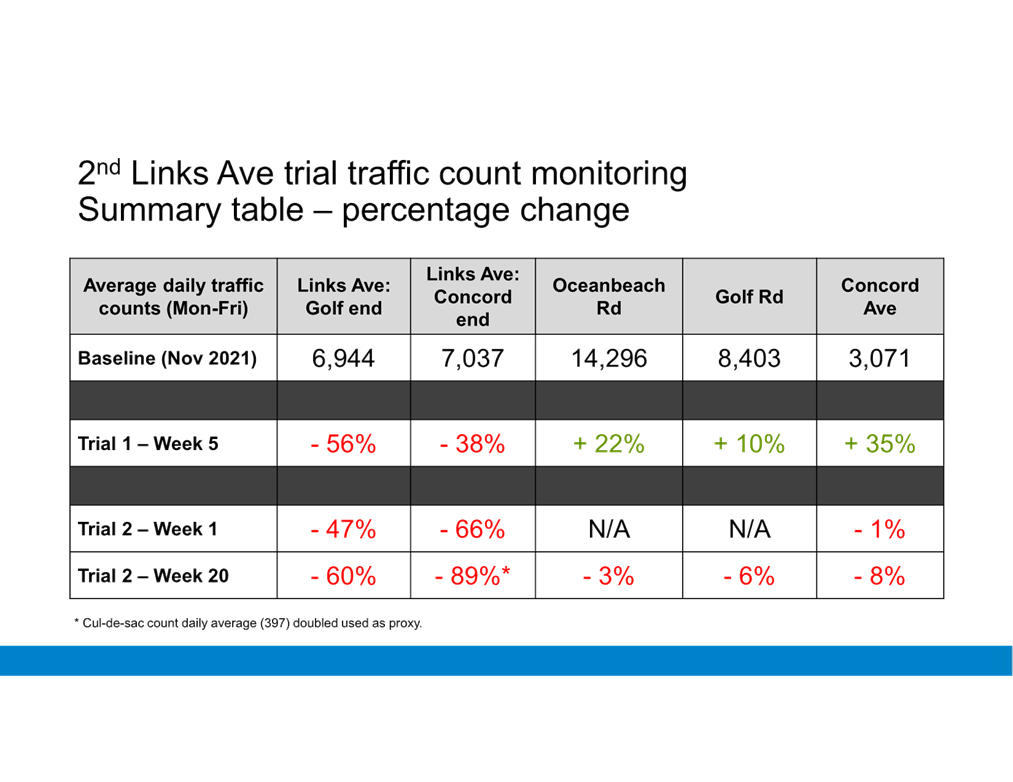
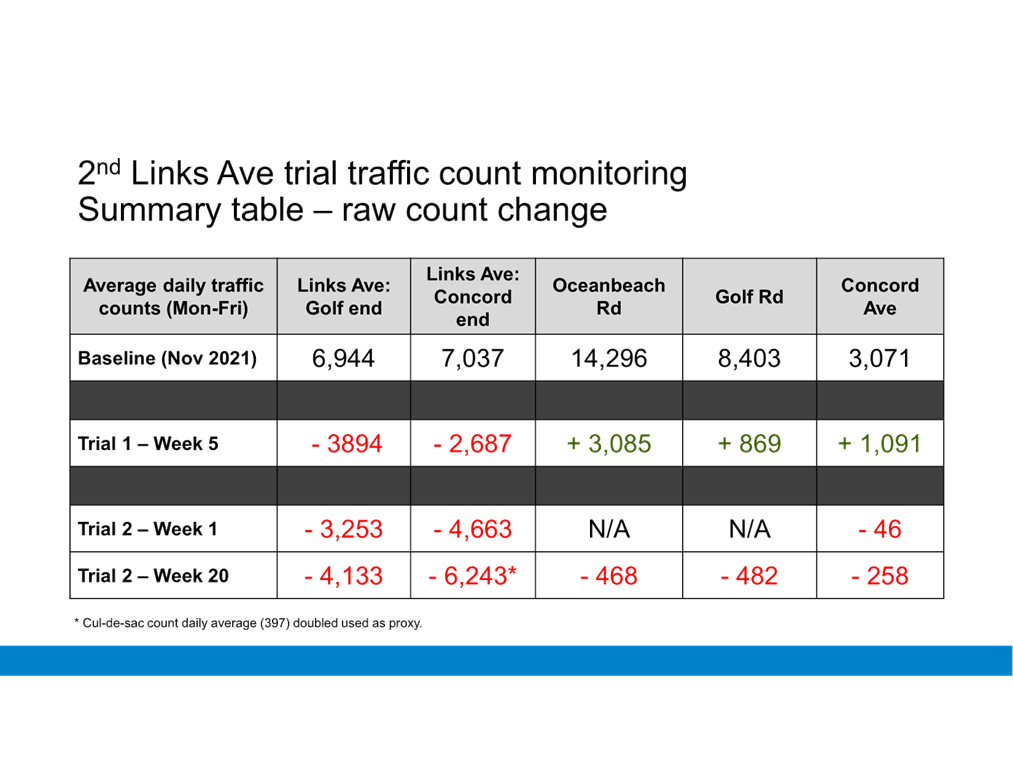
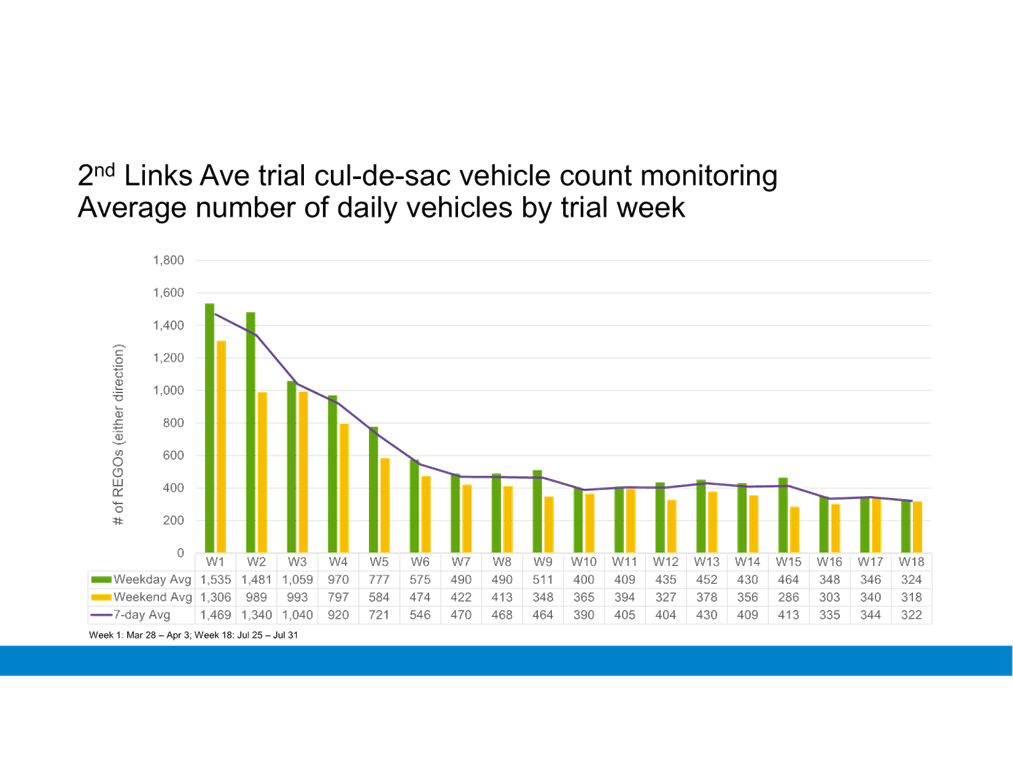
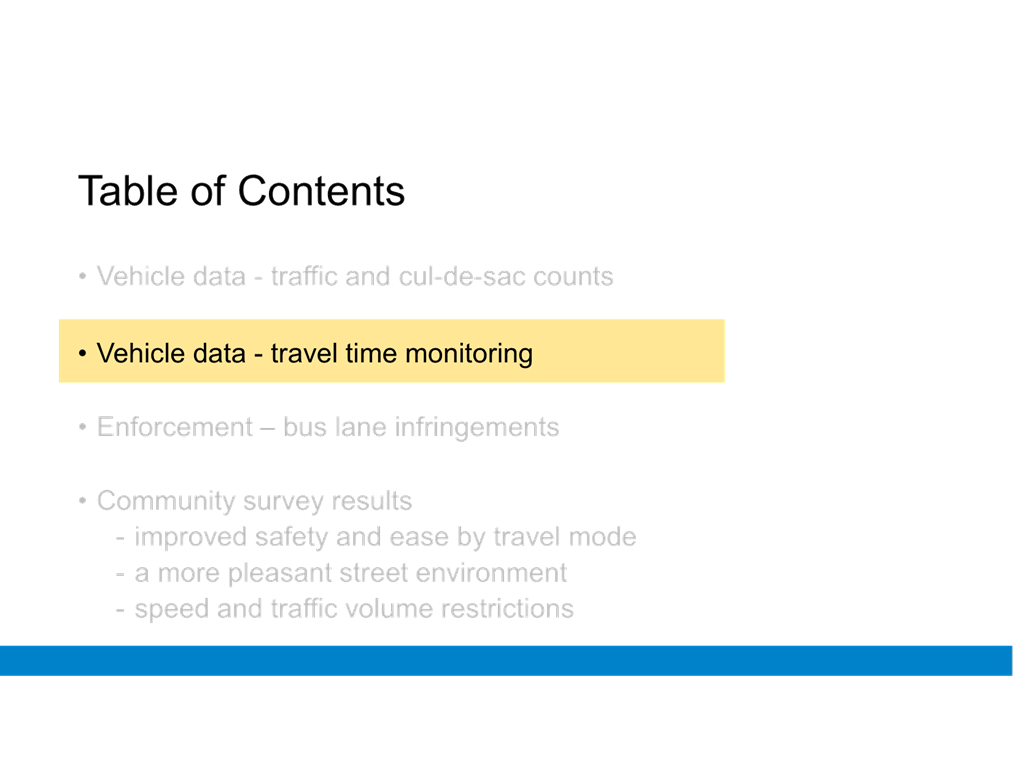
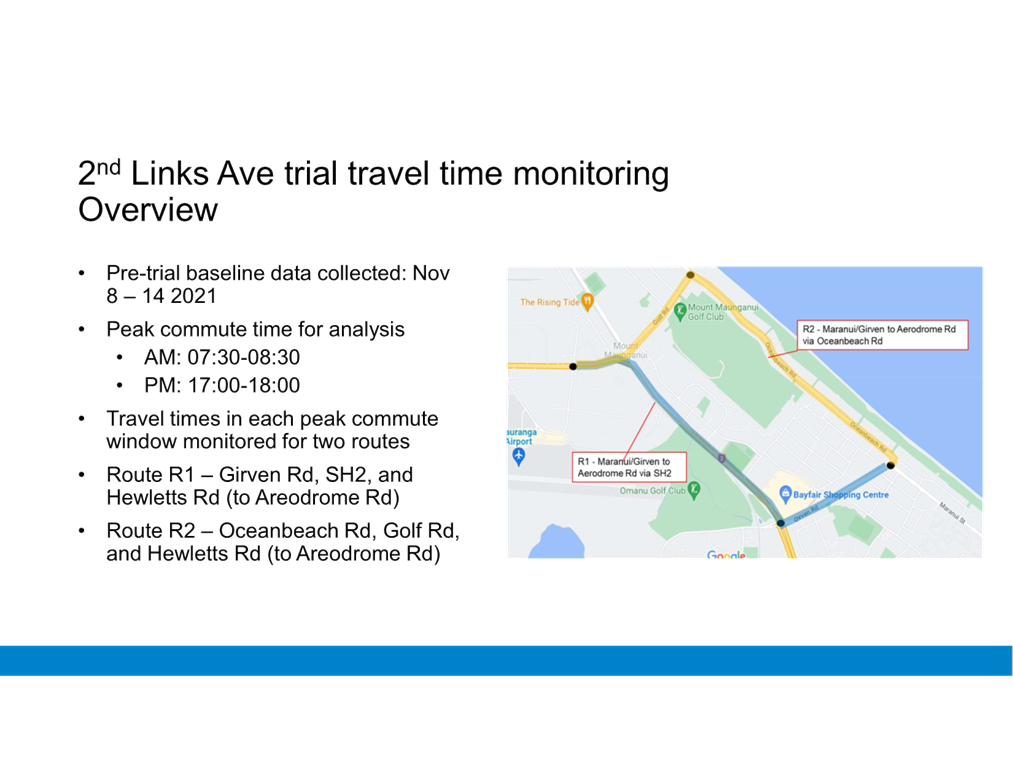
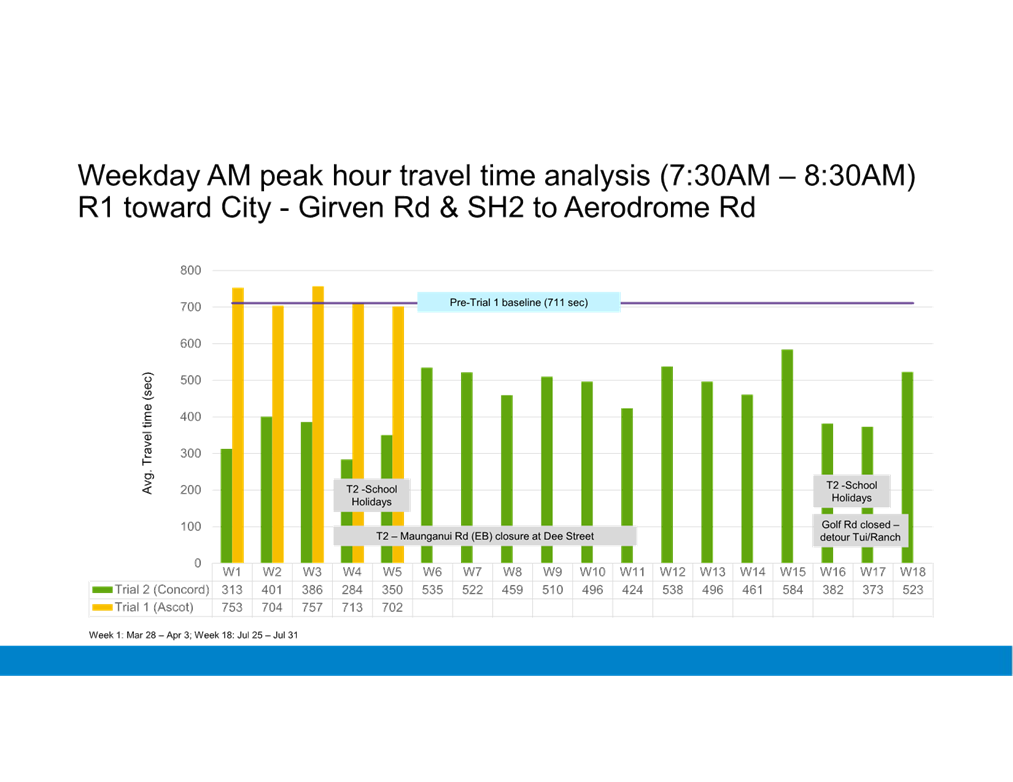

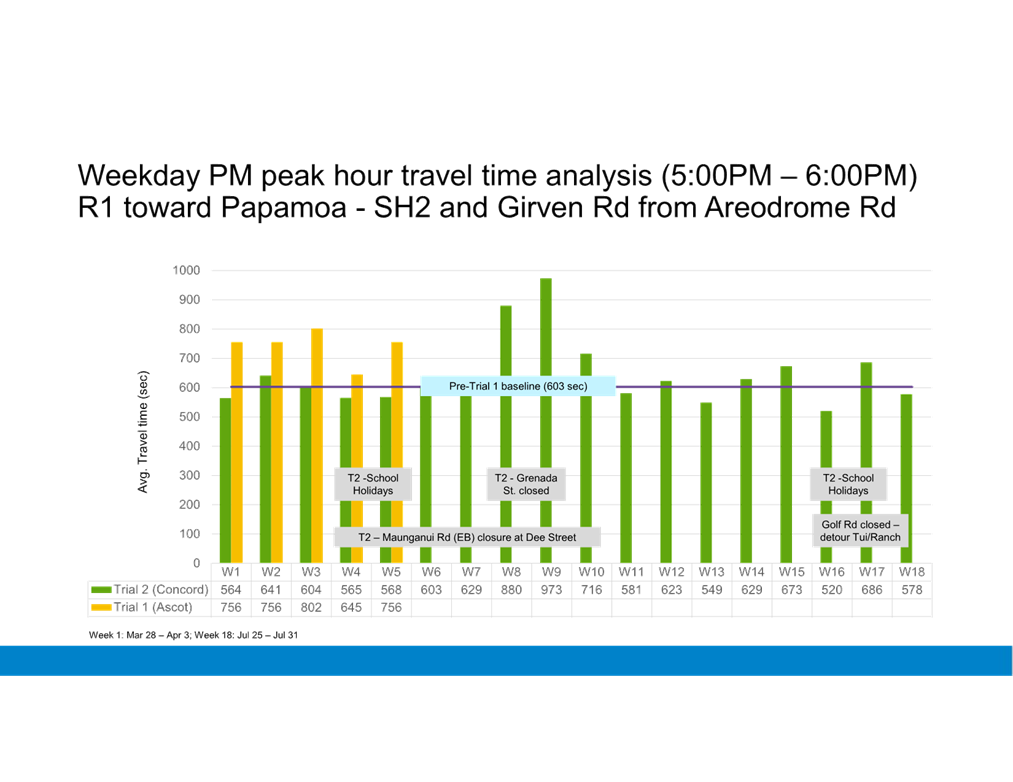
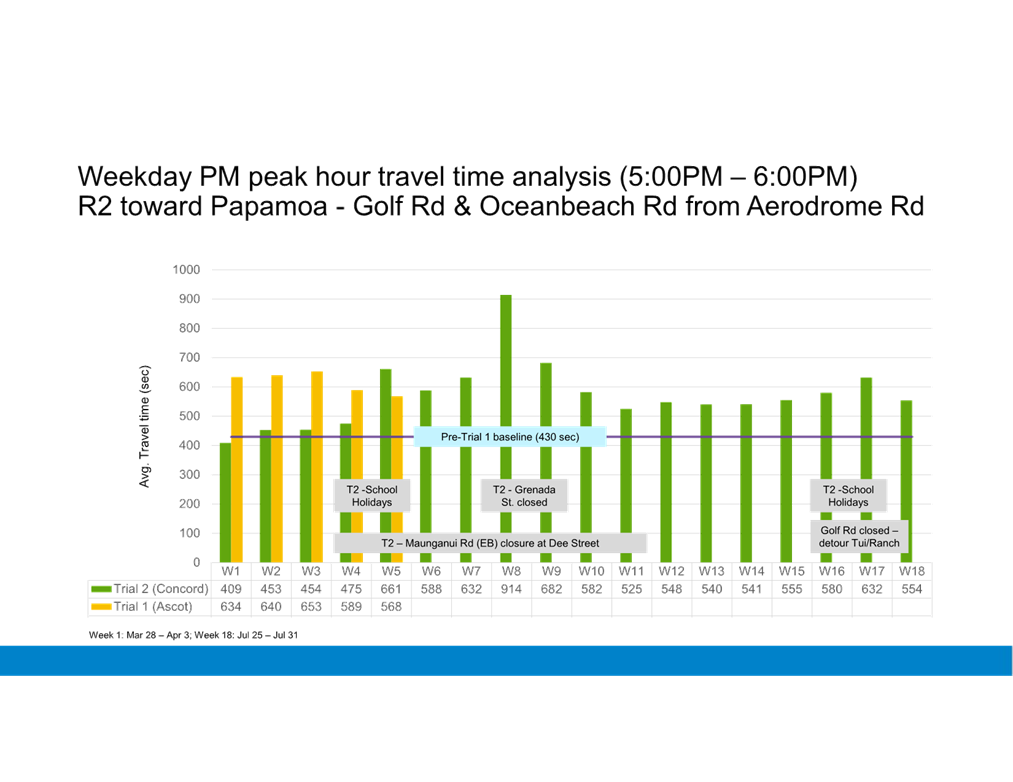
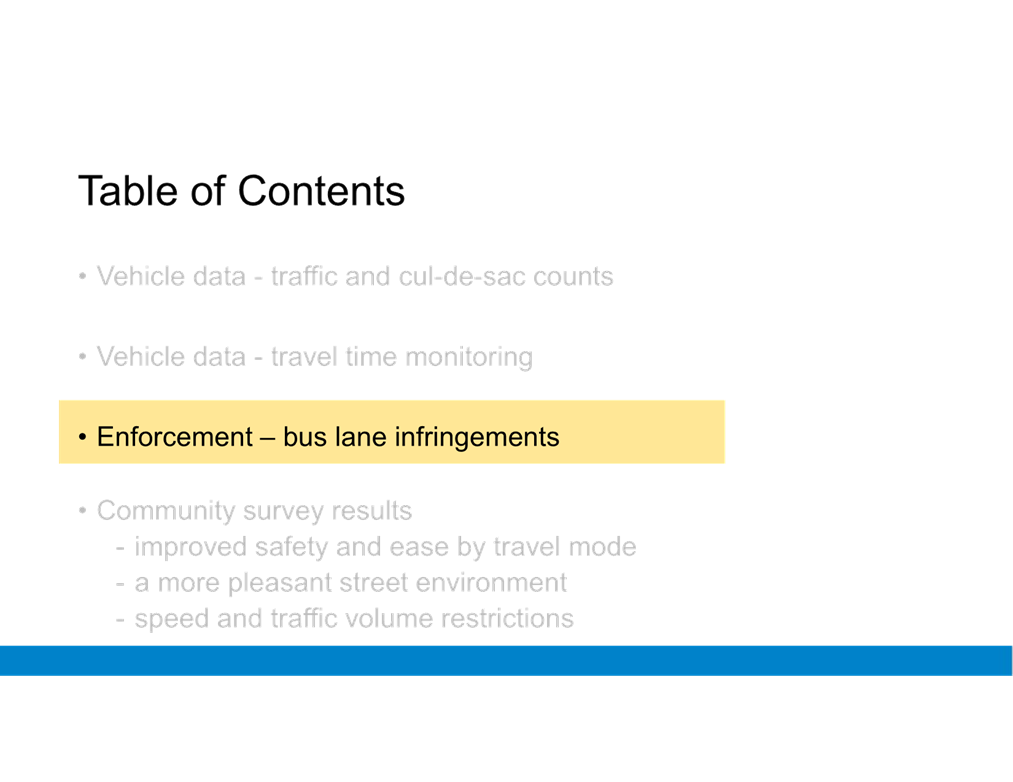
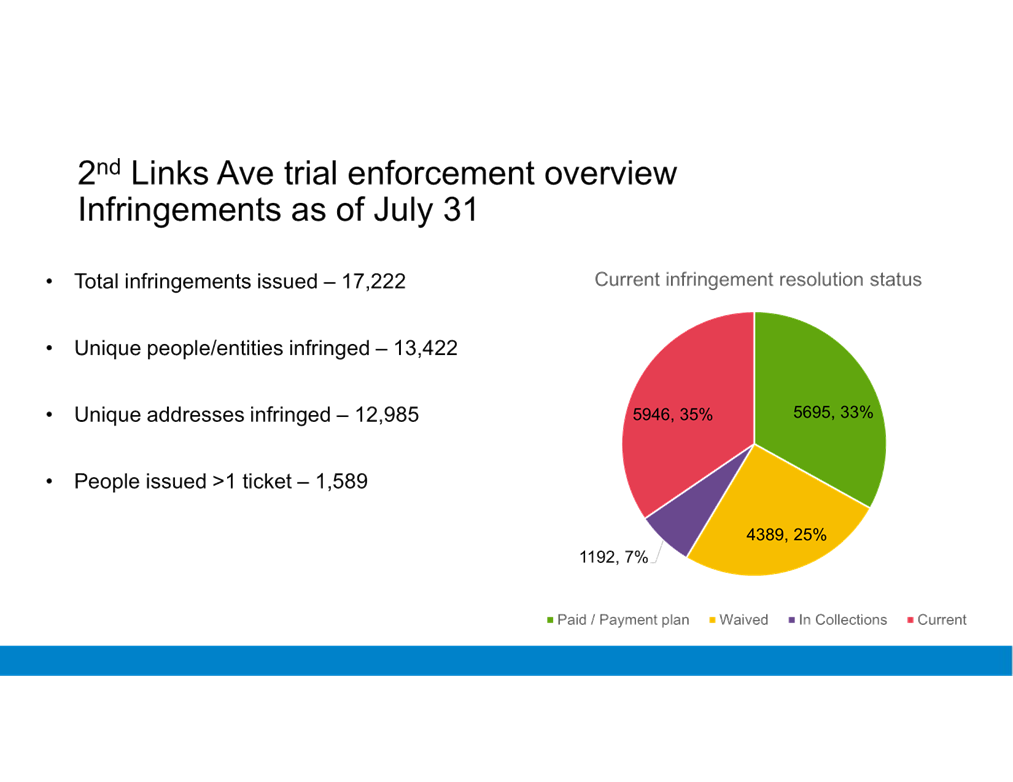

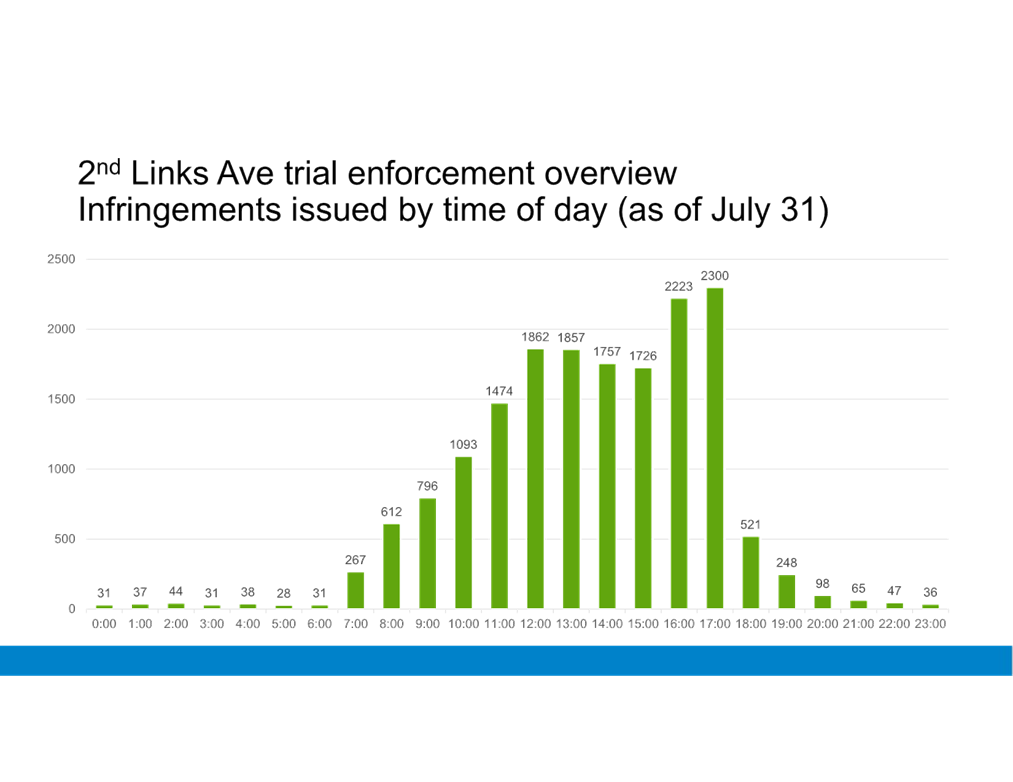

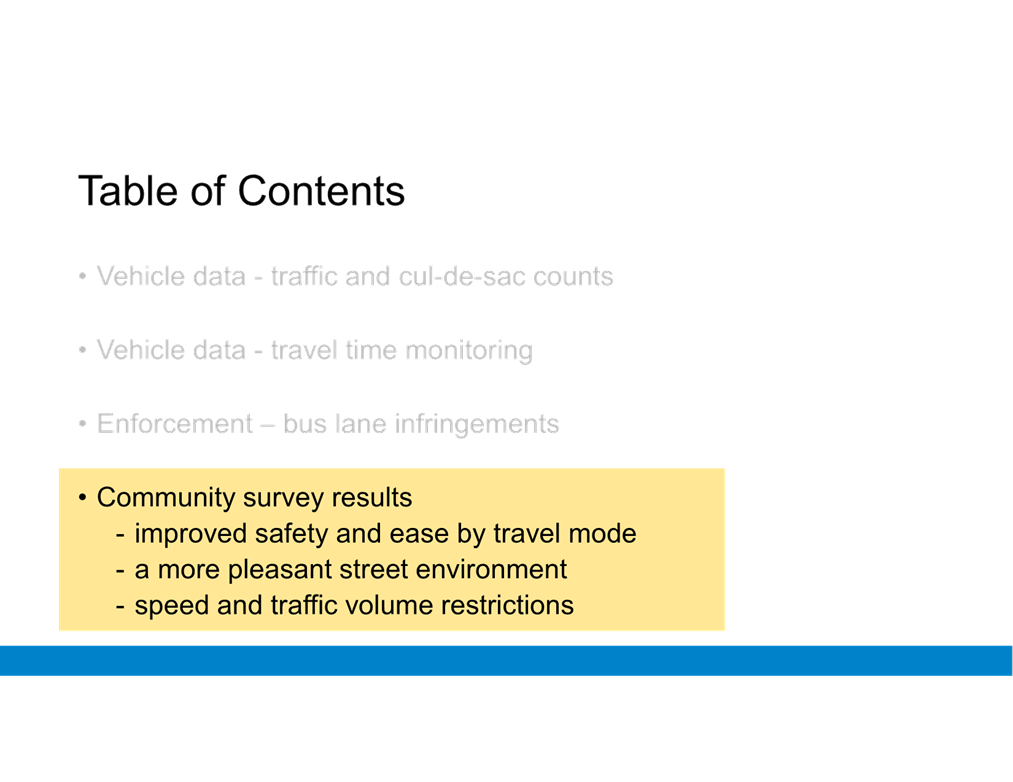
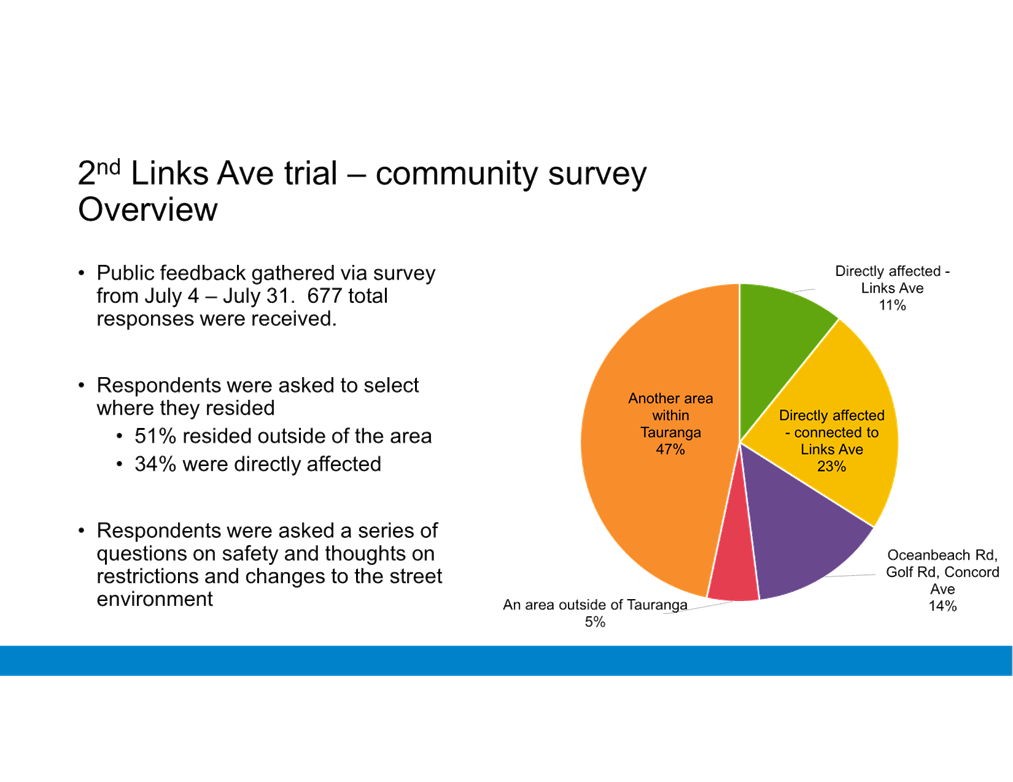
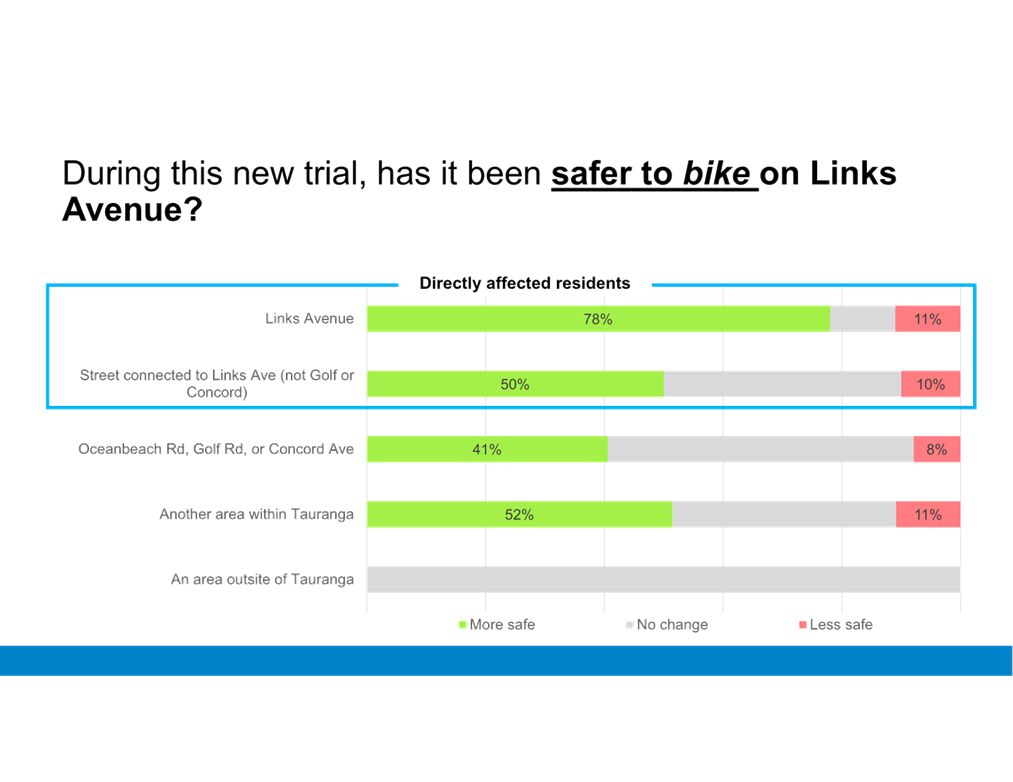
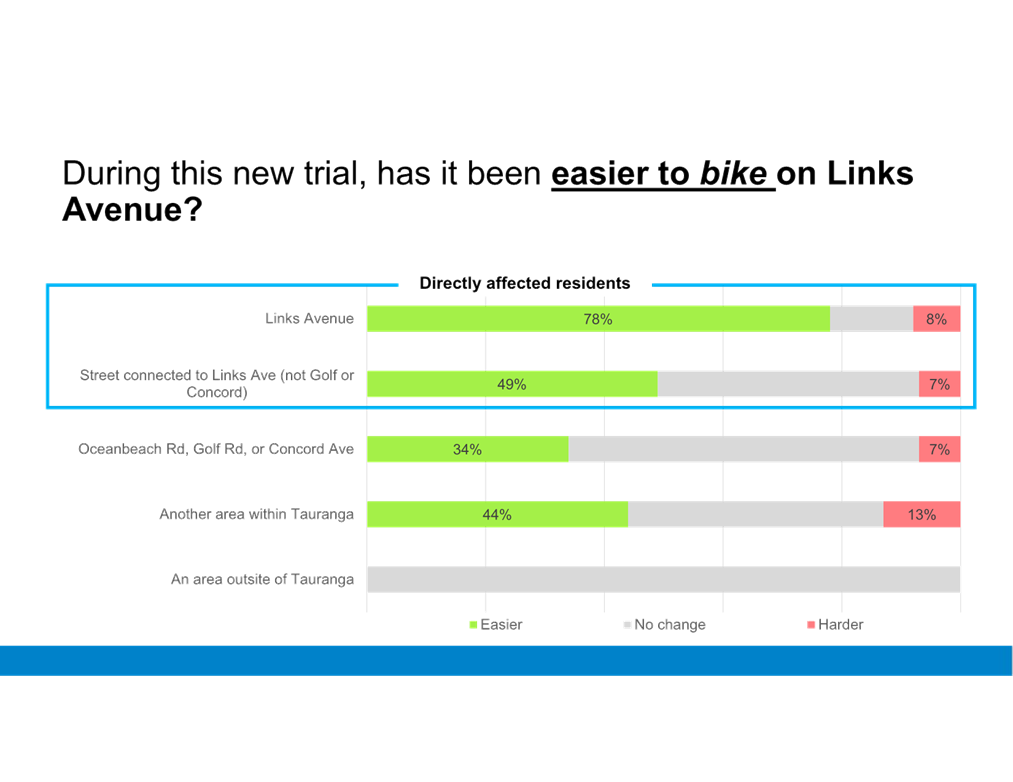
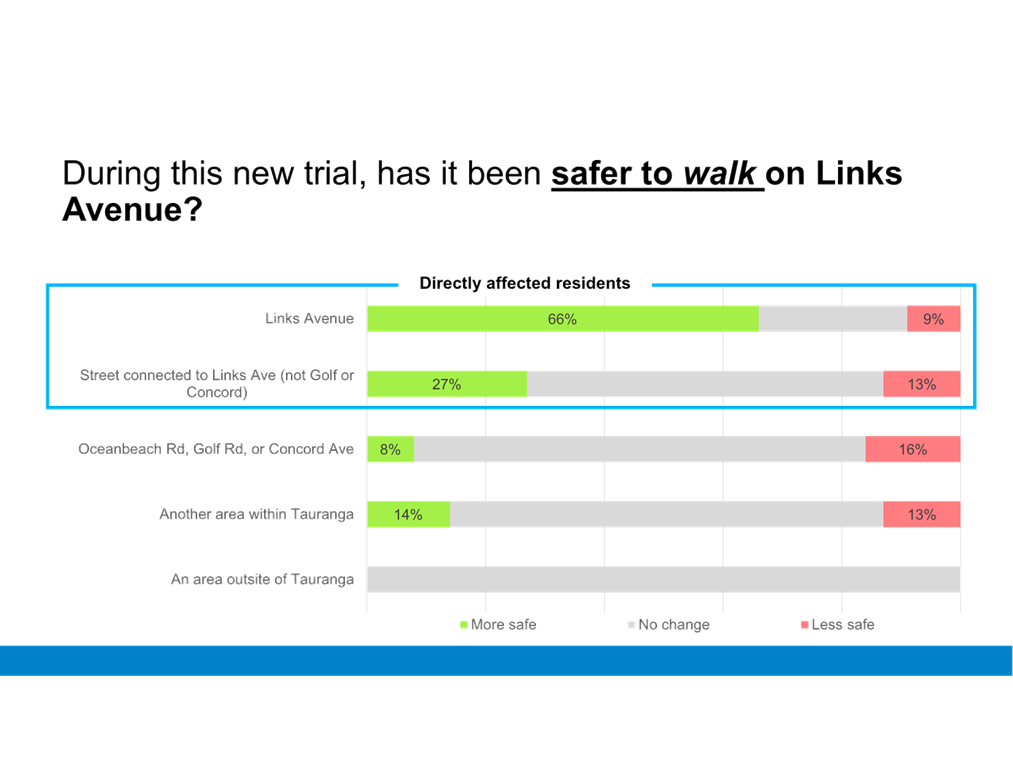
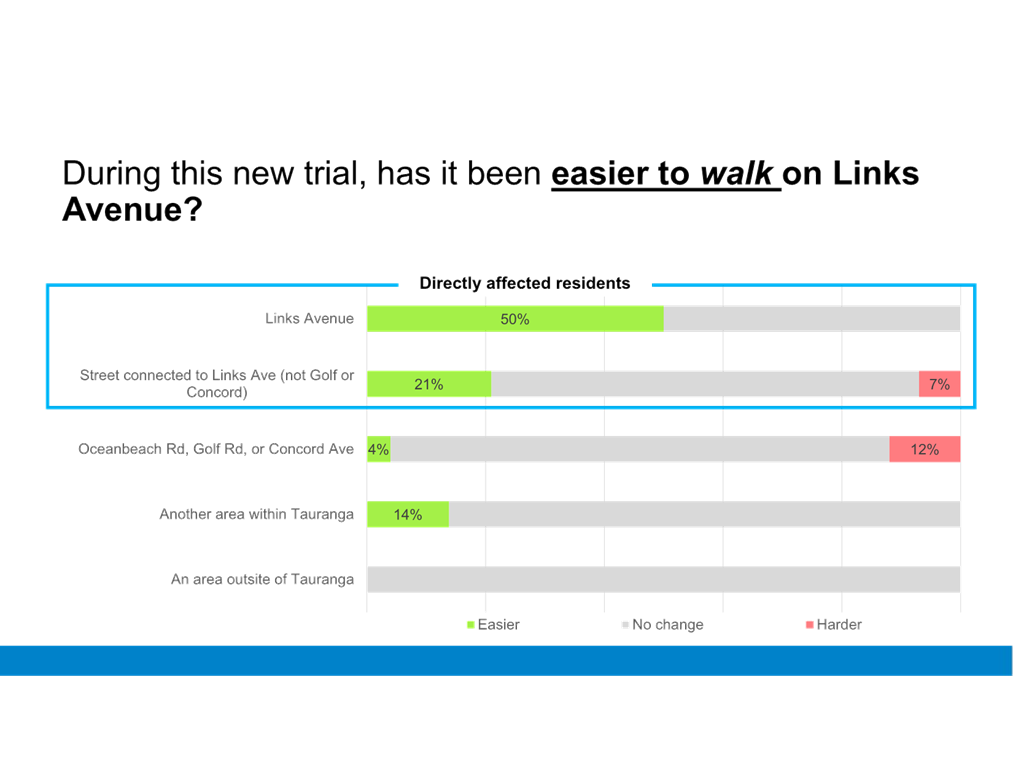
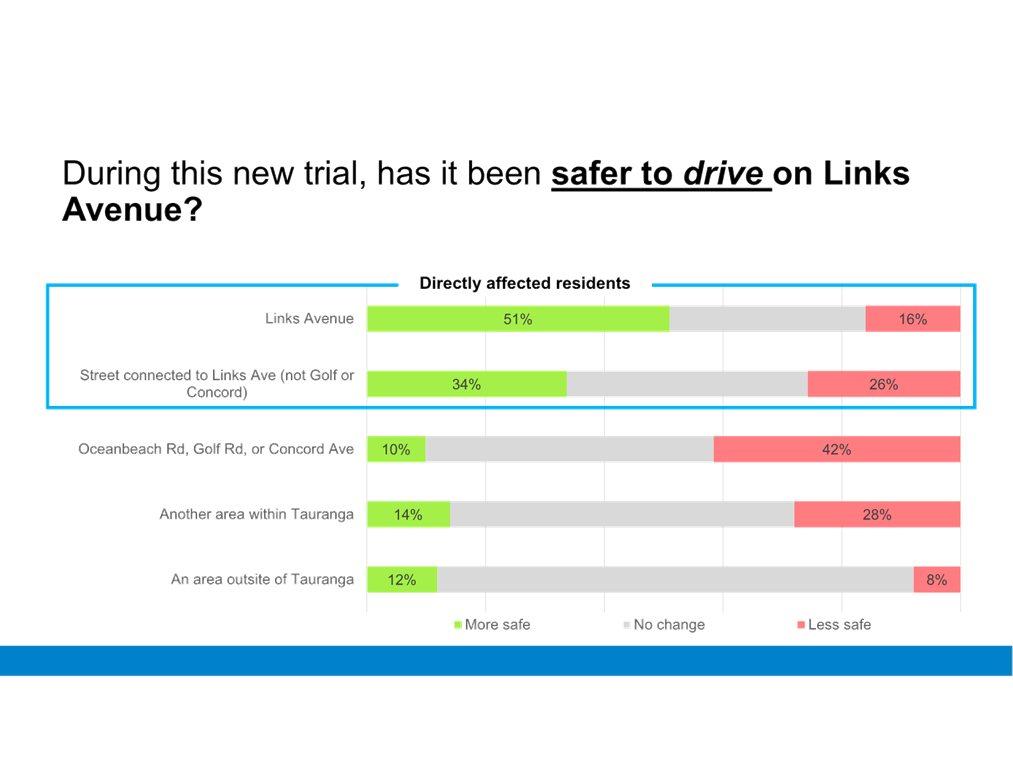


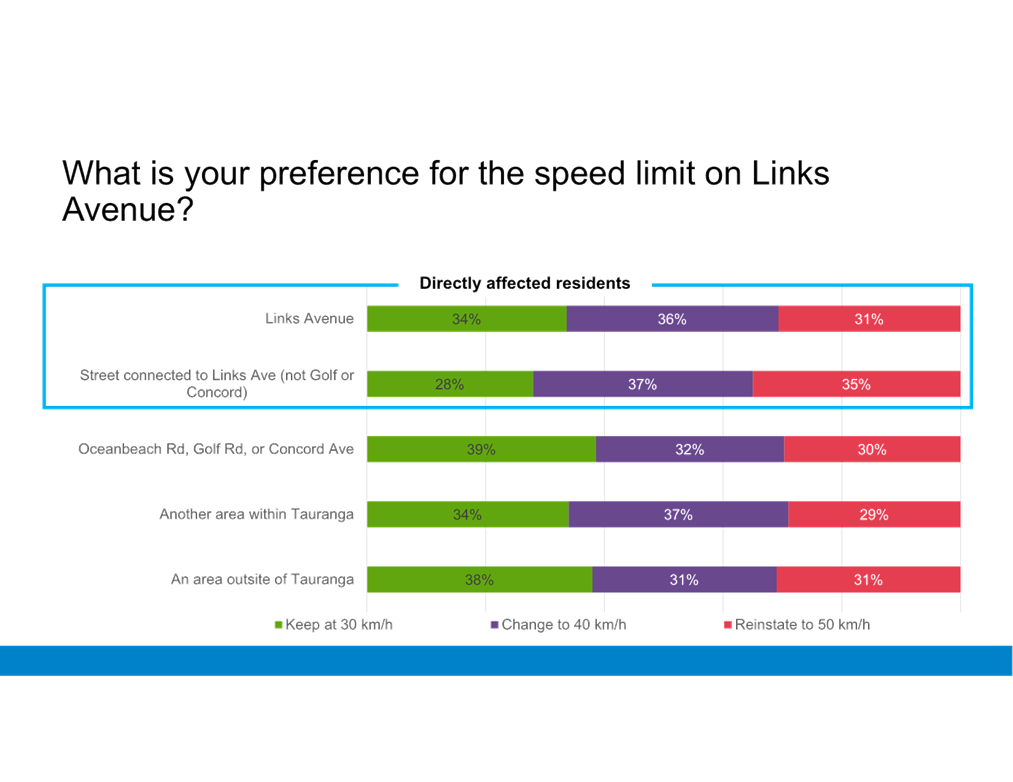
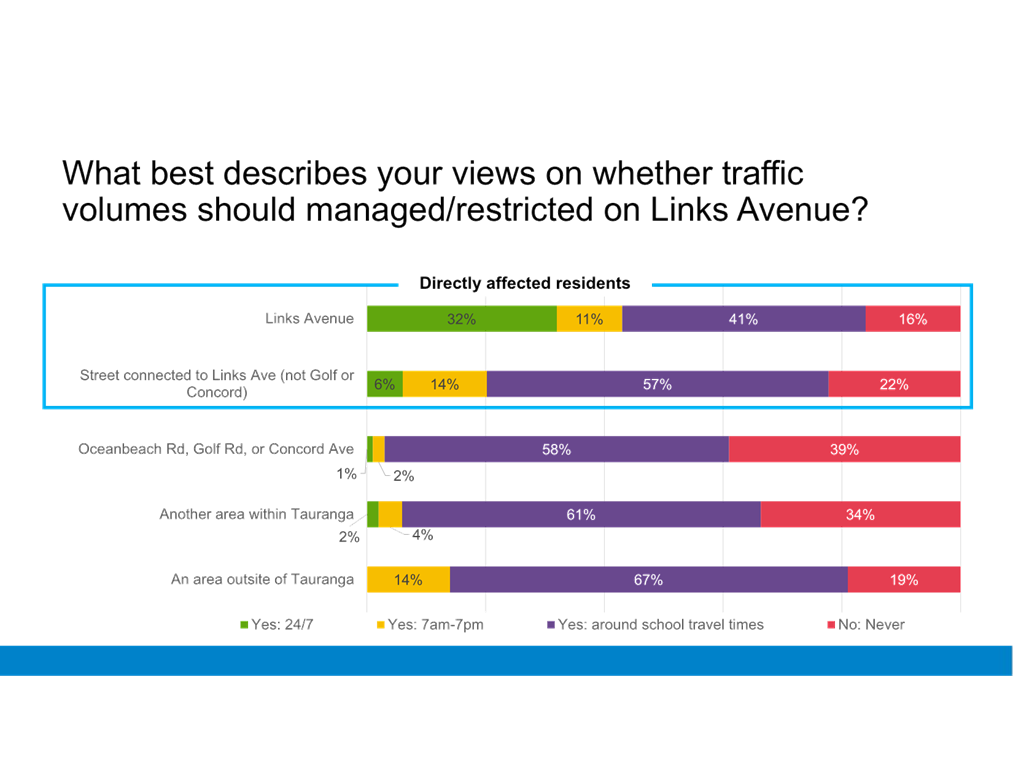
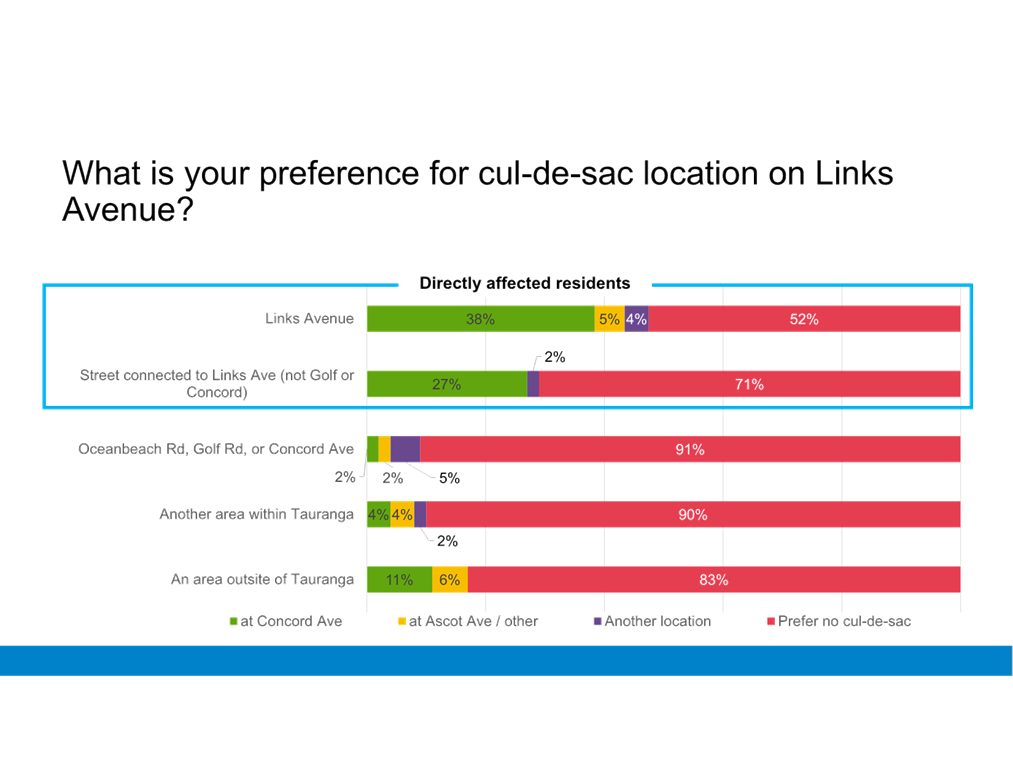
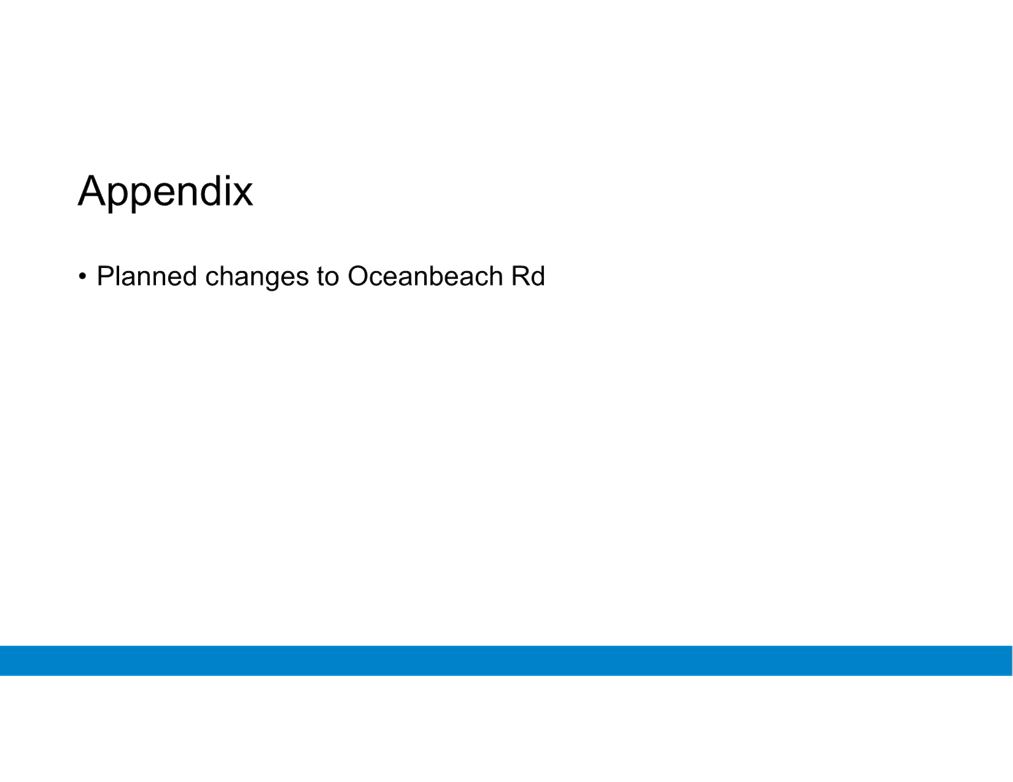
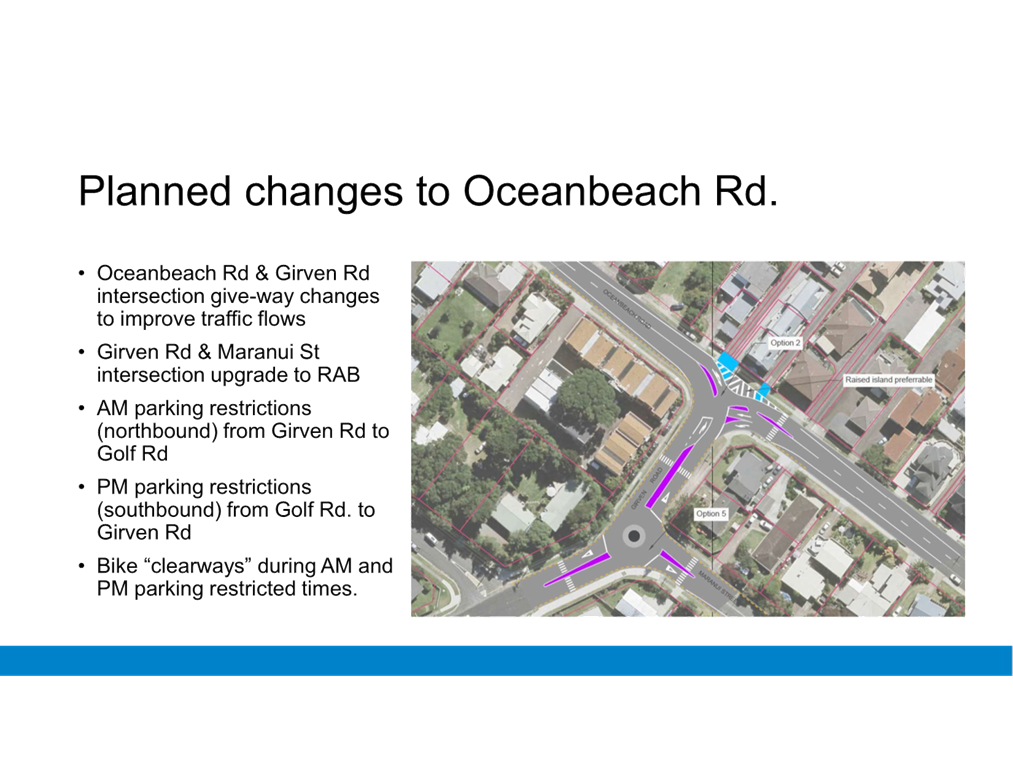
11.4 Executive
Report
File
Number: A13781681
Author: Nic
Johansson, General Manager: Infrastructure
Barbara Dempsey,
General Manager: Community Services
Paul Davidson, Chief
Financial Officer
Christine Jones,
General Manager: Strategy, Growth & Governance
Alastair McNeil,
General Manager: Corporate Services
Steve Pearce, Acting
General Manager: Regulatory and Compliance
Gareth Wallis,
General Manager: City Development & Partnerships
Authoriser: Marty
Grenfell, Chief Executive
Purpose of the Report
1. To provide updates on key
projects and activities.
|
Recommendations
That the Council:
(a) Receives the Executive
Report.
|
Infrastructure Report
Opal
Drive wastewater pipeline upgrade
2. The renewal of the Opal Drive
wastewater pipeline is progressing well. This pipeline replaces an older
section that is also undersized, given the growth predictions in Wairakei and
Te Tumu. The outcome of this project will be an improvement in the resilience
and capacity of the wastewater network.
Opal Drive to Domain Road
3.  Trenching work along Topaz Reserve, between Opal Drive and Domain
Road, has progressed over the past few weeks despite the wet weather. The
drill shot, establishing a length of the pipeline under the stream, has been
completed. Another 100 metres of pipeline to the west of the stream (towards
Domain Road) has been installed using open trenching methods. The team has been
backfilling the trenches as they move along and grass seed will be planted on
the completed sections to reinstate the reserve as progress continues.
Trenching work along Topaz Reserve, between Opal Drive and Domain
Road, has progressed over the past few weeks despite the wet weather. The
drill shot, establishing a length of the pipeline under the stream, has been
completed. Another 100 metres of pipeline to the west of the stream (towards
Domain Road) has been installed using open trenching methods. The team has been
backfilling the trenches as they move along and grass seed will be planted on
the completed sections to reinstate the reserve as progress continues.

4. Once
contractors have completed the establishment of the pipeline to Domain Road,
they will start on the section from the stream in Topaz Reserve to the Opal
Drive Pump Station. This part of the project is planned to start in
mid-September and will see the pipeline installed across Opal Drive to the Opal
Drive Pump station in early-October.
Opal Drive road closure
5. To
safely install part of the Opal Drive Rising Main, we need to close a section
of Opal Drive. A variety of pipeline installation options were
considered, but a road closure will provide the quickest and safest way to
complete the works. The road closure will be in place from Monday 3
October for approximately one week, at the intersection of Topaz Drive and
Redditch Place. Vehicle access will be maintained for the directly-impacted
properties on Opal Drive. Traffic management will be established and signs will
redirect drivers towards either Domain Road or Longview Drive. Pedestrian
access will be maintained for the duration of the road closure for both Opal
Drive and Topaz Drive Reserve users.
Domain Road to Gravatt Road
6. Work
on the boardwalk has continued and we have now completed installation of about
35% of the bearers.
7. The
above-ground pipeline between Domain Road and Gravatt Road, along the outskirts
of Fashion Island, will be established underneath the boardwalk, which will
protect the pipe and make any future pipeline maintenance in this section
easier. The boardwalk will have on- and off-ramps for bikes, mobility scooters
and pedestrians, to make it easier for all to use. It will also be wide
enough for two-way foot traffic, or two bikes/mobility scooters. Handrails will
provide an additional safety feature.
Ongoing track closures
8. Track
closures will continue throughout the Opal Drive work programme. We will
reinstate the tracks when the project is completed towards the end of December.
Environmental protection
9. Environmental
protection strategies, including silt fencing and other dewatering activities,
are continuing. These strategies have worked well in protecting our
waterways. The dewatering makes use of a silt bin, which allows silt to
settle to the bottom while the clear water at the top is then pumped back into
the stream.
Opal Drive Pumpstation Upgrade
10. Opal
Drive Pump Station is a key facility, as it pumps the majority of wastewater
flows from the eastern and central Papamoa area and Wairakei Urban Growth Area
(UGA) through to the Te Maunga wastewater treatment plant (TMWWTP). Future
flows from the Te Tumu Urban Growth Area will also pass through the Opal pump
station.
11. The
current pump station occupies 1980m² at the northern end of 45 Opal Drive,
while the total site area is 8390m². 45 Opal Drive is a designated site
(C81) for the purpose of a “wastewater pumping station” in the
Tauranga City Plan. Kainga Ora’s transitional houses have been
removed from Site B to enable the ground investigations and subsequent
construction of the new Opal Drive pump station. The Kainga Ora housing will remain
on Site A for at least another 5 years.

Figure 1: The 45 Opal Drive Pump
Station site, with the designated boundary outlined in red and the current pump
station site outlined in blue. Transitional housing sites A & B are
outlined in black and green respectively.
12. The
preliminary design of the pump station has been completed, which provides an
understanding of the site layout and above ground structures to be constructed
as part of the project. Council’s intent is to design these structures to
fit in with the area’s residential setting.
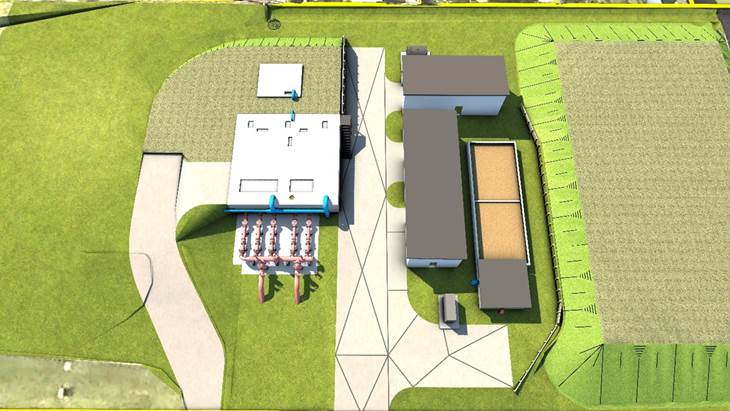
Figure 2: Image of the Opal Dr
pump station, based on the preliminary design.
13. As
part of the construction of the new pump station, the existing incoming and
outgoing wastewater pipelines will need to be realigned. The eastern corridor
wastewater strategy also anticipates two additional wastewater pipelines: from
the future Wairakei pump station to the Opal Drive pump station and from Opal
Drive to Te Maunga Wastewater Treatment Plant. These pipelines are
expected to be constructed in the current road corridors between the Wairakei
Stream and the coast.
14. The
comprehensive stormwater consent (RC63636) provides for the duplication of all
the stormwater culverts on the Wairakei stream. We expect to deliver
these culvert upgrade works on Opal Drive at the same time as the wastewater
works, to avoid disrupting the community twice in this area and for efficiency
reasons.
15. We
are engaging with mana whenua in relation to this project, and as part of this,
we are seeking advice on whether it is appropriate to include cultural elements
in the design of the pump station structures and/or landscaping. If that
is the case, we will work with mana whenua to include these cultural elements.
Matakokiri
Drive to Lakes Boulevard Wastewater and Water mains
Update
on works
16. Works
have progressed in the Awataha Reserve connecting the pipeline under the
Kopurerua Stream to the pipeline on Matakokiri Drive. This involved two 710mm
diameter, 200m-long drill shots under the stream - no easy feat.
17. We
are now planning the connection of the pipeline from Awataha Reserve under SH36
to connect with Lakes Boulevard.
SH36
lane closure
18. This
stage of the project involves a northbound lane closure on SH36 between the
Pyes Pa roundabout and the Kennedy Road roundabout, for around five weeks
(weather dependent) from Monday 29 August to early-October. The lane closure
will be in place 24/7 for the duration of works. Work crews will be onsite
Monday to Saturday, from 7am to 6pm.
19. Northbound
traffic on SH36 will be detoured at the Pyes Pa roundabout onto Pyes Pa Road.
Traffic will then either stay on Pyes Pa Road, moving towards Barkes Corner, or
choose to turn left on Kennedy Road to connect back to SH36. Residents and
commuters can expect increased traffic volumes on both Pyes Pa Road and Kennedy
Road.
20. Installation
of two new pipes is planned to cross SH36. Work will involve use of both
directional drilling and open trench methodologies. The worksite will be
established in the berm on both sides of SH36. Once the two pipes have been
installed, the trenches will then be backfilled, compacted and the road
resurfaced.
21. Once
works are complete, we will reinstate the trees, garden structure and berm.


22. As
we prepare for this work, residents may see some trees being removed to make
way for the future pipelines. Council policy is to replace trees which have to
be removed to enable works. Any trees removed will be replaced in the next
planting season (winter 2023).
23. This
project will provide wastewater and water infrastructure for the new
developments in Tauriko and is due to be completed in March 2023.
Wastewater
Upgrades: CLARIFIER 3 – Piling Trial
24. Contractors
conducted a piling trial in August to test the proposed pile design and measure
vibration and noise impacts during installation. Two 900mm diameter pile
casings were installed and tested.
25. The
trial has proven the constructability of the design and may potentially
influence design modifications that reduce overall cost.
26. The
vibration levels recorded during installation are within acceptable limits and
thus the impact on adjacent structures is no longer a major concern. Noise
generation is also within acceptable limits, given the remote location.
27. These
outcomes enable the team to move into the detailed design phase and also lower
the risk of unforeseen conditions impacting on the piling system installation
during construction next year.

CLARIFIER
3 – BIM model
28. This
is one of three projects that are trialling the use of Building Information
Management software to generate a 3D model of the structure. The use of BIM is
expected to deliver significant benefits during design, e.g.:
· coordination
of services to avoid conflict
· visualisation
to help the council operations team review the design
· the
ability to coordinate feedback from multiple stakeholders during cost
estimation, during construction and for ongoing asset management.
29. It
is anticipated that in future, BIM models will be ‘stitched’
together to help with the planning and management of infrastructure.
Significant budget savings are expected on future projects, once the trials are
complete.
Year 12
and 13 Geographers come to Council
30. Council
welcomed 40 Tauranga Girls College students to the Cameron Road office on
Friday 12 August to listen to and engage with our specialist staff. The
students learnt about a wide selection of Infrastructure projects, including
Tauriko West, the Otumoetai Spatial Plan and city planning considerations.
31. Feedback
from the College has been positive:
“All
presentations were really interesting and we learned a lot. It was great to see
the future plans for the city and what goes into planning them.”
“We
would love to keep involved with the council in the future and encourage
students to be active members of our city.”
32. These
links into our schools are managed by the Travel Safe Team in Transport.
Annual
Contractors Function
33. On
Wednesday 17 August, we hosted the annual Contractors Function. This is an
event where we bring together the contractors and consultants we work with to
deliver our capital programme. This is an annual event occurs after we have
locked in the annual plan, which allows us to communicate with the industry
about the work which is coming to the market, what’s important to us, and
how we will procure the work. This includes a current financial year view, but
also extends through to a three-year view with some accuracy, and a ten-year
view which reflects the Long-term Plan. While we host this event, we also
invite WBoPDC and Waka Kotahi to share their respective programmes.
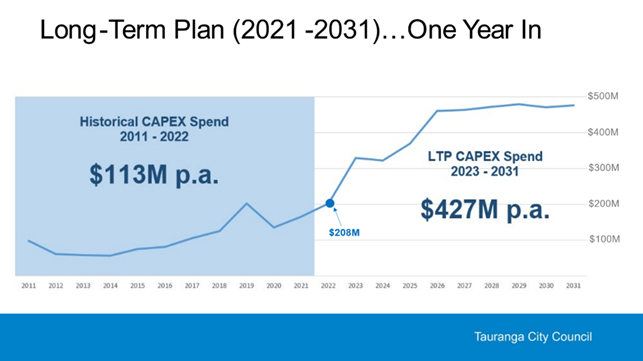
34. This
year, over 200 people attended, including representatives from the council
project management and procurement teams, contractors and consultants.
35. The
event was very well received, as always. We get great feedback for candidly
sharing our delivery challenge with the construction sector.
Community Services
Community
Partnerships
36. Flurofest
is to be held on 2 October 2022 at Memorial Park, during Mental Health
Awareness Week. This inclusive community event will focus on promoting
the five ways to wellbeing, while supporting the different Mental Health
Awareness themes promoted each year, this year being Back to Basics.
Flurofest will feature fun, family-based activities and entertainment and
provide a range of information and resource stalls from various Bay of Plenty
service providers. These activities are organised by a collaborative
working group from Tauranga Youth Development Team, Te Whatu Ora (Health New
Zealand) and our Community Development Team.
37. Women
in Tech and industry tour - On 19 August, in conjunction with Bay of Plenty
tech companies ii and Datacom, we hosted 60 Students from Tauranga Girls
College to a facilitated series of workshops showcasing careers in the IT and
tech industries. Staff from across our organisation led the sessions focusing
on opportunities to pursue careers in this field and identifying pathways to
leadership positions. Kaitohutohu Hapori Māori is working with
Community Relations to prepare a story about the event, with one of the
students invited to draft the media release, take photos and be engaged in the
media process.
38. The
Kāinga Tupu Advisor has teamed up with Funding HQ to deliver a half-day
workshop on 14 September for our homelessness community providers. The workshop
will demonstrate how to develop a compelling case for funding –
‘developing your funding story’. It will also help identify a
wider range of funders who could support the organisations, providing advice on
how to align with funder’s priorities, therefore increasing their chances
of success.
39. On
the weekend of 13 August, Rangataua Rugby Club hosted an under 13 rugby
semi-final and the BOP Women’s rugby (Volcanix Development squad) playing
Counties Manukau. Council supported this event with mowing and
line-marking of their fields. The community noticed the difference, as field
maintenance is normally undertaken by club volunteers. This was a positive
initiative for the relationship between the Sports Club and Council, to ensure
ongoing maintenance is undertaken, recognising the wider amenity value of the
community reserves which are owned by clubs.
40. The
Community Development team hosted a return visit from Human Rights Commission
(HRC) staff from Wellington in early-August, to investigate how we can work
together to pilot the Whakamana Hapori initiative in Tauranga Moana.
Whakamana Haporu is a community-based programme that upskills participants in
human rights, Te Tiriti O Waitangi and community development.
Participants will be supported and resourced by the HRC, with support from
Council, to deliver initiatives that foster positive race relations in our
community. We are working with the HRC to facilitate connection with iwi,
as well as working together to develop a process for recruiting participants
and supporting the workshops and resulting projects. This initiative
aligns with the vision of Tauranga as an inclusive city, Tauranga
Mataraunui, and the existing workstream of the Welcoming Communities
programme.
Emergency
Management
41. The National Emergency
Management Agency (NEMA) has requested that our Emergency Management team
provide Emergency Operation Centre (EOC) staff to deploy for seven-day cycles,
to assist in the response to the severe weather event in the Nelson/Tasman/West
Coast region. We deployed one staff member to Richmond on Sunday 21
August and another is due to deploy to either Nelson or Marlborough on 25
August. Another staff member is on standby for deployment to assist in
the welfare function.
Libraries
42. We
have had a successful start to our new streaming service, hoopla, with 126
customers borrowing 377 items since the launch on 15 August. Pleasingly, visits
to the platform were boosted over the weekend after an article featured
in Sunlive. Hoopla contains a wide range of formats, with comics, movies,
music, television and eBooks and eAudio. Comics and music (not available
electronically elsewhere in our collection) are amongst the most popular items
loaned so far.
43. He
Puna Manawa spaces are being well-utilised by the community. The Family
History month series of events was well-attended in person and on Zoom.
Spaces
and Places
44. Work
has progressed on the Marine Parade Walkway development, with some key project
milestones achieved. Three strong tenders have been received to undertake the
construction of the walkway. The tender process will be completed and
contractor ready to establish on site towards the end of the calendar year.
Physical work, including BBQ’s and picnic table seating that does not
need resource consent, is anticipated to commence in October.
45. Installation
of the basketball court at Orangapani Reserve in The Lakes, to complement the
pump track, will be completed this month. A community celebration is
planned for this project on 17 September 2022.
46. Work
has commenced on the upgrade of the Fire Station at the Historic Village.
When completed, this space will be used as a resident carving studio. The work
will be completed by the end of August.
47. The
digital kiosk on Wharf St was opened with a blessing on 9 August. In
attendance were representatives from Ngāi Tamarāwaho, Ngāti Tapu
and Ngāi Tukairangi, and Commissioners Anne Tolley and Shadrach Rolleston,
along with others involved with the project. The digital kiosk tells the
stories of Te Papa, starting with the arrival of Māori through to the
present day, and provides context to the statement ‘Te rau o te
patu’ that has been etched into the pavement at either ends of the
street. Te rau o te patu refers to the surrendering of arms that occurred
in the vicinity of Wharf Street and the subsequent confiscations of Māori
land that took place. The storytelling project was influenced by mana whenua
and had significant drive from kaumatua Peri Kohu, who sadly had not long
passed away.
48. An exciting new ecological
restoration has started, in collaboration with Ngāi Tamarāwaho,
behind the Judea sports fields below Winiata Street. Named this the Winiata
Gully Restoration Project, the area we are starting with is just under a
hectare. Part of the area is zoned conservation, with the remaining portion
Active Open Space. The removal of a vigorous weed cover is the first step. When
complete, it will be planted in lowland coastal forest species indigenous to
the Waikareao environs.
49. Minor
repairs to The Strand seawall have now been completed and works to replace the
seawall have been transferred to the Civic Centre Project Team, in conjunction
with the wider Marine projects.
50. The
Strand Mooring Holders Carpark has been resealed and is ready for lease and
mooring holders to use again.
Venues
and Events
51. Baycourt’s
Wurlitzer organ received much-needed maintenance in mid-August. Due to COVID-19
border closures, the near-100-year-old ‘Mighty Wurli’ had not been
tuned since April 2019. An Australian-based specialist is flown in to undertake
this work, as there are no suitably-qualified people in New Zealand. The
week-long maintenance programme culminated with a free public concert on 18
August, performed by Australian Scott Harrison, to showcase the rejuvenated
instrument and celebrate its 50th anniversary in Tauranga.
52. Baycourt
has focused on staff recruitment during this period, with five vacancies to be
filled. The Event Coordinator and Senior Event Coordinator positions have been
successfully onboarded and recruitment continues for the remaining three roles
– Visitor Experience Manager, Technician and Marketing Coordinator.
53. The
Zespri AIMS Games “Gives Back” beach clean-ups have generated
approximately 170 registrations from young athletes across New Zealand.
Zespri AIMS Games continues to be a priority for the Event Facilitation and
Development teams, with a focus on preparing the local community for
approximately 20,000 visitors between 3 and 9 September.
54. The
first round of the newly-established Tauranga Western Bay Community Event Fund
closed on 31 July, with 29 applications. In August, the assessment panel, made
up of representatives from council, Western Bay of Plenty District Council,
TECT, BayTrust and the Acorn Foundation, met for the first time to assess these
applications. The Event Development team continues to receive a considerable
number of enquiries about the fund.
Customer
Services
55. The
Tauranga City Council cadet programme for unemployed youth aged 18 – 24
is about to commence the recruitment phase. We have been working alongside MSD
to assist with programme development and funding support. The name of the cadet
programme is Piki Ake – “to climb higher” – captures
the intent of the programme to give people an opportunity to progress.
Arts
& Culture
56. Heritage
Collection staff have commenced work on the initial phases of the collection
readiness programme, preparing the collection for public display in the Museum.
The pace of the digitisation project has been increased, with additional staff
resourcing enabling more objects to be documented and uploaded to the Heritage
Collection website.
57. Ashley
and Associates have been engaged to undertake a valuation of the collection.
This work will be carried out in September, with a report due to the Museum
steering committee by the end of September. Antoine Coffin of Onewa Consultants
has been engaged to develop a repatriation report for the collection,
identifying taonga and objects that have provenance to Tauranga Moana, but are
currently held in other Museum collections. This work will help to establish
relationships between the Tauranga Heritage Collection and other key museums,
exploring opportunities to return significant objects to Tauranga for the
opening of the new Museum.
58. The
Heritage Collection team has continued a busy engagement programme, with a
range of collection tours undertaken, including groups from Ngāi Te
Rangi, Toi Ohomai, Bay of Plenty Regional Council, Ngāti Kuku and Ngamanawa
Incorporation. A programme of education tours has been planned for the October
school holidays, with all places on the tours filling up within hours of them
being promoted. The “Hands on Tauranga” programme has made several
visits to local rest homes in the past month, bringing objects from the
collection to residents, which has been very well received by those taking
part. Our heritage collection specialist has written a feature article about
the Hands on programme, which will appear in the next issue of Our Place
magazine.
59. The
Elms foundation has completed its annual report, with updates on activities
from year 1 of their LTP funding. The report details a strong commitment to the
KPI’s set in the funding agreement. The Elms has had a very productive
year despite the challenges of COVID-19, and the resulting impact on visitor
numbers. Highlights identified in the report include:
(a) Appointment
of Auckland-based consultancy, Dave Pearson Architects, to undertake a
condition assessment of the heritage features across the property, as well as
design work for the remediation of the historic chapel gates. Once completed,
this condition assessment will form the basis of the Elms Foundation’s
forward maintenance programme for the next 5-10 years.
(b) Completion
of preparatory work towards a new visitor centre and car park on the
neighbouring properties at 7 and 11 Mission Street. An archaeological
assessment has been completed and the site has now been landscaped and grassed,
in preparation for future work. Trustees and staff from the Elms Foundation
have been taking part in the Funding HQ training programme (with participation
funded by council), to develop a development and fundraising plan, in
anticipation for what will be a major capital project.
Chief Financial Officer
Vessel
Works – Marine Precinct
60. We
removed the derelict vessel Chatham Explorer from the water on 11 August. The
preparation, removal and blocking took three days and appears to have been
timely. We blew a 20mm hole in the hull when water-blasting and the cracks in
the welds on the bow of the boat are still leaking water onto the hardstand.
Asbestos removal has started and the demolition proper will start when that has
been completed.
61. With the unplanned sinking of the
“Sealion” in Wellington Harbour only a few weeks ago, the decision
to take action on the Chatham Explorer seems prudent. https://www.rnz.co.nz/news/national/472538/lucky-escape-for-occupant-as-ship-sealion-sinks-in-wellington-harbour
Strategy, Growth &
Governance
Democracy
and Governance Services
62. The
Epidemic Preparedness Notice was extended on 16 June to 16 September
2022. Taituarā advised it is unlikely that the
notice will be extended past 16 September. Under the Principal Notice, which
came into force on 25 March 2020, the Prime Minister has to declare that she is
satisfied that the effects of the outbreak of COVID-19 are likely to disrupt or
continue to significantly disrupt essential governmental and business activity
in New Zealand. Some councils have lobbied for the continuation of the
Epidemic Preparedness Notice, to ensure that those attending council and committee
via audio or visual link can be counted towards the quorum of meetings.
If the notice is not extended, the current provisions under Clause 25A(4) of
Schedule 7 of the Local Government Act 2002 and Standing Orders will apply and
a person attending remotely is not counted towards the quorum.
63. There is a separate report on the Local Government Electoral Legislation Bill, requesting that Council approve a submission in support of the
Bill.
Tangata Whenua Consultation
64. It
continues to be an extremely busy time for tangata whenua, with workshops held
once or twice a week, as opposed to once or twice a month previously. There has
been a sustained period of pressure for probably a year now and it’s not
without signs of strain. However, this has helped us get clear and strong
consensus input and feedback into key processes such as Three Waters reform,
the Long-term Plan and the Long-term Plan Amendment, among other things.
65. Most
recently, we have been able to progress Memorandum of Understanding discussions
at Poteriwhi and support for the allocation of Better Off funding. However, we
need to be aware of the strain placed on iwi and hapū as they address our
processes at pace.
66. We
have managed risks through inclusivity and patience and, largely speaking,
council’s relationships with iwi and hapū continue to improve. The
pressures arise where we are putting iwi and hapū in positions that may not
enable a natural process of support for each other to occur and this is
exacerbated by capacity and capability challenges at their end.
67. We
are currently reviewing whether the retrospective meeting payment regime simply
means iwi and hapū can only put forward those available in a piecemeal
fashion. In particular, whether the volume of engagement may lend itself to a
more planned approach to engagement, enabling upfront payments.
68. This
may give some critical mass to iwi and hapū entities to look at employing suitable qualified
representatives and making them more available. This should lead to better
prepared, well-informed contributions to our consultation processes.
Corporate Services
Community
Relations
69. The
Media Impact Score continued to rise to 2.1 in July. A big focus on recreation
& environment reporting contributed to this over the last month (40% of
coverage), across a wide range of different themes, including some very
positive reports about Mauao maintenance and safety works, beach clean-ups, and
improvement of other parks and reserves. Relationships between mana whenua and
Council were well-covered, highlighted by the Civic Precinct the land ownership
coverage, which captured the constructive nature of Council's relationship with
the Otamataha Trust and the willingness of both the Commission and mana whenua
to try something genuinely new.
70. The
digital and creative team has had an exciting month with the launch of two
projects they’ve heavily supported – the kiosk on
Wharf Street, telling the history of the area, and the launch of the City
Centre Action and Investment plan. Finding innovative and engaging ways to
share the mahi of council continues to be a priority.
Digital
Services
71. Rollout
of digital signing - The pilot of digital signing has continued and
has now been rolled-out to more than 250 staff. This solution is legally
compliant, reduces waste and is simple to use. We are on track for the
full organisational wide rollout in September 2022.
72. NZ
Women in Security Awards 2022 - We are very
excited to have three nominations in this year’s Women
in Security Awards, which are due to be held in November. Below are the
awards we are nominated for:
· Cyber Security
Engineer Jaimee Pasig - ‘IT Security Champion’ & ‘Best Mentor’
· Security Analyst
contractor Narmada Kohli - ‘The One to Watch in IT Security’
· Tauranga City
Council - ‘Best Place for Women to Work in Security’
category.
The awards promote and recognise
women involved in all aspects of security across NZ and Australia.
73. Resource
Consent Management - the Environmental Planning team has been working
closely with Digital Services to move resource consents processes, which
currently involve multiple systems and manual steps, into our SAP
environment. This will provide opportunities for better accountability,
transparency, automation and consolidation in one system, while supporting
Long-term Plan key performance indicators. It also supports customers with
better visibility of where their consent is in the process. The project is
about to go into a pilot phase in September for processing, referrals and
granting of consents, using some selected consent applications to run through
the live system.
Human
Resources
74.
Staff turnover is calculated on a 12-month rolling basis. The employment
market is very challenging at the moment, so it is positive that our turnover
is remaining steady. Our aspirational staff turnover range is 10-12%.
75. The
Remuneration project is now complete, with the final stage of the annual salary
review completed at the end of August. The aim is to ensure that we are
competitive in the labour market and can continue to attract and retain great
staff. Remaining competitive in the labour market is a growing risk for us, due
to inflation and the current tight labour market in New Zealand, with the
potential to negatively affect our ability to deliver council services and the
Long-term Plan work programme.
Health,
Safety & Wellbeing
76. Nominations
have been submitted for Health & Safety Representatives across
council. A training pathway has been developed to support all
representatives and provide a greater Health & Safety lens across
council. Final elections will be held in the coming weeks.
77. Managing
staff exposure to psychological harm at council is a priority. To ensure we are
effectively managing this, Lance Burdett (WARN International) has been engaged
to provide resilience and de-escalation training to various business
units. This training involves practical and effective solutions to keep
our staff safe.
78. A
new staff wellbeing room has been created at the council offices in Cameron
Road. This came about through a collaborative effort between the
Environmental Planning and Health Safety & Wellbeing teams. The room
provides somewhere for staff to unwind, meditate, pray, recover or
breastfeed.
Regulatory and Compliance
79. Regulatory
and Compliance represented council at the 2022 Tauranga Canvas Careers Expo
held at Trustpower Arena on the 12-13 August. This expo was in collaboration
with Rotary and Priority One and is a community event open to the public, with
a focus on tertiary and secondary school students.
80. We
saw a mass of tertiary and secondary school students eager to engage and learn
about what is available to them and their future, especially in their home of
Tauranga Moana. Our staff shared information about their roles, study options,
qualification levels, their own experiences, and their career so far within
council. We had over 200 meaningful conversations with our audience about the
many opportunities for people with a willingness to learn, with the intention
of encouraging rangatahi to find us after their studies.
81. Conversations
and planning are already underway for an organisation-wide approach to the 2023
expo.
Environmental
Regulation
Regulation
Monitoring
82. We have been proactively monitoring
and enforcing parking issues outside Blake Park and Tauranga and Wharepai
Domains. The main issue is vehicles parking on the restricted road berms and on
traffic islands and medians. Due to previous conflict and aggression towards
our officers from event attendees, we have used the licence plate recognition
(LPR) to conduct enforcement. At Blake Park, temporary barriers have been
successfully implemented to reduce the amount of illegally parked vehicle,s and
engagement with the sports clubs is underway to raise awareness.
83. We continue to see large numbers of
people experiencing homelessness in our city. Individuals sleeping in their
cars at reserves are generating multiple complaints from the community.
Reserves such as Memorial Park, Stella Place and Taylors Reserve have seen high
numbers of car sleepers. Our Bylaws officers continue to engage with and
connect these individuals to the relevant support agencies and have been
working closely with Te Whatu Ora – Health New Zealand’s Community
Outreach Team.
Alcohol
Licensing
84. In
July, we received 118 alcohol licensing applications and reported on 105 to the
DLC. These included 19 premises inspections for both new licenses and renewals.
Generally, compliance in these premises has been good, with only the odd
premises requiring issues to be addressed in relation to record keeping
requirements and licensees providing their staff with alcohol licensing
training. We continue to utilise our compliance model of Engage, Educate,
Enable and Enforce to assist us when deciding on whether any compliance issue
needs to be escalated or not.
Animal
Services
85. The
project to upgrade and refurbish the Dog Pound has gained some impetus
following delays over the last year. Key personnel have now been identified and
brought together to drive this project forward. A dedicated project manager has
been appointed and has started working with staff to ensure that traction is
maintained and key milestones are met. The improvements include expanding into
the (currently leased-out) council property next to the current pound
footprint. This will allow us to develop fit-for-purpose exercise areas for
dogs; extra parking; improved customer access and a service/reception/dog
adoption area; improved office space and storage facilities; and the inclusion
of a new ‘wet area’ that can be utilised for dog washing and
veterinarian services.
86. As
at 18 August, there are 15,458 known dogs in the Tauranga City area. 13,430
have been registered, with 2,028 (13%) still showing as unregistered. This puts
us at about 10% ahead of the number of registered dogs at the same time last
year. We believe this is a direct result of this year’s pro-active media
campaign and the introduction of the Tauranga Animal Services Facebook page.
This Facebook page is administered within the Regulatory and Compliance
Communications function.
87. Tauranga
Animal Services Facebook was officially launched on 1 July 2022 as an
opportunity to connect with dog owners in Tauranga. Since launching, the page
has achieved more than five times the projected growth, with 736 likes in the
first month. As at 23 August, the page was sitting at 1,628 likes.
88. In
the first seven weeks, the page has reached 54,374 people and 3,961 are regular
visitors. Looking ahead, we will continue to use this page to connect with and
educate dog lovers and owners in the community, as well as promote dog
adoptions and upcoming events.
Building
Services
89. The July figures for Building
Services were reported at the 15 August council meeting. Early indications for
August are that consent applications remain on par with 2019 and 2020. Consents
granted and statutory timeframe compliance continues to improve.
90. The graph below shows the number of
CCCs approved for January 2018 – July 2022 (in blue) and the compliance
with statutory timeframes (in red). As can be seen, there is some variability
in the volume approved across the period, with the highest volumes in the
middle of the year and the lowest volumes in January (and April 2020 for
obvious reasons). Volumes from 2018 until late 2021 average around 210 a month,
whereas for the last nine months, it has been noticeable lower at an average of
about 170. It’s not clear what has caused this drop, but it may be an
indicator of the slowdown in the market, or potentially linked with challenges
in material supply.
91. Compliance with statutory timeframes
for CCCs has typically been very high, with the lowest percentage in the
reporting period being 76%. However, it has averaged 97% since 2020 and has not
dipped below 91%.
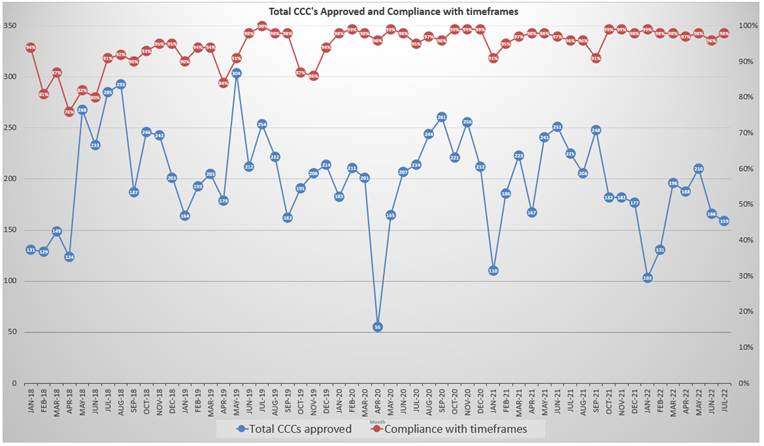
Environmental
Planning
92. The
Planning team has spent time preparing for the notification of Plan Change 33,
creating internal and external guidance. As part of this, the team reviewed and
cleared all existing Building Consents in Alpha, to ensure there are no
applicants caught out by changes to the City Plan.
93. While
the number of BCs reviewed below does not reflect the effort to clear any
backlog in this month’s reporting, the number has remained relatively
consistent over the last four months. The team is expecting a potential
increase, based on the notification of PC33 and the more enabling provisions it
contains.
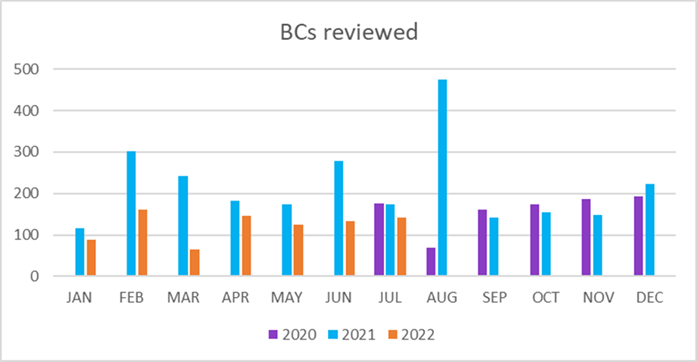
94. Following
a dip in April, the number of applications received started increasing, only to
drop-off again in July. This is expected to increase with a number of
applicants holding off until the notification of PC33.
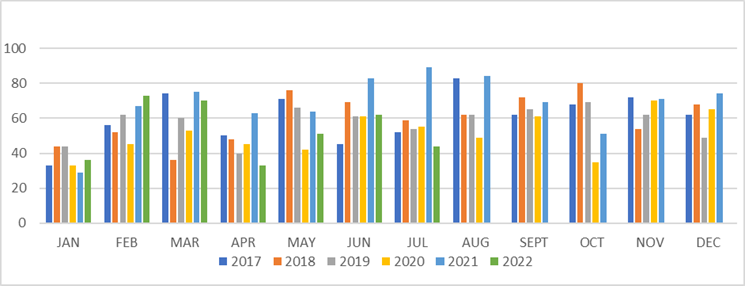
95. While
the team is struggling to meet legislative timeframes, this has largely been
due to the current level of service provided (i.e. working through multiple
options to avoid notification etc.). The team will be focusing on using all of
the tools in the RMA, with more time and effort is put into the pre-application
stage of applications.
96. The team has also been immensely busy
working on a new Digital platform and other improvements to the process, such
as the pre-application process. Some great feedback was received from one of
our customers: “… we (you and I) discussed the
pre-application meeting process you had developed. It’s brilliant,
we got a tremendous amount out of it. They used to be (albeit yrs. ago!
Time flies by when you’re having fun) almost a waste of time, now they
are really productive. Congratulations, really appreciate your work
there.”
97. The
Environmental Monitoring team has created an Environmental Monitoring and
Compliance Policy to give effect to the Regulatory and Compliance Charter. This
provides a methodology for prioritising responses to incidents and consent
monitoring, based on a risk analysis. The team is currently recruiting four
members, following internal personnel shifts. This has put the team under
pressure and prioritisation of workloads is essential until we are back to full
capacity.
98. The
Development Engineering team is keeping on top of referrals coming from the
Planners at the moment. Pattle Delamore Partners and Banks Engineering Limited
have been assisting while two team members were on parental leave. The team is
working on measures to alleviate delays experienced in receiving input from
internal council specialists. This includes updating an engineering checklist
for Resource Consent applications, to ensure correct information is provided by
applicants, while also providing the Development Engineers with more
decision-making delegation to reduce the amount of applications that need to be
sent to the Infrastructure Three Waters team. Investigations are underway to
put in place a panel of experts to assist with reviews.
Environmental
Monitoring
99. 20 incidents were reported in July,
down from 29 reported in June. The team managed to resolve 20 incidents this
month, including some from the previous financial year. Seven incidents
reported in July were still open at the end of the month. Of the
20 incidents resolved, eight were deemed 'Unconfirmed/Unsubstantiated', and
another six resulted in voluntary compliance. There were a total of 117
individual Resource Consents monitored in July, continuing our upward trend
from 106 in June.

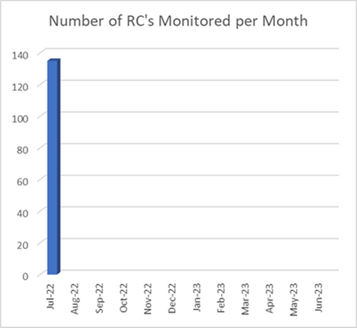
100. Noise incidents remained low in July, with 11
incidents reported. June was also quiet with 13 incidents. Residential noise
was the biggest issue in July, with 5 incidents reported.
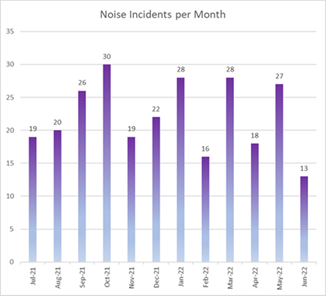
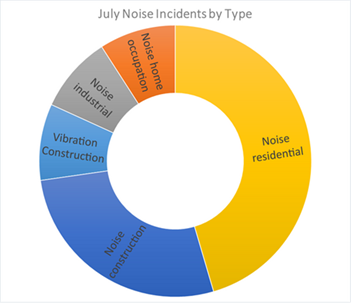
City Development and
Partnerships
City
Partnerships
101. Our application for the first tranche of central
Government’s “Better Off” funding (for $12.1M) will be
submitted by 31 August. If successful, this funding will go towards Te
Manawataki o Te Papa – the civic precinct redevelopment project.
102. Funding
applications have been submitted for $460K from the New Zealand Community Trust
(NZCT), $1M from TECT and $529K from Lotteries for the Destination Skatepark
project. If successful, this funding will support the delivery of a community
co-designed facility on the corner of Hull Road and Maunganui Road in 2023. We
have also made an application to NZCT for $40K on behalf of Bay Venues, to help
subsidise transportation for 1,328 students from eight schools across Tauranga
Moana, who may not otherwise have the opportunity to learn basic water survival
skills.
103. Six-monthly
reports have been received from each of the four mainstreet organisations, with
in-person presentations to the Strategy, Finance and Risk Committee scheduled
for 12 September. The City Partnerships Specialist is working with Mount
Mainstreet, Greerton Village Mainstreet and our transport team to
identify opportunities to improve town centre cleanliness.
104. We
are investigating opportunities to provide shared services with three
council-controlled organisations: Bay Venues, Tourism BOP and Tauranga Art
Gallery Trust. This includes a high-level collection of business and digital
services that can be performed by, or with, other council business units, with
the purpose of providing better alignment and enabling the council-controlled
organisations to focus on their core services and activities.
105. We
have worked with Bay Venues to develop an action plan and timeline for
outstanding recommendations that came out of the Bay Venues Strategic Review,
with a view to closing this project off by June 2023.
Civic
Development – 95 Willow Street Demolition
106. The
demolition is entering its final week of clean up. The lead contractors,
LT McGuinness and Wards Demolition, have completed the works programme
approximately six weeks ahead of schedule. In the last week of demolition, a
quantity of polystyrene contaminated concrete was located around the remaining
columns and subsurface drainage channels. This waste has been managed
separately from the bulk demolition material and is being transported to
Auckland for appropriate disposal.
107. All
concrete removed from site was crushed at the Rock and Rumble compound in Mount
Maunganui. The company has confirmed that the stockpile of crushed
concrete has now been reutilised by other infrastructure companies. A full
report on the recovered, recycled, and reused material from the demolition will
be provided by LT McGuinness in the coming weeks.
108. Last
month, signs were installed around the site to remind people where the customer
service centre and library are relocated and explain the exciting future plans
for the site. Planning is underway for the completion of a permanent wooden
hoarding around the site, to replace the existing steel mesh security fence. The
site will be secured with internal/external lighting and security patrols will
also be in place. The LT McGuiness site office and compound will remain in
place, ready for the next phase of the Civic Precinct development.
109. We
continue to send out fortnightly newsletters to surrounding businesses, giving
them regular updates on how the demolition is progressing. A video posted on our social media channels,
showing the progress being made, received significant positive engagement and
media interest.
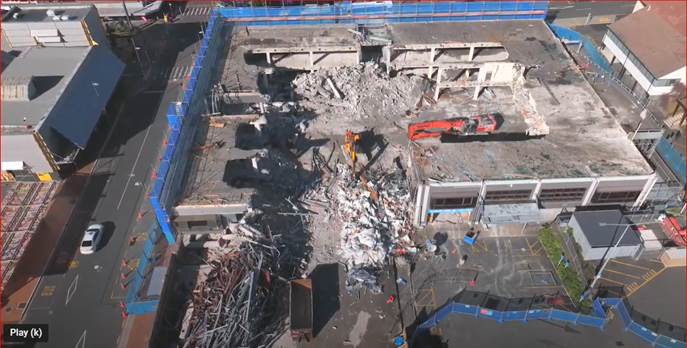
The
Tauranga Waterfront Plan
110. The
final version of the refreshed Masterplan, now titled the Tauranga Waterfront
Plan, will be presented to Council on 5 September 2022 for review and adoption.
Specific detail, as it pertains to each individual project, is contained within
the final version of the Tauranga Waterfront Plan.
111. A
communications and engagement plan is in place to help share this significant
milestone with the community.
90
Devonport Road Fitout
112. After
several months of collaborative work between our 90 Devonport Design Reference
Group and council specialist group, Warren & Mahoney presented the final
Concept Design to a very supportive Executive and Project Steering Group on 18
August.
113. While
design tweaks are still anticipated, the immediate next steps will see the
concepts move into the preliminary design phase, including look-and-feel
aspects of all spaces. It was acknowledged that we will fitout the entire
10,000m2 of the building (all floors) and final plans include an
inter-connecting staircase from level 2 to level 6. The ground floor of the
building will now consist of two separate, lettable retail spaces.
114. Both
the base build design, led by Willis Bond, and our fitout design are on
schedule.

Cargo
Shed
115. The
building consent for the interior fitout works is now lodged with Council. Beca
is currently preparing an amendment to the Building Consent, to include the recladding
of the eastern wall, and to insert a new window on the eastern/southern corner
to allow more light into that end of the building and match the two existing
windows along that side.
116. To
avoid any unnecessary delays, we are working with the preferred fitout
contractor to procure items that potentially have a long lead-time. We have
ordered the kitchen units from Southern Cross, to ensure they are here when
required.
117. The
Cargo Shed fitout is on schedule to see the building open for community use
before Christmas.
City
Centre Action and Investment Plan
118. Following
the formal adoption of the City Centre Action and Investment Plan (CCAIP) on 15
August, we launched a video that captures this exciting moment in time for
the city centre and shows the transformation already underway. This is an
effective and simple way of helping people to understand that we’re well
on our way to creating a city centre we can all be proud of. This video will be
rolled-out across communication channels and at events in the coming months, to
extend awareness across the community.
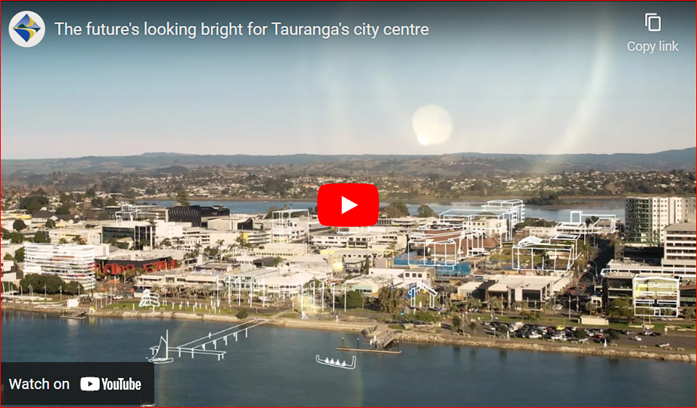
119. Following
the plan’s formal adoption, an event to mark the launch of the CCAIP was
held at the University of Waikato with some of our key city partners.
Consultation
on a proposed Council Controlled Organisation
120. Our
proposal to set up a Council Controlled Organisation (CCO) Charitable Trust
that will own and jointly govern the land at Site A of the Civic Precinct, is
currently open for community feedback.
121. Te
Papa peninsula, including the site where our future civic precinct will be
built, has a long and complex ownership history dating back more than 150
years. In 1838, the land was acquired from mana whenua by the Church
Missionary Society (CMS), to be held for the benefit of Māori (in the face
of increasing land demand by settlers). However, much of the area was then
reluctantly gifted by the CMS to the Crown in the 1860s, despite the objections
of mana whenua, who argued that if it wasn’t to be used for its original
purpose, the land should be given back. In 1995, the Crown transferred the
civic precinct area to the Borough of Tauranga, to be used for municipal
buildings.
122. The
alienation from the land that mana whenua experienced has been recognised by
the Waitangi Tribunal as being undertaken in a way that breached Te Tiriti o
Waitangi and its principles.
123. With
plans now in place to transform the civic precinct into a vibrant community
space called Te Manawataki o Te Papa, the proposed pathway is to set up a new
ownership structure for the land, to help reconcile past events and provide
certainty around its future use, for the benefit of everyone in the
community.
124. The proposed
solution would see a new CCO Charitable Trust established and jointly governed
by Council and Otamataha Trust. The Trust represents mana whenua from Ngai
Tamarāwaho, Ngāti Tapu and Te Materāwaho – the descendants
of those who released the site to the CMS.
125. As
part of the arrangement, the CCO would purchase the land now known as
‘Site A’ of the Civic Precinct from Council for a nominal
amount. Council would lease the land back from the CCO on a
‘peppercorn lease’ basis.
126. Council
would continue to own and be responsible for any improvements made to the
existing buildings on the land, and the construction and ownership of any new
buildings and structures, as well as the day-to-day operation of the activities
on the site.
127. The
relationship with mana whenua will be pivotal to the success of many of the
outcomes to be achieved on the civic precinct site.
128. A
consultation document has been developed, and print, radio and online
communications channels are being used to encourage feedback. People are able
to submit their feedback online, by email or by post. The two-week consultation
period finishes on 6 September.
129. Consultation
deliberations and decisions on next steps will be made by the Commission at a
Council meeting on 3 October 2022.
CBD
Activation
130. A
calendar of planned activity has been developed, to be used as the basis for
marketing a more vibrant, engaging and exciting CBD offering to the public over
the coming summer months. A communications and marketing plan is in
development.
131. We have engaged Rae Baker to work with a wide
range of CBD partners to develop an activity plan, which adds to and
complements the event calendar. This includes meeting with the hospitality
industry, Downtown Tauranga, University of Waikato, Tourism Bay of Plenty,
Tauranga Art Gallery and other key activity providers. An outdoor cinema, live
performances, buskers and scavenger hunts are some of the activities planned
for addition to the schedule. A further update will be provided after the 15
September meeting with hospitality providers.
Attachments
Nil
11.5 Remuneration
for Tangata Whenua and External Representatives on Council Committees
File
Number: A13689578
Author: Coral
Hair, Manager: Democracy Services
Carlo Ellis,
Manager: Strategic Maori Engagement
Authoriser: Christine
Jones, General Manager: Strategy, Growth & Governance
Purpose of the Report
1. This
report recommends remuneration changes for external members appointed to the
Strategy, Finance and Risk Committee, the Tangata Whenua members appointed to
the Wastewater Management Review Committee and the Independent Chairperson of
the Tangata Whenua/Tauranga City Council Committee.
|
Recommendations
That the Council:
(a) Receives
the report Remuneration for “Tangata Whenua and External
Representatives on Council Committees”.
(b) Approves
the remuneration of $26,950 per annum for the external members appointed to
the Strategy, Finance and Risk Committee who have voting rights.
(c) Approves
the remuneration of $14,500 per annum for Te Rangapū Mana Whenua o
Tauranga Moana Chairperson appointed to the Strategy, Finance and Risk
Committee.
(d) Approves
the remuneration of $32,340 per annum for the Deputy Chairperson of the
Strategy, Finance and Risk Committee.
(e) Approves
the remuneration of $6,500 per annum for the Independent Chairperson of the Tangata
Whenua/Tauranga City Council Committee.
(f) Approves
the remuneration of $395 per meeting for Tangata Whenua members appointed to
the Wastewater Management Review Committee.
(g) Approves
the remuneration of $550 per meeting for the Tangata Whenua representative
appointed to the Chairperson or Deputy Chairperson role on the Wastewater
Management Review Committee.
(h) Confirms
the current remuneration of $270 per meeting for the Tangata Whenua members
appointed to the Tangata Whenua/Tauranga City Council Committee.
|
Executive Summary
2. The
remuneration consultant firm Strategic Pay was engaged to review the
remuneration of the following:
· Strategy,
Finance and Risk Committee externally appointed members, due to an increase in
workload.
· Independent
Chairperson of the Tangata Whenua/Tauranga City Council Committee, due to the
recent appointment of a new Chairperson.
· Tangata
Whenua members of the Wastewater Management Review Committee (WWMRC), due to
new appointments of tangata whenua members to that committee and a recognition
of the complexity of the work required by these members.
· Tangata
Whenua members of the Tangata Whenua/Tauranga City Council (TW/TCC) Committee
because of other committee members remuneration being reviewed.
3. Increases
in remuneration are recommended for all members, based on the Strategic Pay
advice, except those on the TW/TCC whose remuneration remains the same.
strategy,
finance and risk committee members’ remuneration
4. External
remuneration consultant firm Strategic Pay was engaged to undertake a review of
the Strategy, Finance and Risk Committee (SFRC) members remuneration based on
an increase in workload since it was established on 27 April 2021. Their
report is set out in Attachment 1.
5. Strategic
Pay were advised that the position descriptions and the terms of reference for
the SFRC had not changed, but the quantum of meetings had increased, especially
in 2022, with additional meetings held to hear and deliberate on various
submission processes. There was also a need for briefings to provide
members with background information on reports/issues before the Committee.
6. Strategic
Pay’s approach was to:
(a) Consider the broader
marketplace for governance fees including the State Services Commission’s
Cabinet Fees framework and other broader work they have conducted;
(b) Look at Committee fee levels
and overall fee levels compared to data collected and analysed in their annual February 2022 New Zealand Directors’
Fees Survey.
(c) Review the remuneration
Councillors would be receiving, and the relativity to Committee Fees.
7. The
table below sets out the current remuneration and the remuneration resulting
from the three approaches considered by Strategic Pay.
|
Position
|
Current remuneration
|
Cabinet Fees framework
|
Directors’ Fee Survey
|
Relativity with Councillors remuneration
|
|
Voting Member
|
$22,000
|
$27,125
|
$26,950
|
$26,901
|
|
Non-voting Member
|
$12,000
|
$14,000 - $15,000
|
N/A
|
N/A
|
|
Deputy Chair – 20% of voting member
|
$26,400
|
$32,550
|
$32,340
|
$32,281
|
8. Given
the consistency of fees across the three approaches, Strategic Pay have
recommended the fees be set in the following ranges.
· $25,000
to $28,000 per annum for voting members
· $14,000
to $15,000 per annum for non-voting member (Te Rangapū Mana Whenua o
Tauranga Moana Chairperson).
· $30,000
to $33,600 per annum for the Deputy Chair which is based on a ratio of 1.2 or
20% more than the remuneration for the voting representatives.
9. The
staff recommendation is that remuneration be set in the mid-range of the three
approaches for voting members and the Deputy Chair and set at the mid-range of
the Cabinet Fees Framework for the non-voting member.
· $26,950
per annum for the voting members
· $14,500
per annum for the non-voting member
· $32,340
per annum for the Deputy Chair (1.2 or 20% ratio of voting members)
independent chairperson - tangata whenua/Tauranga City
Council committee remuneration
10. Strategic
Pay was engaged to undertake a review of the remuneration for the Independent
Chairperson of the Tangata Whenua/Tauranga City Council Committee following the
appointment of a new Chairperson. Their report is set out in Attachment 2.
11. Strategic
Pay have recommended the fees be set in a range between $5,500 to $7,500 per
annum.
12. Strategic
Pay’s approach was to:
(a) Review what similar roles
would be paid if the Committees were under the New Zealand Government’s
State Services Commission’s Cabinet Fees framework;
(b) Review the remuneration
Councillors would be receiving, and the relativity to Committee Fees.
13. The
staff recommendation is that remuneration be set in the mid-range at $6,500 per
annum, which is the current remuneration being paid.
wastewater management review committee remuneration
14. Strategic
Pay were asked to review the remuneration of the Tangata Whenua members on the Wastewater
Management Review Committee (WWMRC) following the appointment of new committee
members. Their report is set out in Attachment 3.
15. Strategic
Pay have recommended the daily fees be set in the upper end of the range of:
· $205
to $395 for members
· $280
to $575 for the Chair
16. Strategic
Pay’s approach was to make a recommendation based on the interpretation
of the State Services Commission’s Cabinet Fees Framework.
17. The
staff recommendation is that members fees are set at the upper end of the range
given the complexity of the work undertaken by the WWMRC and the need to
attract and retain members:
· $395
per meeting
· $550
per meeting for the Chair/Deputy Chair of the WWMRC (1.4 or 40% of members fee)
given the co-chairing nature of these roles
18. The
staff recommendation considered the time in preparation and attending meetings
and looked at the relativity with the two Commissioners on the WWMRC. Based on
an estimation of four hours per meeting it was calculated the hourly rate would
be $98.75 (for members) and $137.50 (for chair/deputy chair).
Commissioners’ hourly rate is set by the Minister of Local Government at
$187.50 based on an 8-hour day at $1,500 per day.
19. Strategic
Pay has provided two options in their report. Option 1 to pay a daily
rate per meeting or Option 2 to pay according to days spent per month.
Option 1 is consistent with the current method of payment where members are
paid a daily rate for meetings and any additional workshops they are asked to
attend. The daily rate includes preparation time. Option 2 would
require additional administration.
tangata whenua/Tauranga City Council committee remuneration
20. As
a consequence of reviewing the above committees, Strategic Pay was asked to
review the remuneration for the Tangata Whenua members on the TW/TCC and they
have recommended a daily fee range from $190 to $270 per meeting. Refer to
attachment 3.
21. Strategic
Pay’s approach was to make a recommendation based on the interpretation
of the State Services Commission’s Cabinet Fees Framework.
22. This
is consistent with the current remuneration of $270 per meeting as set out in
the Tangata
Whenua Remuneration Policy 2021.
23. The
staff recommendation is that the remuneration for the members appointed to the
Tangata Whenua/Tauranga City Council be confirmed at $270 per meeting.
Strategic
/ Statutory Context
24. Clause
31(1) Schedule 7 of the Local Government Act (LGA 2002) provides that Council
may appoint or discharge any member of a committee. Clause 31(3) provides
for the Council to appoint persons who are not members of the Council to its
committees if, in the opinion of
the local authority, that person has the skills, attributes, or knowledge that
will assist the work of the committee.
25. Section 14 of the LGA 2002 requires
a local authority, in performing its role, to act in accordance with the
principles specified. These principles include, in subsection 14(1)(d),
that a local authority should provide opportunities for Māori to contribute to its
decision-making processes.
26. Section 81(1)(a) and (b) of the LGA
2002 require that a local authority must (a) establish and maintain processes
to provide opportunities for Māori to contribute to the decision-making
processes of the local authority; and (b) consider ways in which it may foster
the development of Māori capacity to contribute to the decision-making
processes of the local authority.
Options
Analysis
Option 1 – Set
remuneration based on Strategic Pay advice – Recommended option
27. In
this option the Council would accept the expert advice provided by Strategic
Pay and set the remuneration based on the ranges supplied.
28. The
Council has the option of setting remuneration anywhere in the ranges provided
by Strategic Pay.
29. This
option would be consistent with the previous decisions regarding remuneration
for externally appointed members based on advice from Strategic Pay.
Option 2 – Set
remuneration not based on Strategic Pay advice
30. In
this option the Council could set remuneration at levels that are not based on
Strategic Pay advice.
31. This
option is not recommended as the Council would not be guided by expertise in
this matter.
Financial
Considerations
32. The
budget provides for remuneration for representatives appointed to Council
committees at current levels. Any increases can be absorbed into the
current budget for governance services.
Legal
Implications / Risks
33. There
are no legal implications. There is a potential risk of not attracting or
retaining external appointees to committees if remuneration does not increase
at a pace that reflects the changing workloads and complexities of the
committees.
Significance
34. The
Local Government Act 2002 requires an assessment of the significance of
matters, issues, proposals and decisions in this report against Council’s
Significance and Engagement Policy. Council acknowledges that in some
instances a matter, issue, proposal or decision may have a high degree of
importance to individuals, groups, or agencies affected by the report.
35. In
making this assessment, consideration has been given to the likely impact, and
likely consequences for:
(a) the current
and future social, economic, environmental, or cultural well-being of the
district or region
(b) any persons who are likely to be
particularly affected by, or interested in, the .
(c) the capacity of the local authority to
perform its role, and the financial and other costs of doing so.
36. In
accordance with the considerations above, criteria and thresholds in the
policy, it is considered that the matter is of low significance.
ENGAGEMENT
37. Taking
into consideration the above assessment, that the matter is of low significance,
officers are of the opinion that no further engagement is required prior to
Council making a decision.
Next
Steps
38. Implement
remuneration changes.
39. Regular
review of remuneration for people appointed to Council Committees following
each election cycle.
Attachments
1. Strategic
Pay - Fees Review for Strategy, Finance and Risk Committee - July 2022 -
A13730204 ⇩ 
2. Strategic
Pay - Fees Review for Tangata Whenua/Tauranga City Council Committee
Independent Chair - August 2022 - A13730206 ⇩ 
3. Strategic Pay - Fees
Review for Tangata Whenua/Tauranga City Council Committee and Wastewater
Management Review Committee - July 2022 - A13730209 ⇩ 
|
Ordinary Council meeting Agenda
|
5 September 2022
|
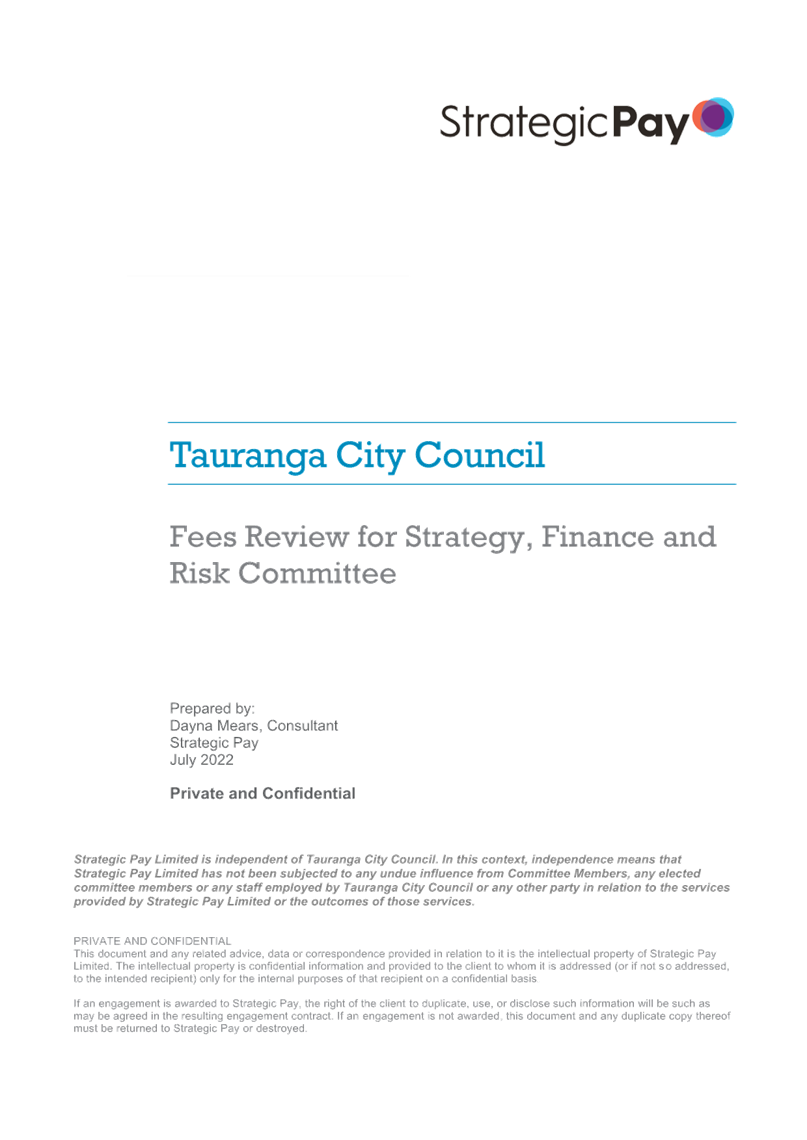
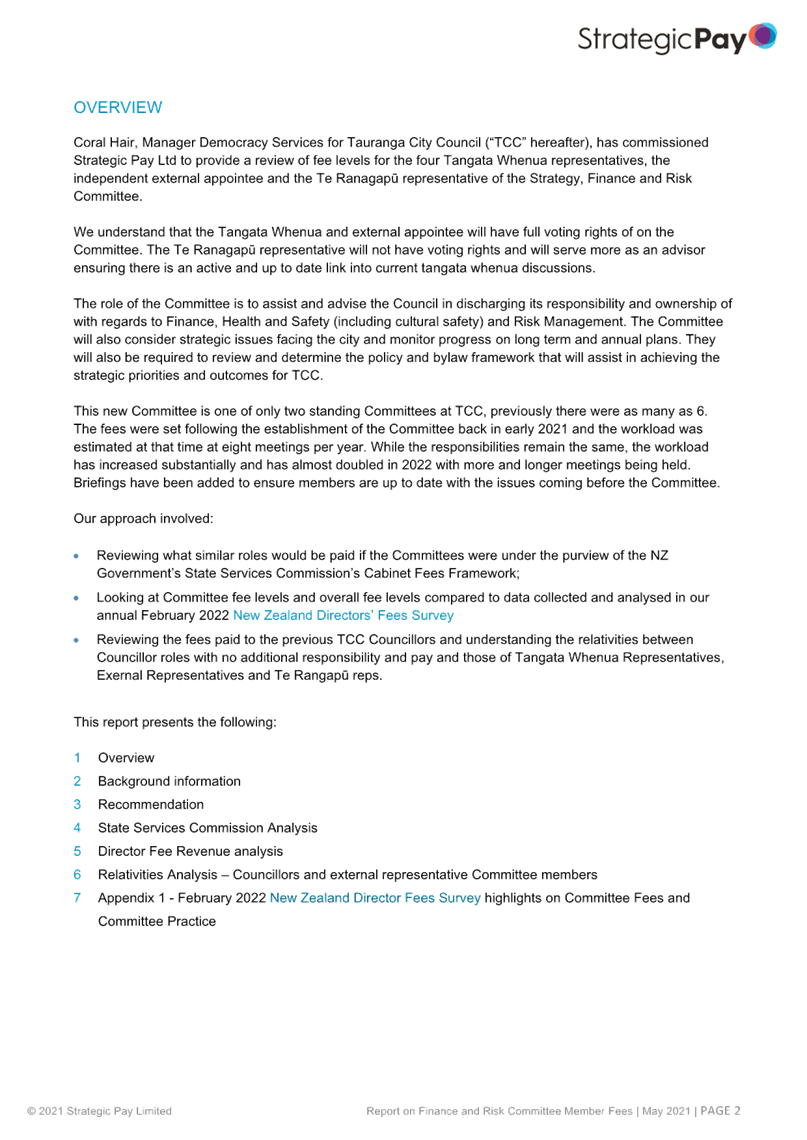
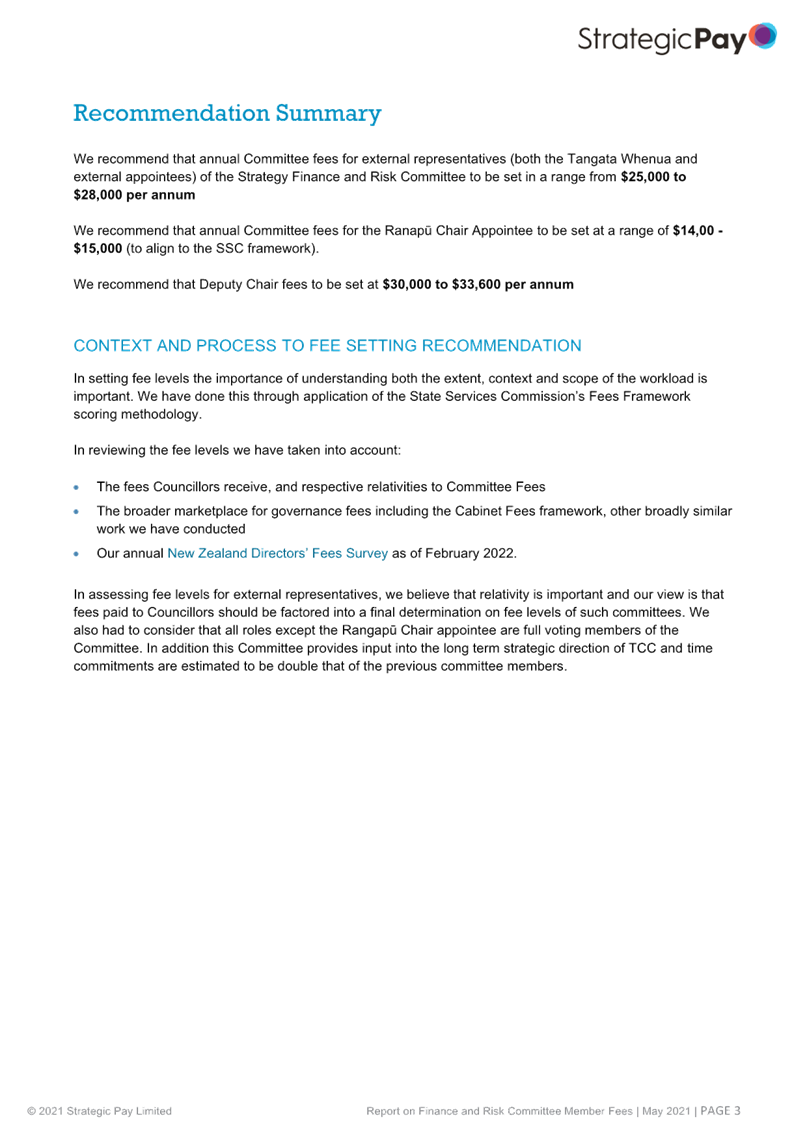

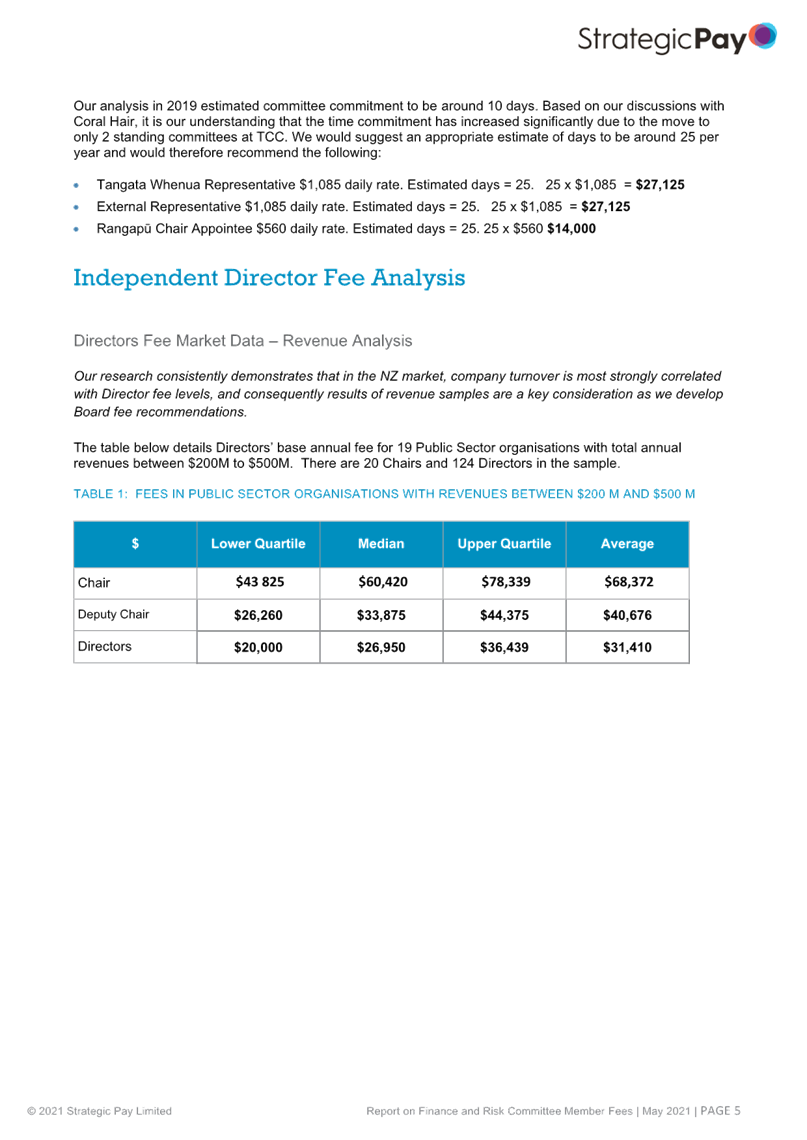

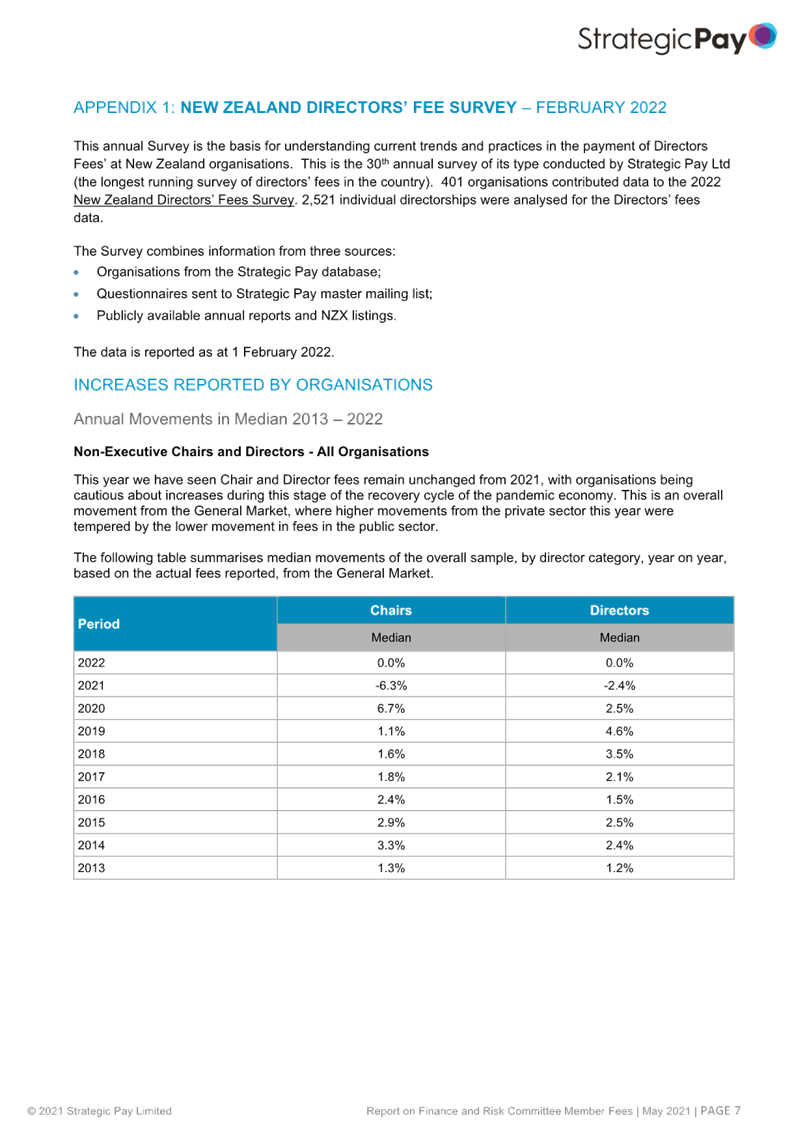

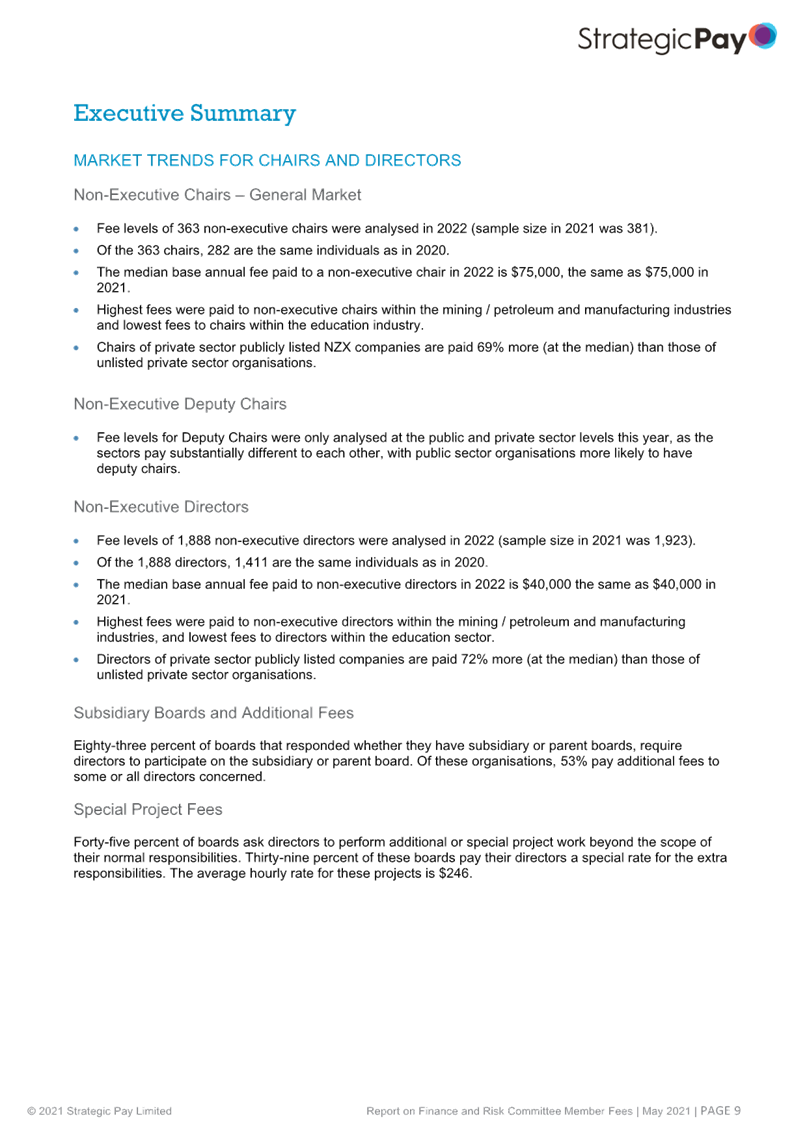
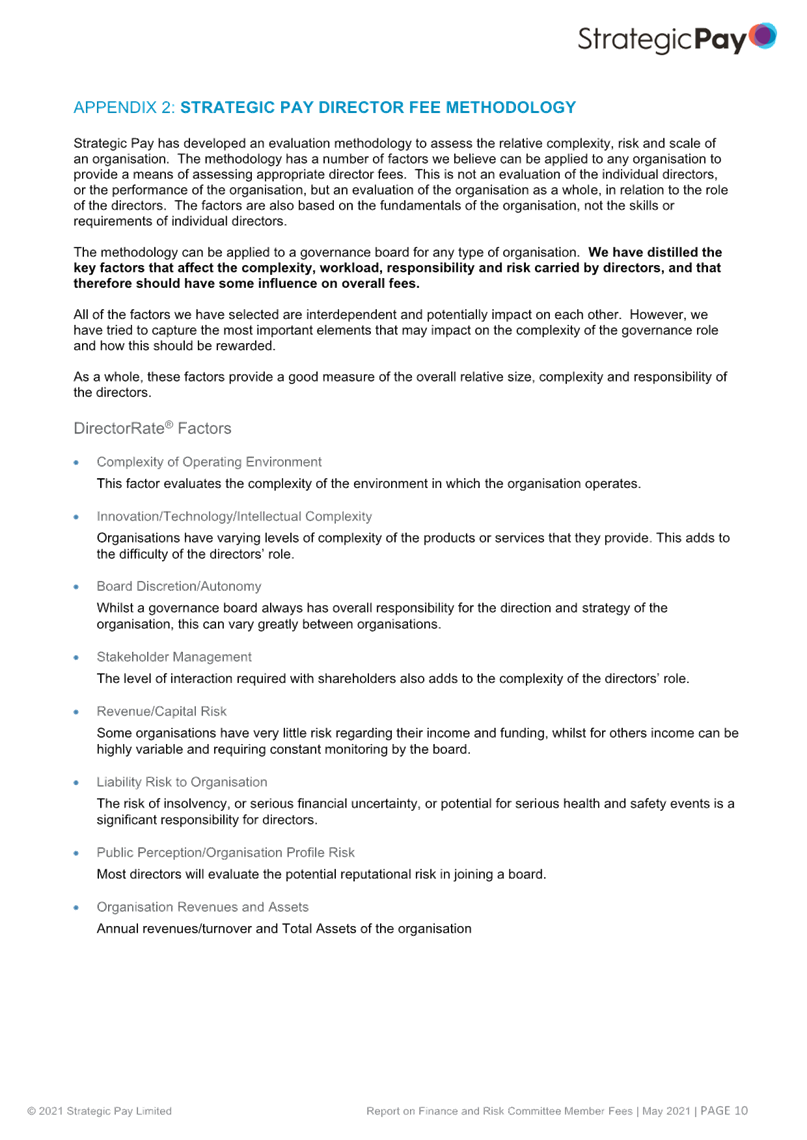

|
Ordinary Council meeting Agenda
|
5 September 2022
|
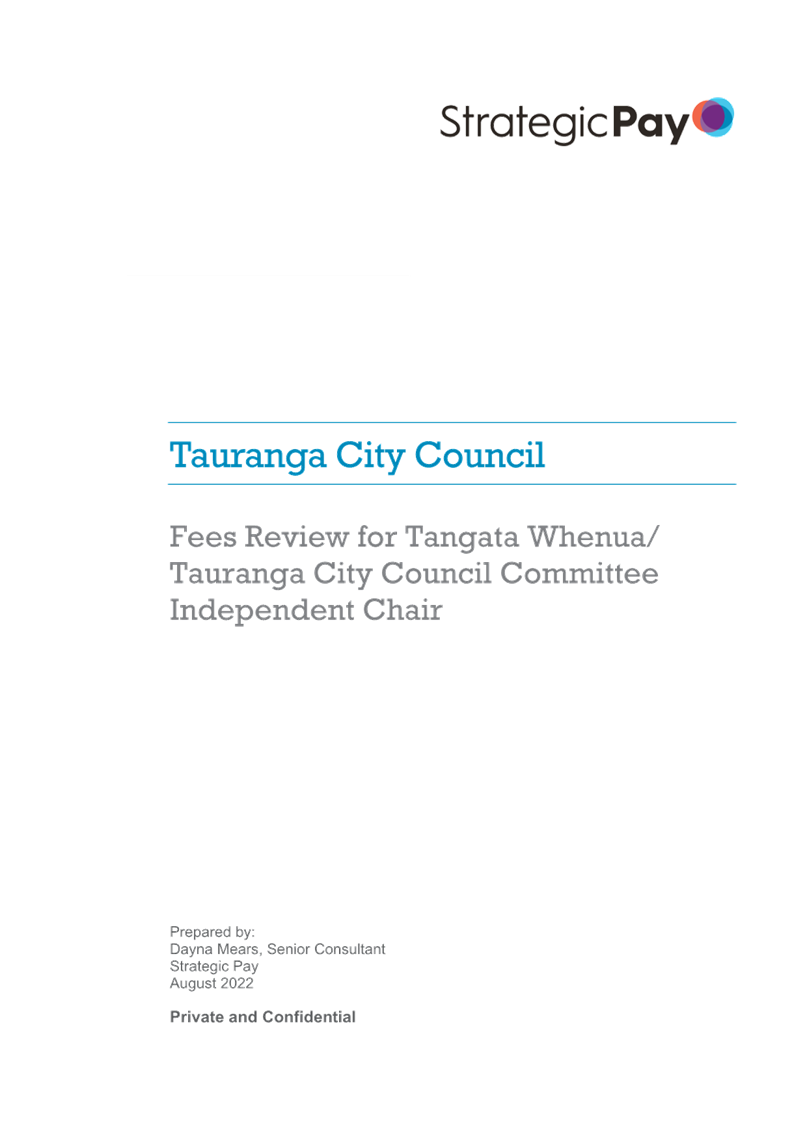

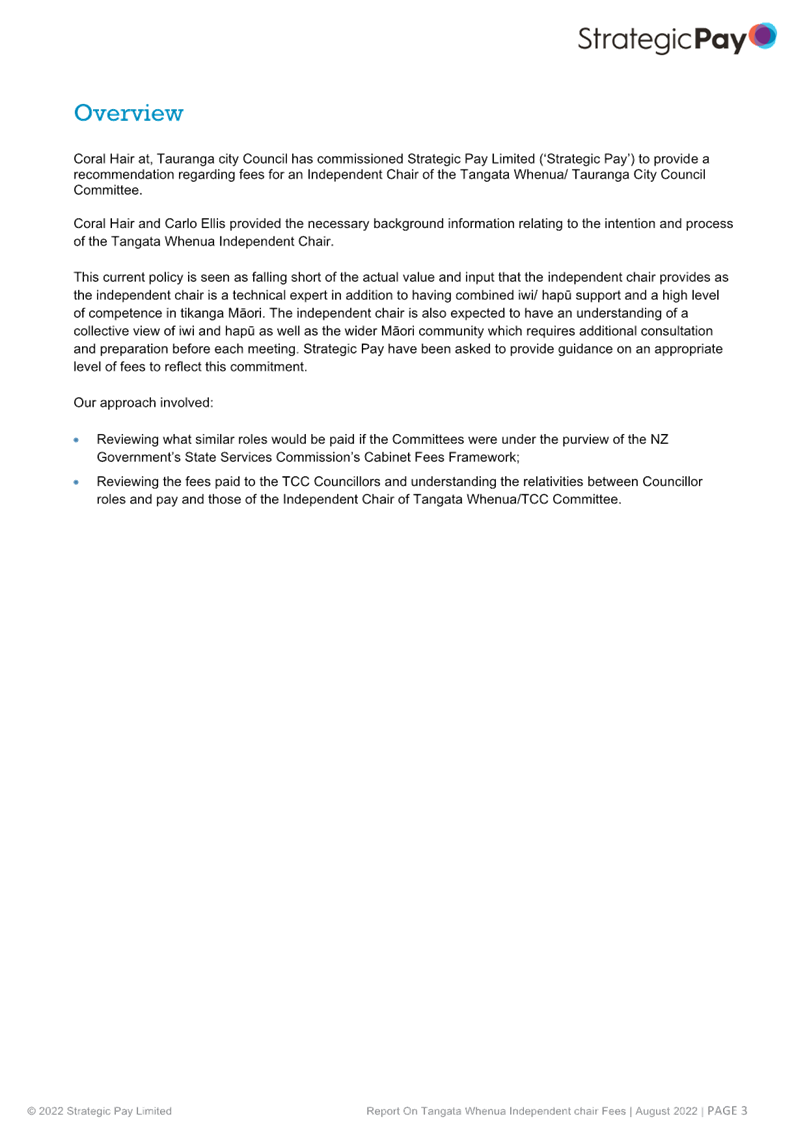
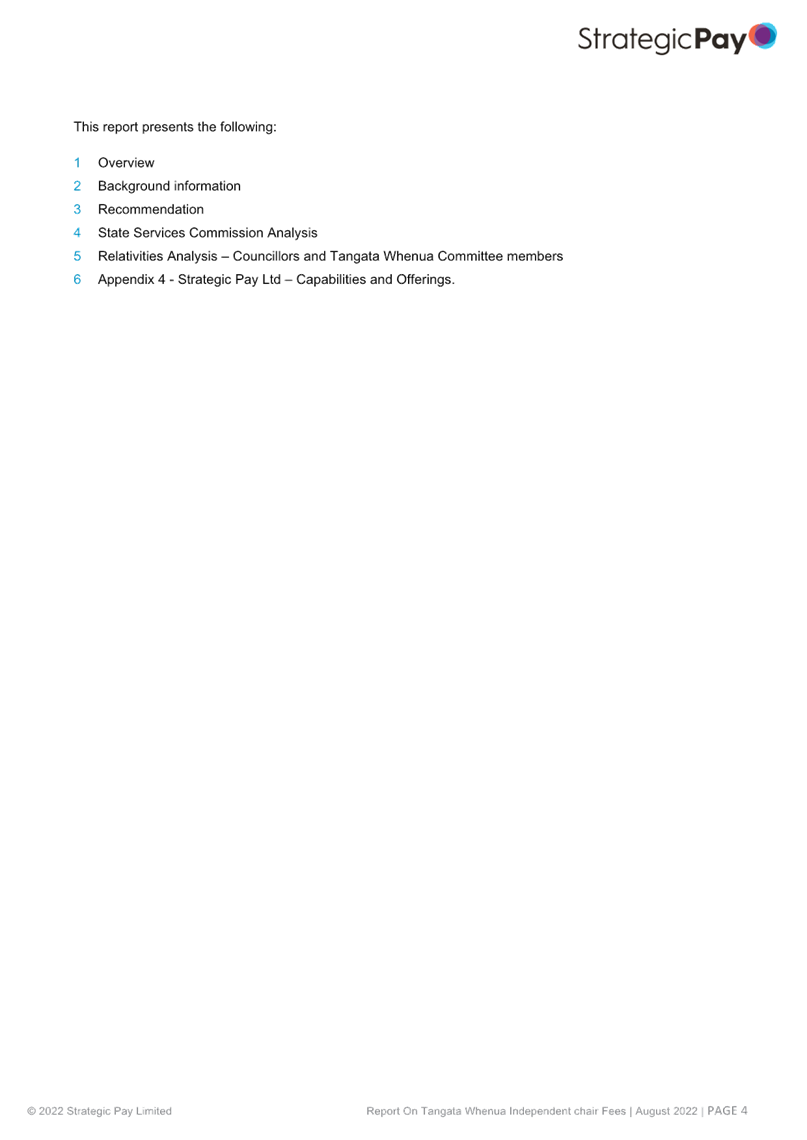

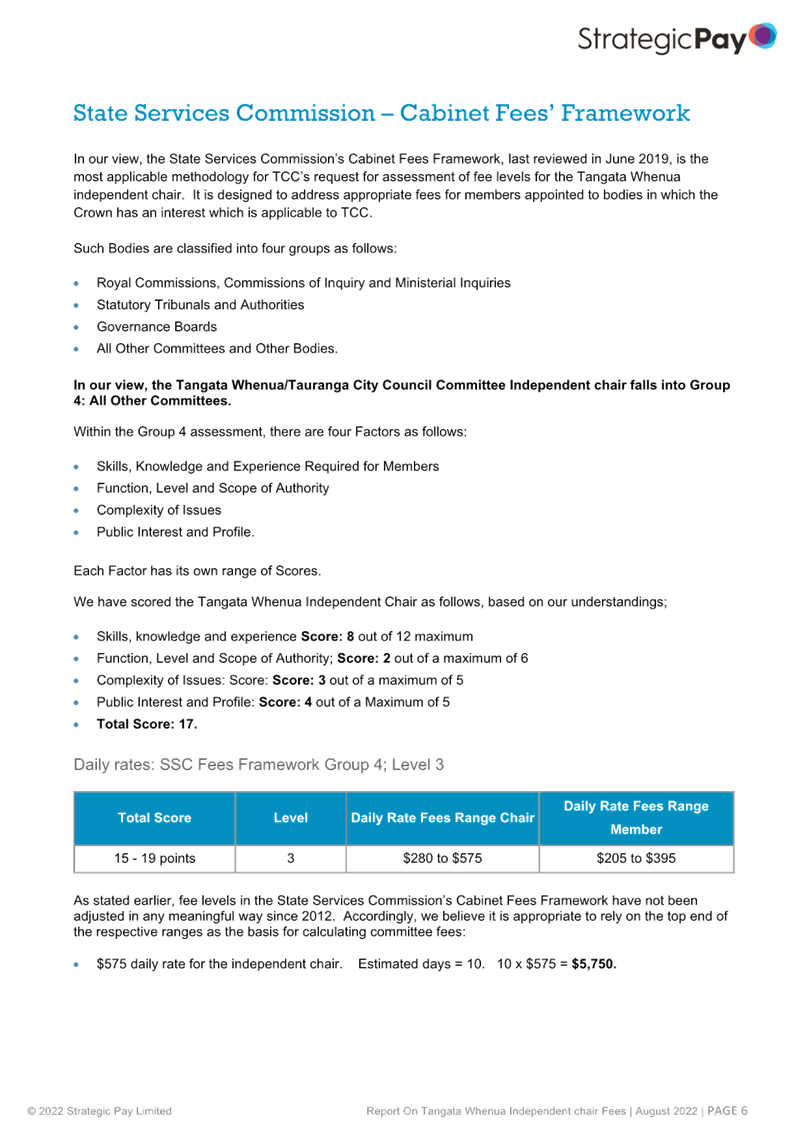
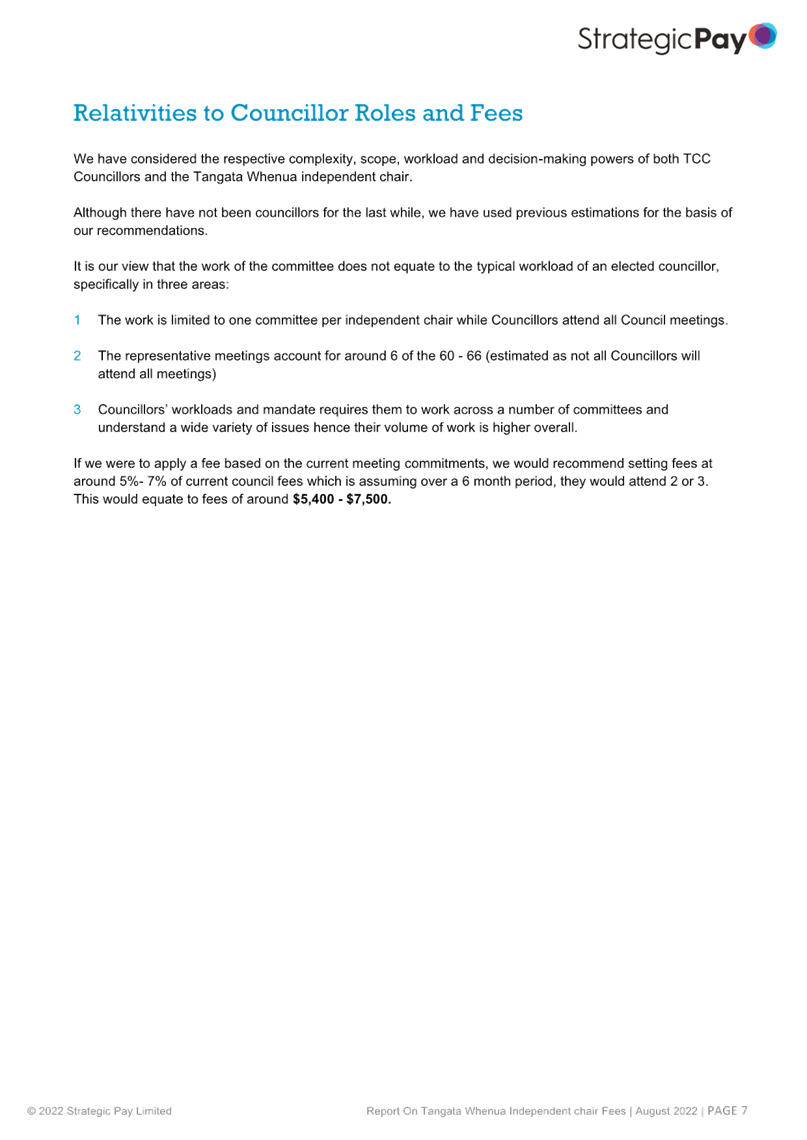
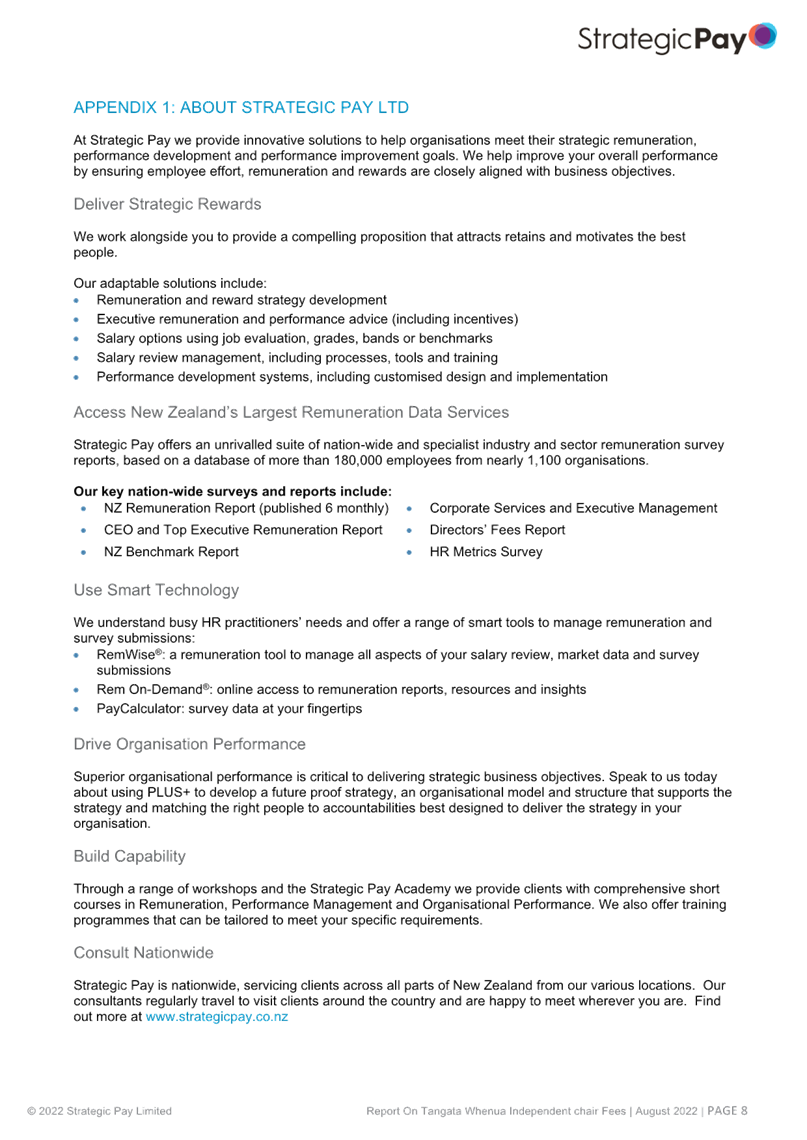
|
Ordinary Council meeting Agenda
|
5 September 2022
|


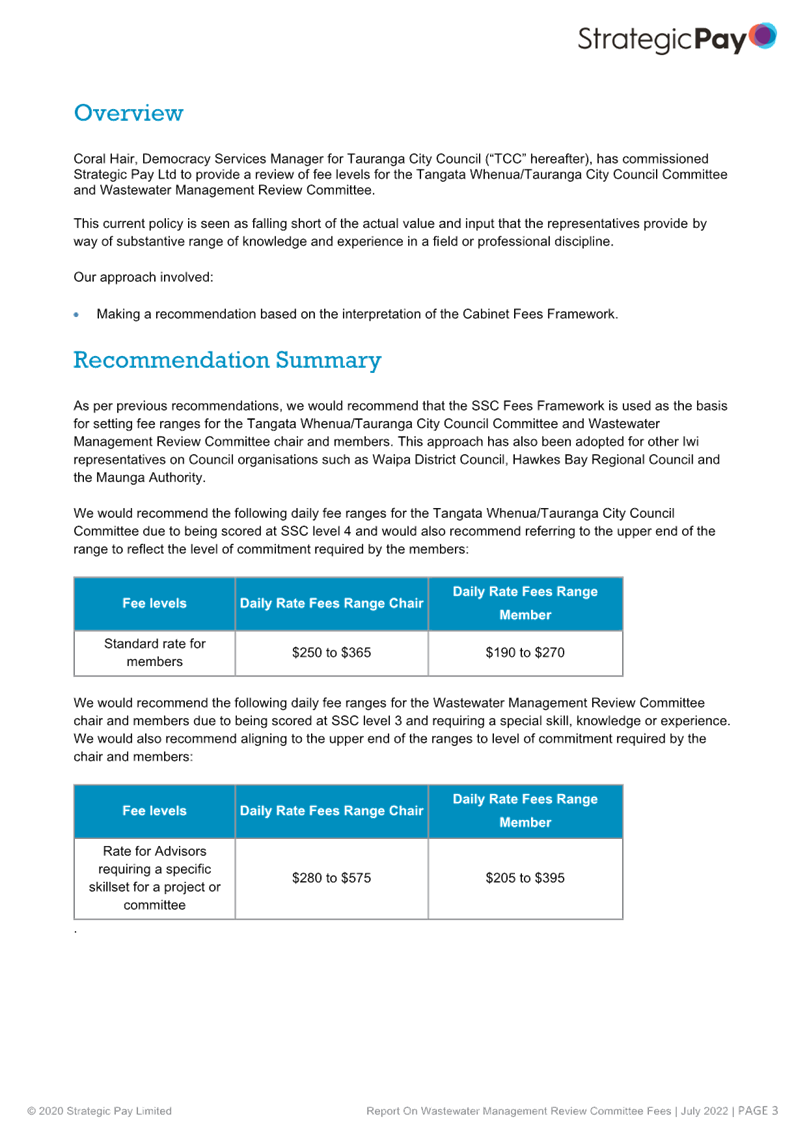
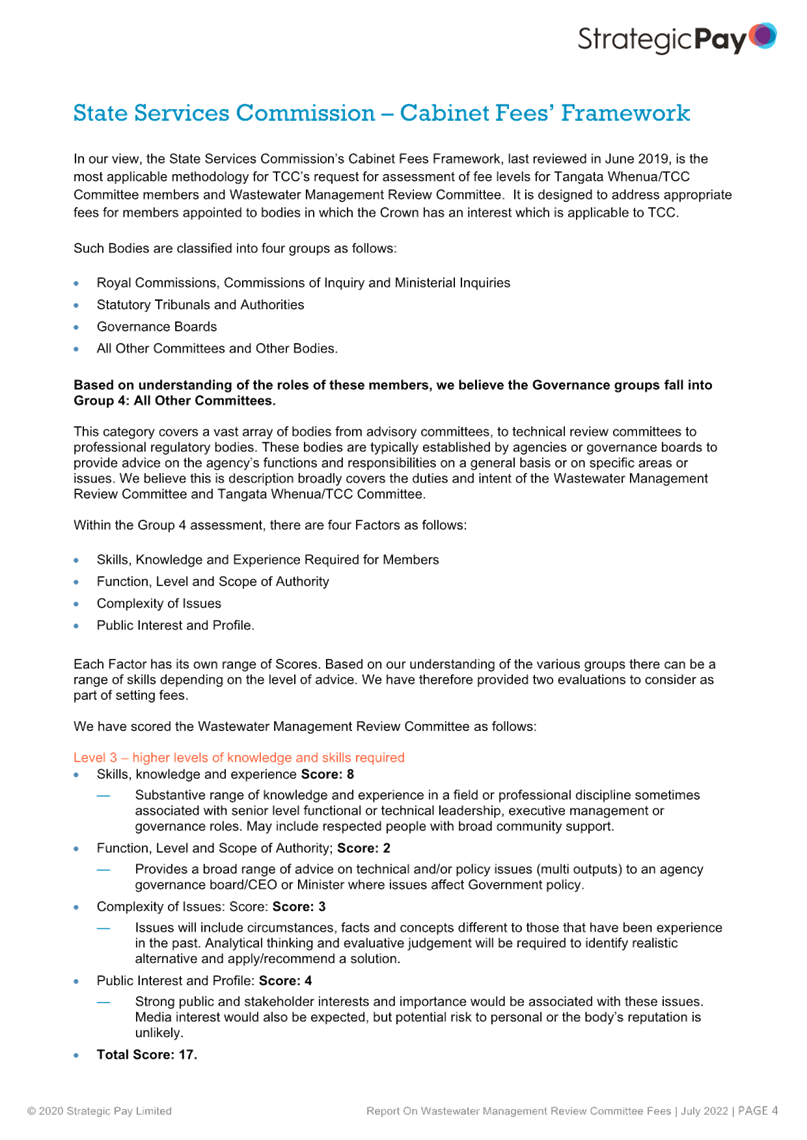
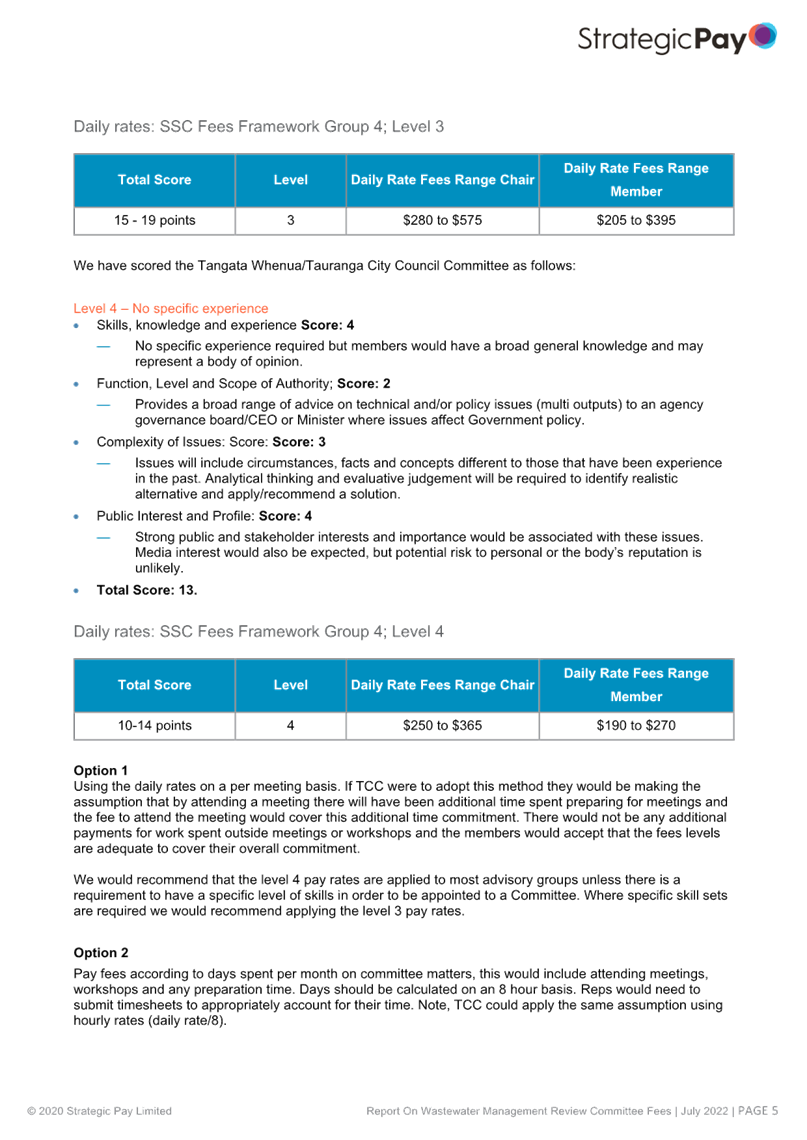
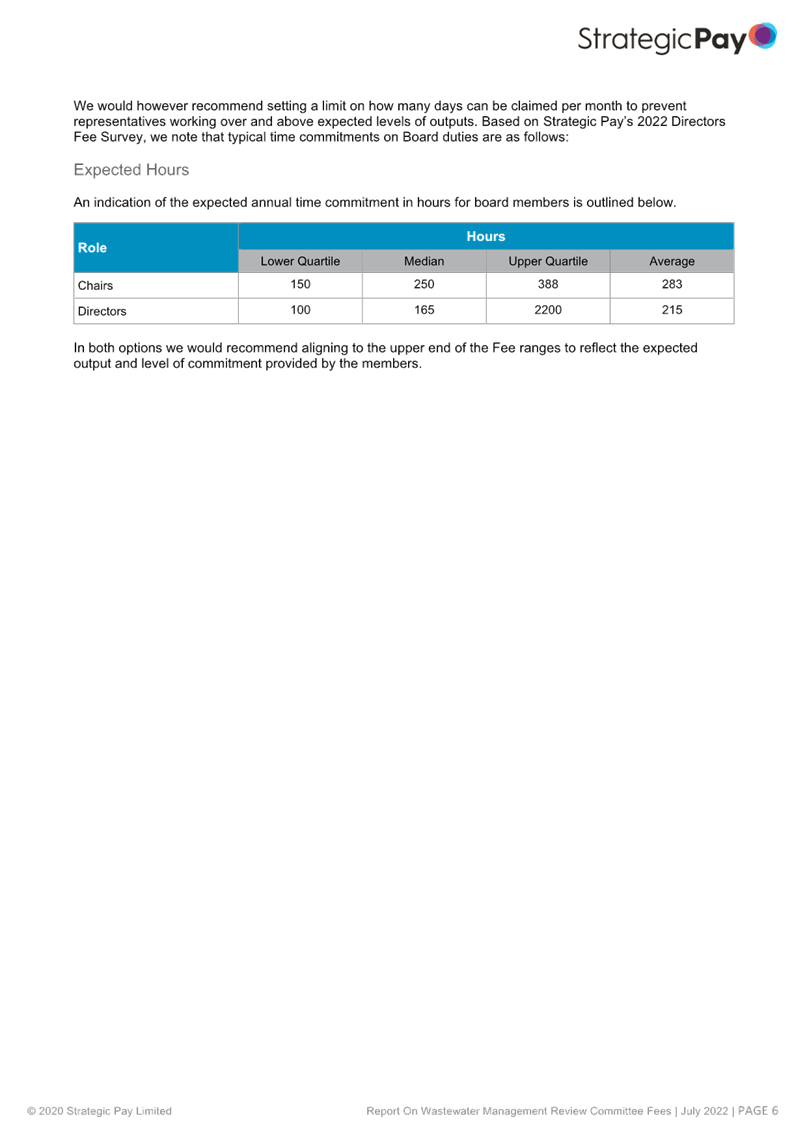
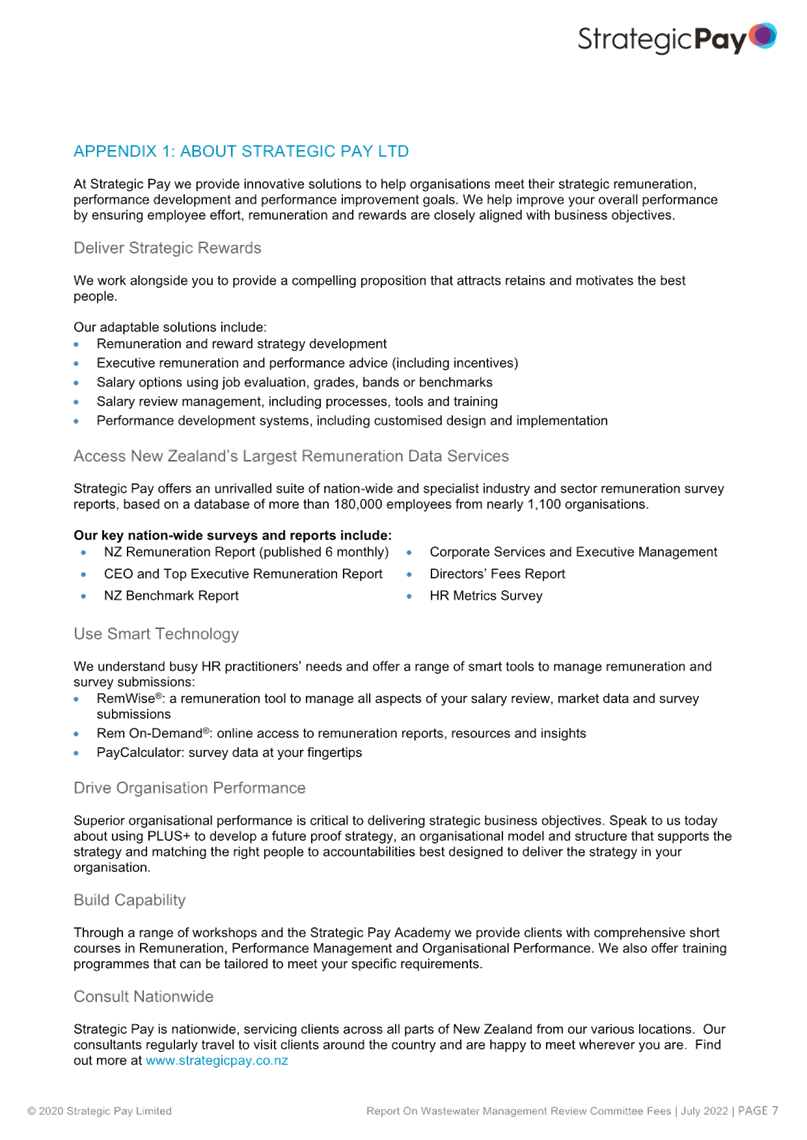
11.6 Submission
to Local Government Electoral Legislation Bill
File
Number: A13762483
Author: Coral
Hair, Manager: Democracy Services
Carlo Ellis,
Manager: Strategic Maori Engagement
Authoriser: Christine
Jones, General Manager: Strategy, Growth & Governance
Purpose of the Report
1. The
purpose of the report is to approve a submission on the Local Government
Electoral Legislation Bill in support of the second stage of legislative change
relating to Māori
representation and some other electoral matters.
Executive Summary
2. Public
submissions on the Local Government Electoral Legislation Bill (the Bill) are
open until 14 September 2022. It is recommended that the Council submit
in support of the Bill with some minor amendments.
Background
3. The Local Government Electoral Legislation Bill (the Bill) was introduced by the Minister of Local Government to
Parliament on 26 July 2022. This is an omnibus Bill to improve the
processes that individuals and communities are represented through, and can
participate in, local government elections. Submissions to the Governance and
Administration Select Committee are due by 14 September 2022.
4. This
Bill gives effect to the second stage of legislative change relating to Māori representation.
The first stage was the removal of binding poll provisions in March 2021 which
has resulted in 35 councils having Māori
representation.
5. In August 2021, the
Department of Internal Affairs (DIA) issued a discussion document on the second
stage of changes to the Local Electoral Act 2001 (LEA) “Changes to Māori ward and constituency
processes”. The Council submitted on the discussion document and
supported the requirement for every council to consider Māori wards every six years and supported
wider public consultation be undertaken alongside targeted iwi/hapū
consultation and these have been included in the Bill. Further
information on the Bill, the feedback on the discussion document and the
regulatory impact statements on the first and second stages of changes for Māori wards is available at https://www.dia.govt.nz/maori-wards
6. DIA has consulted with Local Government New
Zealand, Taituarā, Auckland Council officials, Local Government Commission
officials, and council chief executives on the workability of the Bill and
there is general support for the changes proposed in the Bill.
7. The Bill would take
effect for those councils undertaking representation reviews prior to the 2025
local government elections.
The Local Government Electoral Legislation Bill
Māori
Representation
8. The Bill changes the
process councils follow to determine their representation arrangements, making
consideration of specific Māori representation the first step of this
process.
9. The Bill clarifies that
councils must engage with Māori
and other communities of interest before making a decision about specific Māori representation,
ensuring this decision will have regard to the views of Māori and other communities of interest,
and that it will be decided early in the process. Councils will continue
to decide whether to establish separate Māori representation after consultation, as it is not a
requirement of the legislation that every council have Māori wards.
10. The second step is to make detailed
decisions about the implementation of Māori wards and general wards at the same time, such as the
total number of councillors, Māori and general ward boundaries and names,
and community boards. The number of Māori councillors continues to be calculated in
proportion to the local Māori
electoral population as set out in the formula in the LEA.
11. Councils that implemented specific Māori representation for
their previous two elections may move directly to the second step when they
review their representation arrangements and are not required to undertake a
further review but may if they choose.
12. Decisions by the council on
establishing specific Māori
representation are final and are not subject to poll demands or appeal rights.
13. The Bill clarifies that appeal and
objection processes for Māori
representation matters such as ward boundaries, names of wards and the number
of councillors in each Māori
ward are treated the same as for general wards and must be determined by the
Local Government Commission.
14. The Bill also provides that binding
polls cannot be held on any matters considered by councils in their
representation reviews and adjusts the timing of the representation review so
that councils have more time for community engagement and decision making as a
result of the removal of the poll provisions.
15. Consultation on separate Māori representation is in
addition to the formal opportunity for the community to make submissions on the
full representation arrangements (i.e. initial and final proposals).
16. Taituarā in their submission to
the Bill, has requested that the wording regarding how councils engage Māori and other communities
be amended from “in accordance with Part 6 of the Local Government Act
2002” to “in a way that gives effect to section 82 (consultation
principles) of the Local Government Act 2002”. It is recommended
that this amendment be supported as the Part 6 requirements covers special
consultative procedures for decisions such as annual plans and bylaws and it
would allow councils to have more flexibility around their engagement process
based on the consultation principles set out in section 82 of the LGA 2002.
17. It is recommended that the Council
support the changes to the Bill relating to Māori representation and support the amendment
proposed by Taituarā.
Tied Elections
18. The Bill also proposes updating the
processes for when an election result is tied. This follows some
extremely close elections in 2019 where the candidate declared elected after
the decision by lot, attended the inaugural council meeting, made a statutory
declaration and began their role as an elected member only to be unseated after
a judicial recount.
19. This Bill
introduces a mandatory recount when election results are tied and allows
changes to the sequence of council meetings after recounts and requires
councils to wait to have their first meeting until any recounts are complete.
The exception is for urgent business that can be conducted without the
involvement of any candidates affected by a recount.
20. Amendments to Schedule 7 of the
Local Government Act 2002 will enable urgent council business to still be
conducted by candidates who are not affected by a recount. The Bill also
introduces an alternative to a coin toss if an election is still tied after a
judicial recount. In that case, a candidate may withdraw from the contest if
they do not want the final result to be decided by lot. Taituarā in
their draft submission are suggesting a timeline by which the candidate gives
notice of withdraw and are suggesting three days after being advised of the
outcome of any recount.
21. It is recommended that these changes
be supported.
Electronic Nominations
22. The Bill will enable all candidates to submit
electronic nominations and amends the Local Electoral Act 2001 to
clarify that all persons may submit their nomination documents in a manner
other than “in writing” that has the consent of the electoral
officer.
23. Taituarā in their draft
submission state that their legal advisers concluded it is unclear whether
electoral nominations i.e. scanned and emailed, are considered to be “in
writing” for the purposes of the legislation and this needed to be clarified.
24. It is recommended that these changes
be supported.
Number of Councillors
on Auckland Council and Local Board Boundaries
25. The
Bill proposes to change the current restriction on the number of councillors on
Auckland Council (currently set at 20 members) and enable more flexibility for
the Auckland Council to determine their representation arrangements (between 5
and 29 members), which would align the Local Government (Auckland Council) Act
2009 with the Local Electoral Act 2001.
26. The
Bill simplifies the process used to change local board boundaries at Auckland
Council.
27. These
changes will support Auckland City to adapt its representation arrangements to
keep up with population changes over time.
28. There
is no recommendation from staff on these matters.
Strategic
/ Statutory Context
29. The
Council may submit on any Bill before Parliament. The Local Government
Electoral Legislation Bill is an omnibus bill that amends the following Acts: Local Electoral Act 2001, Local
Government Act 2002, Local Government (Auckland Council) Act 2009, Local
Electoral Regulations 2001 and the Bay of Plenty Regional Council (Māori Constituency Empowering) Act 2001 for consistency with
the changes made to the Local Electoral Act 2001.
Options
Analysis
30. The
Council has the option of submitting or not submitting to the Bill and further
has the option of approving the submission or amending the submission.
31. Given
the previous input into the DIA discussion document, it is recommended that the
Council makes a submission and supports the Bill.
Financial
Considerations
32. There
are no financial considerations in making a submission
Legal
Implications / Risks
33. There
are no legal implications or risks in making a submission.
Significance
34. The
Local Government Act 2002 requires an assessment of the significance of
matters, issues, proposals and decisions in this report against Council’s
Significance and Engagement Policy. Council acknowledges that in some
instances a matter, issue, proposal or decision may have a high degree of
importance to individuals, groups, or agencies affected by the report.
35. In
making this assessment, consideration has been given to the likely impact, and
likely consequences for:
(a) the current
and future social, economic, environmental, or cultural well-being of the
district or region
(b) any persons who are likely to be particularly
affected by, or interested in, the matter.
(c) the capacity of the local authority to
perform its role, and the financial and other costs of doing so.
36. In
accordance with the considerations above, criteria and thresholds in the
policy, it is considered that the matter is of low significance.
ENGAGEMENT
37. Taking
into consideration the above assessment, that the matter is of low significance,
officers are of the opinion that no further engagement is required prior to
Council making a decision. The public can make submissions on the Bill to
the Governance and Administration Committee.
Next
Steps
38. The
submission will be sent to the Governance and Administration Select Committee.
Attachments
1. Tauranga
City Council Draft Submission on Local Government Electoral Legislation Bill -
A13771923 ⇩ 
|
Ordinary Council meeting Agenda
|
5 September 2022
|

11.7 Traffic
& Parking Bylaw Amendment 39
File
Number: A13728835
Author: Will
Hyde, Senior Transportation Engineer
Authoriser: Nic
Johansson, General Manager: Infrastructure
Purpose of the Report
1. To
obtain approval from the Commission to introduce amendments to the appropriate
Attachments within the Traffic and Parking Bylaw (2012)
|
Recommendations
That the Council:
(a) Receives the Traffic and
Parking Bylaw (2012) Amendments Report.
(b) Adopts the proposed
amendments to the Traffic and Parking Bylaw (2012) Attachments as per
Appendix B, relating to minor changes for general safety or amenity purposes,
to become effective from 6 September 2022, subject to appropriate signs and
road markings being implemented.
|
Executive Summary
2. The Traffic and Parking
Bylaw 2012 includes Attachments each of which lists various traffic and parking
restrictions.
3. Council can amend the Attachments
by Council Resolution.
4. This report sets out
amendments to the following:
(a) Attachment 7.1: No Parking
Behind Kerb
(b) Attachment 7.2: Prohibited
Stopping and Standing of Vehicles
(c) Attachment 7.9: Parking Time
Restrictions
(d) Attachment 7.16: Loading Zone
with Time Restrictions
5. The report also proposes
a new Attachment under Clause 12 of the Bylaw:
(a) Attachment 7.32: Passenger
Service and Other Vehicle Stands (Library Vehicles)
6. These amendments are
proposed for general operational reasons, principally requests from the public
or other stakeholders for numerous small changes to parking controls.
7. These amendments are
summarised in Appendix A, with details in Appendix B.
Background
8. The amendments set out in
Appendix B are small changes proposed to reflect and support operational and
safety needs on the road network.
9. These
have arisen through requests from the public and other stakeholders, plus
changes deemed necessary by the Network Safety and Sustainability team.
10. A
new attachment to the Bylaw is proposed. Clause 12.2 (n) of the Bylaw allows
Council to “Specify any other conditions which apply to parking in a
specified parking area.” Under this clause it is proposed to create
a new Attachment to enable Council to restrict the use of specified parking
spaces to vehicles undertaking library business only.
11. Two
new spaces are proposed under this Attachment. They currently form a de facto
covered loading dock to He Puna Manawa (the TCC service centre and library)
within an access lane off Grey Street. At present the lack of
restrictions on these spaces means that they are often used by the public for
all-day parking. The new library has relatively limited loading opportunities
and the smaller facility requires more frequent vehicular activity as books and
other materials are moved between library locations.
12. The
proposal to restrict these spaces to vehicles used for library business
addresses this operational need resulting from the relocation of the CBD library
to He Puna Manawa.
Strategic
/ Statutory Context
13. The amendments
achieve the vision and strategic transport priorities to help make our network
safer and easier for people to get around the city.
Financial
Considerations
14. Negligible
– the associate signs and markings costs can be accommodated within
existing project or operational budgets.
Legal
Implications / Risks
15. The
bylaw amendment is needed to allow enforcement of changes deemed necessary for
safety and amenity purposes.
Consultation
/ Engagement
16. Consultation
is not required for minor stopping and parking amendments, or other minor
amendments to support operational improvements.
Significance
17. The
Local Government Act 2002 requires an assessment of the significance of
matters, issues, proposals and decisions in this report against Council’s
Significance and Engagement Policy. Council acknowledges that in some
instances a matter, issue, proposal or decision may have a high degree of
importance to individuals, groups, or agencies affected by the report.
18. In
making this assessment, consideration has been given to the likely impact, and
likely consequences for:
(a) the current
and future social, economic, environmental, or cultural well-being of the
district or region
(b) any persons who are likely to be
particularly affected by, or interested in, the decision.
(c) the capacity of the local authority to
perform its role, and the financial and other costs of doing so.
In
accordance with the considerations above, criteria and thresholds in the
policy, it is considered that the decision is of low significance.
ENGAGEMENT
19. Taking
into consideration the above assessment, that the decision is of low significance,
officers are of the opinion that no further engagement is required prior to
Council making a decision.
Attachments
1. Appendix
A - T&P Bylaw Amendment 39 - A13865264 ⇩ 
2. Appendix B - T&P Bylaw
Amendment 39 - A13865263 ⇩ 
|
Ordinary Council meeting Agenda
|
5 September 2022
|

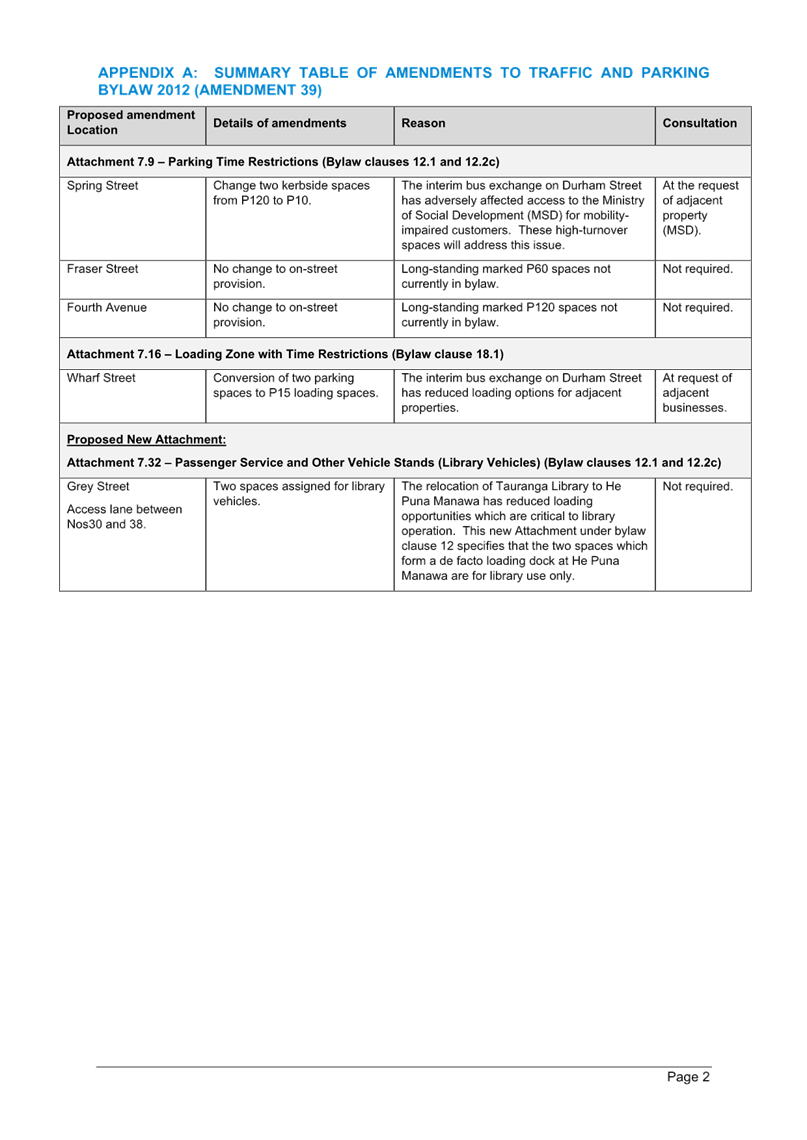
|
Ordinary Council meeting Agenda
|
5 September 2022
|
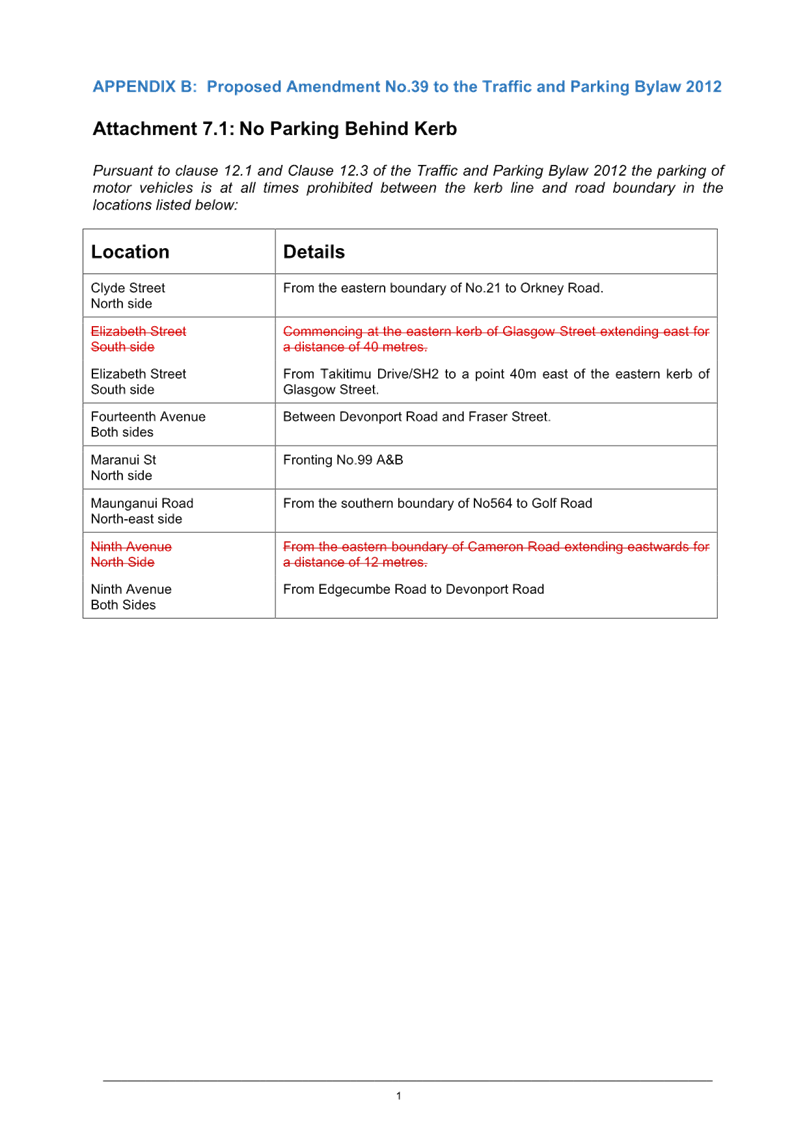
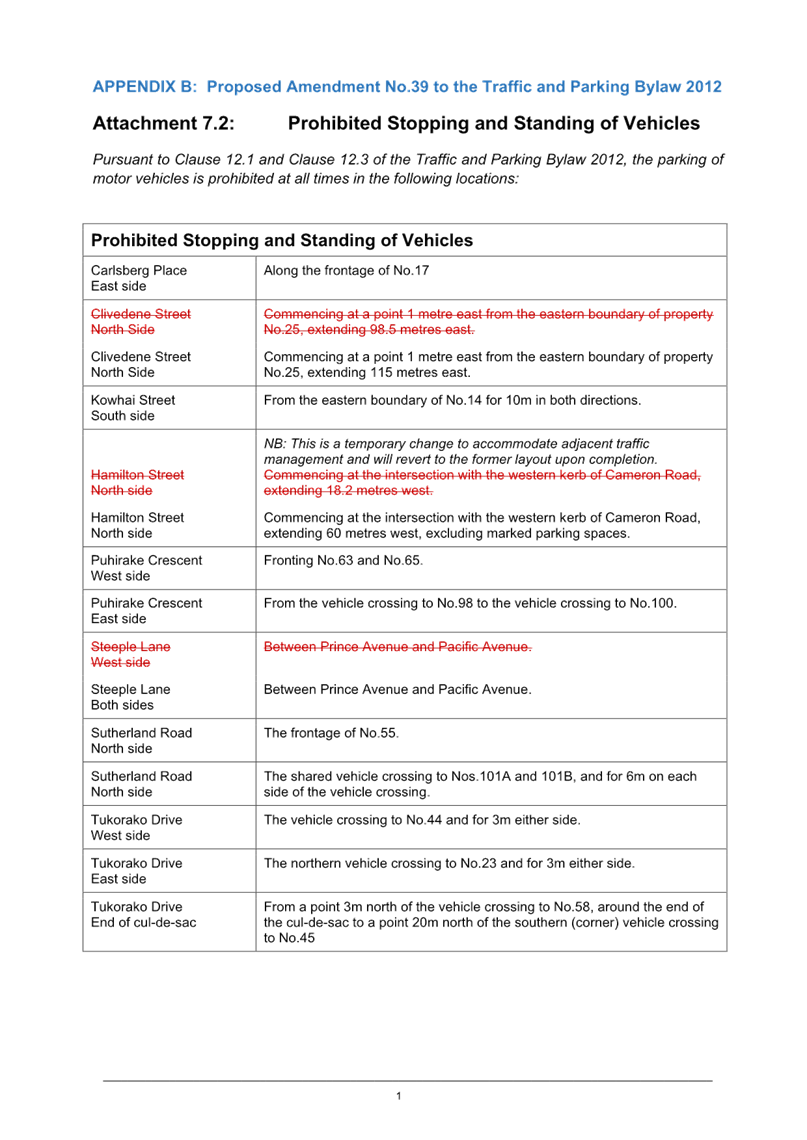
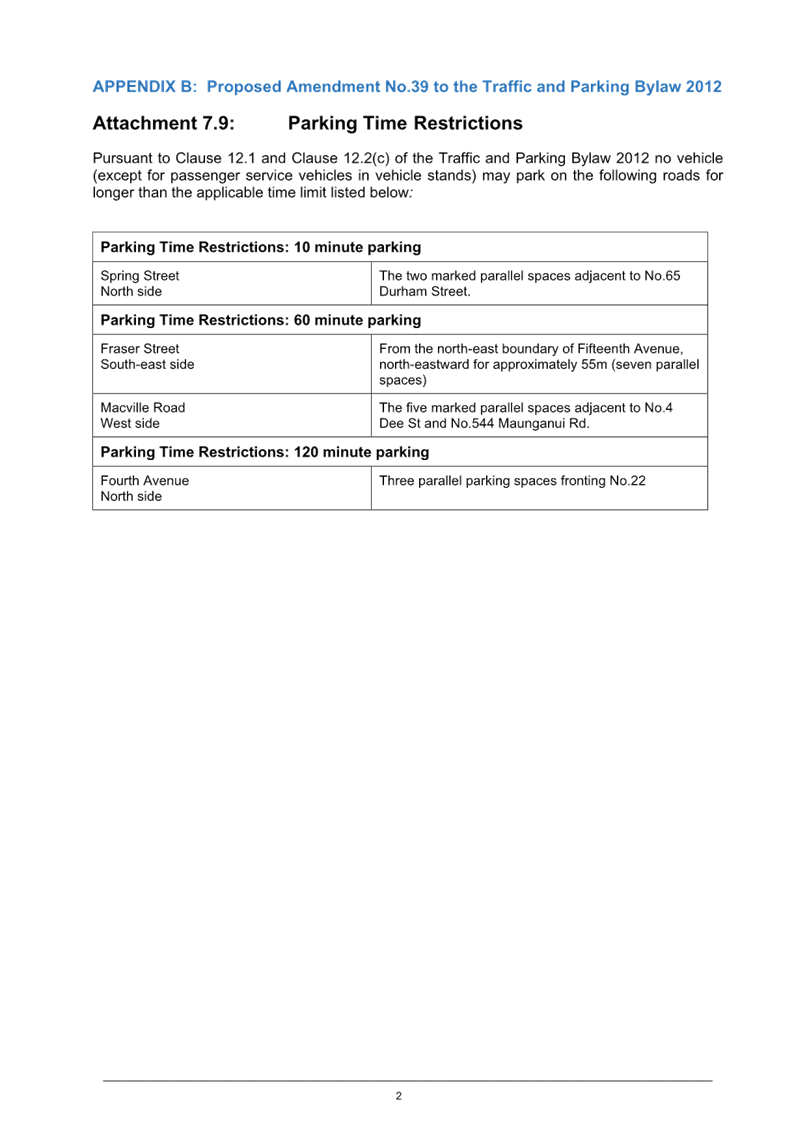

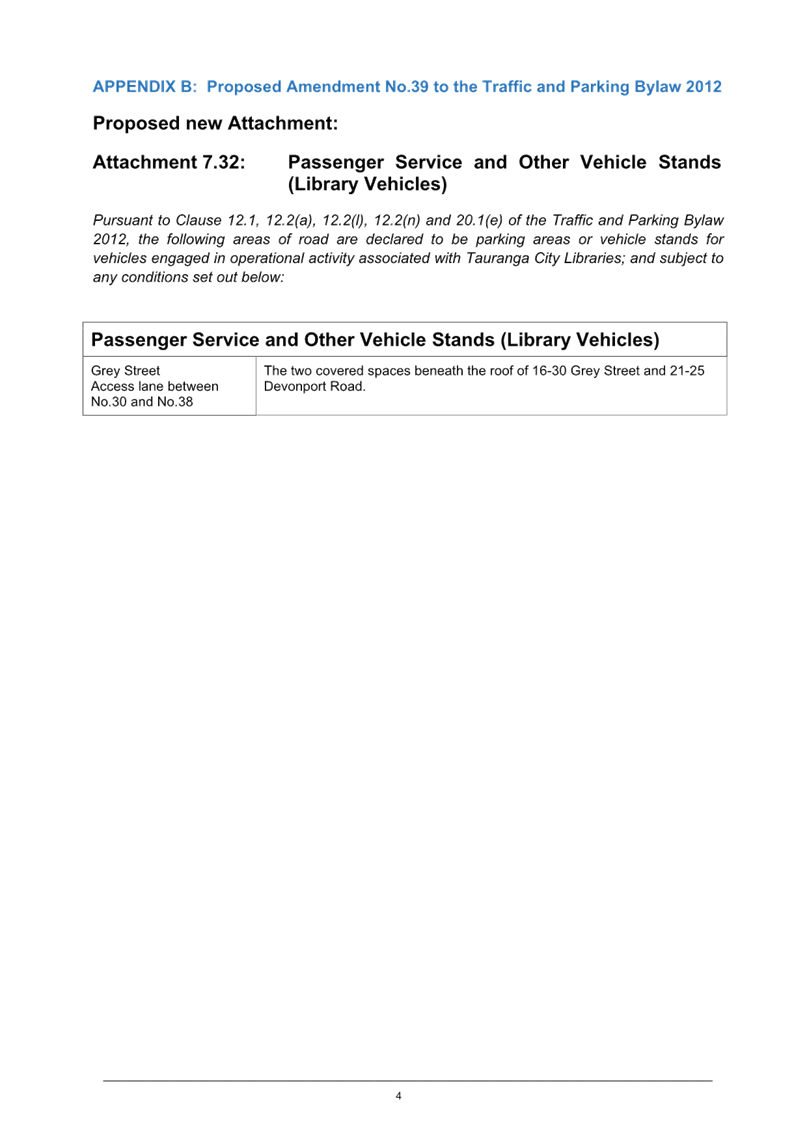
12 Discussion
of late items
13 Public
excluded session
RESOLUTION TO EXCLUDE
THE PUBLIC
|
Recommendations
That the public be excluded
from the following parts of the proceedings of this meeting.
The general subject
matter of each matter to be considered while the public is excluded, the
reason for passing this resolution in relation to each matter, and the
specific grounds under section 48 of the Local Government Official
Information and Meetings Act 1987 for the passing of this resolution are as
follows:
|
General subject of each matter to be
considered
|
Reason for passing this resolution in
relation to each matter
|
Ground(s) under section 48 for the
passing of this resolution
|
|
13.1 - Public Excluded Minutes of the
Council meeting held on 15 August 2022
|
s7(2)(a) - The withholding of the information is
necessary to protect the privacy of natural persons, including that of
deceased natural persons
s7(2)(b)(ii) - The withholding of the information
is necessary to protect information where the making available of the
information would be likely unreasonably to prejudice the commercial
position of the person who supplied or who is the subject of the
information
s7(2)(i) - The withholding of the information is
necessary to enable Council to carry on, without prejudice or disadvantage,
negotiations (including commercial and industrial negotiations)
|
s48(1)(a) - the public conduct of the relevant
part of the proceedings of the meeting would be likely to result in the
disclosure of information for which good reason for withholding would exist
under section 6 or section 7
|
|
13.2 - Papamoa East Infrastructure
Corridor Planning - Classification of Land for Divestment
|
s7(2)(g) - The withholding of the information is
necessary to maintain legal professional privilege
s7(2)(i) - The withholding of the information is
necessary to enable Council to carry on, without prejudice or disadvantage,
negotiations (including commercial and industrial negotiations)
|
s48(1)(a) - the public conduct of the relevant
part of the proceedings of the meeting would be likely to result in the
disclosure of information for which good reason for withholding would exist
under section 6 or section 7
|
|
13.3 - Airport Precinct expansion plan
|
s7(2)(i) - The withholding of the information is
necessary to enable Council to carry on, without prejudice or disadvantage,
negotiations (including commercial and industrial negotiations)
|
s48(1)(a) - the public conduct of the relevant
part of the proceedings of the meeting would be likely to result in the
disclosure of information for which good reason for withholding would exist
under section 6 or section 7
|
|
13.4 - Exemption to Open Competition -
GIS Managed Service
|
s7(2)(h) - The withholding of the information is
necessary to enable Council to carry out, without prejudice or
disadvantage, commercial activities
|
s48(1)(a) - the public conduct of the relevant
part of the proceedings of the meeting would be likely to result in the
disclosure of information for which good reason for withholding would exist
under section 6 or section 7
|
|
13.5 - Exemption to Open Competition -
Polymer Supply
|
s7(2)(h) - The withholding of the information is
necessary to enable Council to carry out, without prejudice or
disadvantage, commercial activities
|
s48(1)(a) - the public conduct of the relevant
part of the proceedings of the meeting would be likely to result in the
disclosure of information for which good reason for withholding would exist
under section 6 or section 7
|
|
14 Closing
karakia































































































































































































